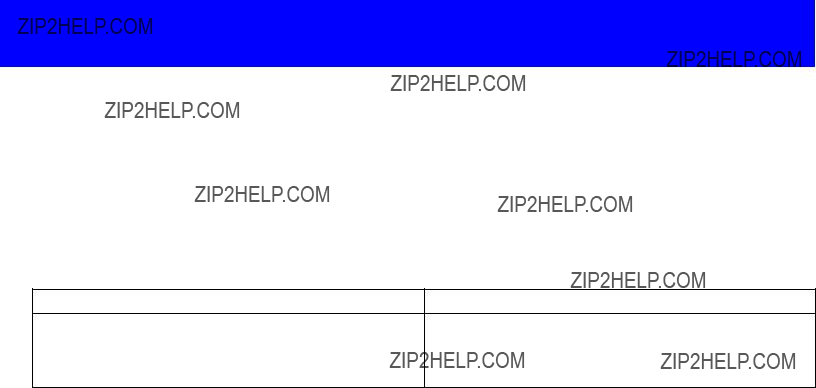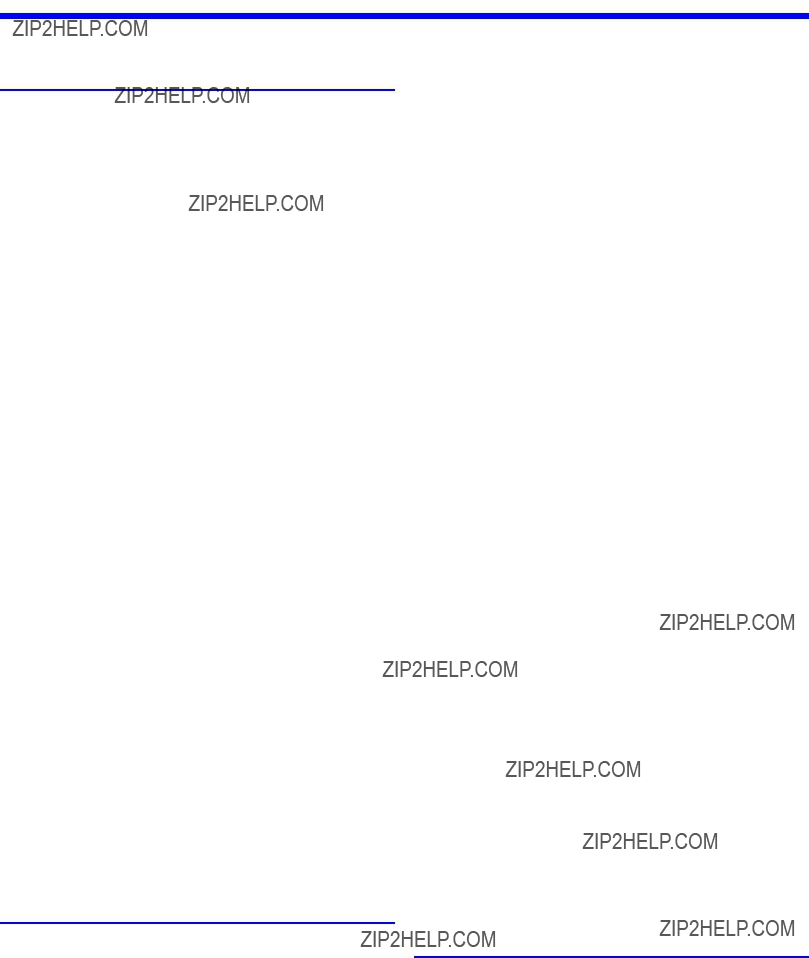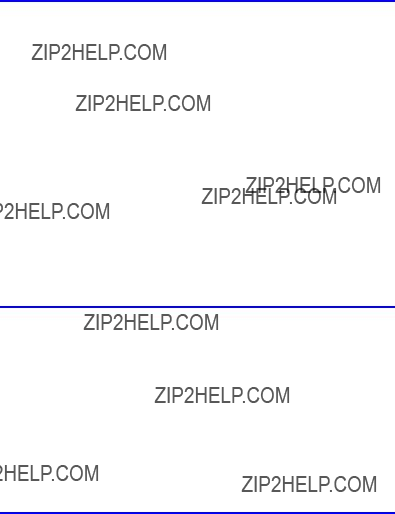How to use this manual
Introduction
How to use this manual
 About This User Manual
About This User Manual
???Symbols
The following symbols are used in this User Manual to indicate safety information and explanations on restrictions or precautions in use.
???Button names and user interface elements
Key and button names on the control panel and user interface elements in software (such as menus and buttons) are indicated as follows in this User Manual.
???Part Names
Names of printer parts are indicated as follows in this User Manual.
How to use this manual
???Cross-reference
Other pages or manuals that provide related information are indicated as follows in this User Manual.
???Figures and software screens
???Figures in this User Manual may be different from the actual appearance of the printer in some cases.
???Screens depicted in this User Manual for the printer driver or other software may be different from the actual screens because of subsequent updates.
???Windows XP screens are used in explanations of Windows operations in this User Manual.
???Trademarks
???Canon, the Canon logo, and imagePROGRAF are trademarks or registered trademarks of Canon Inc.
???Microsoft and Windows are registered trademarks of Microsoft Corporation in the United States and other countries.
???Macintosh is a registered trademark of Apple Inc. in the United States and other countries.
???Other company and product names are trademarks or registered trademarks of their respective owners.
???Copyright
??2007 Canon Inc.
???Unauthorized reproduction of this User Manual in whole or part is prohibited.
???May we request
Thank you for understanding the following points.
???The information in this User Manual is subject to change without notice.
???We strive to ensure accuracy of information in this User Manual, but if you notice errors or omissions, please contact us.
How to use this manual
 HTML Version of the Manual for Printing
HTML Version of the Manual for Printing
For your convenience when printing this manual, HTML versions of the sections in ???Using the Printer??? on the top page are available. All topics in a section are combined in one ???le for printing. This section describes how to print sections of the manual, using the content of Printing Procedure in Basic Printing Work???ow as an example.
1. On the top page, click Basic Printing Work???ow.
2. Under Basic Printing Work???ow in the left frame, click Printing Procedure.
How to use this manual
3. In the title area of Printing Procedure, click Access to the HTML for printing.
An HTML version of the topics in Printing Procedure is displayed, suitable for printing.
How to use this manual
4. Access the printing dialog box as follows, depending on your computer???s operating system.
???Windows
In Windows, right-click anywhere in the explanation area except on a ???gure or a link. In the shortcut menu, click Print to display the Print dialog box.
???Macintosh
On a Macintosh computer, click anywhere in the explanation area except on a ???gure or a link while holding the Ctrl key. In the shortcut menu, click Print Frame to display the Print dialog box.
How to use this manual
5. Specify conditions as needed, and then click Print (Windows) or Print (Macintosh).
??? Windows
??? Macintosh
Note
??? To print ???Software??? on the top page or individual topics that are displayed, follow steps 4 and 5.
Printer parts
Printer Parts
Printer parts
 Front
Front
a. Top Cover
Open this cover to install the Printhead, load paper, and remove any jammed paper from inside the printer as needed. (???P.10)
b. Cutter Groove
Paper is cut (using the cutter or manually with scissors) over this groove.
c. Ejection Guide
Guides printed documents as they are ejected. Open this guide when loading a roll.
d. Roll Holder Slot
Slide the Roll Holder into this slot.
e. Roll Holder
Load the roll on this holder.
f.Ejection Support
Prevents printed documents from winding around the Roll Holder or Paper Feed Slot.
g. Output Stacker (Optional)
A cloth tray that catches ejected documents.
h. Paper Feed Slot
When loading a roll, insert the edge of the roll paper here.
i.Holder Stopper
Secure the roll on the Roll Holder with this part.
j.Ink Tank Cover
Open this cover to replace an Ink Tank. (???P.12)
k. Control Panel
Use this panel to operate the printer and check the printer status. (???P.14)
Printer Parts 7
Printer parts
l.Release Lever
Releases the Paper Retainer. Lift this lever toward the front of the printer when loading paper.
m. Maintenance Cartridge
Ink used for maintenance purposes such as head cleaning is absorbed. (Replace the cartridge when it is full.)
n. Carrying handles
When carrying the printer, have six people hold it by these handles under both sides.
o. Maintenance Cartridge Cover
Open this cover to replace the Maintenance Cartridge.
p. Stand
A stand that holds the printer. Equipped with casters to facilitate moving the printer. (???P.16)
q. Media Take-up Unit
Automatically winds up printed documents. (???P.17)
Printer parts
 Back
Back
a. Carrying handles
When carrying the printer, have six people hold it by these handles under both sides.
b. Media Take-up Unit Power Inlet
Connect the power cord of the Media Take-up Unit here.
c. Expansion Board Slots
Install an IEEE 1394 (FireWire) expansion board, as desired.
d.Ethernet Port
Connect an Ethernet cable to this port. The lamp is lit if the Ethernet cable is connected correctly and communication is possible between the computer and printer.
e.USB Port
Connect a USB cable to this port. This port is compatible with USB 2.0 High Speed mode.
f.Accessory Pocket
Holds printer manuals, assembly tools, and other items.
g. Power Supply Connector
Connect the power cord to this connector.
Printer parts
 Top Cover (Inside)
Top Cover (Inside)
a. Top Cover Roller
Prevents paper from rising when ejected.
b. Paper Alignment Line
Align paper with this line when loading it.
c. Carriage
Moves the Printhead. The carriage serves a key role in printing. (???P.11)
d. Carriage Shaft
The Carriage slides along this shaft.
e. Paper Retainer
Important in supplying the paper. This retainer holds paper as it is fed.
f.Platen
The Printhead moves across the platen to print. The Vacuum holes on the platen hold paper in place.
g. Borderless Printing Ink Grooves
These grooves catch ink outside the edges of paper during borderless printing.
h. Cleaning Brush
When cleaning inside of the Top Cover, use this brush to sweep away paper dust on the Platen.
i.Fixed Blade
The Cutter Unit passes through this blade to cut paper.
Printer parts
 Carriage
Carriage
a. Carriage Cover
Protects the Carriage.
b. Printhead Fixer Cover
Holds the Printhead in place.
c. Printhead L
Equipped with ink nozzles. Printheads serve a key role in printing.
d. Printhead R
Equipped with ink nozzles. Printheads serve a key role in printing.
e. Printhead Fixer Lever
Locks the Printhead Fixer Cover.
f.Cutter Unit
A round-bladed cutter for automatic paper cutting. The cutter blade is retracted inside when not
cutting.
g. Shaft Cleaner
Prevents the Carriage Shaft from becoming dirty.
Printer parts
 Ink Tank Cover (Inside)
Ink Tank Cover (Inside)
Note: The ???gure shows the printer as loaded with 700 ml (23.7 ??? oz) Ink Tank.
a. Ink Tank
Cartridges of ink in each color.
b. Ink Tank Lock Lever
A lever that locks the Ink Tank in place and protects it. Lift and press down the lever when replacing an Ink Tank. To open it, lift the stopper of the lever until it stops, and then push it down toward the front. To close it, push it down until it clicks into place.
a.Ink Color Label
Load an Ink Tank that matches the color and name on this label.
Printer parts
b.Ink Set
An Ink Tank that can be used in the printer (???P.676) is labeled with a white letter ???H??? in a black circle on the side. When purchasing an Ink Tank, make sure an ???H??? is printed on the label.
c. Ink Lamp (Red)
Indicates the state of the Ink Tank as follows when the Ink Tank Cover is opened.
???On
The Ink Tank is installed correctly.
???Off
No Ink Tank is installed, or the ink level detection function is disabled.
???Flashing Slowly Not much ink is left.
???Flashing Rapidly Ink tank is empty.
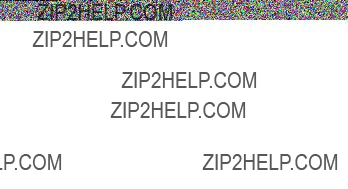
Printer parts
 Control Panel
Control Panel
a. Online Button (Green)
Switches the printer online and of???ine. (???P.25)
???On
The printer is online.
???Flashing
The printer is switching modes.
???Off
The printer is of???ine.
b.Menu Button
Displays the main menu of the printer. (???P.48)
c.Data lamp (Green)
???Flashing
During printing, the Data lamp ???ashes when the printer is receiving or processing print jobs. Otherwise, this lamp ???ashes when the print job is paused or the printer is updating the ???rmware.
???Off
There are no active print jobs when the Data lamp is off.
d.Message lamp (Orange)
???On
A warning message is displayed.
???Flashing
An error message is displayed.
???Off
The printer is off or is operating normally.
e.Paper Source Section
After you press the Feeder Selection button, the lamp for your chosen paper source is lit.
1.Roll Media lamp (Green)
???On
Indicates that a roll is selected as the paper source.
???Off
Indicates that a sheet is selected as the paper source.
2.Cut Sheet lamp (Green)
???On
Indicates that a sheet is selected as the paper source.
???Off
Indicates that a roll is selected as the paper source.
f.Feeder Selection Button
Switches the paper source. Each time you press this button, the paper source switches between the roll and the sheet, and the corresponding lamp on the Paper Source Section is lit.

Printer parts
g. Display Screen
Shows the printer menu, as well as the printer status and messages.
h. Color Label
This label indicates the Ink Tank color. The label corresponds to the ink level on the Display Screen.
i.HDD lamp (Green)
???On
Indicates the printer is accessing the hard disk.
???Off
Indicates the printer is not accessing the hard disk.
j.??? Button
Menu mode: Press this button to display the menu one level higher.
k. ??? Button
Of???ine: Press this button to rewind rolls manually. (???P.188)
Menu mode: Press this button to display the previous menu item or setting value.
l.??? Button
Of???ine mode: Press this button to feed the roll manually in the direction of ejection, as needed. (???P.188)
Menu mode: Press this button to display the next menu item or setting value.
m. ??? Button
Menu mode: Press this button to display the menu one level lower.
n. OK Button
In Menu mode, press this button to con???rm or execute the selected item or setting. Also press this button if the Display Screen indicates to press the OK button.
o. Information Button
Displays printer submenus. Press this button to display information about ink, paper, and so on. (???P.62)
You can also hold down this button for three seconds to clean the Printhead ( Head Cleaning A ).
p. Power Button
Turns the printer on and off. (???P.18)
q. Load/Eject Button
By pressing this button, you can check instructions on loading and removing paper. Instructions for loading paper are shown on the Display Screen if pressed when no paper is loaded, and instructions for removing paper are shown if paper is loaded.
r.Stop Button
Hold down for at least a second to cancel print jobs in progress or end the ink drying period.
Note
??? In Sleep mode, you can press any button except the Power button to bring the printer online again.
Printer parts
 Stand
Stand
a.Stand L
The left leg of the Stand.
b.Stand R
The right leg of the Stand.
c.Top Stand Stay
Supports Stand L and Stand R. Attach the Media Take-up Unit to this part.
d.Bottom Stand Stay
Supports Stand L and Stand R.
e.Leg Covers
Covers for Stand L and Stand R.
f.Stopper
Locks the Stand casters.
Always release the Stopper before moving the printer. Moving the printer while a Stopper is locked may scratch the casters or the ???oor.
Printer parts
 Media Take-up Unit
Media Take-up Unit
???Main Unit
a. Left Media Take-up Unit
Load the Rewind Spool here.
b. Right Media Take-up Unit
Load the Rewind Spool here. Includes the Media Take-up Unit Power button, ??? and ??? buttons to advance or rewind paper, and a power cord.
c. Rewind Spool
Winds documents printed on rolls.
d. 3-inch Adapter
When rewinding rolls with 3-inch paper cores, attach the adapter to the Rewind Spool.
e. Media Take-up Sensor
A sensor for automatically rewinding rolls.
???Weight
a. Weight Roll (7)
Weights required when rewinding rolls. Use one roll or combine two (with a Weight Joint ), depending on the roll width.
b. Weight Joint
Fastens two Weight Rolls.
c. Weight Flange (2 Sets)
Attached to the ends of Weight Roll to adjust the weight. Use Weight Flange 1 or Weight Flange 2, depending on the type of paper. (???P.230)

Control Panel
Control Panel
 Turning the Printer On and Off
Turning the Printer On and Off
Turning the printer on
1. Press the Power button to turn on the printer. The printer will now start up.
After the Display Screen shows the Canon logo, Starting up... Please wait. is displayed.
2. The printer goes online in preparation for printing after startup, and the Online lamp and paper source section lamp remain lit.
The printer will not go online in the following situations. Take action as needed.
???The Top Cover is open Close the Top Cover.
???The Ink Tank Cover is open Close the Ink Tank Cover.
???The Printhead is not installed
Please see ???Replacing the Printhead???. (???P.695)
???Ink Tank is not installed
Please see ???Replacing Ink Tanks???. (???P.678)
??? ???ERROR??? is shown on the Display Screen
Turn off the printer and contact your Canon dealer.
???The Online lamp and Message lamp are not lit (even once), and nothing appears on the Display Screen
Make sure the printer is plugged in correctly. Check the connection at the plug and electrical outlet.
???No paper is loaded
Load paper. (???P.140) (???P.144)
 Important
Important
???Starting the printer when it is connected via the USB cable to a Macintosh computer that is off may cause the computer to start up at the same time. To prevent this, disconnect the USB cable before starting the printer. Connecting the printer to the computer via a USB hub may solve this issue.
Control Panel
Turning the printer off
 Important
Important
??? Never disconnect the printer???s power supply or unplug it during a print job. This could damage the printer.
1.Make sure no print jobs are in progress.
If the Message lamp is ???ashing, check the message on the Display Screen and take action as necessary. (???P.764)
If the Data lamp is ???ashing, the printer is receiving a print job. Turn off the printer only after printing is ???nished.
2.Hold down the Power button for more than a second.
After Shut Down.. Please Wait.. is shown on the Display Screen, the printer shuts off.
Control Panel
 Printer Modes
Printer Modes
Printer modes are classi???ed as follows and described in this topic.
???Modes (???P.20)
???Mode transition (???P.21)
???Online, and state of the Control Panel (???P.22)
???Of???ine, and state of the Control Panel (???P.23)
???Menu mode, and state of the Control Panel (???P.24)
???Submenu mode, and state of the Control Panel (???P.24)
Modes
The printer has ???ve modes as follows:
???Online
The printer is ready to receive jobs sent from the computer. Jobs sent from the computer are processed immediately. If jobs are received in other modes, they are printed the next time the printer goes online.
???Of???ine
Any jobs sent from the computer are held without being processed. While the printer is of???ine, you can feed or cut roll paper manually.
The printer goes of???ine automatically if jobs cannot be processed, such as if errors occur.
???Menu mode
Menus are displayed on the printer, and you can select, set, or execute menu items. Any jobs sent from the computer are held without being printed.
???Submenus
Submenus are displayed regarding ink and paper information. Jobs can be received and printing is possible while submenus are displayed and the printer is online. In other modes, any jobs sent from the computer are held without being printed while submenus are displayed.
???Sleep mode
The printer is in power-saving mode. The printer automatically enters Sleep mode to conserve power if it is idle for a speci???c period (by factory default, ???ve minutes), that is, if no print jobs are received or buttons are pressed while all covers are closed.
You can specify the period before the printer enters Sleep mode in the Sleep Timer menu. (???P.48) If any print jobs are received when the printer is in Sleep mode (after it was originally online), the printer goes online and prints the jobs.
Control Panel
Mode transition
The printer mode transitions are as follows:
*1: When submenus are displayed, you can press any button other than the Information button to return to the previous mode.
*2: The printer automatically enters Sleep mode if it is idle for a speci???c period (by factory default, ???ve minutes), that is, if no print jobs are received or buttons are pressed while all covers are closed. However, it does not enter Sleep mode while error messages are displayed.
*3: In Sleep mode, the printer can be restored to the previous state by pressing any button. Sleep mode is also terminated if a print job is received or a command is issued from RemoteUI.
Control Panel
Online, and state of the Control Panel
Display Screen
???Top Level of the Display Screen
The printer status is displayed here. The selected paper source is indicated by an icon in the upper-right corner.
Any warning messages are displayed here on lines 2-4. Take action as needed. (???P.764)
???Middle Level of the Display Screen
The ???rst and second lines display the paper type and size.
???Bottom Level of the Display Screen
Here, the remaining ink level is indicated. (???P.690)
Control Panel
??? Online lamp
Lit when the printer is online.
??? Data lamp
Flashes when print jobs are being received or processed.
??? Message lamp
Lit when warning messages are displayed.
Control Panel
Of???ine, and state of the Control Panel
Of???ine
Display Screen
??? Display Screen
The printer status is displayed here. The selected paper source is indicated by an icon in the upper-right corner.
Any warning messages are displayed here on lines 2-4. Take action as needed. (???P.764)
???Middle Level of the Display Screen
The ???rst and second lines display the paper type and size.
???Bottom Level of the Display Screen
Here, the remaining ink level is indicated. (???P.690)
Control Panel
??? Message lamp
Lit when warning messages are displayed.
Error Messages
Control Panel
Menu mode, and state of the Control Panel
Press the Information button to display this information, one after another: the Maintenance Cartridge capacity and remaining ink levels, paper information, and printer information. (???P.62)
Control Panel
 Switching Modes
Switching Modes
Switching the Printer Online/Of???ine
Press the Online button to switch the printer online or of???ine.
The Online lamp is lit in Online mode. Printing is possible in this mode.
The Online lamp is off in Of???ine mode.
Depending on the status, the printer switches online and of???ine as follows.
Control Panel
Switching to Menu Mode
Press the Menu button to display the main menu.
Depending on the status, the printer switches to Menu mode as follows.
Press the Information button to display the submenus.
Press the Information button to display the Maintenance Cartridge capacity and remaining ink levels, as well as information on the loaded paper and the printer. Press the Information button repeatedly to change the information displayed. (???P.62)
Press any button other than the Information button to restore the previous mode.
After you display a submenu, the printer will revert to the previous mode in about ???ve seconds if no print job is received or if you do not operate the printer.
 Note
Note
???You can start Head Cleaning A by holding down the Information button for three seconds or more. (???P.694)
Control Panel
 Printer Menu Operations
Printer Menu Operations
The printer menu includes a main menu and submenus.
???Main menu operations when no print job is in progress (???P.27)
???Main menu operations during printing (???P.27)
???Submenu operations (???P.28)
Main menu operations when no print job is in progress
Access the main menu by pressing the Menu button on the Control Panel.
 Note
Note
???The main menu will not be displayed in the following case even if you press the Menu button.
???An error message is displayed:
Switches to Menu mode after the problem is solved.
The following operations are available from the main menu.
???Paper settings
???Print settings
???Printer settings
???Job management
For a description of speci???c items available in the main menu, see ???Main Menu Settings???. (???P.48) For instructions on selecting and setting main menu items, see ???Main Menu Operations???. (???P.29)
 Note
Note
???By default, main menu settings apply to all print jobs. However, for settings that are also available in the printer driver, the values speci???ed in the printer driver take priority.
Main menu operations during printing
After pressing the Online button during printing to pause printing, if you press the Menu button on the Control Panel, only the menu options you can execute during printing ( Head Cleaning, Fine Band Adj.,
Information, and Job Mgmt Menu ) are displayed.
 Note
Note
???The main menu will not be displayed during printing in the following case even if you press the Menu button.
???An error message is displayed:
Switches to Menu mode after the problem is solved.
The following operations are available from the main menu during printing.
???Printhead cleaning
???Manual adjustment of the paper feed amount
???Display of printer-related information
???Job management
For a description of speci???c items available in the main menu during printing, see ???Main Menu Settings (During Printing)???. (???P.59)
For instructions on selecting and setting main menu items during printing, see ???Main Menu Operations???. (???P.29)
Control Panel
Submenu operations
Access submenus by pressing the Information button on the Control Panel. You can check the following information in submenus.
???Remaining Maintenance Cartridge capacity
???Ink levels
???Information on the loaded paper
???Printer information
For a description of speci???c items displayed in submenus, see ???Submenu Display???. (???P.62)
Control Panel
 Main Menu Operations
Main Menu Operations
Press the Menu button to display the main menu. For details, see ???Main Menu Settings???. (???P.48)
??? Main menu (displayed if you press the Menu button when printing is not in progress)
??? Menu selection (if you press the Menu button when printing is in progress)
 Note
Note
???The main menu will not be displayed in the following cases even if you press the Menu button.
???An error message is displayed
You can access the Menu mode after you have solved the problem.
To access each function menu from the main menu, and set or execute menu items, use buttons on the Control Panel.
The following section describes menu operations and how they are presented in this User Manual.
???Accessing Menus (???P.30)
???Specifying menu items (???P.31)
???Specifying numerical values (???P.32)
???Executing menu commands (???P.33)
Control Panel
Accessing Menus
Printer menus are grouped by function.
Menus are displayed with the upper line selected. Use the buttons on the Control Panel to access each menu.
???Press ??? to access a higher menu in the menu list, and press ??? to access a lower one. If items of the menu list are more than the lines of the screen, press ??? and ??? to scroll the menu. Items you select are highlighted.
The scroll bar at right indicates the current position in the overall menu.
???The lower level menus are available if ????????? is displayed at right. To access these lower level menus, select a menu and press ???.
???The upper level menus are available if ????????? is displayed at left. To access these upper level menus, select a menu and press ???.
Control Panel
Specifying menu items
Follow the steps below to specify menu items.
1. Press ??? or ??? to select a menu, and then press the ??? button. Repeat these steps until the desired menu options are displayed.
2. Press ??? or ??? to select the desired setting, and then press the OK button. The check box at left is selected, and the setting is con???rmed.
After two seconds, the display reverts to the upper level menu.
3. Press the Online button to bring the printer online.
 Note
Note
???If a con???rmation message is displayed regarding the setting you entered, press the OK button. The setting is applied, and the printer goes online.

Control Panel
Specifying numerical values
Follow the steps below to enter numbers for items such as network settings.
1. Press ??? or ??? to select Interface Setup, and then press the ??? button.
2. Press ??? or ??? to select TCP/IP, and then press the ??? button.
3. Press ??? or ??? to select IP Setting, and then press the ??? button.
4. Press ??? or ??? to select IP Address, and then press the ??? button.
5. Press ??? or ??? to move the cursor (_) to each ???eld for entering numbers.
6. Press ??? or ??? to select the number, and then press the OK button.
 Note
Note
???Hold down ??? or ??? to increase or decrease the value continuously.
???Make sure the IP address you enter for the printer is not the same as any computer IP address in your network.
7.Repeat steps 2 and 3 to continue entering numbers.
8.Press the Online button to bring the printer online.
 Note
Note
???If a con???rmation message is displayed regarding the setting you entered, press the OK button. The setting is applied, and the printer goes online.
Control Panel
Executing menu commands
Follow the steps below to execute menu commands.
1. Press ??? or ??? to select a menu, and then press the ??? button. Repeat these steps until the desired menu options are displayed.
2. Press ??? or ??? to select the action to execute, and then press the OK button.
After two seconds, the menu command is executed. After commands are executed, the printer commonly reverts to the state before the menu operation, either online or of???ine.
Control Panel
 Menu Structure
Menu Structure
Main Menu
The structure of the main menu is as follows. Values at right indicated by an asterisk ???*??? are the defaults. For instructions on menu operations, see ???Main Menu Operations???. (???P.29)
For details on menu items, see ???Main Menu Settings???. (???P.48)
Control Panel
Glossy Photo (*5)
Semi-Gl Photo (*5)
HW GlossyPhoto2
(*5)
HW SemiGlPhoto2
(*5)
Poster Semi-Gl
(*5)
Syn. Paper (*5)
Adh. Syn. Paper
(*5)
Backlit Film (*5)
Backprint Film (*5)
Flame-Res.Cloth
(*5)
Fabric Banner (*5)
ThinFab.Banner
(*5)
Proo???ng Paper
(*5)
FineArt Photo (*5)
FneArt HW Photo
(*5)
FineArt Txtr (*5)
FineArt Wtrclr (*5)
FineArtBlockP (*5)
Canvas Matte (*5)
JPN Paper Washi
(*5)
Colored Coated
(*5)
CAD Trace Paper
(*5)
CAD Matte Film
(*5)
CAD Clear Film
(*5)
Special# (Here, the number is 1-10) (*5)
Chk Remain.Roll Off *
Control Panel
*1: Available only if a roll is loaded.
*2: Available only if Chk Remain.Roll is On.
*3: Available if Feed Priority is Automatic or Print Length.
*4: Available only if IP Mode is Manual.
*5: For information on the types of paper the printer supports, refer to the Paper Reference Guide. (???P.167) The paper type setting in the printer driver and related software (as well as on the Control Panel ) is updated when you install the printer driver from the User Software CD-ROM or if you change paper information by using the Media Con???guration Tool. See the Media Con???guration Tool Guide (Windows) or Media Con???guration Tool Guide (Macintosh).
*6: Not displayed if NetWare is Off.
*7: Not displayed if Auto Detect is On.
*8: Follows the setting in Date Format.
*9: Displayed if the Media Take-up Unit is attached.
*10: Available after you have used Advanced Adj. in Auto Head Adj. once.
*11: Available if: (a) Take-up Reel is Enable, (b) roll paper is loaded, and (c) you have not executed Auto Feed for the loaded roll.
*12: Not displayed if IP Mode is Automatic.
*13: Follows the setting in Length Unit.
Control Panel
 Caution
Caution
???Only the following menus are displayed during printing.
???Menu Durng Prtng
Choose this menu to display Head Cleaning, Fine Band Adj., and Information.
???Job Mgmt Menu
Choose this menu to display Job Management.
Submenus
Each time you press the Information button on the Control Panel, printer information is displayed in the following order.
???The remaining Maintenance Cartridge capacity and ink levels
???Information on the loaded paper
???Printer information
For details on submenu screens, see ???Submenu Display???. (???P.62)
Control Panel
Main menu during printing
The structure of the main menu during printing is as follows.
For instructions on menu operations, see ???Main Menu Operations???. (???P.29)
For details on menu items available during printing, see ???Main Menu Settings (During Printing)???. (???P.59)
Control Panel
 Main Menu Settings
Main Menu Settings
Main menu items are described in the following tables.
For instructions on menu operations, see ???Main Menu Operations???. (???P.29)
For details on menu levels and values, see ???Menu Structure???. (???P.34)
Control Panel
Media Menu
*1: For information on the types of paper the printer supports, refer to the Paper Reference Guide. (???P.167) The paper type setting in the printer driver and related software (as well as on the Control Panel ) is updated when you install the printer driver from the User Software CD-ROM or if you change paper information by using the Media Con???guration Tool. See the Media Con???guration Tool Guide (Windows) or Media Con???guration Tool Guide (Macintosh).
*1: For information on the types of paper the printer supports, refer to the Paper Reference Guide. (???P.167) The paper type setting in the printer driver and related software (as well as on the Control Panel ) is updated when you install the printer driver from the User Software CD-ROM or if you change paper information by using the Media Con???guration Tool.
Control Panel
 Main Menu Settings (During Printing)
Main Menu Settings (During Printing)
Main menu items during printing are described in the following tables.
For instructions on menu operations, see ???Main Menu Operations???. (???P.29)
For details on menu levels and values, see ???Menu Structure???. (???P.34)

Control Panel
 Submenu Display
Submenu Display
Press the Information button to display this information, one after another: the Maintenance Cartridge capacity and remaining ink levels, paper information, and printer information.
Each time you press the Information button, the following submenus are displayed.
 Note
Note
???Press any button other than the Information button to restore the previous mode.
???After you display a submenu, the printer will revert to the previous mode in about ???ve seconds if no print job is received or if you do not operate the printer.
Remaining Maintenance Cartridge capacity and ink levels
The remaining Maintenance Cartridge capacity is shown on the top level of the Display Screen.
The remaining level of each ink is shown on the bottom level of the Display Screen. Ink levels shown on the Display Screen correspond to the inks identi???ed by the color labels on the bottom of the Display Screen. These symbols may be displayed above the ink level: ???!??? if ink is low, ???????? if no ink is left, and ??????? if you have deactivated ink level detection.
Remaining ink is indicated as follows.
Information of the loaded paper
Here, the paper size, type, and related printer settings are displayed.
Printer information
Displays the ???rmware version, serial number, IP address, and hard disk capacity.
Control Panel
 Status Print
Status Print
You can print a Status Print report indicating the current status of the printer.
With Status Print, information is printed regarding the printer ???rmware version, various settings, and the utilization level of consumables.
Printing Status Print Reports
1. Load paper.
If using sheets, load paper A4/Letter-sized. You will need at least four sheets.
2. Press the Menu button to display MAIN MENU.
3. Press ??? or ??? to select Test Print, and then press the ??? button.
4. Press ??? or ??? to select Status Print, and then press the ??? button.
5. Press ??? or ??? to select Yes, and then press the OK button.
Checking the information in the Status Print report
The following information is included in the Status Print report.
Control Panel
Frame Type
Use BOOTP
Use DHCP
Use RARP
Enable DNS Dynamic
Update
Use Zeroconf Function
IP Address*
Subnet Mask*
Gateway Address*
LPD Printing
IPP Printing
IPP Printer URI
RAW Printing
Raw Port Number
Raw Mode Bi-direction
FTP Printing
Primary DNS Server
Address*
Secondary DNS Server
Address*
DNS Host Name*
DNS Domain Name*
SMTP Server Address*
Multicast DNS Service
Name
*: Blank if the status has been saved by using Status Monitor.
Control Panel
*: Depending on the NetWare print service settings, information on one of the following four items is printed.
*: Blank if the status has been saved by using Status Monitor.
Hard Disk
Hard Disk
 Printer Hard Disk Operations
Printer Hard Disk Operations
Printer hard disk operations are available through the Control Panel, printer driver, imagePROGRAF Print Plug-in, RemoteUI, imagePROGRAF Status Monitor, and imagePROGRAF Printmonitor.
The hard disk operations available through each interface are as follows.
*1: This option is available with Print, Print (auto delete), and Save in mail box. Print jobs are saved and then printed.
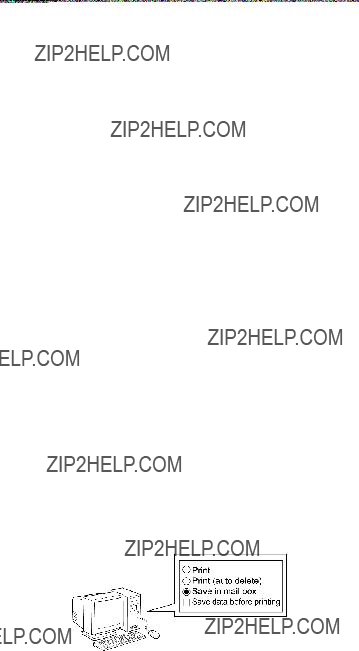
Hard Disk
 Saved Print Jobs
Saved Print Jobs
Saving print jobs refers to the process of sending print jobs from a computer and storing them on the printer???s hard disk. By saving print jobs, you can print them repeatedly as needed without sending them from a computer again.
Saving print jobs enables you to do the following things.
???Save the time spent using a computer
When you send a print job to the printer, you can either print it and save it on the printer at the same time or simply save it on the printer without printing it yet. Saved print jobs can be printed in the required quantity later without the need to use a computer again.
???Simplify reprinting, if any errors occur
If errors occur in the middle of printing (as when paper runs out), you can resume printing after clearing the error without resending the print job from a computer.
???Streamline printing work
Without using a computer, you can select print jobs and print in the desired quantity. You can also select multiple print jobs to print during the same period. This enables unattended operation at night, for example.
Format of saved print jobs
When saving print jobs on the printer???s hard disk, choose the format in the printer driver or on the imagePROGRAF Print Plug-in screen. Choose from three formats for saving print jobs: Print, Print (auto delete), and Save in mail box. You can also choose Save data before printing, as desired.
???Print
Save print jobs automatically at the same time they are printed. (This is the default format.)
???Print (auto delete)
Save print jobs temporarily at the same time they are printed and delete them after printing.
???Save in mail box
Save print jobs on the printer without printing them.
???Save data before printing
This option is available in combination with Print, Print (auto delete), and Save in mail box. Print jobs are saved on the hard disk and then printed.

Hard Disk
Storage destination
The storage area on the printer???s hard disk is divided into a temporary storage area and a permanent storage area. Print jobs in the ???job queue??? or ???Common Box??? are saved in the temporary storage area. Jobs in ???Personal Boxes??? are saved in the permanent storage area.
???Job queue
Current print jobs are temporarily saved in the job queue, a storage space where jobs are saved in the order they will be printed.(*1)
Up to ten jobs can be stored in the queue. Subsequent jobs are treated as "standby" jobs, to be processed when possible.
*1: Jobs that are being saved, received, printed, or deleted, or jobs that have been interrupted or are waiting to print
???Common Box
If you have speci???ed Print as the format, jobs sent from the computer are saved in the Common Box. There is one Common Box, with the Common Box number ???00???. A password cannot be set for the Common Box.
Up to 100 print jobs can be saved here, but they will be deleted one after another starting with the oldest job in the following situations.
???If there are more than 101 jobs in the Common Box and job queue combined
???If no more temporary storage space is available when jobs in the format Print or Print (auto delete) are received
???If there is not enough space in the temporary or permanent storage area when jobs in the format
Save in mail box are received
???Personal Boxes
You can store jobs in Personal Boxes in either of the following ways.
???By moving a job stored in the Common Box into a Personal Box
???By selecting Save in mail box as the format
There are nine Personal Boxes, with Personal Boxes numbered ???01??? to ???09???. You can specify a name and password for each Personal Box.
Up to 100 print jobs can be saved in all Personal Boxes combined.
Hard Disk
 Saving Print Jobs
Saving Print Jobs
You can use the printer driver or imagePROGRAF Print Plug-in to save print jobs on the printer???s hard disk.
Using the printer driver (Windows)
1. Access the Page Setup sheet.
2. Click Output Method to display the Output Method dialog box.
Hard Disk
3. In Output Method, choose the format for saved print jobs.
???Print
Save print jobs automatically at the same time they are printed. (This is the default format.)
???Print (auto delete)
Save print jobs temporarily at the same time they are printed and delete them after printing.
???Save in mail box
Save print jobs on the printer without printing them.
If you choose Save in mail box, also specify the destination Personal Box in the Mail box list.
 Note
Note
???Click Acquire Mail Box Name to display Personal Box names in the Mail box list, as acquired from the printer.
???Save data before printing
This option is available in combination with Print, Print (auto delete), and Save in mail box. Print jobs are saved on the hard disk and then printed.
4.In Name of data to be saved, specify how to name saved print jobs.
???To use the ???le name, choose Use ???le name.
???Otherwise choose Enter name and enter a name in Name.
5.Click OK to close the Output Method dialog box.
Hard Disk
Using the printer driver (Mac OS X)
1. Access the Additional Settings pane.
2. In Send job to, choose the format for saved print jobs.
???Print
Save print jobs automatically at the same time they are printed.
???Print (auto delete)
Save print jobs temporarily at the same time they are printed and delete them after printing.
Hard Disk
???Save in mail box
Save print jobs on the printer without printing them.
The Destination dialog box is displayed if you select Save in mail box. Here, specify the name and Personal Box number for saved print jobs.
1.In Document title, enter a name to identify saved print jobs.
2.Select the Personal Box number in the Mail box list.
3.Click OK to close the Destination dialog box.
 Note
Note
???Save data before printing
This option is available in combination with Print, Print (auto delete), and Save in mail box. Print jobs are saved on the hard disk and then printed.
Hard Disk
Using the printer driver (Mac OS 9)
1. Access the Additional Settings pane.
2. In Send job to, choose the format for saved print jobs.
???Print
Save print jobs automatically at the same time they are printed.
???Print (auto delete)
Save print jobs temporarily at the same time they are printed and delete them after printing.
Hard Disk
???Save in mail box
Save print jobs on the printer without printing them.
The Destination dialog box is displayed if you have selected Save in mail box. Here, specify the name and Personal Box number for saved print jobs.
1.In Document, enter a name to identify saved print jobs.
2.Select the Personal Box number in the Mail box list.
3.Click OK to close the Destination dialog box.
 Note
Note
???Save data before printing
This option is available in combination with Print, Print (auto delete), and Save in mail box. Print jobs are saved on the hard disk and then printed.
Using imagePROGRAF Print Plug-in
For details, refer to the topic for the Set Con???guration button on the Main sheet in the Print Plug-In Guide. There is a Windows and Macintosh version of the Print Plug-In Guide. You can access them from the top page of this user manual.
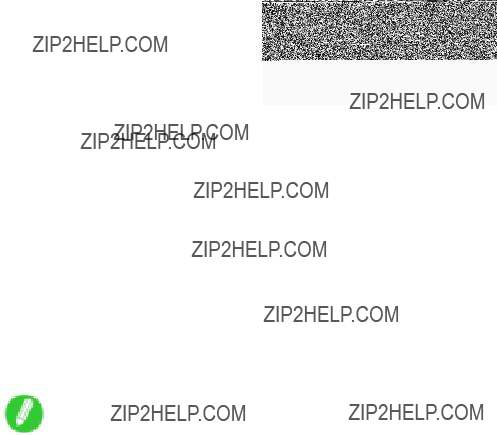
Hard Disk
 Checking a List of Saved Jobs
Checking a List of Saved Jobs
Displaying a List of Saved Jobs
You can display saved print jobs in the Common Box and each Personal Box.
You can view a list of stored print jobs as follows.
???Using the Control Panel
???Using RemoteUI
???Using imagePROGRAF Status Monitor (Windows)
???Using imagePROGRAF Printmonitor (Macintosh) (Using the Control Panel )
1.Press the Menu button to display MAIN MENU.
2. Display a list of saved print jobs.
???To display jobs saved in the Common Box
1.Press ??? or ??? to select Job Management, and then press the ??? button.
2.Press ??? or ??? to select Com. BOX Ope., and then press the ??? button.
3.Press ??? or ??? button to select Job List.
???To display jobs saved in Personal Boxes
1.Press ??? or ??? to select Job Management, and then press the ??? button.
2.Press ??? or ??? to select Psnl. BOX Ope., and then press the ??? button.
3.Press ??? or ??? to select the folder, and then press the ??? button.
4.Enter a password if one has been set, and then press the ??? button.
5.Press ??? or ??? button to select Job List.
Note
??? You can check a list of print jobs in the queue by choosing Job Management ??? Job Queue Ope.
Hard Disk
(Using RemoteUI )
Choose a mail box on the Stored Job page to display a list of jobs saved in that mail box.
Note
??? Enter a password if one has been set.
Hard Disk
Jobs saved in the mail box are listed.
For details, refer to the RemoteUI help. (Using imagePROGRAF Status Monitor )
On the Hard Disk sheet, select a mail box in the list and click Open.
Hard Disk
Note
??? Enter a password if one has been set.
Jobs saved in that mail box are displayed in the Documents dialog box.
For details, refer to the imagePROGRAF Status Monitor help. (Using imagePROGRAF Printmonitor )
On the Hard Disk pane, click ????????? next to Inbox No./Name to list saved jobs.

Hard Disk
Note
??? Enter a password if one has been set.
For details, refer to the imagePROGRAF Printmonitor help.
Printing a List of Saved Jobs
You can print a list of saved print jobs in the Common Box and each Personal Box.
You can also print a print job list by using the Control Panel.
1. Press the Menu button to display MAIN MENU.
2. Print a list of saved print jobs.
???To print a list of jobs saved in the Common Box
1.Press ??? or ??? to select Job Management, and then press the ??? button.
2.Press ??? or ??? to select Com. BOX Ope., and then press the ??? button.
3.Press ??? or ??? to select Print Job List, and then press the ??? button.
4.Press ??? or ??? to select Yes, and then press the OK button.
???To print a list of jobs saved in Personal Boxes
1.Press ??? or ??? to select Job Management, and then press the ??? button.
2.Press ??? or ??? to select Psnl. BOX Ope., and then press the ??? button.
3.Press ??? or ??? to select the folder, and then press the ??? button.
4.Enter a password if one has been set, and then press the ??? button.
5.Press ??? or ??? to select Print Job List, and then press the ??? button.
6.Press ??? or ??? to select Yes, and then press the OK button.

Hard Disk
 Printing Saved Jobs
Printing Saved Jobs
You can print jobs stored on the printer???s hard disk as follows.
???Using the Control Panel
???Using RemoteUI
???Using imagePROGRAF Status Monitor (Windows)
???Using imagePROGRAF Printmonitor (Macintosh)
Using the Control Panel
1. Press the Menu button to display MAIN MENU.
2. Print the saved job.
???Printing jobs in the Common Box
1.Press ??? or ??? to select Job Management, and then press the ??? button.
2.Press ??? or ??? to select Com. BOX Ope., and then press the ??? button.
3.Press ??? or ??? to select Job List, and then press the ??? button.
4.Press ??? or ??? to select the saved job to print, and then press the ??? button.
5.Press ??? or ??? to select Print, and then press the ??? button.
6.Con???rm the paper to use for printing and press the OK button.
7.Specify the number of copies and press the OK button.
???Printing jobs in Personal Boxes
1.Press ??? or ??? to select Job Management, and then press the ??? button.
2.Press ??? or ??? to select Psnl. BOX Ope., and then press the ??? button.
3.Press ??? or ??? to select the folder, and then press the ??? button.
4.Enter a password if one has been set, and then press the ??? button.
5.Press ??? or ??? to select Job List, and then press the ??? button.
6.Press ??? or ??? to select the saved job to print, and then press the ??? button.
7.Press ??? or ??? to select Print, and then press the ??? button.
8.Con???rm the paper to use for printing and press the OK button.
9.Specify the number of copies and press the OK button.
Hard Disk
Using RemoteUI
1. On the Stored Job page, choose the mail box.
Note
??? Enter a password if one has been set.
Hard Disk
2. Select the print job in the list and click Print.
3. On the Print Saved Document page, enter the quantity to print in Copies and click OK.
For details, refer to the RemoteUI help.
Hard Disk
Using imagePROGRAF Status Monitor
1. On the Hard Disk sheet, select a mail box in the list and click Open.
Note
??? Enter a password if one has been set.
Hard Disk
2. In the Documents dialog box, select the print job in the list and click Print.
3. In the Print dialog box, enter the quantity to print in Copies and click OK.
For details, refer to the imagePROGRAF Status Monitor help.
Hard Disk
Using imagePROGRAF Printmonitor
1. On the Hard Disk pane, click ????????? next to Inbox No./Name to list saved jobs.
Note
??? Enter a password if one has been set.
2. Select the saved job in the list and click Resume Printing to display the Resume Printing dialog box.
3. Specify the number of copies and press the OK button.
For details, refer to the imagePROGRAF Printmonitor help.
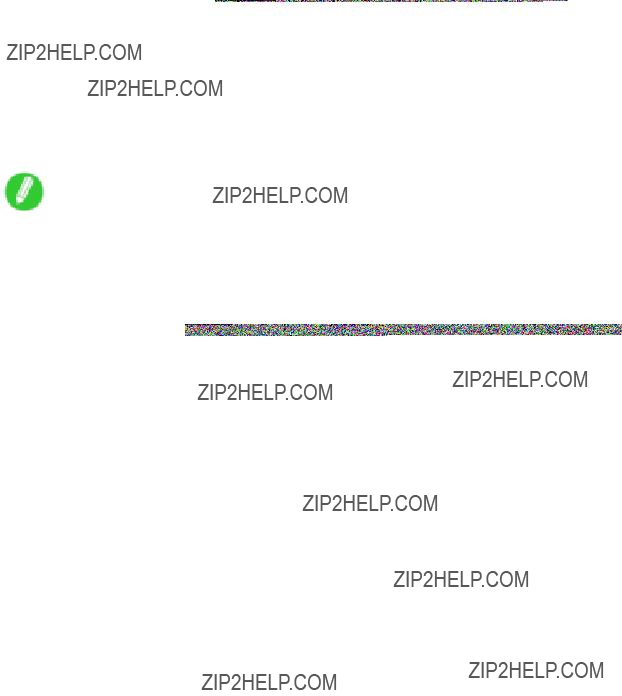
Hard Disk
 Managing Saved Jobs
Managing Saved Jobs
Moving saved jobs
Print jobs that you have saved in the Print format are saved in the Common Box, number ???00???. However, jobs in this mail box will be deleted one after another starting with the oldest job in the following situations.
???If there are more than 101 saved jobs in the Common Box and job queue combined
???If no more temporary storage space is available when jobs in the format Print or Print (auto delete) are received
???If there is not enough space in the temporary or permanent storage area when jobs in the format
Save in mail box are received
You can move jobs to Personal Boxes ???01??? to ???09??? to prevent them from being deleted. (Up to 100 jobs can be stored here.)
You can also move saved jobs from one Personal Box to another.
You can move stored print jobs as follows.
???Using RemoteUI
???Using imagePROGRAF Status Monitor (Windows)
???Using imagePROGRAF Printmonitor (Macintosh)
Note
??? Jobs saved in Personal Boxes cannot be moved to the Common Box.
(Using RemoteUI )
1. On the Stored Job page, choose the mail box.
Hard Disk
Note
??? Enter a password if one has been set.
2. Select the print job in the list and click Move.
Hard Disk
3. On the Move Document page, select the name or number of the destination Personal Box in the Destination mail box list and click OK.
For details, refer to the RemoteUI help. (Using imagePROGRAF Status Monitor )
1. On the Hard Disk sheet, select a mail box in the list and click Open.
Note
??? Enter a password if one has been set.
In the Documents dialog box, select the print job in the list and click Move.
In the Move dialog box, select the destination Personal Box and click OK.
For details, refer to the imagePROGRAF Status Monitor help.
Hard Disk
(Using imagePROGRAF Printmonitor )
1. On the Hard Disk pane, click ????????? next to Inbox No./Name to list saved jobs.
Note
??? Enter a password if one has been set.
2. Select the saved job in the list and click Move.
Hard Disk
3. In the Move Document dialog box, select the destination Personal Box and click OK.
For details, refer to the imagePROGRAF Printmonitor help.
Hard Disk
Displaying details of saved jobs
You can view details of stored print jobs as follows.
???Using RemoteUI
???Using imagePROGRAF Status Monitor
???Using imagePROGRAF Printmonitor (Using RemoteUI )
1.On the Stored Job page, choose the mail box.
Note
??? Enter a password if one has been set.
Hard Disk
2. Select the saved job in the list and click Details.
The Details of the saved document page is displayed.
For details, refer to the RemoteUI help.
Hard Disk
(Using imagePROGRAF Status Monitor )
1. On the Hard Disk sheet, select a mail box in the list and click Open.
Note
??? Enter a password if one has been set.
Hard Disk
2. In the Documents dialog box, select the saved job in the list and click Properties.
The Properties dialog box is displayed.
For details, refer to the imagePROGRAF Status Monitor help.
Hard Disk
(Using imagePROGRAF Printmonitor )
1. On the Hard Disk pane, click ??? next to Inbox No./Name to list saved jobs.
Note
??? Enter a password if one has been set.
For details, refer to the imagePROGRAF Printmonitor help.
Hard Disk
Renaming saved jobs
You can rename stored print jobs as follows.
???Using RemoteUI
???Using imagePROGRAF Status Monitor
???Using imagePROGRAF Printmonitor (Using RemoteUI )
1.On the Stored Job page, choose the mail box.
Note
??? Enter a password if one has been set.
Hard Disk
2. Select the saved job in the list and click Details.
3. On the Details of the saved document page, click Change Document.
Hard Disk
4. On the Rename Saved Document page, enter the new job name in Document Name and
click OK.
For details, refer to the RemoteUI help.
Hard Disk
(Using imagePROGRAF Status Monitor )
1. On the Hard Disk sheet, select a mail box in the list and click Open.
Note
??? Enter a password if one has been set.
In the Documents dialog box, select the saved job in the list and click Properties.
In the Properties dialog box, enter the job name and click OK.
For details, refer to the imagePROGRAF Status Monitor help.
Hard Disk
(Using imagePROGRAF Printmonitor )
1. On the Hard Disk pane, click ??? next to Inbox No./Name to list saved jobs.
Note
??? Enter a password if one has been set.
Hard Disk
2. Select the saved job in the list and click Settings.
3. In the Settings dialog box, enter the new job name and click OK.
Documents cannot be renamed unless a password has been set. In this case, specify a password. After renaming, you can cancel the password as needed.
For details, refer to the imagePROGRAF Printmonitor help.

Hard Disk
 Deleting Saved Jobs
Deleting Saved Jobs
You can delete saved jobs in the Common Box or Personal Boxes.
You can delete stored print jobs as follows.
???Using the Control Panel
???Using RemoteUI
???Using imagePROGRAF Status Monitor (Windows)
???Using imagePROGRAF Printmonitor (Macintosh)
Using the Control Panel
1. Press the Menu button to display MAIN MENU.
2. Delete the saved job.
???To delete saved jobs in the Common Box
1.Press ??? or ??? to select Job Management, and then press the ??? button.
2.Press ??? or ??? to select Com. BOX Ope., and then press the ??? button.
3.Press ??? or ??? to select Job List, and then press the ??? button.
4.Press ??? or ??? to select the saved job to delete, and then press the ??? button.
5.Press ??? or ??? to select Delete, and then press the ??? button.
6.Con???rm the print job for deletion and press the OK button.
???To delete saved jobs in Personal Boxes
1.Press ??? or ??? to select Job Management, and then press the ??? button.
2.Press ??? or ??? to select Psnl. BOX Ope., and then press the ??? button.
3.Press ??? or ??? to select the folder, and then press the ??? button.
4.Enter a password if one has been set, and then press the ??? button.
5.Press ??? or ??? to select Job List, and then press the ??? button.
6.Press ??? or ??? to select the saved job to delete, and then press the ??? button.
7.Press ??? or ??? to select Delete, and then press the ??? button.
8.Con???rm the print job for deletion and press the OK button.
Hard Disk
Using RemoteUI
1. On the Stored Job page, choose the mail box.
Note
??? Enter a password if one has been set.
Hard Disk
2. Select the saved job in the list and click Delete.
For details, refer to the RemoteUI help.
Hard Disk
Using imagePROGRAF Status Monitor
1. On the Hard Disk sheet, select a mail box in the list and click Open.
Note
??? Enter a password if one has been set.
Hard Disk
2. In the Documents dialog box, select the print job in the list and click Delete.
For details, refer to the imagePROGRAF Status Monitor help.
Hard Disk
Using imagePROGRAF Printmonitor
1. On the Hard Disk pane, click ??? next to Inbox No./Name to list saved jobs.
Note
??? Enter a password if one has been set.
2. Select the saved job in the list and click Delete.
For details, refer to the imagePROGRAF Printmonitor help.
Hard Disk
 Modifying the Current Job (Deleting or Preempting Other Jobs)
Modifying the Current Job (Deleting or Preempting Other Jobs)
You can delete jobs that are currently being printed.
You can also select queued jobs and give them ???rst priority, to print them before other jobs.
Note
??? You cannot preempt queued jobs with jobs that are currently being saved, printed, or deleted.
You can modify current print jobs as follows.
???Using the Control Panel
???Using RemoteUI
???Using imagePROGRAF Status Monitor (Windows)
???Using imagePROGRAF Printmonitor (Macintosh)
Hard Disk
Using the Control Panel
1. Press the Menu button to display MAIN MENU.
2. Modify the job currently being printed.
???Deleting jobs currently being printed
1.Press ??? or ??? to select Job Management, and then press the ??? button.
2.Press ??? or ??? to select Job Queue Ope., and then press the ??? button.
3.Press ??? or ??? to select the print job to delete, and then press the ??? button.
4.Press ??? or ??? to select Delete, and then press the OK button.
???Changing the order of printing
1.Press ??? or ??? to select Job Management, and then press the ??? button.
2.Press ??? or ??? to select Job Queue Ope., and then press the ??? button.
3.Press ??? or ??? to select the job to print ???rst, and then press the ??? button.
4.Press ??? or ??? to select Priority, and then press the OK button.
Using RemoteUI
On the Print Job page, select the job to modify and how to modify it. For details, refer to the RemoteUI help.
Hard Disk
Using imagePROGRAF Status Monitor
On the Job sheet, select the job and the desired function. The following functions are available.
???Preempting other jobs
???Pausing printing
???Resuming printing
???Canceling print jobs
For details, refer to the imagePROGRAF Status Monitor help.
Hard Disk
Using imagePROGRAF Printmonitor
On the Driver pane, select the job and the desired function. The following functions are available.
???Preempting other jobs
???Pausing printing
???Resuming printing
???Canceling print jobs
For details, refer to the imagePROGRAF Printmonitor help.
Hard Disk
 Modifying Personal Boxes
Modifying Personal Boxes
Setting Passwords for Personal Boxes
By factory default, no passwords are set for Personal Boxes. For greater security, you can set passwords for each Personal Box. After you set a password, it will be required to modify the Personal Box settings, as well as to display, print, delete, move, and modify jobs saved in the Personal Box.
 Note
Note
???A password cannot be set for the Common Box.
???Enter a four-digit number as the password, in the range 0001-9999.
???Even if you have set passwords, they are not required to access Personal Boxes in Administrator Mode in RemoteUI.
You can set a password for a Personal Box as follows.
???Using RemoteUI
???Using imagePROGRAF Status Monitor (Windows)
???Using imagePROGRAF Printmonitor (Macintosh) (Using RemoteUI )
On the Stored Job page, select the Personal Box for a password.
Click Edit.
Hard Disk
3. In the Set/Register User???s Inbox dialog box, specify the password and click OK.
???Set Password: Select the check box.
???Password: Enter the password. (This ???eld is limited to four digits in the range 0001-9999.)
???Con???rm: Re-enter the password.
For details, refer to the RemoteUI help.
Hard Disk
(Using imagePROGRAF Status Monitor )
1. On the Hard Disk sheet, select a listed Personal Box for a password and click Open.
Note
??? Enter a password if one has been set for the Personal Box.
In the Documents dialog box, click Settings.
In the Settings dialog box, specify the password and click OK.
???Set Password: Select this check box.
???Password: Enter the password. (This ???eld is limited to four digits in the range 0001-9999.)
???Con???rmation Number: Re-enter the password.
For details, refer to the imagePROGRAF Status Monitor help.
Hard Disk
(Using imagePROGRAF Printmonitor )
1. On the Hard Disk pane, click ????????? next to Inbox No./Name to list saved jobs. Select a saved job and click Settings.
2. In the Settings dialog box, specify the password and click OK.
???Set Password: Select this check box.
???Password: Enter the password. (This ???eld is limited to four digits in the range 0001-9999.)
???Con???rmation Number: Re-enter the password.
For details, refer to the imagePROGRAF Printmonitor help.
Hard Disk
Naming Personal Boxes
By factory default, Personal Boxes are unnamed. You can name them for easier management. You can assign a name to a Personal Box as follows.
???RemoteUI
???imagePROGRAF Status Monitor
???imagePROGRAF Printmonitor (Using RemoteUI )
1.On the Stored Job page, select the Personal Box to identify.
Note
??? Enter a password if one has been set for the Personal Box.
Hard Disk
2. Click Edit.
3. In the Set/Register User???s Inbox dialog box, enter the Personal Box name in Inbox Name and click OK.
For details, refer to the RemoteUI help.
Hard Disk
(Using imagePROGRAF Status Monitor )
1. On the Hard Disk sheet, select a listed Personal Box to identify and click Open.
Note
??? Enter a password if one has been set for the Personal Box.
Hard Disk
2. In the Documents dialog box, click Settings.
3. In the Settings dialog box, enter the Personal Box name and click OK.
For details, refer to the imagePROGRAF Status Monitor help.
Hard Disk
(Using imagePROGRAF Printmonitor )
1. On the Hard Disk pane, click ????????? next to Inbox No./Name to list saved jobs. Select a saved job and click Settings.
2. In the Settings dialog box, enter the Personal Box name and click OK.
For details, refer to the imagePROGRAF Printmonitor help.
Hard Disk
 Checking the Free Hard Disk Space
Checking the Free Hard Disk Space
You can check the space available on the printer???s hard disk as follows.
???Using the Control Panel
???Using RemoteUI
???Using imagePROGRAF Status Monitor (Windows)
???Using imagePROGRAF Printmonitor (Macintosh)
Using the Control Panel
1. Press the Menu button to display MAIN MENU.
2. Press ??? or ??? to select Information, and then press the ??? button.
3. Press ??? or ??? to select HDD Information, and then press the ??? button.
Note
??? You can also check the free hard disk space by pressing the Information button three times.
Using RemoteUI
To view the box list, select Stored Job in Job Management. On the Stored Job page, the free hard disk space is shown in the upper-right corner when boxes are listed.
For details, refer to the RemoteUI help.
Hard Disk
Using imagePROGRAF Status Monitor
The Hard Disk sheet shows the free hard disk space.
???Hard Disk Sheet in imagePROGRAF Status Monitor
For details, refer to the imagePROGRAF Status Monitor help.
Hard Disk
Using imagePROGRAF Printmonitor
The Hard Disk pane shows the free hard disk space.
???Hard Disk Pane in imagePROGRAF Printmonitor
For details, refer to the imagePROGRAF Printmonitor help.
Hard Disk
 Erasing all data on the printer???s hard disk
Erasing all data on the printer???s hard disk
You can erase all data on the printer???s hard disk from the Control Panel.
 Note
Note
???You cannot erase all data on the hard disk during print jobs.
???Conversely, print jobs cannot be processed during erasure of all hard disk data.
1.Press the Menu button to display MAIN MENU.
2. Press ??? or ??? to select System Setup, and then press the ??? button.
3. Press ??? or ??? to select Erase HDD Data, and then press the ??? button.
4. Press ??? or ??? to select the type of deletion, and then press the ??? button.
5. Press ??? or ??? to select Yes, and then press the OK button.
Optional accessories
Optional accessories
 Roll Holder Set
Roll Holder Set
A set of parts comprising the Roll Holder and Holder Stopper. If you want to prepare a few rolls with paper of various types and widths for different purposes, it is convenient to have several sets ready. Sets are available for 2- and 3-inch paper cores. (2-inch versions match the set included with the printer.)
??? Roll Holder Set RH2-63 (for 2-inch paper cores)
??? Roll Holder Set RH3-63 (for 3-inch paper cores): Optional
 Output Stacker
Output Stacker
A cloth tray that catches ejected documents. (Optional)
??? Output Stacker BU-01
For instructions on installing the Output Stacker, refer to the Quick Start Guide.
 IEEE 1394 (FireWire) Expansion Board
IEEE 1394 (FireWire) Expansion Board
An optional interface board to add an IEEE 1394 (also called "FireWire") port.
???IEEE1394 Expansion Board EB-05 Note that EB-04 is incompatible.
For instructions on installing the IEEE 1394 expansion board, refer to the documentation provided with the IEEE 1394 expansion board.
132 Printer Parts
Printer Speci???cations
Printer Speci???cations
 Speci???cations
Speci???cations
 Important
Important
???This information is subject to change as the printer is updated.
???The following values may vary depending on the operating environment.
Printer
*1: The printer uses a trace amount of power even when turned off. To stop all power consumption, turn off the printer and unplug the power cord.
Printer Speci???cations
Printing performance
Interface
*1: Use in USB 2.0 High Speed mode requires the following environment:
???Computer: USB 2.0 High-Speed-compatible
???Operatingsystem:WindowsServer2003/WindowsXP/Windows2000orMacOSXver.10.3.3orlater
???USB 2.0 driver: Microsoft USB 2.0 driver (available from Windows Update or the Service Pack.)
???USB cable: Certi???ed USB 2.0 cable
*1: The provided Starter Ink Tanks contain 330 ml (11.2 ??? oz) each.
Printer Speci???cations
Paper (*1)
*1: For information on the types of paper the printer supports, refer to the Paper Reference Guide. (???P.167)
*2: When supplying paper, use a roll approximately 1,000 mm (1,093.6 yd) or longer.
*3: Printing may not be possible in some cases, depending on the type and size of paper.
Printer Speci???cations
 Basic Environmental Performance
Basic Environmental Performance
Printer
Packaging materials

Printer Speci???cations
 Print Area
Print Area
A margin required by the printer is added with respect to the size of paper loaded in the printer. Except in borderless printing, the actual printing area corresponds to the paper size minus the space for this margin.
 Note
Note
???Printable area: The area that can be printed.
???There is no margin (that is, a margin of 0 mm) during borderless printing on rolls.
???Guaranteed Print Area: We recommend printing within this area.
???To print so that your original matches the print area exactly, use an oversized paper size that includes the required margin. (???P.345)
Sheets
???Printable Area:
A margin of 5 mm (0.20 in) on top, 23 mm (0.91 in) on bottom, and 5 mm (0.20 in) on left and right sides is required.
???Recommended print area:
A margin of 20 mm (0.79 in) on top, 23 mm (0.91 in) on bottom, and 5 mm (0.20 in) on left and right sides is required.
Rolls
???Printable Area:
A margin of 5 mm (0.20 in) on all sides is required. During borderless printing, the margin on all sides is 0 mm. For information on paper compatible with borderless printing, see the Paper Reference Guide. (???P.167)
???Recommended print area:
A margin of 20 mm (0.79 in) on top, 5 mm (0.20 in) on bottom, and 5 mm (0.20 in) on left and right sides is required.
Printing procedure
Basic Printing Work???ow
Printing procedure
 Loading and Printing on Rolls
Loading and Printing on Rolls
These are the basic steps for loading and printing on rolls.
Follow the steps below to switch to a new roll or a roll of a different type or width before printing.
 Note
Note
???If you are not using the Media Take-up Unit, spread a clean cloth or paper on the ???oor before printing long documents such as banners. Otherwise, use the optional Output Stacker. (???P.220)
The printing may become dirty by touching the ???oor, when the long sheet is printed.
???If you prefer to wait for the ink to dry after printing and simply eject the document, you can deactivate automatic cutting and cut the paper manually. (???P.191)
1.Turn the printer on. (???P.18)
2. Select a roll as the paper source. (???P.176)
140 Basic Printing Work???ow
Set a roll on the Roll Holder. (???P.177)
Load the roll in the printer. (???P.180)
Select the paper type. (???P.186)
Basic Printing Work???ow 141
Printing procedure
6. Select the paper length. (???P.187)
7. Complete settings in the printer driver for the type of paper and other details.
???Specifying Paper in the Printer Driver (Windows) (???P.154)
???Specifying Paper in the Printer Driver (Mac OS X) (???P.156)
???Specifying Paper in the Printer Driver (Mac OS 9) (???P.158)
 Important
Important
???Always specify the same type and size of paper in the printer menu and printer driver.
If the type and size do not match, an error message is displayed and the printing quality may be affected, or printing may not be possible.
???Papr Size Mismatch (???P.767)
???Papr Type Mismatch (???P.766)
???Paper Mismatch (???P.766)
142 Basic Printing Work???ow

Printing procedure
8. Start printing.
???Printing from Windows (???P.149)
???Printing from Mac OS X (???P.150)
???Printing from Mac OS 9 (???P.152)
 Note
Note
???You can skip steps 5 and 6 if a barcode has been printed on the roll paper and you have activated automatic detection of the remaining roll. The paper type and amount of paper left are automatically detected. The barcode will automatically be cut off after it has been read.
???You can skip step 6 if you have deactivated automatic detection of the remaining roll paper.
???If you have deactivated width detection, you will need to enter the roll width after choosing the paper type in step 5. (???P.48)
???For details on supported sizes and types of rolls, see Paper Sizes (???P.173) or the Paper Reference Guide. (???P.167)
???When printing on rolls after printing on sheets, if the lit paper selection lamp does not switch from the
Cut Sheet lamp to the Roll Media lamp, press the Feeder Selection button.
Important
??? After changing rolls, clean the Platen. (???P.718)
Basic Printing Work???ow 143
Roll (???P.184)
Sheet (???P.214)
Printing procedure
 Loading and Printing on Sheets
Loading and Printing on Sheets
These are the basic steps for loading sheets and then printing. Follow the steps below to load and print on sheets.
1. Turn the printer on. (???P.18)
2. Remove any loaded paper that will not be used.
???
???
144 Basic Printing Work???ow
Printing procedure
3. Complete settings in the printer driver for the type of paper and other details.
???Specifying Paper in the Printer Driver (Windows) (???P.154)
???Specifying Paper in the Printer Driver (Mac OS X) (???P.156)
???Specifying Paper in the Printer Driver (Mac OS 9) (???P.158)
4. Send the print job.
???Printing from Windows (???P.149)
???Printing from Mac OS X (???P.150)
???Printing from Mac OS 9 (???P.152)
Basic Printing Work???ow 145
Printing procedure
5. Load the sheet. (???P.210)
 Note
Note
???If you will load a sheet before sending a print job, after you load the sheet, the printer automatically shows a menu for selection of the paper type on the Display Screen. Follow these steps.
???Selecting the Paper Type (Sheet) (???P.213)
Start printing.
 Note
Note
???If you select a type of paper for which Media Width Detection is deactivated ( Off is selected), you must advance the paper manually to the position for printing. (???P.148)
???For details on supported types and sizes of the paper, see Paper Sizes (???P.173) or the Paper Reference Guide. (???P.167)
146 Basic Printing Work???ow
Printing procedure
 Printing Options Using Rolls and Sheets
Printing Options Using Rolls and Sheets
The printer supports both rolls and sheets. Take advantage of each type of paper for a wide range of printing applications.
Rolls and sheets
???Media in spooled rolls is generally called Roll Media.
Rolls can be used to print large photos or create posters or banners that cannot be printed on regular sheets.
???Sheets refers to individual sheets of paper in regular sizes. Insert the sheet between the Platen and the Paper Retainer.
Paper size
???Page Size: The size of the image to be printed, as speci???ed in the application.
???Paper size:
???In the case of sheets, paper size refers to the actual size of the paper loaded in the printer.
???In the case of rolls, paper size is an imagined size set as the printing area for a single page.
Printing options using rolls and sheets
Basic Printing Work???ow 147

Printing procedure
 Manually Loading Paper to the Position for Printing
Manually Loading Paper to the Position for Printing
After loading sheets, if you select a type of paper in the printer menu with width detection deactivated, you will need to feed the paper a different way than usual. Speci???cally, you must manually advance the paper to the position of printing.
In this case, advance the paper as far into the paper feed slot as possible because it will be printed starting at that position.
Manually advance paper as follows.
1. When Width Detection OFF. OK to continue? is shown on the Display Screen, press ??? or ??? to select Leave OFF and then press the OK button.
If you select Width Detection ON, change the Media Detailed Settings information for that paper and use the regular feeding method.
2. Keeping the right edge of the sheet aligned with the extended line of the paper alignment line (a) on the right side of the printer, load the sheet so that the near edge is aligned with the groove (b) at the far end of the platen.
3. Check the position of the loaded paper and press the OK button.
4. After a menu for selection of the paper size is shown on the Display Screen, press ??? or ??? to select the paper size, and then press the OK button.
Note
??? If a print job received requires paper larger than the selected paper, it may soil the Platen.
148 Basic Printing Work???ow

Printing procedure
 Printing from Windows
Printing from Windows
Print from the application software menu.
 Important
Important
???The Windows printer driver can be used in the following versions of Windows:
???Windows 2000 (Professional or Server)
???Windows XP (Home Edition or Professional)
???Windows Server 2003 (Standard Edition)
???Windows Vista
???We recommend exiting unnecessary applications before printing. Running several applications while printing may interrupt the transfer of print data and affect printing quality.
1.In the application software, select Print from the File menu to display the dialog box for printing conditions.
2.After con???rming that the printer is selected in the dialog box, click Print or OK to start printing.
 Note
Note
???The appearance of the dialog box varies depending on the application software. In most cases, the dialog box includes basic printing options and enables you to choose the printer, specify the range of pages, number of copies, and so on.
Example: Print dialog box displayed by the application software
 Note
Note
???If another printer is selected, select the printer you want to use under Select Printer or in the dialog box displayed after clicking Printer.
Settings for many printing methods (including enlarged or reduced printing, borderless printing, and so on) are displayed in the printer driver dialog box. There are two ways to access the printer driver dialog box, as follows:
???From the application software (???P.538)
???From the operating system menu (???P.204)
Basic Printing Work???ow 149
Printing procedure
 Printing from Mac OS X
Printing from Mac OS X
Print from the application menu after registering the printer.
 Important
Important
???We recommend exiting unnecessary applications before printing. Running several applications while printing may interrupt the transfer of print data and affect printing quality.
Registering the printer
Before printing, you must register the printer in Printer Setup Utility (or Print Center ).
For instructions on registering the printer, see ???Con???guring the Printer Driver Destination (Macintosh)???. (???P.638)
 Important
Important
???During this setup process, the printer will not be listed among available printers if it is off or disconnected.
???By factory default, the AppleTalk protocol is disabled on the printer. You must enable the AppleTalk protocol before using the printer in an AppleTalk network. For instructions on activating AppleTalk protocol, see ???Con???guring the Destination for AppleTalk Network (Macintosh)???. (???P.639)
 Note
Note
???When registering the printer, choose USB if the printer is connected via USB, Canon FireWire(iPF) if connected via IEEE 1394, or AppleTalk, Canon IP(iPF), or Bonjour if connected via a network.
???For Canon IP(iPF) connections, enter the printer???s IP address.
150 Basic Printing Work???ow
Printing procedure
Printing from the application software
1. In the application software, select Print from the File menu to display the dialog box for printing
conditions.
 Note
Note
???This dialog box includes basic printing options and enables you to choose the printer, specify the range of pages, number of copies, and so on.
2.Select the printer in the Printer list.
3. Click Print to start printing.
As shown in the following illustration, you can switch to other panes in this dialog box to complete settings for various methods of printing, including enlarged and reduced printing, borderless printing, and so on.
Basic Printing Work???ow 151
Printing procedure
 Printing from Mac OS 9
Printing from Mac OS 9
After selecting the printer in Chooser from the Apple menu, print by using menus in the source application.
 Important
Important
???We recommend exiting unnecessary applications before printing. Running several applications while printing may interrupt the transfer of print data and affect printing quality.
Selecting the printer
Before printing, you must con???rm that the printer is selected in Chooser.
For instructions on selecting the printer, see ???Con???guring the Printer Driver Destination (Macintosh)???. (???P.638)
 Important
Important
???During this setup process, the printer will not be listed in Chooser if it is off or disconnected.
???By factory default, the AppleTalk protocol is disabled on the printer. You must enable the AppleTalk protocol before using the printer in an AppleTalk network. For instructions on activating AppleTalk protocol, see ???Con???guring the Destination for AppleTalk Network (Macintosh)???. (???P.639)
 Note
Note
???In Chooser, choose GARO Printer Driver.
???In Destination, choose USB if the printer is connected via USB, FireWire if connected via IEEE 1394, or AppleTalk, IP Print, or IP Print (Auto) if connected via network.
???If the printer is connected via AppleTalk under AppleTalk, click Active in the lower-right corner of the Chooser window.
???If the printer is connected via IP Print, click Registering IP Address under the Destination list to register the printer???s IP address, and then click IP Print.
152 Basic Printing Work???ow
Printing procedure
Printing from the application software
1. In the application software, select Print from the File menu to display the dialog box for printing
conditions.
 Note
Note
???This dialog box includes basic printing options for the range of pages, number of copies, and so on. You can also specify enlargement or reduction, borderless printing, and a variety of other print settings.
2.Make sure the printer is selected in the Printer list.
3. Click Print to start printing.
Basic Printing Work???ow 153
Printing procedure
 Specifying Paper in the Printer Driver (Windows)
Specifying Paper in the Printer Driver (Windows)
If you have replaced the paper, you must complete the following settings in the printer driver.
 Important
Important
???Always specify the same type and size of paper in the printer menu and printer driver.
If the type and size do not match, an error message will be displayed and printing is not possible.
1.Choose Print in the application menu.
2.Select the printer in the dialog box, and then display the printer driver dialog box. (???P.538)
3.Make sure the Main sheet is displayed.
4. In the A Media Type list, select the type of paper that is loaded.
5. Click the Page Setup tab to display the Page Setup sheet.
154 Basic Printing Work???ow
Printing procedure
6. In the A Page Size list, select the size of the original as speci???ed in the application.
7. In the L Media Source list, select how paper is supplied.
8. If you have selected Roll Paper in L Media Source, select the width of the loaded roll in M Roll
Paper Width.
 Note
Note
???A variety of settings are available in the printer driver to suit different printing applications. For details on available printing conditions, see ???Printer Driver Settings (Windows)???. (???P.506)
Basic Printing Work???ow 155
Printing procedure
 Specifying Paper in the Printer Driver (Mac OS X)
Specifying Paper in the Printer Driver (Mac OS X)
If you have replaced the paper, you must complete the following settings in the printer driver.
1. Choose Page Setup from the application menu to display the Page Attribute dialog box.
2. Select the printer in the B Format for list.
3. Choose the original size in the C Paper Size list.
4. Click F OK to close the dialog box.
5. Choose Print in the application menu.
6. Access the Main pane.
156 Basic Printing Work???ow
Printing procedure
7. In the A Media Type list, select the type of paper that is loaded.
8. Access the Page Setup pane.
9. In the A Media Source list, select how paper is supplied.
10. If you have selected Cut Sheet or Manual in AMedia Source, make sure the size as selected in
Page Setup is displayed in C Page Size. If you have selected Roll Paper in A Media Source, make sure the width of the loaded roll is displayed in B Roll Paper Width.
 Note
Note
???If the width of the roll loaded in the printer is not shown in B Roll Paper Width, click L Printer Information on the Main pane to update the printer information.
 Note
Note
???A variety of settings are available in the printer driver to suit different printing applications. For details on available printing conditions, see ???Printer Driver Settings (Mac OS X)???. (???P.557)
Basic Printing Work???ow 157
Printing procedure
 Specifying Paper in the Printer Driver (Mac OS 9)
Specifying Paper in the Printer Driver (Mac OS 9)
If you have replaced the paper, you must complete the following settings in the printer driver.
1. Select the printer in Chooser.
2. Choose Page Setup from the application menu to display the Page Attribute dialog box.
3. Choose the original size in the A Page Size list.
4. Click I OK to close the dialog box.
5. Choose Print in the application menu.
6. Make sure the Main pane is displayed.
158 Basic Printing Work???ow
Printing procedure
7. In the C Media Type list, select the type of paper that is loaded.
8. Access the Finishing pane.
9. In the A Media Source list, select how paper is supplied.
10. If you have selected Roll Paper in A Media Source, make sure the width of the loaded roll is displayed in B Roll Paper Width.
 Note
Note
???If the width of the roll loaded in the printer is not shown in B Roll Paper Width, click L Printer Information on the Main pane to update the printer information.
 Note
Note
???A variety of settings are available in the printer driver to suit different printing applications. For details on available printing conditions, see ???Printer Driver Settings (Mac OS 9)???. (???P.583)
Basic Printing Work???ow 159
Canceling print jobs
Canceling print jobs
 Canceling Print Jobs from the Control Panel
Canceling Print Jobs from the Control Panel
Hold down the Stop button for a second or more to cancel print jobs or ink drying in progress when the printer is online, of???ine, or in Menu mode.
Printer operation varies depending on the status when you hold down the Stop button for a second or more during printing.
???If you press the Stop button before printing starts
Holding down the Stop button for a second or more before printing cancels the print job and brings the printer online.
When the roll is selected as the paper source, the printer goes online, and when sheet is selected, the printer goes of???ine.
???If you press the Stop button during printing
Holding down the Stop button for a second or more during printing stops printing immediately.
???If you press the Stop button when printing is paused
Holding down the Stop button for a second or more when printing is paused cancels the print job.
160 Basic Printing Work???ow
Canceling print jobs
 Canceling Print Jobs from Windows
Canceling Print Jobs from Windows
You can cancel print jobs in the printer window.
1. Click the printer icon in the taskbar to display the printer window.
 Note
Note
???You can also display this window by double-clicking the printer icon in the Printers and Faxes (or Printers ) folder, accessible through the Windows start menu.
2.Right-click the job to cancel and select Cancel.
 Note
Note
???The print job is displayed on the printer screen during the transmission of print data from the computer. When the transmission is ???nished, the job is not displayed even during printing.
To cancel print jobs from the Control Panel, follow these steps.
1. If the Display Screen of the Control Panel still indicates that the job is in progress and the Data lamp continues ???ashing, hold down the Stop button for a second or more to stop printing.
Do the following if no print jobs are shown in the printer window (because they have already been sent to the printer).
Double-click the taskbar icon to access the imagePROGRAF Status Monitor.
On the Printer Status sheet, click Cancel Job.
Basic Printing Work???ow 161
Canceling print jobs
 Canceling Print Jobs from Mac OS X
Canceling Print Jobs from Mac OS X
You can cancel print jobs in imagePROGRAF Printmonitor.
1. Click the printer icon in the Dock to display the printer window.
2. Click Stop Jobs to stop printing.
In this window, you can cancel jobs sent to the printer.
 Note
Note
???The print job is displayed on the printer???s screen during the transmission of print data from the computer. When the transmission is ???nished, the job is not displayed even during printing.
3.Click Utility to display imagePROGRAF Printmonitor.
162 Basic Printing Work???ow
Canceling print jobs
4. Select the print job to cancel and click the Cancel Job button to remove the print job.
The job sent to the printer is canceled.
 Note
Note
???The print job is displayed on the imagePROGRAF Printmonitor window while the printer receives the print data from the computer. It is not displayed before transmission of print data to the printer, even if the computer has started the process of the data.
5.Exit imagePROGRAF Printmonitor. In the printer window, click Start Jobs.
 Important
Important
???Always follow these steps if you cancel print jobs. If you do not restart job processing, the next job cannot be printed.
To cancel print jobs from the Control Panel, follow these steps.
1. If the Display Screen of the Control Panel still indicates that the job is in progress and the Data lamp continues ???ashing, hold down the Stop button for a second or more to stop printing.
Basic Printing Work???ow 163
Canceling print jobs
 Canceling Print Jobs from Mac OS 9
Canceling Print Jobs from Mac OS 9
How to cancel print jobs varies depending on whether you are printing in the foreground or background.
Canceling background print jobs
1. Open the Garo Printer Extra folder, which was installed on the hard disk at the same time as the printer driver.
2. Open imagePROGRAF Printmonitor.
3. Choose Pause Printing in the File menu to stop print processing.
The job status changes from Sending to Send.
4. Select the print job to cancel and click the Cancel Job button to remove the print job.
5. Choose Resume Printing in the File menu.
 Important
Important
???Always follow these steps if you cancel print jobs. If you do not restart the print queue, the next job cannot be printed.
To cancel print jobs from the Control Panel, follow these steps.
1. If the Display Screen of the Control Panel still indicates that the job is in progress and the Data lamp continues ???ashing, hold down the Stop button for a second or more to stop printing.
164 Basic Printing Work???ow
Canceling print jobs
Canceling foreground print jobs
1. When the progress indicator is displayed, hold down the Command key and press the period
(.)key to cancel print jobs.
2.If the Display Screen of the Control Panel still indicates that the job is in progress and the Data lamp continues ???ashing, hold down the Stop button for a second or more to stop printing.
Basic Printing Work???ow 165
Paper
Handling Paper
Paper
 Paper
Paper
The printer supports the following paper.
Types of paper
For information on the types of paper the printer supports, refer to the Paper Reference Guide. (???P.167)
Paper size
 Note
Note
???Paper quality varies among manufacturers. For advice before buying paper, contact the Canon dealer where you purchased the printer.
Paper
 Types of Paper
Types of Paper
For information on the types of paper the printer supports, refer to the Paper Reference Guide . This guide identi???es supported plain paper, coated paper, photo paper (such as glossy photo paper), proo???ng paper, CAD paper, and other types of paper. The Paper Reference Guide identi???es types and speci???cations of paper, describes printer driver settings, gives tips on handling paper, and identi???es paper you can use with the Media Take-up Unit.
You can update paper information in the Paper Reference Guide , on the printer Control Panel, and in the printer driver by downloading the latest version of the Media Con???guration Tool from the imagePROGRAF website.
 Note
Note
???The media types with "???" marked in the product name are those speci???ed as genuine Canon media. For other media, please contact the respective media manufacturer after reading the instruction manuals supplied with the media.
Paper
Viewing the Paper Reference Guide
You can access the Paper Reference Guide as follows. Follow the steps for your particular operating system.
???Windows
1.Double-click the iPFxxxx Support icon on the desktop. (Here, iPFxxxx represents the printer model.)
The online support window is displayed.
2.Select Paper Reference Guide.
The Paper Reference Guide is displayed.
Paper
???Mac OS X
1.Click the iPF Support icon in the Dock.
The online support window is displayed.
2.Select Paper Reference Guide.
The Paper Reference Guide is displayed.
Paper
???Mac OS 9
1.Double-click the iPFxxxx Paper Reference Guide icon on the desktop. (Here, iPFxxxx represents the printer model.)
The Paper Reference Guide is displayed.
Paper
Updating paper information
You can update paper information in the Paper Reference Guide and on the printer by downloading the latest version of the Media Con???guration Tool from the imagePROGRAF website. For information about the Media Con???guration Tool, see the Media Con???guration Tool Guide (Windows) or Media Con???guration Tool Guide (Macintosh).
Follow these steps to access the imagePROGRAF website.
 Important
Important
???When you update paper information by using the Media Con???guration Tool, the paper type setting on the Control Panel, in the printer driver, and in related software is updated.
???Windows
1.Double-click the iPFxxxx Support icon on the desktop. (Here, iPFxxxx represents the printer model.)
The online support window is displayed.
2.Select Stay Informed.
The default browser is started, and the imagePROGRAF webpage is displayed.
Paper
???Mac OS X
1.Click the iPF Support icon in the Dock.
The online support window is displayed.
2.Select Stay Informed.
The default browser is started, and the imagePROGRAF webpage is displayed.
 Note
Note
???In Windows, you can also access the imagePROGRAF webpage by clicking the start menu, selecting Programs > iPFxxxx Media Con???guration Tool (here, iPFxxxx represents the printer model) > iPFxxxx Media Con???guration Tool to start the Media Con???guration Tool, and clicking Extra Information.
???On a Macintosh computer, you can also access the imagePROGRAF website from the Finder by selecting Applications (in Mac OS X or OS 9) > Canon Utilities > iPFxxxx Media Con???guration Tool (here, iPFxxxx represents the printer model) > MCTxxxx to start the Media Con???guration Tool and then clicking Extra Information.
Paper
 Paper Sizes
Paper Sizes
Rolls
Rolls that meet the following conditions are supported.
???Outer diameter: up to 150 mm (6.0 in)
???Inner diameter of paper core: 2 or 3 inches
???Printing side out
*1: For information on types of paper compatible with borderless printing, refer to the Paper Reference Guide. (???P.167)
Paper
Sheets
Sheets of the following sizes are supported.
Paper
 Note
Note
???In the printer driver, paper sizes are categorized into groups based on the ???size system??? such as ISO A or ANSI.
In Windows and Mac OS 9, some size systems are not available by default. Follow the steps below to make them available.
Windows:
1.Display the printer driver dialog box.
2.Click the Page Setup tab to display the Page Setup sheet.
3.Click Size Options to display the Media Size Options dialog box.
4.Select the Display Series check box.
Mac OS 9:
1.In Chooser, choose GARO Printer Driver.
2.Choose Page Setup from the application menu to display the dialog box for page settings.
3.Click Media Design in the Page Attribute list to display the Media Design pane.
4.Select the Display Series check box.
???For details on non-standard paper sizes, see ???Printing on Non-Standard Paper Sizes???. (???P.395)
???Borderless printing is not supported on sheets.
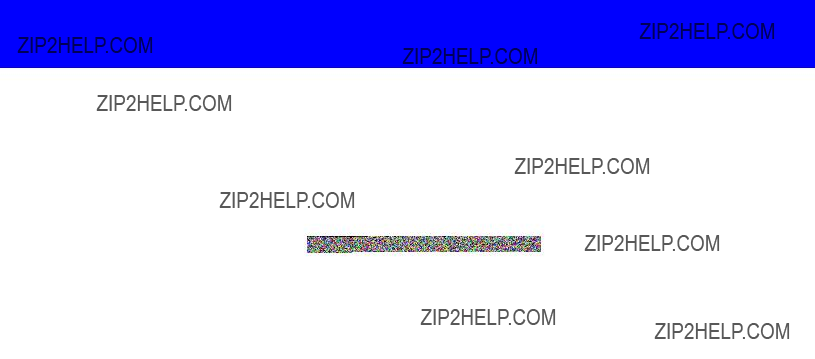
Handling rolls
Handling rolls
 Selecting the Roll as the Paper Source
Selecting the Roll as the Paper Source
You can switch the paper source between the roll and the sheet by pressing the Feeder Selection button. Each time you press this button, the paper source switches between the roll (indicated by the Roll Media lamp ) and the sheet (indicated by the Cut Sheet lamp ).
Press the Feeder Selection button to activate the Roll Media lamp (a).
 Note
Note
???You cannot switch the paper source in the following situations:
???If the Message lamp is ???ashing
Check the message on the Display Screen and take action as necessary. (???P.762)
???If the Data lamp is ???ashing
Select the paper source after printing.
???If a printer menu operation is in progress
Select the paper source after the menu operation.
???When in the process of loading paper
Finish loading the paper before selecting the paper source.
???When in the process of replacing Ink Tanks
Finish replacing the Ink Tanks before selecting the paper source.
???If the Top Cover is open
Close the Top Cover before selecting the paper source.
After you select the roll as the paper source, a message is displayed instructing you to load the roll. At this point, load the roll. (???P.180)
 Note
Note
???If any paper is loaded that will not be used, remove it before loading the roll. (???P.184)
(???P.214)
Handling rolls
 Setting the Roll on the Roll Holder
Setting the Roll on the Roll Holder
 Note
Note
???Printed rolls will not work correctly. Cut away the printed portion before loading the roll.
???For details on supported sizes and types of rolls, see Paper Sizes (???P.173) or the Paper Reference Guide. (???P.167)
???Cut the edge of the roll paper if it is uneven, dirty, or has tape residue.
Uneven, dirty, or sticky edges may cause feeding problems and affect the printing quality.
Be careful not to cut through any barcodes printed on the roll.
??? Wind up the roll so that the edge is even across the roll.
???After pressing the Load/Eject button, you can refer to instructions on the Display Screen as you load the paper.
1.Lift the Holder Stopper lever (a) from the shaft side to unlock it. Holding the Holder Stopper at the position indicated (b), remove it from the Roll Holder.
Handling rolls
2. With the edge of the roll paper facing forward as shown, insert the roll in the Roll Holder from the left. Insert the roll ???rmly until it touches the ???ange (a) of the Roll Holder.
 Important
Important
???Insert the roll ???rmly so that there is no gap between the roll and the ???ange of the Roll Holder. If there is a gap, it may cause feeding problems.
???Set the roll on a table or other ???at surface so that it does not roll or fall. Rolls are heavy, and dropping a roll may cause injury.
???When setting a roll, be careful to avoid hitting the roll holder ???ange hard with the roll. This may damage the Roll Holder.
3.Insert the Holder Stopper from the left in the Roll Holder as shown. Holding it at the position shown (b), push it ???rmly in until the ???ange (a) of the Holder Stopper touches the roll. Lock the Holder Stopper lever (c) by pushing it down toward the shaft side.
Handling rolls
 Removing a Roll from the Roll Holder
Removing a Roll from the Roll Holder
1. Lift the Holder Stopper lever (a) from the shaft side to unlock it. Holding the Holder Stopper at the position indicated (b), remove it from the Roll Holder.
2. Remove the roll from the Roll Holder.
 Important
Important
???After removal, store the roll in the original bag or box, away from high temperature, humidity, and direct sunlight. If paper is not stored properly, the printing surface may become scratched, which may affect the printing quality when you use it again.
Handling rolls
 Loading the Roll in the Printer
Loading the Roll in the Printer
 Note
Note
???Remove any loaded paper that will not be used.
???Roll (???P.184)
???Sheet (???P.214)
???If the Platen is dirty, clean inside the Top Cover. (???P.718)
1.Open the Top Cover and lift the Ejection Guide.
2. With the edge of the roll paper facing forward as shown, insert the Roll Holder shaft (a) into the guide grooves (b) of the Roll Holder Slot on both sides.
 Caution
Caution
???Be careful not to drop a roll and hurt yourself when loading the roll.
???Be careful not to put your ???ngers between the guide grooves (b) and the Roll Holder shaft (a) when loading roll. Otherwise, you may hurt yourself.
Handling rolls
3. Pull out the roll paper evenly on both ends, insert the roll paper in the Paper Feed Slot (a), and advance the roll paper until the roll paper touches the Paper Retainer.
After the paper reaches the Paper Retainer, it is automatically advanced over the Platen.
 Important
Important
???Be careful not to soil the printing surface of roll paper as you insert it in the slot. This may affect the printing quality.
???If the paper is wrinkled or warped, straighten it out before loading it.
???When loading paper that curls easily, lift the Release Lever to manually pull out the roll paper over the Platen.
???Load the roll so that there is no gap between the right edge of the paper and the Roll Holder.
4. Lower the Ejection Guide.
Handling rolls
5. While holding the edge of the roll paper, lift the Release Lever.
6. Hold the roll edge as you gently pull it evenly to the position of the Ejection Guide (a) using the both hands. Align the right side of the roll paper with the Paper Alignment Line (b) so that the paper side is parallel to the line and lower the Release Lever.
 Important
Important
???Be sure to follow steps 5 and 6. If paper cannot be advanced straight or if it wrinkles, it may jam or rub against the Printhead.
???Do not force the roll paper into alignment with the Paper Alignment Line (b). This may prevent the paper from being advanced straight.
 Note
Note
???You can adjust the strength of vacuum holding paper against the Platen when the Release Lever is open. If it is dif???cult to load paper, press the ??? or ??? button on the Control Panel to adjust the strength. Set vacuum stronger by pressing the ??? button or weaker with the ??? button. Three settings are available.
Handling rolls
7. Close the Top Cover.
After you load a roll, the printer automatically shows a menu for selection of the paper type on the Display Screen.
At this point, specify the paper type. (???P.186)
Handling rolls
 Removing the Roll from the Printer
Removing the Roll from the Printer
 Caution
Caution
???If you have activated automatic detection of the remaining roll paper, always follow the steps below to remove rolls. You will be unable to manage the amount of roll paper left if you move the Release Lever and remove the roll before the barcode is printed.
1.Press the Load/Eject button.
A con???rmation message is displayed regarding removal of the roll.
2. Press the OK button.
The roll can now be removed.
 Note
Note
???If you need to cut the roll, execute Paper Cutting on the Control Panel. (???P.191)
???To have a barcode indicating the remaining roll paper printed on the edge of the roll paper, specify
On in Chk Remain.Roll in the Media Menu and Automatic in the Cutting Mode setting in Paper Details.
If the document is not cut but kept in the printer, only the text message is printed. In this case, cut the roll with scissors and remove the sheet.
3. Open the Top Cover and lift the Ejection Guide.

Handling rolls
 Selecting the Paper Type (Roll)
Selecting the Paper Type (Roll)
When changing the type of paper after the paper has been advanced, specify the type of paper as follows.
 Important
Important
???For best printing results, the printer ???ne-tunes the feed amount for each type of paper. Be sure to select the type of paper to use correctly before printing.
???Because the printer ???ne-tunes the feed amount for each type of paper, the margins and the size of printed images may vary depending on the type of paper used. If margins and the size of images are not as you expected, adjust the paper feed amount and Printhead height.
(???P.654)
(???P.653)
 Note
Note
???After you load a roll, the printer automatically shows a menu for selection of the paper type on the Display Screen, unless a barcode has been printed on the roll. Select the type of paper, and then press the OK button.
If no barcode has been printed on the roll and you have activated automatic detection of the remaining roll paper, specify the roll length after the paper type. (???P.187)
1.Press the Menu button to display MAIN MENU.
2. Press ??? or ??? to select Media Menu, and then press the ??? button.
3. Press ??? or ??? to select Roll Media Type, and then press the ??? button.
4. Press ??? or ??? to select the type of paper loaded in the printer, and then press the OK button.
 Note
Note
???For details on types of paper, see the Paper Reference Guide. (???P.167) By factory default, Plain Paper is selected.
???If you move the Release Lever, the setting automatically reverts to the previously selected paper.
???Be sure to select the correct paper type. If this setting does not match the loaded paper, it may cause feed errors and affect the printing quality.
5.Press the Online button to bring the printer online.

Handling rolls
 Specifying the Paper Length (Roll)
Specifying the Paper Length (Roll)
When changing the length of paper after the paper has been advanced, specify the length as follows.
 Note
Note
???When you specify the roll length in the printer menu, Chk Remain.Roll must be set to On. If it is Off, the Roll Length Set menu is not shown.
???After you specify the roll type, the printer automatically shows a menu for selection of the roll length on the Display Screen if no barcode has been printed on the roll and you have activated automatic detection of the remaining roll paper. Select the roll length, and then press the OK button. The printer will automatically go online.
1.Press the Menu button to display MAIN MENU.
2. Press ??? or ??? to select Media Menu, and then press the ??? button.
3. Press ??? or ??? to select Roll Length Set, and then press the ??? button.
4. Press ??? or ??? to select the length of paper loaded in the printer, and then press the OK button. Specify the roll length as follows.
1.Press ??? or ??? to move the cursor (_) to each ???eld for entering numbers.
2.Press the ??? or ??? button to enter the value.
3.Repeat steps 1 and 2 to ???nish entering the value, and then press the OK button.
5.Press the Online button to bring the printer online.
Handling rolls
 Feeding Roll Paper Manually
Feeding Roll Paper Manually
You can bring the printer of???ine by pressing the Online button.
When the printer is of???ine and roll paper is selected as the paper source, you can advance or retract the roll by pressing ??? or ???.
Press ??? to retract the roll manually. Press ??? to advance the roll manually.
If you hold down the ??? or ??? button for less than a second, the roll paper will move about 1 mm (0.039 in). If you hold down ??? or ??? for more than a second, the paper will move until you release the button. Release the button when the Display Screen indicates End of paper feed. Cannot feed paper more.

Handling rolls
 Detection of the Remaining Roll Paper
Detection of the Remaining Roll Paper
If you have activated automatic detection of the remaining roll paper, when the roll is ejected, a barcode with text is printed on the roll paper that identi???es the type of paper and amount left. If this function is activated and barcodes are printed on the roll paper, the type of paper and amount left are automatically detected when you load a
roll. The barcode will be cut off after it has been read.
 Note
Note
???Only the text message is printed if the document is not cut but kept in the printer, or if you are printing on clear ???lm.
Important
??? If the barcode on the roll is not detected, enter the type and length of paper on the Control Panel.
Follow these steps to activate detection of the remaining roll paper.
1. Press the Menu button to display MAIN MENU.
2. Press ??? or ??? to select Media Menu, and then press the ??? button.
3. Press ??? or ??? to select Chk Remain.Roll, and then press the ??? button.
4. Press ??? or ??? to select the desired setting option, and then press the OK button.

Handling rolls
 Cutting the Leading Edge of Roll Paper Automatically
Cutting the Leading Edge of Roll Paper Automatically
If the leading edge of a roll is crooked or warped, it may cause an error message or printing problems. In this case, set Trim Edge First to Automatic or On on the Control Panel to have the printer cut the leading edge to make the edge straight after you load a roll.
Trim Edge First offers the following options.
??? Automatic
If the left and right side of the leading edge of the roll ((a) and (b)) are uneven by 40 mm (1.6 in) or more when you load the roll, the edge is cut an amount relative to the slant to ensure a straight edge, and scraps are removed. The edge is not cut if the unevenness is less than 40 mm. However, paper may sometimes be cut, depending on the state of the leading edge.
??? Off
The edge is not cut and scraps are not removed. This setting is Off for most types of paper, by default. For more information, see the Paper Reference Guide. (???P.167)
??? On
The leading edge is cut off when you load a roll, and scraps are removed. The amount of paper cut off from the leading edge varies depending on the paper type. For more information, see the Paper Reference Guide. (???P.167)
 Note
Note
???If you print on paper that has an irregular width, set Skew Check Lv. to Loose for a higher skew detection threshold or to Off to disable skew detection. However, if paper is loaded askew when detection is Off, note that paper jams or Platen soiling may occur.
Follow these steps to change the Trim Edge First setting.
1. Press the Menu button to display MAIN MENU.
2. Press ??? or ??? to select Paper Details, and then press the ??? button.
3. Press ??? or ??? to select the type of paper, and then press the ??? button.
4. Press ??? or ??? to select Trim Edge First, and then press the ??? button.
5. Press ??? or ??? to select the desired setting option, and then press the OK button. This setting takes effect the next time you load a roll.
Handling rolls
 Specifying the Cutting Method for Rolls
Specifying the Cutting Method for Rolls
How a roll is cut after ejection varies depending on the printer settings.
 Note
Note
???Automatic and Eject are valid only when you have speci???ed Auto Cut > Yes in the printer driver.
???With Eject, printing does not resume after a series of jobs have been printed continuously until the roll is cut.
Cut rolls manually in the following cases:
Handling rolls
Eject (waiting for ink to dry after printing)
 Important
Important
???When cutting wide printed documents after ejection, have two people support the documents. If the paper drops, printed documents may be damaged.
???Do not lift the paper when holding printed documents before cutting. If the paper rises, it may affect the printing quality.
1.Press the Menu button to display MAIN MENU.
2. Press ??? or ??? to select Paper Details, and then press the ??? button.
3. Press ??? or ??? to select the type of paper, and then press the ??? button.
4. Press ??? or ??? to select Cutting Mode, and then press the ??? button.
5. Press ??? or ??? to select Eject, and then press the OK button.
6. Start printing.
Roll paper is fed to the speci???ed cut position and then automatically stopped.
7. As you support the printed document to prevent it from dropping, hold down the Stop button for at least a second to cut the roll.
Handling rolls
Manual (when using media that cannot be cut using the Cutter Unit )
1. Press the Menu button to display MAIN MENU.
2. Press ??? or ??? to select Paper Details, and then press the ??? button.
3. Press ??? or ??? to select the type of paper, and then press the ??? button.
4. Press ??? or ??? to select Cutting Mode, and then press the ??? button.
5. Press ??? or ??? to select Manual, and then press the OK button.
6. Start printing.
The printer stops advancing the paper after printing.
7. Press the Online button.
Roll paper is fed to the speci???ed cut position and then automatically stopped.
8. Cut the roll paper manually with scissors or the like.
9. Press the Online button.
The roll is rewound, and rewinding stops automatically.
Handling rolls
Paper Cutting (to have the roll cut at your speci???ed position)
If the printer stops operating after printing, press the Online button. The printer goes of???ine.
Press ??? or ??? to feed the roll paper to the position for cutting.
Press the Menu button to display MAIN MENU.
4. Press ??? or ??? to select Paper Cutting, and then press the ??? button.
5. Press ??? or ??? to select Yes, and then press the OK button. After the roll paper is cut, it is rewound automatically.
 Caution
Caution
???If paper would be short when cut at a particular position, the roll may automatically be advanced in some cases before cutting.
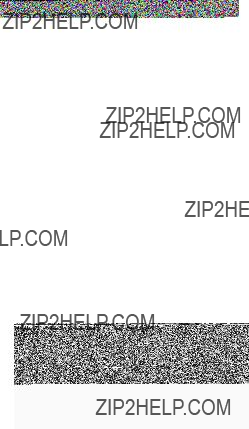
Handling rolls
 Reducing Dust from Cutting Rolls
Reducing Dust from Cutting Rolls
The printer is equipped with a function to reduce cutting dust for media such as Backlit Film that are more likely to generate debris when cut. This may improve printing quality and help prevent Printhead damage. You can set up this function to be activated for some types of paper.
When this function is activated, black lines are printed at the leading and trailing edges of documents.
 Important
Important
???Do not activate this function for paper that wrinkles easily, such as Plain Paper or thin paper. This may impair cutting and cause paper jams.
???Borderless printing is not available when this function is activated. Deactivate this function before borderless printing.
1.Press the Menu button to display MAIN MENU.
2. Press ??? or ??? to select Paper Details, and then press the ??? button.
3. Press ??? or ??? to select the type of paper loaded in the printer, and then press the ??? button.
4. Press ??? or ??? to select CutDustReduct., and then press the ??? button.
5. Press ??? or ??? to select On, and then press the OK button. The function to reduce cutting dust is now activated.
Handling rolls
 Specifying the Ink Drying Time for Rolls
Specifying the Ink Drying Time for Rolls
When you are using paper that takes longer for ink to adhere, if the Cutter touches printed surfaces that are still wet, it may damage the paper or cause rough cut edges. Also, ink may be transferred onto the paper surface during ejection, soiling it. You can prevent problems by adjusting the drying time after printing before the paper is cut.
Windows
1. Display the printer driver dialog box. (???P.204)
2. Select the Main sheet and click C Advanced Settings in A Media Type.
3. In the Media Detailed Settings dialog box displayed next, select C Between Pages and D
Between Scans in B Drying Time, and then click OK.
(???P.206)
Handling rolls
Mac OS X
1. Choose Print in the application menu.
2. Select the Main pane and click C Settings in A Media Type.
3. In the Media Detailed Settings dialog box displayed next, select C Between Pages and D
Between Scans in B Drying Time, and then click OK.
(???P.207)
Handling rolls
Mac OS 9
1. Choose Print in the application menu.
2. Select the Main pane and click D Settings in A Media Type.
3. In the Media Detailed Settings dialog box displayed next, select C Between Pages and D
Between Scans in B Drying Time, and then click OK.
(???P.208)
 Note
Note
???By factory default, Drying Time is deactivated ( Off ) for all paper types.
???To have the printer wait for ink to dry immediately after printing without releasing paper, set Cutting Mode to Eject in the printer menu.
(???P.191)
Handling rolls
 Clearing Jammed Roll Paper
Clearing Jammed Roll Paper
If roll paper jams, follow the steps below to remove jams.
 Caution
Caution
??? Remove any jammed paper promptly.
1.Turn the printer off. (???P.18)
2.Open the Top Cover.
3. If the Carriage is out, move the Carriage to separate it from the paper.
Handling rolls
 Important
Important
???If you push the Carriage to the left edge, the blade of the Cutter Unit will be lowered in preparation to cut the paper. Be careful not to pinch your ???ngers between the Carriage and Platen if you have pushed the Carriage to the left edge or if a paper jam occurs during cutting.
???Do not touch the Linear Scale (a), Carriage Shaft (b), or Fixed Blade (c).
4. Lift the Release Lever.
Handling rolls
5. Holding the paper on both sides, pull the jammed portion out toward the front. Use a scissors or cutting tool to cut away the printed or wrinkled portion.
 Caution
Caution
???When cutting paper, be careful to avoid scratching the printer.
6.If the Carriage is on the left, move the Carriage to the right until it stops.
 Important
Important
???Always move the Carriage to the right side. If the Carriage is on the left, a Carriage error may occur when you turn on the printer.
Handling rolls
7. Hold the edge of the roll paper in the middle as you gently pull it evenly to the position of the Ejection Guide (a). Align the right side of the roll paper with the Paper Alignment Line (b), keeping this side parallel to the line, and then lower the Release Lever.
 Important
Important
???Do not force the roll paper into alignment with the Paper Alignment Line (b). This may prevent the paper from being advanced straight.
???If you pull out too much of the roll, an excessive amount will be cut away.
8.Close the Top Cover.
9. Turn the printer on. (???P.18)
The roll is now advanced. After it is ???nished being advanced, you can resume printing.
 Note
Note
???You can ensure that the edge is cut neatly by following the steps below.
1.Press the Online button to bring the printer of???ine.
2.Hold down the ??? button to advance the paper.
3.Set Paper Cutting to Yes in the printer menu to cut the edge. (???P.191)
Handling rolls
 Roll Holder Set
Roll Holder Set
A set of parts comprising the Roll Holder and Holder Stopper. If you want to prepare a few rolls with paper of various types and widths for different purposes, it is convenient to have several sets ready. Sets are available for 2- and 3-inch paper cores. (2-inch versions match the set included with the printer.)
??? Roll Holder Set RH2-63 (for 2-inch paper cores)
??? Roll Holder Set RH3-63 (for 3-inch paper cores): Optional
Handling rolls
 Accessing the Printer Driver Dialog Box from the Operating System Menu (Windows)
Accessing the Printer Driver Dialog Box from the Operating System Menu (Windows)
1. Click start > Printers and Faxes (or Printers ).
2. Select the printer, and then display the printer properties dialog box.
3. Click Printing Preferences to display the Printing Preferences dialog box, titled with the name of this printer.
Handling rolls
Six sheets of print settings are displayed by the printer driver: Main, Page Setup, Layout,
Favorites, Utility, and Support.
 Important
Important
???If you access the printer driver dialog box from the operating system menu, changes you make to the settings will apply to all applications you use for printing.
???You can also access the printer driver dialog box from applications.
see ???Accessing the Printer Driver Dialog Box from Applications (Windows)???. (???P.538)
Handling rolls
 Media Detailed Settings Dialog Box (Windows)
Media Detailed Settings Dialog Box (Windows)
The Media Detailed Settings dialog box offers the following settings. For details on settings items, refer to the printer driver help.
 Note
Note
???To display the Media Detailed Settings dialog box, on the Main Sheet (Windows) (???P.515) , click
Settings by Media Type.
Handling rolls
 Media Detailed Settings Dialog Box (Mac OS X)
Media Detailed Settings Dialog Box (Mac OS X)
The Media Detailed Settings dialog box offers the following settings. For details on settings items, refer to the printer driver help.
 Note
Note
???To display the Media Detailed Settings dialog box, on the Main Pane (Mac OS X) (???P.564) , click
Settings by Media Type.
Handling rolls
 Media Detailed Settings Dialog Box (Mac OS 9)
Media Detailed Settings Dialog Box (Mac OS 9)
The Media Detailed Settings dialog box offers the following settings. For details on settings items, refer to the printer driver help.
 Note
Note
???To display the Media Detailed Settings dialog box, on the Main Pane (Mac OS 9) (???P.587) , click
Settings by Media Type.

Handling sheets for paper feed slots
Handling sheets for paper feed slots
 Selecting the Sheet as the Paper Source
Selecting the Sheet as the Paper Source
You can switch the paper source between the roll and the sheet by pressing the Feeder Selection button. Each time you press this button, the paper source switches between the roll (indicated by the Roll Media lamp ) and the sheet (indicated by the Cut Sheet lamp ).
1. Press the Feeder Selection button to activate the Cut Sheet lamp (a).
 Caution
Caution
???Paper jams may occur if you load paper other than the paper speci???ed in the paper settings for the media source. If you insert the edge of a roll in the Paper Feed Slot after you have selected sheets as the type of paper in the media source on the Control Panel and speci???ed the type and size of paper, the printer will prepare to print on the roll. If you print under these conditions, an error will occur when the roll is ejected. (???P.772)
 Note
Note
???You cannot switch the paper source in the following situations:
???If the Message lamp is ???ashing
Check the message on the Display Screen and take action as necessary. (???P.762)
???If the Data lamp is ???ashing
Select the paper source after printing.
???If a printer menu operation is in progress
Select the paper source after the menu operation.
2.Remove any loaded paper that will not be used. (???P.214)
 Note
Note
???If a roll is loaded, the roll paper is automatically ejected.
After you select the sheet as the paper source, a message is displayed instructing you to load the sheet. At this point, load the sheet. (???P.210)
Handling sheets for paper feed slots
 Loading the Sheet in the Printer
Loading the Sheet in the Printer
 Note
Note
???For details on supported types and sizes of the paper, see Paper Sizes (???P.173) or the Paper Reference Guide. (???P.167)
???Loading a sheet while a roll remains loaded may cause paper jams. We recommend removing the roll if you will load a sheet. (???P.184)
To prevent the roll from unwinding if you leave it loaded, wrap a sheet of paper around the roll and tape it to fasten it.
???If the Platen is dirty, clean inside the Top Cover. (???P.718)
???After pressing the Load/Eject button, you can refer to instructions on the Display Screen as you load the paper.
1.If you send a print job from a computer beforehand, the type and size of paper are shown on the Display Screen. Lift the Release Lever and open the Top Cover.
Handling sheets for paper feed slots
Important
??? Do not touch the Linear Scale (a), Carriage Shaft (b), or Fixed Blade (c).
2. With a sheet lengthwise and printing-side up, insert it between the Platen (a) and the Paper Retainer (b). Align the edges of the sheet as follows.
1.Align the sheet with the Paper Alignment Line (c) at right.
2.Align the inserted edge of the sheet with the leading edge of the Paper Alignment Line (d), as shown.
When inserted, sheets are automatically held by suction against the Platen.
 Important
Important
???Load a sheet so that it is parallel to the Paper Alignment Line (c). Loading paper askew will cause an error.
???Warped paper may rub against the Printhead. Straighten paper if it is warped before loading it.
???If the sides of the sheet are not perpendicular at the corners, the sheet may not be advanced straight.

Handling sheets for paper feed slots
 Note
Note
???You can adjust the strength of vacuum holding paper against the Platen when the Release Lever is up. If it is dif???cult to load paper, press the ??? or ??? button on the Control Panel to adjust the strength. Increase the vacuum by pressing the ??? button or decrease it with the ??? button. Three levels are available.
However, even if you increase the vacuum, it may not be suf???cient to hold some types of paper against the Platen well. In this case, use your hand to load the paper.
???A sheet is held in place by vacuuming through holes on the Platen. Although the vacuuming may produce a noise when paper is loaded in some positions, it does not indicate a problem. If the noise is distracting, try moving the paper over slightly to the left or right (up to 1 mm [0.039 in]) while keeping it parallel to the Paper Alignment Line.
???The vacuum remains on for about 30 seconds during loading. If you cannot ???nish loading a sheet during this time, pull the sheet away and reinsert it to start the vacuum suction again.
3.Lower the Release Lever and close the Top Cover.
The printer now starts feeding the paper.
After the paper is advanced, the printer automatically goes online and starts printing.
If no print job has been received from the computer beforehand, the printer automatically shows a menu for selection of the paper type on the Display Screen.
In this case, select the type of paper. (???P.213)
 Note
Note
???When using the Output Stacker, if you will print on large, stiff sheets, we recommend adjusting the Output Stacker into the lowest position to prevent printed sheets from being bent (???P.220)
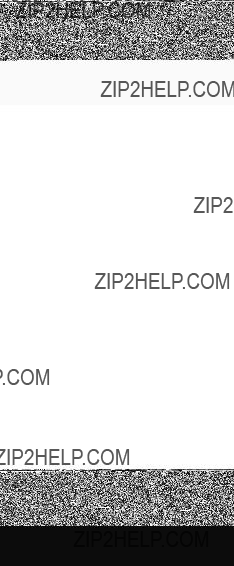
Handling sheets for paper feed slots
 Selecting the Paper Type (Sheet)
Selecting the Paper Type (Sheet)
When changing the type of paper after the paper has been advanced, specify the type of paper as follows.
 Note
Note
???After you load the sheet, the printer automatically shows a menu for selection of the paper type on the Display Screen. In this case, select the paper type, and then press the OK button. The printer will automatically go online.
1.Press the Menu button to display MAIN MENU.
2. Press ??? or ??? to select Media Menu, and then press the ??? button.
3. Press ??? or ??? to select Cut Sheet Type, and then press the ??? button.
4. Press ??? or ??? to select the type of paper loaded in the printer, and then press the OK button.
 Note
Note
???For details on paper types, see the Paper Reference Guide. (???P.167) Plain Paper is selected by factory default.
If you move the Release Lever, the setting automatically reverts to Plain Paper.
???Be sure to select the correct paper type. If this setting does not match the loaded paper, it may cause feed errors and affect the printing quality.
???If you select a type of paper for which Media Width Detection is deactivated ( Off is selected), you must advance the paper manually to the position for printing. (???P.148)
5.Press the Online button to bring the printer online.
Handling sheets for paper feed slots
 Removing the Sheet
Removing the Sheet
1. Press the Load/Eject button.
 Note
Note
???Paper cannot be ejected by using the Load/Eject button when print jobs are in progress or during the ink drying period. Before ejecting paper, press the Stop button to cancel printing, print job processing, or ink drying.
2.Press the OK button to eject the paper.
The paper is ejected from the front of the printer.
3.Open the Top Cover, lift the Release Lever, and remove the paper.
4. Lower the Release Lever and close the Top Cover.
Handling sheets for paper feed slots
 Clearing a Jammed Sheet
Clearing a Jammed Sheet
If a sheet jams, follow the steps below to remove it.
 Caution
Caution
??? Remove any jammed paper promptly.
1.Turn the printer off. (???P.18)
2.Open the Top Cover.
3. If the Carriage is out, move the Carriage to separate it from the paper.
Important
??? Do not touch the Linear Scale (a), Carriage Shaft (b), or Fixed Blade (c).
Handling sheets for paper feed slots
4. Lift the Release Lever.
5. If the paper is visible, grasp the paper and pull it forward.
6. If the paper is not visible, lift the Ejection Guide, remove the Roll Holder, and remove the jammed paper from below.
After removing the paper, make sure there are no other scraps of paper in the printer, and lower the Ejection Guide.
Handling sheets for paper feed slots
7. If the Carriage is on the left, move the Carriage to the right until it stops.
 Important
Important
???Always move the Carriage to the right side. If the Carriage is on the left, a Carriage error may occur when you turn on the printer.
8.Lower the Release Lever and close the Top Cover.
9. Turn the printer on. (???P.18)

Handling sheets for paper feed slots
 Manually Loading Paper to the Position for Printing
Manually Loading Paper to the Position for Printing
After loading sheets, if you select a type of paper in the printer menu with width detection deactivated, you will need to feed the paper a different way than usual. Speci???cally, you must manually advance the paper to the position of printing.
In this case, advance the paper as far into the paper feed slot as possible because it will be printed starting at that position.
Manually advance paper as follows.
1. When Width Detection OFF. OK to continue? is shown on the Display Screen, press ??? or ??? to select Leave OFF and then press the OK button.
If you select Width Detection ON, change the Media Detailed Settings information for that paper and use the regular feeding method.
2. Keeping the right edge of the sheet aligned with the extended line of the paper alignment line (a) on the right side of the printer, load the sheet so that the near edge is aligned with the groove (b) at the far end of the platen.
3. Check the position of the loaded paper and press the OK button.
4. After a menu for selection of the paper size is shown on the Display Screen, press ??? or ??? to select the paper size, and then press the OK button.
Note
??? If a print job received requires paper larger than the selected paper, it may soil the Platen.
Output Stacker
Output Stacker
 Output Stacker
Output Stacker
A cloth tray that catches ejected documents. (Optional)
??? Output Stacker BU-01
For instructions on installing the Output Stacker, refer to the Quick Start Guide.

Output Stacker
 Using the Output Stacker
Using the Output Stacker
The Output Stacker can be installed at four positions, as shown.
???When storing printed documents on the Output Stacker Use position (1).
???When the Output Stacker is not used Use position (2).
???When the Media Take-up Unit is used, or when the Output Stacker is stored for long periods Lower it to position (3) for storage. (???P.225)
When using the Output Stacker again after storage, reattach the Basket Rod on the front of the Output Stacker to the tips of the left and right Basket Arms and pull the side rods out completely.
???When printing on large, stiff sheets Use position (3).
Set it to position (4) for large-format printing or when printing on delicate paper. (???P.222)
 Important
Important
???When storing printed documents on the Output Stacker, always use it in position (1). If you do not, printed documents may not be dropped into the Output Stacker, and the printed surface may become soiled.
???The Output Stacker can hold one sheet. When printing multiple pages, remove each sheet after it is printed.
???Before using the Output Stacker, remove the Rewind Spool. If you do not, it may prevent printed documents from being held correctly, and it they may be scratched.
Output Stacker
The Output Stacker locks into position if you lift it to position (1) or (2). To lower the Output Stacker, lift the front Basket Rod lightly to release the lock, and then lower the stacker.

Output Stacker
Using the Output Stacker in the position for ejection in the front of the printer
You can also set the Output Stacker to the following position for large-format printing or when printing on delicate paper.
 Note
Note
???Always choose Cutting Mode > Eject when the Output Stacker is in the position for ejection in the front of the printer. If you choose Automatic, printed documents may be damaged. (???P.191)
???During ejection in the front of the printer, be especially careful when using delicate paper or paper that curls easily.
???With some types of paper, the leading edge may curl or bend during ejection. In this case, straighten out the paper. Printed documents may be damaged if the paper is curled or bent.
???Some types of paper may get caught between the Ejection Guide and Output Stacker during ejection. In this case, free the paper from where it is caught. Printed documents may be damaged if the paper gets caught.
1.Lift the Basket Rod gently to release the lock, lower the stacker toward the front, and push it all the way back.
Output Stacker
2. Remove the Output Stacker from the printer.
Remove the front Basket Rod from the left and right Basket Arms, and remove the back Basket Rod and the black cord from the Rod Holder.
3. Store the left and right Basket Arms. Next, remove the Rod Holder Adapter, leaving the Rod Holder attached, and put it in front of the printer.
Output Stacker
4. Pull out the Basket Hooks from the left and right side of the Ejection Guide.
5. Attach the Basket Rod to the Basket Hooks so that the white tag of the Basket Cloth is on the left side.
6. Form the Basket Cloth into a sloping shape to make it taut, and attach the middle Basket Rod to the Rod Holder.
Output Stacker
 Stowing the Output Stacker
Stowing the Output Stacker
Stow the Output Stacker if you will use the Media Take-up Unit or if you will not use the Output Stacker for an extended period.
1. When the Output Stacker is in the position used when storing printed documents (a), lift the front Basket Rod gently to release the lock, lower the stacker toward the front (b), and push it all the way back.
2. Remove the front Basket Rod from the left and right Basket Arms. Roll up the Basket Cloth and put it at the back of the Bottom Stand Stay.
Important
??? Arrange the Basket Cloth and Basket Rod so they do not interfere with the Media Take-up Sensor.
Output Stacker
3. Push in the left and right Basket Arms toward the back all the way, until they stop.
Media take-up unit
Media take-up unit
 Media Take-up Unit
Media Take-up Unit
Use the Media Take-up Unit to have documents that are printed on rolls rewound automatically after printing. This is convenient for large-format printing, or when printing large-volume jobs continuously.
 Note
Note
???For instructions on installing the Media Take-up Unit, refer to the Quick Start Guide.
???For information on the types of paper compatible with the Media Take-up Unit, refer to the Paper Reference Guide. (???P.167)
???For Media Take-up Unit instructions, see ???Using the Media Take-up Unit???. (???P.228)
Media take-up unit
 Using the Media Take-up Unit
Using the Media Take-up Unit
1. Turn the printer on. (???P.18)
2. Enable the Media Take-up Reel function. (???P.229)
3. Load the Rewind Spool on the Media Take-up Unit. (???P.230)
4. Turn the Media Take-up Unit on.
5. Print on the roll.
6. Turn the Media Take-up Unit off.
7. Remove the printed document from the Media Take-up Unit. (???P.237)
8. Disable the Media Take-up Unit function. (???P.229)
 Important
Important
???The Media Take-up Unit cannot be used with sheets.
???If you have attached the Output Stacker, always stow it before using the Media Take-up Unit. (???P.225) Arrange the Basket Cloth and Basket Rod so they do not interfere with the Media Take-up Sensor.
???Do not put anything near the Media Take-up Sensor that might interfere with it. This may impair operation.
???Rolls are not cut automatically when the Media Take-up Unit is used, regardless of the Cutting Mode setting in the printer menu or the Automatic Cutting setting in the printer driver.
???Color tones after printing may change during the ink drying period for some types of paper. Allow ample drying time before the ???nal check of color tones, and do not remove printed documents from the Media Take-up Unit too soon.
???In humid environments, documents with heavy ink coverage printed on thin Coated Paper may not be retracted evenly by the Media Take-up Unit. In this case, take steps to control humidity in the operating environment or adjust the Roll DryingTime setting so that printed documents are handled after the ink has fully dried.
???In humid environments, documents printed on Fabric Banner and Synthetic Paper may not be retracted evenly by the Media Take-up Unit. In this case, take steps to control humidity in the operating environment or adjust the Roll DryingTime setting so that printed documents are handled after the ink has fully dried.
Media take-up unit
 Enabling the Take-Up Reel Function
Enabling the Take-Up Reel Function
1. Press the Menu button to display MAIN MENU.
2. Select Take-up Reel ??? Enable and press the OK button.
 Disabling the Take-Up Reel Function
Disabling the Take-Up Reel Function
1. Press the Menu button to display MAIN MENU.
2. Press ??? or ??? to select Take-up Reel, and then press the ??? button.
3. Press ??? or ??? to select Disable, and then press the OK button.
4. Press ??? twice, press ??? or ??? to select Paper Cutting, and then press the ??? button.
5. Press ??? or ??? to select Yes, and then press the OK button. The printer switches from take-up mode to regular mode.
 Note
Note
???Without executing Paper Cutting, you can switch to regular mode from take-up mode by lifting the Release Lever, cutting the roll with scissors, and removing the paper.
Media take-up unit
 Loading the Rewind Spool on the Media Take-up Unit
Loading the Rewind Spool on the Media Take-up Unit
1. When using the Output Stacker, stow the Output Stacker before this procedure. (???P.225)
 Important
Important
???Arrange the Basket Cloth and Basket Rod so they do not interfere with the Media Take-up Sensor.
???Do not put anything in front of the Media Take-up Sensor that might interfere with it. This may impair operation.
2.Unlock the ???ange on the left side of the Rewind Spool by lifting the lever (a) from the shaft side. Remove the ???ange.
3. When rewinding rolls with 3-inch paper cores, insert the 3-inch Adapter on the ???anges at both ends.
4. Insert the paper core, which serves as the spindle for rewinding a roll, on the Rewind Spool.
Important
??? On the Rewind Spool, always use a paper core that is the same size as the roll to be rewound.
Media take-up unit
5. Push the ???anges in ???rmly until the paper core is secured in place and push down the lever
(a) toward the shaft.
 Important
Important
???After pushing in the ???anges ???rmly, make sure the paper core is secure and does not move around. Move the paper core left and right. If there is a gap between the ???anges and paper core, repeat steps 2-4.
6.Load the Rewind Spool on the Media Take-up Unit so that the gear of the Rewind Spool (a) meshes with the gear of the Right Media Take-up Unit (b).
 Important
Important
???If you attempt to load the Rewind Spool with the left and right ends inverted by mistake, the Media Take-up Unit cannot be turned on.
???If the gear of the Rewind Spool (a) does not mesh with the gear of the Right Media Take-up Unit (b), the Media Take-up Unit cannot be turned on.
7.Press the Menu button to display MAIN MENU.
Media take-up unit
8. Press ??? or ??? to select Media Menu, and then press the ??? button.
9. Press ??? or ??? to select Yes, and then press the OK button. The roll is now advanced to the Media Take-up Unit.
10. Hold the roll paper by the middle of the leading edge and align the right edge with the right edge of the paper core of the Rewind Spool. With the left and right edges of the roll paper evenly taut, tape the middle to the paper core to fasten it.
11. Making sure the roll paper is not slack, tape the left and right side of the leading edge to the paper core.
Note
??? When rewinding heavyweight paper, use strong adhesive tape to fasten it.
Media take-up unit
12. Press the Online button to bring the printer of???ine, and then press ??? to loosen the tension of the roll.
13. On the Right Media Take-up Unit, pull the Rewind Mode Switch forward to turn it on. Press
??? to rewind the roll so that it is nearly taut.
 Important
Important
???Rewind the paper so that the paper core makes at least two revolutions. If the paper is not rewound two full revolutions, repeat steps 11 and 12.
???Do not manually force the Rewind Spool or paper core to rotate them. This may damage them. To rewind or unwind rolls, press ??? or ??? on the Media Take-up Unit.
Media take-up unit
14. You can unwind rolls by holding down ??? on the Control Panel.
15. Use a combination of Weight Roll, Weight Joint, and Weight Flange that matches the roll type and width.
The following list identi???es Weight Roll and Weight Flange you can use. Color Label is applied to each Weight Roll.
Weight Roll
*1: If you cannot retract stiff paper well using Weight Flange 1 or if the diameter of the retracted paper is wider than the Rewind Spool, use Weight Flange 2. When using Weight Flange 2, adjust the paper feed amount by executing Auto Band Adj. (???P.654)
 Note
Note
???Do not use combinations other than those identi???ed here.
???Insert the Weight Flange and Weight Joint ???rmly on the Weight Roll.
???Use identical Weight Flanges on the left and right ends. Insert matching Weight Flanges (1 or 2) on both ends of the Weight Roll.
???Keep unused Weight Roll, Weight Joint, and Weight Flange handy by putting them in the box and putting the box under the Stand.
16.Set the Weight Roll gently on top of the slack in the roll paper.
 Important
Important
???Always set the Weight Roll on the paper. Failure to do this may cause rewinding problems.
???When setting the Weight Roll on the paper, avoid touching the paper core and causing the wound roll to become out of alignment on the left and right end.
Media take-up unit
17. Press the Online button to bring the printer online.
The Media Take-up Unit is now ready for use. Printed rolls can now be rewound automatically.
 Note
Note
???When the Media Take-up Unit is in use, an icon indicating the take-up mode is shown on the Display Screen.
Media take-up unit
 Removing Printed Documents from the Media Take-up Unit
Removing Printed Documents from the Media Take-up Unit
1. Press the Online button to bring the printer of???ine.
2. Hold down the ??? button to advance the roll a little.
To protect the paper that has been rewound, advance it an amount longer than the outer circumference.
3. Remove the Weight Roll from the roll paper.
4. Press the Menu button to display MAIN MENU.
Media take-up unit
5. Press ??? or ??? to select Paper Cutting, and then press the ??? button.
6. Press ??? or ??? to select Yes. As you hold the trailing edge of the printed document, press the
OK button.
The roll is now cut.
 Important
Important
???Always hold the trailing edge of printed documents when cutting rolls. If you do not hold the documents, they may fall on the ???oor and the printed surface may become soiled.
7.Hold the trailing edge of the printed document and press the ??? button on the Media Take-up Unit to rewind the printed documents.
Apply adhesive tape to the rewound paper to hold it in place, if necessary.
 Important
Important
???Be careful not to scratch the printed surface.
8.Turn off the Media Take-up Unit by pushing in the Rewind Mode Switch.
Media take-up unit
9. Remove the Rewind Spool from the Media Take-up Unit.
 Important
Important
???Always turn off the Media Take-up Unit before removing the Rewind Spool. The Media Take-up Unit may be damaged if you do not turn it off ???rst.
???Remove the Rewind Spool, pulling off both ends from the Media Take-up Unit at once.
10.Unlock the ???ange on the left side of the Rewind Spool by lifting the lever (a) from the shaft side. Remove the ???ange.
11. Remove the entire paper core with the rewound printed documents from the Rewind Spool.
 Note
Note
???You can leave the Rewind Spool on the Media Take-up Unit even when it is not used for rewinding rolls.

Print quality and color settings
Enhanced Printing Options
Print quality and color settings
 Choosing a Paper for Printing
Choosing a Paper for Printing
Choosing the right paper for your particular printing application will give you the best printing results.
Media type
The printer and printer driver offer print settings optimized for various paper characteristics.
 Note
Note
???For information on the types of paper the printer supports, refer to the Paper Reference Guide. (???P.167)
???The paper type setting in the printer driver and related software (as well as on the Control Panel ) is updated when you install the Media Con???guration Tool from the User Software CD-ROM or if you change paper information by using the Media Con???guration Tool. For information about the Media Con???guration Tool, see the Media Con???guration Tool Guide (Windows) or Media Con???guration Tool Guide (Macintosh).
???An error message is displayed on the printer Control Panel if the paper type as speci???ed in the printer driver does not match the type speci???ed on the printer. Although you can print under these conditions, the printing results may not be suitable.
If the paper type is not listed for selection
If the type of paper loaded cannot be selected, try specifying glossy paper or proo???ng paper as a special paper (Special 1 to Special 5, in this order). BK ( Black Ink ) is used as the black ink. Try specifying other types of paper as Special 6 to Special 10. MBK ( Matte Black Ink ) is used as the black ink. Note that higher numbers in this setting enable more vivid colors but may also cause colors to run together.
For instructions on specifying the paper type before printing, refer to the following topics, as appropriate for your computer and operating system.
???Selecting the Paper Type (Roll) (???P.186)
???Selecting the Paper Type (Sheet) (???P.213)
240 Enhanced Printing Options
Print quality and color settings
 Giving Priority to Particular Graphic Elements and Colors for Printing
Giving Priority to Particular Graphic Elements and Colors for Printing
You can specify detailed print settings as desired for the quality level, colors, and other criteria.
Advanced Settings
For printing results that appear just as expected for your original, you can specify which graphic elements and colors to prioritize for printing.
 Note
Note
???Easy Settings are also available, providing convenient presets. To use the presets, simply choose the printing application.
For details on Easy Settings, refer to the following topics.
???Printing Photos and Images (Windows, Mac OS X) (???P.245)
???Printing Photos and Images (Mac OS 9) (???P.247)
???Printing Line Drawings and Text (Windows, Mac OS X) (???P.249)
???Printing Line Drawings and Text (Mac OS 9) (???P.250)
???Printing Of???ce Documents (???P.251)
Print Priority
Choose the graphic elements that you want to emphasize for printing.
*1: Options suitable for the selected paper type are listed under Print Priority.
Enhanced Printing Options 241
Print quality and color settings
Print Quality
Choose the print quality.
The printing mode is determined by a combination of the print quality and resolution.
*1: Options suitable for the selected Print Priority are listed under Print Quality.
242 Enhanced Printing Options
*1: Options suitable for the selected Print Priority are listed under Color Mode.
*2: The order of options displayed varies depending on the operating system.
*3: Adobe RGB is not available if an incompatible combination of the paper type and print quality is selected.
Enhanced Printing Options 243
Print quality and color settings
Enhancing Printing Quality
???To print at a higher level of quality, in the printer driver, choose High or Highest in Print Quality, and choose Unidirectional Printing as the direction of printing.
???For instructions on specifying the print quality and color settings before printing, refer to the following topics, as appropriate for your computer and operating system.
???Choosing the Document Type and Printing Conditions (Windows) (???P.258)
???Choosing the Document Type and Printing Conditions (Mac OS X) (???P.260)
???Choosing the Document Type and Printing Conditions (Mac OS 9) (???P.263)
244 Enhanced Printing Options
Print quality and color settings
 Printing Photos and Images (Windows, Mac OS X)
Printing Photos and Images (Windows, Mac OS X)
Printing is easy when you simply choose the print target.
Easy Settings
Simply choose the printing application in the list for optimal printing results.
Print Target
Choose presets that match the type of document to be printed.
Print targets for photos and images
Enhanced Printing Options 245
Print quality and color settings
Caution
??? Depending on the Media Type setting, some Print Target options may not be available.
 Note
Note
???You can check the settings values for each print target by clicking View Settings.
???You can also ???ne-tune these values as needed. (Advanced Settings)
For details on Advanced Settings, see ???Giving Priority to Particular Graphic Elements and Colors for Printing???. (???P.241)
???For instructions on printing photos and images, refer to the following topics, as appropriate for your computer and operating system.
???Printing Photos and Images (Windows) (???P.296)
???Printing Photos and Images (Mac OS X) (???P.298)
246 Enhanced Printing Options
Print quality and color settings
 Printing Photos and Images (Mac OS 9)
Printing Photos and Images (Mac OS 9)
Printing is easy when you simply choose the print target.
Easy Settings
Simply choose the printing application in the list for optimal printing results.
Print Target
Choose presets that match the type of document to be printed.
Print targets for photos and images
Enhanced Printing Options 247
Print quality and color settings
Caution
??? Depending on the Media Type setting, some Print Target options may not be available.
 Note
Note
???You can check the settings values for each print target by clicking View Settings.
???You can also ???ne-tune these values as needed. (Advanced Settings)
For details on Advanced Settings, see ???Giving Priority to Particular Graphic Elements and Colors for Printing???. (???P.241)
???For instructions on printing photos and images, refer to the following topics, as appropriate for your computer and operating system.
???Printing Photos and Images (Mac OS 9) (???P.247)
248 Enhanced Printing Options
Print quality and color settings
 Printing Line Drawings and Text (Windows, Mac OS X)
Printing Line Drawings and Text (Windows, Mac OS X)
Printing is easy when you simply choose the type of original to print.
Easy Settings
Simply choose the printing application in the list for optimal printing results.
Print Target
Choose presets that match the type of document to be printed.
Print targets for line drawings and text
 Note
Note
???You can check the settings values for each print target by clicking View Settings.
???You can also ???ne-tune these values as needed. (Advanced Settings)
For details on Advanced Settings, see ???Giving Priority to Particular Graphic Elements and Colors for Printing???. (???P.241)
For instructions on printing line drawings and text, refer to the following topics, as appropriate for your computer and operating system.
???Printing Line Drawings and Text (Windows) (???P.283)
???Printing Line Drawings and Text (Mac OS X) (???P.285)
Enhanced Printing Options 249
Print quality and color settings
 Printing Line Drawings and Text (Mac OS 9)
Printing Line Drawings and Text (Mac OS 9)
Printing is easy when you simply choose the type of original to print.
Easy Settings
Simply choose the printing application in the list for optimal printing results.
Print Target
Choose presets that match the type of document to be printed.
Print targets for line drawings and text
 Note
Note
???You can check the settings values for each print target by clicking View Settings.
???You can also ???ne-tune these values as needed. (Advanced Settings)
For details on Advanced Settings, see ???Giving Priority to Particular Graphic Elements and Colors for Printing???. (???P.241)
For instructions on printing line drawings and text, refer to the following topics, as appropriate for your computer and operating system.
??? Printing Line Drawings and Text (Mac OS 9) (???P.250)
250 Enhanced Printing Options
Print quality and color settings
 Printing Of???ce Documents
Printing Of???ce Documents
Printing is easy when you simply choose the type of original to print.
Easy Settings
Simply choose the printing application in the list for optimal printing results.
Print Target
Choose presets that match the type of document to be printed.
Print targets for of???ce documents
 Note
Note
???You can check the settings values for each print target by clicking View Settings.
???You can also ???ne-tune these values as needed. (Advanced Settings)
For details on Advanced Settings, see ???Giving Priority to Particular Graphic Elements and Colors for Printing???. (???P.241)
For instructions on printing of???ce documents, refer to the following topics, as appropriate for your computer and operating system.
???Printing Of???ce Documents (Windows) (???P.290)
???Printing Of???ce Documents (Mac OS X) (???P.292)
???Printing Of???ce Documents (Mac OS 9) (???P.294)
Enhanced Printing Options 251
Print quality and color settings
 Adjusting the Color in the Printer Driver
Adjusting the Color in the Printer Driver
Color settings speci???ed in the application for your documents are essentially given priority over other settings for each print job, but further color adjustment is possible in the printer driver.
Color Mode
Choose how the printer driver processes color, as desired.
The available options vary depending on the color mode.
Color Adjustment
You can adjust colors separately for images, graphics, and text documents.
252 Enhanced Printing Options
Print quality and color settings
Matching
You can choose the color-matching mode and method.
By adjusting the color-matching mode and method, you can make printed colors match the colors of on-screen images more closely.
Enhanced Printing Options 253
Print quality and color settings
254 Enhanced Printing Options
Print quality and color settings
Gray Adjustment
The following settings can be adjusted if ???Monochrome (Photo)??? is selected in Color Mode.
 Note
Note
???Be sure to calibrate your monitor colors correctly if you adjust the colors for printing. If monitor colors are not calibrated correctly, you may not obtain the desired printing results. For instructions on monitor calibration, refer to the documentation for your monitor and operating system.
For instructions on color adjustment, refer to the following topics, as appropriate for your computer and operating system.
???Fine-Tuning Colors of Photos and Images (Windows) (???P.266)
???Fine-Tuning Colors of Photos and Images (Mac OS X) (???P.269)
???Fine-Tuning Colors of Photos and Images (Mac OS 9) (???P.272)
Enhanced Printing Options 255
Print quality and color settings
 Printing in Ideal Colors for Light in the Viewing Environment
Printing in Ideal Colors for Light in the Viewing Environment
You can print in the colors that look best when viewed under the light where the printed image will be displayed. There are two ways to adjust the color tone for the ambient light, as follows.
By selecting color tones on Charts before printing
On the printed Chart, note the number of the set of colors with the desired color tone and enter this number in the printer driver before printing.
 Important
Important
???This function requires that the Light Source Check Tool be installed.
???You can install the Light Source Check Tool from the User Software CD-ROM.
???This function is only supported in Windows.
For instructions on selecting color tones on Charts before printing, refer to the following topic:
??? By selecting color tones on Charts before printing (Windows) (???P.667)
Printing in Colors Matching the Measured Ambient Light
Measure the light level in the viewing environment and enter the results in the printer driver before printing.
 Important
Important
???This function requires the Eye-One spectrophotometer. The Light Source Measure Tool must also be installed.
???You can install the Light Source Measure Tool from the User Software CD-ROM.
???For a list of supported Eye-One devices, refer to the manual provided with the Light Source Measure Tool.
???This function is only supported in Windows.
For instructions on measuring light levels before printing, refer to the following topic:
??? Printing in Colors Matching the Measured Ambient Light (???P.671)
256 Enhanced Printing Options
Print quality and color settings
 Printing Photos in Monochrome
Printing Photos in Monochrome
The following settings are available for monochrome printing.
Monochrome Deactivates color printing so that images are printed in monochrome, with continuous-tone color data printed using gray midtones. Use this mode to print of???ce documents or graphics in monochrome, or if the paper is not compatible with the Monochrome (Photo) setting.
???Even more detailed adjustment is possible on the Color Adjustment sheet.
???If the paper is not compatible with the Monochrome (Photo) setting, choose Monochrome .
???Becausecolorinkisusedtoproducegraycontinuous-tone
images, the gray may appear to have a tinge of color. Fine-Tuning Monochrome Settings When Printing Photos (Windows) (???P.275)
Fine-Tuning Monochrome Settings When Printing Photos (Mac OS X) (???P.277)
Fine-Tuning Monochrome Settings When Printing Photos (Mac OS 9) (???P.280)
Enhanced Printing Options 257
Print quality and color settings
 Choosing the Document Type and Printing Conditions
Choosing the Document Type and Printing Conditions
(Windows)
You can specify your own print settings instead of using the Print Target presets. This topic describes how to print CAD drawings in monochrome.
1. Choose Print in the application menu.
2. Select the printer in the dialog box, and then display the printer driver dialog box. (???P.538)
3. Make sure the Main sheet is displayed.
4. In the A Media Type list, select the type of paper that is loaded.
5. Click D Advanced Settings to switch the print mode.
258 Enhanced Printing Options
Print quality and color settings
6. Click Line Drawing/Text in the E Print Priority list.
7. Click Standard (600dpi) in the F Print Quality list.
 Note
Note
???Options displayed in the F Print Quality list vary depending on the paper type.
8.Click Monochrome in the G Color Mode list.
9.To adjust the brightness and contrast, click H Color Settings.
 Note
Note
???For instructions on adjusting brightness and contrast, see ???Adjusting the Color in the Printer Driver???. (???P.252)
10.Click the Page Setup tab to display the Page Setup sheet.
11. Con???rm the settings of A Page Size, L Media Source, and so on.
12. Con???rm the print settings and print as desired.
Note
??? For tips on con???rming print settings, see ???Con???rming Print Settings (Windows)???. (???P.508)
Enhanced Printing Options 259
Print quality and color settings
 Choosing the Document Type and Printing Conditions
Choosing the Document Type and Printing Conditions
(Mac OS X)
You can specify your own print settings instead of using the Print Target presets. This topic describes how to print CAD drawings in monochrome.
1. Choose Page Setup from the application menu to display the Page Attribute dialog box.
2. Select the printer in the B Format for list.
3. Choose the original size in the C Paper Size list.
4. Click F OK to close the dialog box.
5. In the application menu, choose Print.
6. Access the Main pane.
260 Enhanced Printing Options
Print quality and color settings
7. In the A Media Type list, select the type of paper that is loaded.
8. Click D Advanced Settings to switch the print mode.
9. Click Line Drawing in the E Print Priority list.
10. Click Standard(600dpi) in the F Print Quality list.
 Note
Note
???Options displayed in the F Print Quality list vary depending on the paper type.
11.Click Monochrome in the H Color Mode list.
12.To adjust the brightness and contrast, click I Set.
 Note
Note
???For instructions on adjusting brightness and contrast, see ???Adjusting the Color in the Printer Driver???. (???P.252)
Enhanced Printing Options 261
Print quality and color settings
13. Access the Page Setup pane.
14. Con???rm the settings of A Media Source and C Page Size.
15. Con???rm the print settings, and then click M Print to start printing.
Note
??? For tips on con???rming print settings, see ???Con???rming Print Settings (Mac OS X)???. (???P.558)
262 Enhanced Printing Options
Print quality and color settings
 Choosing the Document Type and Printing Conditions
Choosing the Document Type and Printing Conditions
(Mac OS 9)
You can specify your own print settings instead of using the Print Target presets. This topic describes how to print CAD drawings in monochrome.
1. Select the printer in Chooser.
2. Choose Page Setup from the application menu to display the Page Attribute dialog box.
3. Choose the original size in the A Page Size list.
4. Click I OK to close the dialog box.
5. In the application menu, choose Print.
6. Make sure the Main pane is displayed.
Enhanced Printing Options 263
Print quality and color settings
7. In the C Media Type list, select the type of paper that is loaded.
8. Click E Advanced Settings to switch the print mode.
9. Click Line Drawing in the F Print Priority list.
10. Click Standard(600dpi) in the G Print Quality list.
 Note
Note
???Options displayed in the G Print Quality list vary depending on the paper type.
11.Click Monochrome in the H Color Mode list.
12.To adjust brightness and contrast, click I Set.
 Note
Note
???For instructions on adjusting brightness and contrast, see ???Adjusting the Color in the Printer Driver???. (???P.252)
264 Enhanced Printing Options
Print quality and color settings
13. Access the Finishing pane.
14. Con???rm the selection in A Media Source.
15. Con???rm the print settings, and then click N Print to start printing.
Note
??? For tips on con???rming print settings, see ???Con???rming Print Settings (Mac OS 9)???. (???P.584)
Enhanced Printing Options 265
Print quality and color settings
 Fine-Tuning Colors of Photos and Images (Windows)
Fine-Tuning Colors of Photos and Images (Windows)
You can specify your own print settings instead of using the Print Target presets. This topic describes how to ???ne-tune the color tone of photos before printing.
1. Choose Print in the application menu.
2. Select the printer in the dialog box, and then display the printer driver dialog box. (???P.538)
3. Make sure the Main sheet is displayed.
4. In the A Media Type list, select the type of paper that is loaded.
5. Click D Advanced Settings to switch the print mode.
6. Click Color in the G Color Mode list.
266 Enhanced Printing Options
Print quality and color settings
7. Click H Color Settings to display the Color Settings dialog box.
8. On the Color Adjustment sheet, adjust the color tones, brightness, and so on as desired.
9. Close the Color Settings dialog box.
Enhanced Printing Options 267
Print quality and color settings
10. Click the Page Setup tab to display the Page Setup sheet.
11. Con???rm the settings of A Page Size, L Media Source, and so on.
12. Con???rm the print settings and print as desired.
Note
??? For instructions on con???rming print settings, see ???Con???rming Print Settings (Windows)???. (???P.508)
268 Enhanced Printing Options
Print quality and color settings
 Fine-Tuning Colors of Photos and Images (Mac OS X)
Fine-Tuning Colors of Photos and Images (Mac OS X)
You can specify your own print settings instead of using the Print Target presets. This topic describes how to ???ne-tune the color tone of photos before printing.
1. Choose Page Setup from the application menu to display the Page Attribute dialog box.
2. Select the printer in the B Format for list.
3. Choose the original size in the C Paper Size list.
4. Click F OK to close the dialog box.
5. Choose Print in the application menu.
6. Access the Main pane.
7. In the A Media Type list, select the type of paper that is loaded.
Enhanced Printing Options 269
Print quality and color settings
8. Click D Advanced Settings to switch the print mode.
9. Click Color in the H Color Mode list.
10. Click I Set to display the Color Settings dialog box.
270 Enhanced Printing Options
Print quality and color settings
11. On the Color Adjustment pane, adjust the color tones, brightness, and so on as desired.
12. Click OK to close the Color Settings dialog box.
13. Access the Page Setup pane.
14. Con???rm the settings of A Media Source and C Page Size.
15. Con???rm the print settings, and then click M Print to start printing.
Note
??? For instructions on con???rming print settings, see ???Con???rming Print Settings (Mac OS X)???. (???P.558)
Enhanced Printing Options 271
Print quality and color settings
 Fine-Tuning Colors of Photos and Images (Mac OS 9)
Fine-Tuning Colors of Photos and Images (Mac OS 9)
You can specify your own print settings instead of using the Print Target presets. This topic describes how to ???ne-tune the color tone of photos before printing.
1. Select the printer in Chooser.
2. Choose Page Setup from the application menu to display the Page Attribute dialog box.
3. Choose the original size in the A Page Size list.
4. Click I OK to close the dialog box.
5. Choose Print in the application menu.
6. Make sure the Main pane is displayed.
7. In the C Media Type list, select the type of paper that is loaded.
272 Enhanced Printing Options
Print quality and color settings
8. Click E Advanced Settings to switch the print mode.
9. Click Color in the H Color Mode list.
10. Click I Set to display the Color Settings dialog box.
Enhanced Printing Options 273
Print quality and color settings
11. On the Color Adjustment pane, adjust the color tones, brightness, and so on as desired.
12. Click OK to close the Color Settings dialog box.
13. Access the Finishing pane.
14. Con???rm the selection in A Media Source.
15. Con???rm the print settings, and then click N Print to start printing.
Note
??? For tips on con???rming print settings, see ???Con???rming Print Settings (Mac OS 9)???. (???P.584)
274 Enhanced Printing Options
Print quality and color settings
 Fine-Tuning Monochrome Settings When Printing Photos
Fine-Tuning Monochrome Settings When Printing Photos
(Windows)
You can specify your own print settings instead of using the Print Target presets. This topic describes how to ???ne-tune monochrome settings before printing.
1. Choose Print in the application menu.
2. Select the printer in the dialog box, and then display the printer driver dialog box. (???P.538)
3. Make sure the Main sheet is displayed.
4. In the A Media Type list, select the type of paper that is loaded.
5. Click D Advanced Settings to switch the print mode.
6. Click Monochrome (Photo) in the G Color Mode list.
Note
??? Monochrome (Photo) may not be available for all types of paper.
Enhanced Printing Options 275
Print quality and color settings
7. Click H Color Settings to display the Color Settings dialog box.
8. On the Gray Adjustment sheet, adjust the color tones, brightness, and so on as desired.
9. Close the Color Settings dialog box.
10. Click the Page Setup tab to display the Page Setup sheet.
11. Con???rm the settings of A Page Size, L Media Source, and so on.
12. Con???rm the print settings and print as desired.
Note
??? For tips on con???rming print settings, see ???Con???rming Print Settings (Windows)???. (???P.508)
276 Enhanced Printing Options
Print quality and color settings
 Fine-Tuning Monochrome Settings When Printing Photos
Fine-Tuning Monochrome Settings When Printing Photos
(Mac OS X)
You can specify your own print settings instead of using the Print Target presets. This topic describes how to ???ne-tune monochrome settings before printing.
1. Choose Page Setup from the application menu to display the Page Attribute dialog box.
2. Select the print target in the B Format for list.
3. Choose the original size in the C Paper Size list.
4. Click F OK to close the dialog box.
5. In the source application menu, choose Print.
6. Access the Main pane.
7. In the A Media Type list, select the type of paper that is loaded.
Enhanced Printing Options 277
Print quality and color settings
8. Click D Advanced Settings to switch the print mode.
9. Click Monochrome (Photo) in the H Color Mode list.
 Note
Note
???Monochrome (Photo) may not be available for all types of paper.
10.Click I Set to display the Color Settings dialog box.
11. On the Gray Adjustment pane, adjust the color tones, brightness, and so on as desired.
12. Click OK to close the Color Settings dialog box.
278 Enhanced Printing Options
Print quality and color settings
13. Access the Page Setup pane.
14. Con???rm the settings of A Media Source and C Page Size.
15. Con???rm the print settings, and then click M Print to start printing.
Note
??? For tips on con???rming print settings, see ???Con???rming Print Settings (Mac OS X)???. (???P.558)
Enhanced Printing Options 279
Print quality and color settings
 Fine-Tuning Monochrome Settings When Printing Photos
Fine-Tuning Monochrome Settings When Printing Photos
(Mac OS 9)
You can specify your own print settings instead of using the Print Target presets. This topic describes how to ???ne-tune monochrome settings before printing.
1. Select the printer in Chooser.
2. Choose Page Setup from the application menu to display the Page Attribute dialog box.
3. Choose the original size in the A Page Size list.
4. Click I OK to close the dialog box.
5. In the source application menu, choose Print.
6. Make sure the Main pane is displayed.
7. In the C Media Type list, select the type of paper that is loaded.
280 Enhanced Printing Options
Print quality and color settings
8. Click E Advanced Settings to switch the print mode.
9. Click Monochrome (Photo) in the H Color Mode list.
 Note
Note
???Monochrome (Photo) may not be available for all types of paper.
10.Click I Set to display the Color Settings dialog box.
11. On the Gray Adjustment pane, adjust the color tones, brightness, and so on as desired.
Enhanced Printing Options 281
Print quality and color settings
12. Access the Finishing pane.
13. Con???rm the selection in A Media Source.
14. Con???rm the print settings, and then click N Print to start printing.
Note
??? For tips on con???rming print settings, see ???Con???rming Print Settings (Mac OS 9)???. (???P.584)
282 Enhanced Printing Options
Print quality and color settings
 Printing Line Drawings and Text (Windows)
Printing Line Drawings and Text (Windows)
This topic describes how to print line drawings based on the following example.
???Document: CAD drawing
???Page size: A3 (297.0 ?? 420.0 mm [11.7 ?? 16.5 in])
???Paper: Roll
???Paper type: Plain Paper
???Roll paper width: A2/A3 roll (420.0 mm [16.5 in])
1.Choose Print in the application menu.
2.Select the printer in the dialog box, and then open the printer driver dialog box. (???P.538)
3.Make sure the Main sheet is displayed.
4. In the A Media Type list, select the type of paper that is loaded. In this case, click Plain Paper.
5. After con???rming that D Easy Settings is selected, click CAD (Line Drawing) in the E Print
Target list.
 Note
Note
??? You can check the settings values selected in the E Print Target list by clicking F View Settings.
Enhanced Printing Options 283
Print quality and color settings
6. Click the Page Setup tab to display the Page Setup sheet.
7. In A Page Size, click the size of the original as speci???ed in the application software. In this case, click ISO A3.
8. Click Roll Paper in the L Media Source list.
9. Select the width of the loaded roll in the M Roll Paper Width list-in this case, ISO A2/A3 Roll (420.0mm).
10. Specify additional printing conditions.
For details on available printing conditions, see ???Printer Driver Settings (Windows)???. (???P.506)
11. Con???rm the print settings and print as desired.
Note
??? For tips on con???rming print settings, see ???Con???rming Print Settings (Windows)???. (???P.508)
284 Enhanced Printing Options
Print quality and color settings
 Printing Line Drawings and Text (Mac OS X)
Printing Line Drawings and Text (Mac OS X)
This topic describes how to print line drawings based on the following example.
???Document: CAD drawing
???Page size: A3 (297.0 ?? 420.0 mm [11.7 ?? 16.5 in])
???Paper: Roll
???Paper type: Plain Paper
???Roll paper width: A2/A3 roll (420.0 mm [16.5 in])
1.Choose Page Setup in the application menu to display the Page Attribute dialog box.
2. Select the printer in the B Format for list.
3. In the C Paper Size list, click the size of the original. In this case, click ISO A3.
4. Click F OK to close the dialog box.
5. Choose Print in the application menu.
6. Access the Main pane.
7. In the A Media Type list, select the type of paper that is loaded. In this case, click Plain Paper.
8. After con???rming that D Easy Settings is selected, click CAD (Line Drawing) in the E Print
Target list.
 Note
Note
??? You can check the settings values selected in the E Print Target list by clicking F View set..
Enhanced Printing Options 285
Print quality and color settings
9. Access the Page Setup pane.
10. Click Roll Paper in the A Media Source list.
11. Make sure the width of the loaded roll is displayed in the B Roll Paper Width list-in this case,
ISO A2/A3 (420.0mm).
 Note
Note
???If the width of the loaded roll is not displayed in B Roll Paper Width, click L Printer Information on the Main pane and update the printer information.
286 Enhanced Printing Options
Print quality and color settings
12. Make sure C Page Size on the Page Setup pane shows the original size as speci???ed in C
Paper Size in the Page Attribute dialog box-in this case, ISO A3.
13. Specify additional printing conditions.
For details on available printing conditions, see ???Printer Driver Settings (Mac OS X)???. (???P.557)
14. Con???rm the print settings, and then click M Print to start printing.
Note
??? For tips on con???rming print settings, see ???Con???rming Print Settings (Mac OS X)???. (???P.558)
Enhanced Printing Options 287
Print quality and color settings
 Printing Line Drawings and Text (Mac OS 9)
Printing Line Drawings and Text (Mac OS 9)
This topic describes how to print line drawings based on the following example.
???Document: CAD drawing
???Page size: A3 (297.0 ?? 420.0 mm [11.7 ?? 16.5 in])
???Paper: Roll
???Paper type: Plain Paper
???Roll paper width: A2/A3 roll (420.0 mm [16.5 in])
1.Select the printer in Chooser.
2.Choose Page Setup from the application menu to display the Page Attribute dialog box.
3. In the A Page Size list, click the size of the original. In this case, click ISO A3.
4. Click I OK to close the dialog box.
5. Choose Print in the application menu.
6. Make sure the Main pane is displayed.
7. In the C Media Type list, select the type of paper that is loaded. In this case, click Plain Paper.
8. After con???rming that E Easy Settings is selected, click CAD (Line Drawing) in the F Print Target list.
 Note
Note
??? You can check the settings values selected in the F Print Target list by clicking G View set.
288 Enhanced Printing Options
Print quality and color settings
9. Access the Finishing pane.
10. Click Roll Paper in the A Media Source list.
11. Make sure the width of the loaded roll is displayed in the B Roll Paper Width list-in this case,
ISO A2/A3 (420.0mm).
 Note
Note
???If the width of the loaded roll is not displayed in B Roll Paper Width, click L Printer on the Main pane and update the printer information.
12. Specify additional printing conditions.
For details on available printing conditions, see ???Printer Driver Settings (Mac OS 9)???. (???P.583)
13. Con???rm the print settings, and then click N Print to start printing.
Note
??? For tips on con???rming print settings, see ???Con???rming Print Settings (Mac OS 9)???. (???P.584)
Enhanced Printing Options 289
Print quality and color settings
 Printing Of???ce Documents (Windows)
Printing Of???ce Documents (Windows)
This topic describes how to print of???ce documents based on the following example.
???Document: Of???ce document created using word-processing software or spreadsheet programs
???Page size: A4 (210.0??297.0 mm)/Letter (8.3 ?? 11.7 in)
???Paper: Sheets
???Paper type: Plain Paper
???Paper size: A4 (210.0??297.0 mm)/Letter (8.3 ?? 11.7 in)
1.Choose Print in the application menu.
2.Select the printer in the dialog box, and then display the printer driver dialog box. (???P.538)
3.Make sure the Main sheet is displayed.
4. In the A Media Type list, select the type of paper that is loaded. In this case, click Plain Paper.
5. After con???rming that D Easy Settings is selected, click Of???ce Document in the E Print
Target list.
 Note
Note
??? You can check the settings values selected in the E Print Target list by clicking F View Settings.
290 Enhanced Printing Options
Print quality and color settings
6. Click the Page Setup tab to display the Page Setupsheet.
7. In the A Page Size list, click the size of the original as speci???ed in the application. In this case, click ISO A4 or Letter (8.5"x11").
8. Select sheets in the L Media Source list.
9. Specify additional printing conditions.
For details on available printing conditions, see ???Printer Driver Settings (Windows)???. (???P.506)
10. Con???rm the print settings and print as desired.
Caution
??? Depending on the Media Type setting, some Print Target options may not be available.
Note
??? For instructions on con???rming print settings, see ???Con???rming Print Settings (Windows)???. (???P.508)
Enhanced Printing Options 291

Print quality and color settings
 Printing Of???ce Documents (Mac OS X)
Printing Of???ce Documents (Mac OS X)
This topic describes how to print of???ce documents based on the following example.
???Document: Of???ce document created using word-processing or spreadsheet programs
???Page size: A4 (210.0??297.0 mm)/Letter (8.3 ?? 11.7 in)
???Paper: Sheets
???Paper type: Plain Paper
???Paper size: A4 (210.0??297.0 mm)/Letter (8.3 ?? 11.7 in)
1.Choose Page Setup in the application menu to display the Page Attribute dialog box.
2. Select the printer in the B Format for list.
3. In the C Paper Size list, click the size of the original. In this case, click ISO A4.
4. Click F OK to close the dialog box.
5. Choose Print in the application menu.
6. Access the Main pane.
7. In the A Media Type list, select the type of paper that is loaded. In this case, click Plain Paper.
8. After con???rming that D Easy Settings is selected, click Of???ce Document in the E Print
Target list.
 Note
Note
??? You can check the settings values selected in the E Print Target list by clicking F View set.
292 Enhanced Printing Options
Print quality and color settings
9. Access the Page Setup pane.
10. Click Sheets in the A Media Source list.
11. Make sure C Page Size shows the original size as speci???ed in C Paper Size in the Page Attribute dialog box-in this case, ISO A4.
12. Specify additional printing conditions.
For details on available printing conditions, see ???Printer Driver Settings (Mac OS X)???. (???P.557)
13. Con???rm the print settings, and then click M Print to start printing.
Note
??? For tips on con???rming print settings, see ???Con???rming Print Settings (Mac OS X)???. (???P.558)
Enhanced Printing Options 293

Print quality and color settings
 Printing Of???ce Documents (Mac OS 9)
Printing Of???ce Documents (Mac OS 9)
This topic describes how to print of???ce documents based on the following example.
???Document: Of???ce document created using word-processing or spreadsheet programs
???Page size: A4 (210.0??297.0 mm)/Letter (8.3 ?? 11.7 in)
???Paper: Sheets
???Paper type: Plain Paper
???Paper size: A4 (210.0??297.0 mm)/Letter (8.3 ?? 11.7 in)
1.Select the printer in Chooser.
2.Choose Page Setup in the application menu to display the Page Attribute dialog box.
3. In the A Page Size list, click the size of the original. In this case, click ISO A4.
4. Click I OK to close the dialog box.
5. Choose Print in the application menu.
6. Make sure the Main pane is displayed.
7. In the C Media Type list, select the type of paper that is loaded. In this case, click Plain Paper.
8. After con???rming that E Easy Settings is selected, click Of???ce Document in the F Print Target list.
 Note
Note
??? You can check the settings values selected in the F Print Target list by clicking G View set.
294 Enhanced Printing Options
Print quality and color settings
9. Access the Finishing pane.
10. Click Cut Sheet in the A Media Source list.
11. Specify additional printing conditions.
For details on available printing conditions, see ???Printer Driver Settings (Mac OS 9)???. (???P.583)
12. Con???rm the print settings, and then click N Print to start printing.
Note
??? For tips on con???rming print settings, see ???Con???rming Print Settings (Mac OS 9)???. (???P.584)
Enhanced Printing Options 295

Print quality and color settings
 Printing Photos and Images (Windows)
Printing Photos and Images (Windows)
This topic describes how to print photos based on the following example.
???Document: Photo image from a digital camera
???Page size: 10??12 inches (254.0??304.8 mm)
???Paper: Roll
???Paper type: Glossy Photo Paper
???Roll paper width: 10 inches (254.0 mm)
1.Choose Print in the application menu.
2.Select the printer in the dialog box, and then display the printer driver dialog box. (???P.538)
3.Make sure the Main sheet is displayed.
4. In the A Media Type list, select the type of paper that is loaded. In this case, click Glossy Photo Paper.
In the A Media Type, choose the type of paper used for printing, such as Glossy Paper, Coated Paper, and so on. Make sure the paper you select is loaded in the printer.
 Note
Note
???The paper type setting in the printer driver and related software (as well as on the Control Panel ) is updated when you install the Media Con???guration Tool from the User Software CD-ROM or if you change paper information by using the Media Con???guration Tool. (See the Media Con???guration Tool Guide (Windows) or Media Con???guration Tool Guide (Macintosh).)
5.After con???rming that D Easy Settings is selected, click Photo (Standard) or Photo (Photo Studio) in the E Print Target list.
 Note
Note
???For information on settings optimized for printing photos and images, see ???Printing Photos and Images (Windows, Mac OS X)???. (???P.245)
???You can check the settings values selected in the E Print Target list by clicking F View Settings.
296 Enhanced Printing Options
Print quality and color settings
6. Click the Page Setup tab to display the Page Setup sheet.
7. In the A Page Size list, click the size of the original as speci???ed in the application. In this case, click 10"x12".
8. Click Roll Paper in the L Media Source list.
9. Select the width of the loaded roll in the M Roll Paper Width list. In this case, click 10-in. Roll (254.0mm), and then click OK.
10. Specify additional printing conditions.
For details on available printing conditions, see ???Printer Driver Settings (Windows)???. (???P.506)
11. Con???rm the print settings and print as desired.
Note
??? For instructions on con???rming print settings, see ???Con???rming Print Settings (Windows)???. (???P.508)
Enhanced Printing Options 297
Print quality and color settings
 Printing Photos and Images (Mac OS X)
Printing Photos and Images (Mac OS X)
This topic describes how to print photos based on the following example.
???Document: Photo image from a digital camera
???Page Size: 10??12 inches (254.0??304.8 mm)
???Paper: Roll
???Paper Type: Glossy Photo Paper
???Roll paper Width: 10 inches (254 mm)
1.Choose Page Setup in the application menu to display the Page Attribute dialog box.
2. Select the printer in the B Format for list.
3. In the C Paper Size list, click the size of the original. In this case, click 10"x12".
4. Click F OK to close the dialog box.
5. Choose Print in the application menu.
6. Access the Main pane.
298 Enhanced Printing Options

Print quality and color settings
7. In the A Media Type list, select the type of paper that is loaded. In this case, click Glossy Photo Paper.
Make sure the paper you select is loaded in the printer.
 Note
Note
???The paper type setting in the printer driver and related software (as well as on the Control Panel ) is updated when you install the Media Con???guration Tool from the User Software CD-ROM or if you change paper information by using the Media Con???guration Tool. See the Media Con???guration Tool Guide (Windows) or Media Con???guration Tool Guide (Macintosh).
8.After con???rming that D Easy Settings is selected, click Photo (Standard) or Photo (Photo Studio) in the E Print Target list.
 Note
Note
???For information on settings optimized for printing photos and images, see ???Printing Photos and Images (Windows, Mac OS X)???. (???P.245)
???You can check the settings values selected in the E Print Target list by clicking F View set.
9.Access the Page Setup pane.
10. Click Roll Paper in the A Media Source list.
Enhanced Printing Options 299
Print quality and color settings
11. Make sure the width of the loaded roll is displayed in the B Roll Paper Width list in this case, 10 in. (254.0mm).
 Note
Note
???If the width of the loaded roll is not displayed in B Roll Paper Width, click L Printer Information on the Main pane and update the printer information.
12. Make sure C Page Size on the Page Setup pane shows the original size as speci???ed in C
Paper Size in the Page Attribute dialog box-in this case, 10"x12".
13. Specify additional printing conditions.
For details on available printing conditions, see ???Printer Driver Settings (Mac OS X)???. (???P.557)
14. Con???rm the print settings, and then click M Print to start printing.
Note
??? For tips on con???rming print settings, see ???Con???rming Print Settings (Mac OS X)???. (???P.558)
300 Enhanced Printing Options
Print quality and color settings
 Printing Photos and Images (Mac OS 9)
Printing Photos and Images (Mac OS 9)
This topic describes how to print photos based on the following example.
???Document: Photo image from a digital camera
???Page size: 10??12 inches (254.0??304.8 mm)
???Paper: Roll
???Paper type: Glossy Photo Paper
???Roll paper width: 10 inches (254.0mm)
1.Select the printer in Chooser.
2.Choose Page Setup from the application menu to display the Page Attribute dialog box.
3. In the A Page Size list, click the size of the original. In this case, click 10"x12".
4. Click I OK to close the dialog box.
5. Choose Print in the application menu.
6. Make sure the Main pane is displayed.
Enhanced Printing Options 301
Print quality and color settings
7. In the C Media Type list, select the type of paper that is loaded. In this case, click Glossy Photo Paper.
In the C Media Type setting, choose the type of paper for printing, such as Glossy Paper, Coated Paper, and so on. Make sure the paper you select is loaded in the printer.
 Note
Note
???The paper type setting in the printer driver and related software (as well as on the Control Panel ) is updated when you install the Media Con???guration Tool from the User Software CD-ROM or if you change paper information by using the Media Con???guration Tool. See the Media Con???guration Tool Guide (Windows) or Media Con???guration Tool Guide (Macintosh).
8.After con???rming that E Easy Settings is selected, click Photo (from digital camera) in the
F Print Target list.
 Note
Note
???You can check the settings values selected in the F Print Target list by clicking G View set.
9.Access the Finishing pane.
10. Click Roll Paper in the A Media Source list.
302 Enhanced Printing Options
Print quality and color settings
11. Make sure the width of the loaded roll is displayed in the B Roll Paper Width list-in this case, 10
in. (254.0mm).
 Note
Note
???If the width of the loaded roll is not displayed in B Roll Paper Width, click L Printer on the Main pane and update the printer information.
12. Specify additional printing conditions.
For details on available printing conditions, see ???Printer Driver Settings (Mac OS 9)???. (???P.583)
13. Con???rm the print settings, and then click N Print to start printing.
Note
??? For tips on con???rming print settings, see ???Con???rming Print Settings (Mac OS 9)???. (???P.584)
Enhanced Printing Options 303

Print quality and color settings
 Printing Photos in Monochrome (Windows)
Printing Photos in Monochrome (Windows)
This topic describes how to print photos in monochrome based on the following example.
???Original: Photo image from a digital camera
???Page size: 10??12 inches
???Paper: Roll
???Paper type: Glossy Photo Paper
???Roll paper width: 10 inches (254.0 mm)
1.Choose Print in the application menu.
2.Select the printer in the dialog box, and then display the printer driver dialog box. (???P.538)
3.Make sure the Main sheet is displayed.
4. In the A Media Type list, select the type of paper that is loaded. In this case, click Glossy Photo Paper.
In the A Media Type setting, choose the type of paper for printing, such as Glossy Paper, Coated Paper, and so on. Make sure the paper you select is loaded in the printer.
 Note
Note
???The paper type setting in the printer driver and related software (as well as on the Control Panel ) is updated when you install the Media Con???guration Tool from the User Software CD-ROM or if you change paper information by using the Media Con???guration Tool. (See the Media Con???guration Tool Guide (Windows) or Media Con???guration Tool Guide (Macintosh).)
304 Enhanced Printing Options
Print quality and color settings
5. After con???rming that D Easy Settings is selected, click Photo (Monochrome) in the E Print
Target list.
Caution
??? Photo (Monochrome) may not be available for all types of paper.
 Note
Note
???You can check the settings values selected in the E Print Target list by clicking F View Settings.
6.Click the Page Setup tab to display the Page Setup sheet.
7. In the A Page Size list, click the size of the original as speci???ed in the application. In this case, click 10"x12".
8. Click Roll Paper in the L Media Source list.
9. Select the width of the loaded roll in the M Roll Paper Width list. In this case, click 10-in. Roll (254.0mm), and then click OK.
10. Specify additional printing conditions.
For details on available printing conditions, see ???Printer Driver Settings (Windows)???. (???P.506)
11. Con???rm the print settings and print as desired.
Note
??? For tips on con???rming print settings, see ???Con???rming Print Settings (Windows)???. (???P.508)
Enhanced Printing Options 305
Print quality and color settings
 Printing Photos in Monochrome (Mac OS X)
Printing Photos in Monochrome (Mac OS X)
This topic describes how to print photos in monochrome based on the following example.
???Original: Photo image from a digital camera
???Page size: 10??12 inches
???Paper: Roll
???Paper type: Glossy Photo Paper
???Roll paper width: 10 inches (254.0 mm)
1.Choose Page Setup from the application menu to display the Page Attribute dialog box.
2. Select the print target in the B Format for list.
3. In the C Paper Size list, click the size of the original. In this case, click 10"x12".
4. Click F OK to close the dialog box.
5. In the source application menu, choose Print.
6. Access the Main pane.
306 Enhanced Printing Options

Print quality and color settings
7. In the A Media Type list, select the type of paper that is loaded. In this case, click Glossy Photo Paper.
In the A Media Type setting, choose the type of paper for printing, such as Glossy Paper, Coated Paper, and so on. Make sure the paper you select is loaded in the printer.
 Note
Note
???The paper type setting in the printer driver and related software (as well as on the Control Panel ) is updated when you install the Media Con???guration Tool from the User Software CD-ROM or if you change paper information by using the Media Con???guration Tool. (See the Media Con???guration Tool Guide (Windows) or Media Con???guration Tool Guide (Macintosh).)
8.After con???rming that D Easy Settings is selected, click Photo (Monochrome) in the E Print Target list.
 Caution
Caution
???Photo (Monochrome) may not be available for all types of paper.
 Note
Note
???You can check the settings values selected in the E Print Target list by clicking F View set.
9.Access the Page Setup pane.
10. Click Roll Paper in the A Media Source list.
Enhanced Printing Options 307
Print quality and color settings
11. Make sure the width of the loaded roll is displayed in the B Roll Paper Width list-in this case, 10 in. (254.0mm).
 Note
Note
???If the width of the roll loaded in the printer is not shown in B Roll Paper Width, click L Printer Information on the Main pane to update the printer information.
12. Make sure C Page Size on the Page Setup pane shows the original size as speci???ed in C
Paper Size in the Page Attribute dialog box-in this case, 10"x12".
13. Specify additional printing conditions.
For details on available printing conditions, see ???Printer Driver Settings (Mac OS X)???. (???P.557)
14. Con???rm the print settings, and then click M Print to start printing.
Note
??? For tips on con???rming print settings, see ???Con???rming Print Settings (Mac OS X)???. (???P.558)
308 Enhanced Printing Options
Print quality and color settings
 Printing Photos in Monochrome (Mac OS 9)
Printing Photos in Monochrome (Mac OS 9)
This topic describes how to print photos in monochrome based on the following example.
???Original: Photo image from a digital camera
???Page size: 10??12 inches
???Paper: Roll
???Paper type: Glossy Photo Paper
???Roll paper width: 10 inches (254.0 mm)
1.Select the printer in Chooser.
2.Choose Page Setup from the application menu to display the Page Attribute dialog box.
3. In the A Page Size list, click the size of the original. In this case, click 10"x12".
4. Click I OK to close the dialog box.
5. In the source application menu, choose Print.
6. Make sure the Main pane is displayed.
Enhanced Printing Options 309

Print quality and color settings
7. In the C Media Type list, select the type of paper that is loaded. In this case, click Glossy Photo Paper.
In the C Media Type setting, choose the type of paper for printing, such as Glossy Paper, Coated Paper, and so on. Make sure the paper you select is loaded in the printer.
 Note
Note
???The paper type setting in the printer driver and related software (as well as on the Control Panel ) is updated when you install the Media Con???guration Tool from the User Software CD-ROM or if you change paper information by using the Media Con???guration Tool. (See the Media Con???guration Tool Guide (Windows) or Media Con???guration Tool Guide (Macintosh).)
8.After con???rming that E Easy Settings is selected, click Photo (Monochrome) in the F Print Target list.
 Caution
Caution
???Photo (Monochrome) may not be available for all types of paper.
 Note
Note
???You can check the settings values selected in the F Print Target list by clicking G View set.
9.Access the Finishing pane.
10. Click Roll Paper in the A Media Source list.
310 Enhanced Printing Options
Print quality and color settings
11. Make sure the width of the loaded roll is displayed in the B Roll Paper Width list-in this case, 10
in. (254.0mm).
 Note
Note
???If the width of the roll loaded in the printer is not shown in B Roll Paper Width, click L Printer on the Main pane to update the printer information.
12. Specify additional printing conditions.
For details on available printing conditions, see ???Printer Driver Settings (Mac OS 9)???. (???P.583)
13. Con???rm the print settings, and then click N Print to start printing.
Note
??? For tips on con???rming print settings, see ???Con???rming Print Settings (Mac OS 9)???. (???P.584)
Enhanced Printing Options 311
Printing enlargements or reductions
Printing enlargements or reductions
 Resizing Originals to Match the Paper Size
Resizing Originals to Match the Paper Size
You can freely adjust the size of originals by enlarging or reducing them as desired.
Enlarged/Reduced Printing
Enlarge or reduce the original in the printer driver, as desired.
Fit Media Size
Enlarge or reduce the original to match the size of the paper you are using.
For instructions on resizing originals to match the paper size, refer to the following topics, as appropriate for your computer and operating system.
???Resizing Originals to Match the Paper Size (Windows) (???P.337)
???Resizing Originals to Match the Paper Size (Mac OS X) (???P.339)
???Resizing Originals to Match the Paper Size (Mac OS 9) (???P.342)
 Note
Note
???For better printing results when enlarging photos from a digital camera in TIFF or JPEG format, use an image-editing application software such as Adobe Photoshop to specify an image resolution of 150 dpi or more at actual size.
312 Enhanced Printing Options
Printing enlargements or reductions
 Resizing Originals to Fit the Roll Width
Resizing Originals to Fit the Roll Width
You can freely adjust the size of originals by enlarging or reducing them as desired.
Enlarged/Reduced Printing
Enlarge or reduce the original in the printer driver, as desired.
Fit Roll Paper Width
Enlarge or reduce the original as a whole to match the roll paper width, as desired.
For instructions on resizing originals to match the roll paper width, refer to the following topics, as appropriate for your computer and operating system.
???Resizing Originals to Fit the Roll Width (Windows) (???P.329)
???Resizing Originals to Fit the Roll Width (Mac OS X) (???P.331)
???Resizing Originals to Fit the Roll Width (Mac OS 9) (???P.334)
 Note
Note
???For better printing results when enlarging photos from a digital camera in TIFF or JPEG format, use an image-editing application software such as Adobe Photoshop to specify an image resolution of 150 dpi or more at actual size.
Enhanced Printing Options 313
Printing enlargements or reductions
 Resizing Originals by Entering a Scaling Value
Resizing Originals by Entering a Scaling Value
You can freely adjust the size of originals by enlarging or reducing them as desired.
Enlarged/Reduced Printing
Enlarge or reduce the original in the printer driver, as desired.
Scaling
Enlarge or reduce originals by a particular amount, as desired.
For instructions on entering a scaling value to resize originals, refer to the following topics, as appropriate for your computer and operating system.
???Resizing Originals by Entering a Scaling Value (Windows) (???P.320)
???Resizing Originals by Entering a Scaling Value (Mac OS X) (???P.322)
???Resizing Originals by Entering a Scaling Value (Mac OS 9) (???P.325)
 Note
Note
???For better printing results when enlarging photos from a digital camera in TIFF or JPEG format, use an image-editing application software such as Adobe Photoshop to specify an image resolution of 150 dpi or more at actual size.
314 Enhanced Printing Options
Printing enlargements or reductions
 Printing Enlargements of Scanned Originals from a Color imageRUNNER
Printing Enlargements of Scanned Originals from a Color imageRUNNER
Scanned originals from a Color imageRUNNER can be enlarged and printed automatically.
For instructions on printing enlargements of scanned originals from a Color imageRUNNER, refer to the following topic.
???Printing Enlargements of Scanned Originals from a Color imageRUNNER (Windows) (???P.316)
???Printing Enlargements of Scanned Originals from a Color imageRUNNER (Mac OS X) (???P.318)
Enhanced Printing Options 315

Printing enlargements or reductions
 Printing Enlargements of Scanned Originals from a Color imageRUNNER (Windows)
Printing Enlargements of Scanned Originals from a Color imageRUNNER (Windows)
Scanned originals from a Color imageRUNNER can be enlarged and printed automatically.
Originals you create by scanning with a Color imageRUNNER are transferred to a "hot folder" and printed automatically after enlargement according to printing conditions you specify for that folder.
This processing sequence is called the Color imageRUNNER Enlargement Copy function.
To use Color imageRUNNER Enlargement Copy, ???rst complete these settings in the following order.
1.Register a hot folder on your computer
Register a hot folder on your computer for storing scanned originals from the Color imageRUNNER and complete the settings for enlargement copy.
2.Complete the scanning settings on the Color imageRUNNER.
Con???gure the Color imageRUNNER to send scanned originals to the hot folder.
After these settings are complete, you can print enlarged copies of scanned originals from the Color imageRUNNER.
Registering a hot folder on your computer
Folders used for Color imageRUNNER Enlargement Copy (iR enlargement copy) are called hot folders. Register a hot folder on your computer for storing scanned originals from the Color imageRUNNER. You can specify printing conditions (such as the image quality and paper size), based on which originals transferred to the hot folder will be printed. Follow these steps to register and modify hot folders.
1. Display the printer driver dialog box. (???P.204)
2. Click the Utility tab to display the Utility sheet.
3. Click B Color imageRUNNER Enlargement Copy to start the Color imageRUNNER Enlargement Copy utility.
4. Use the Color imageRUNNER Enlargement Copy utility to register or modify hot folders. For instructions on registering and modifying hot folders, refer to the help ???le for the Color imageRUNNER Enlargement Copy utility.
316 Enhanced Printing Options
Printing enlargements or reductions
Completing the scanning settings on the Color imageRUNNER.
Con???gure the Color imageRUNNER to send scanned originals to the hot folder. It is easy to send scanned originals to the hot folder if you assign the scanning settings and destination to a Favorites button on the Color imageRUNNER.
For instructions on assigning scanning settings and destinations to a Favorites button, refer to the setting manual, displayed by clicking Color imageRUNNER Enlargement Copy Setup Manual button of Color imageRUNNER Enlargement Copy utility, or refer to the Color imageRUNNER manual.
Scanning the original and print an enlargement
Follow the steps below to scan an original on the Color imageRUNNER for enlarged printing on the printer. For detailed instructions, refer to the Color imageRUNNER manual.
1. Load the original on the platen glass or document feeder of the Color imageRUNNER.
2. Press Send to display the screen for transmission.
3. Press Favorites, and then press the Favorites button assigned to the hot folder.
4. Press Start on the control panel. If you scan originals on the platen glass, after scanning all originals, press Done on the touch-panel display.
Scanned originals are sent to the hot folder and automatically enlarged and printed following the conditions you speci???ed for the folder.
 Note
Note
???For details on Color imageRUNNER Enlargement Copy, refer to Color imageRUNNER Enlargement Copy Guide .
Enhanced Printing Options 317

Printing enlargements or reductions
 Printing Enlargements of Scanned Originals from a Color imageRUNNER (Mac OS X)
Printing Enlargements of Scanned Originals from a Color imageRUNNER (Mac OS X)
Scanned originals from a Color imageRUNNER can be enlarged and printed automatically.
Originals you create by scanning with a Color imageRUNNER are transferred to a "hot folder" and printed automatically enlarged according to printing conditions you specify for that folder.
This processing sequence is called the Color imageRUNNER Enlargement Copy function.
To use Color imageRUNNER Enlargement Copy, ???rst complete these settings in the following order.
1.Register a hot folder on your computer.
Register a hot folder on your computer for storing scanned originals from the Color imageRUNNER and complete the settings for enlargement copy.
2.Complete the scanning settings on the Color imageRUNNER.
Con???gure the Color imageRUNNER to send scanned originals to the hot folder.
After these settings are complete, you can print enlarged copies of scanned originals from the Color imageRUNNER.
Registering a hot folder on your computer
Folders used for Color imageRUNNER Enlargement Copy (iR enlargement copy) are called hot folders. Register a hot folder on your computer for storing scanned originals from the Color imageRUNNER. You can specify printing conditions (such as the image quality and paper size), based on which originals transferred to the hot folder will be printed. Follow these steps to register and modify hot folders.
1. To display the GARO ExtraKit dialog box, either double-click the GARO ExtraKit icon after navigating to Applications - Canon Utilities - imagePROGRAF, or click C Set on the Utility pane.
2. In Enlarged Copy Settings, click Add or Edit and either create or modify the hot folder. For instructions on registering and modifying hot folders, refer to the help ???le for the GARO ExtraKit utility.
318 Enhanced Printing Options
Printing enlargements or reductions
Completing the scanning settings on the Color imageRUNNER.
Con???gure the Color imageRUNNER to send scanned originals to the hot folder. It is easy to send scanned originals to the hot folder if you assign the scanning settings and destination to a Favorites button on the Color imageRUNNER.
For instructions on assigning scanning and sending settings to the Favorites button, refer to the Color imageRUNNER manual.
Scanning the original and print an enlargement
Follow the steps below to scan an original on the Color imageRUNNER for enlarged printing on the printer. For detailed instructions, refer to the Color imageRUNNER manual.
1. Load the original on the platen glass or document feeder of the Color imageRUNNER.
2. Press Send to display the screen for transmission.
3. Press Favorites, and then press the Favorites button assigned to the hot folder.
4. Press Start on the control panel. If you scan originals on the platen glass, after scanning all originals, press Done on the touch-panel display.
Scanned originals are sent to the hot folder and automatically enlarged and printed following the conditions you speci???ed for the folder.
 Note
Note
???For details on Color imageRUNNER Enlargement Copy, refer to Color imageRUNNER Enlargement Copy Guide .
Enhanced Printing Options 319
Printing enlargements or reductions
 Resizing Originals by Entering a Scaling Value (Windows)
Resizing Originals by Entering a Scaling Value (Windows)
This topic describes how to enlarge originals before printing by entering a scaling value, based on the following example.
???Document: Any type
???Page size: A4 (210.0??297.0 mm)/Letter (8.3 ?? 11.7 in)
???Paper: Roll
???Paper type: Plain Paper
???Roll paperr width: A2/A3 roll (420.0 mm [16.5 in])
 Important
Important
??? In borderless printing, you cannot resize originals by entering a scaling value.
1.Choose Print in the application menu.
2.Select the printer in the dialog box, and then display the printer driver dialog box. (???P.538)
3.Make sure the Main sheet is displayed.
4. In the A Media Type list, select the type of paper that is loaded. In this case, click Plain Paper.
5. Select the print target in the E Print Target list.
6. Click the Page Setup tab to display the Page Setup sheet.
320 Enhanced Printing Options
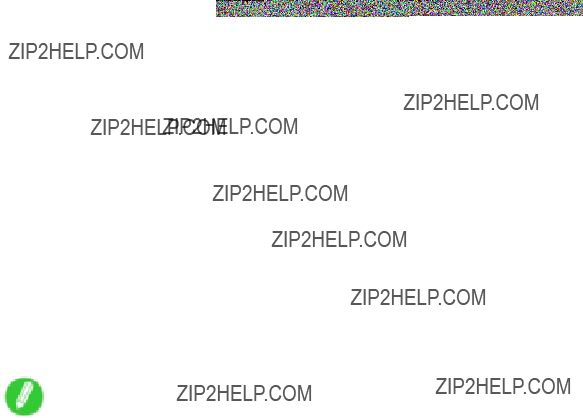
Printing enlargements or reductions
7. Click Roll Paper in the L Media Source list.
8. Select the width of the loaded roll in the M Roll Paper Width list-in this case, ISO A2/A3 Roll (420.0mm).
9. In the A Page Size list, click the size of the original as speci???ed in the application. In this case, click ISO A4 or Letter (8.5"x11").
10. Select the C Enlarged/Reduced Printing check box.
11. Click ISO A4 in the G Media Size list.
12. Click F Scaling and enter ???120.???
 Note
Note
???You can specify enlargement that exceeds the paper size, but in this case, the portion off the edge of the paper will not be printed.
???If the original size after enlargement or reduction is smaller than the paper size, the original is printed in the upper-left corner. In this case, you can center originals by selecting G Print Centered on the Layout sheet.
13. Con???rm the print settings and print as desired.
Note
??? For tips on con???rming print settings, see ???Con???rming Print Settings (Windows)???. (???P.508)
Enhanced Printing Options 321
Printing enlargements or reductions
 Resizing Originals by Entering a Scaling Value (Mac OS X)
Resizing Originals by Entering a Scaling Value (Mac OS X)
This topic describes how to enlarge originals before printing by entering a scaling value, based on the following example.
???Document: Any type
???Page size: A4 (210.0??297.0 mm)/Letter (8.3 ?? 11.7 in)
???Paper: Roll
???Paper type: Plain Paper
???Roll paper width: A2/A3 roll (420.0 mm [16.5 in])
 Important
Important
??? In borderless printing, you cannot resize originals by entering a scaling value.
1.Choose Page Setup in the application menu to display the Page Attribute dialog box.
2. Select the printer in the B Format for list.
3. In C Paper Size, click the size of the original. In this case, click ISO A4.
4. Click F OK to close the dialog box.
5. Choose Print in the application menu.
6. Access the Main pane.
322 Enhanced Printing Options
Printing enlargements or reductions
7. In the A Media Type list, select the type of paper that is loaded. In this case, click Plain Paper.
8. Select the print target in the E Print Target list.
9. Access the Page Setup pane.
10. Click Roll Paper in the A Media Source list.
11. Make sure the width of the loaded roll is displayed in the B Roll Paper Width list-in this case,
ISO A2/A3 (420.0mm).
 Note
Note
???If the width of the loaded roll is not displayed in B Roll Paper Width, click L Printer Information on the Main pane and update the printer information.
Enhanced Printing Options 323
Printing enlargements or reductions
12. Make sure the C Page Size setting matches the original size as selected in C Paper Size in the
Page Attribute dialog box-in this case, ISO A4.
13. Select the D Enlarged/Reduced Printing check box.
14. Click G Scaling and enter ???120.???
 Note
Note
???You can specify enlargement that exceeds the paper size, but in this case, the portion off the edge of the paper will not be printed.
???If the original size after enlargement or reduction is smaller than the paper size, the original is printed in the upper-left corner. In this case, you can center originals by selecting the J Print Centered check box.
15.Con???rm the print settings, and then click M Print to start printing.
 Note
Note
???For tips on con???rming print settings, see ???Con???rming Print Settings (Mac OS X)???. (???P.558)
324 Enhanced Printing Options
Printing enlargements or reductions
 Resizing Originals by Entering a Scaling Value (Mac OS 9)
Resizing Originals by Entering a Scaling Value (Mac OS 9)
This topic describes how to enlarge originals before printing by entering a scaling value, based on the following example.
???Document: Any type
???Page size: A4 (210.0??297.0 mm)/Letter (8.3 ?? 11.7 in)
???Paper: Roll
???Paper type: Plain Paper
???Roll paper width: A2/A3 roll (420.0 mm [16.5 in])
 Important
Important
??? In borderless printing, you cannot resize originals by entering a scaling value.
1.Select the printer in Chooser.
2.Choose Page Setup from the application menu to display the Page Attribute dialog box.
3. In A Page Size, click the size of the original. In this case, click ISO A4.
4. Click I OK to close the dialog box.
5. Choose Print in the application menu.
6. Make sure the Main pane is displayed.
Enhanced Printing Options 325
Printing enlargements or reductions
7. In the C Media Type list, select the type of paper that is loaded. In this case, click Plain Paper.
8. Select the print target in the F Print Target list.
9. Access the Finishing pane.
10. Click Roll Paper in the A Media Source list.
11. Make sure the width of the loaded roll is displayed in the B Roll Paper Width list-here, ISO A2/A3 (420.0mm).
 Note
Note
???If the width of the loaded roll is not displayed in B Roll Paper Width, click L Printer on the Main pane and update the printer information.
326 Enhanced Printing Options
Printing enlargements or reductions
12. Access the Page Setup pane.
13. Make sure the B Page Size setting matches the original size as selected in A Page Size in the
Page Attribute dialog box-in this case, ISO A4.
14. Select the C Enlarged/Reduced Printing check box.
Enhanced Printing Options 327
Printing enlargements or reductions
15. Click F Scaling and enter ???120.???
 Note
Note
???You can specify enlargement that exceeds the paper size, but in this case, the portion off the edge of the paper will not be printed.
???If the original size after enlargement or reduction is smaller than the paper size, the original is printed in the upper-left corner. In this case, you can center originals by selecting F Print Centered on the Finishing pane.
16. Con???rm the print settings, and click N Print to start printing.
Note
??? For tips on con???rming print settings, see ???Con???rming Print Settings (Mac OS 9)???. (???P.584)
328 Enhanced Printing Options
Printing enlargements or reductions
 Resizing Originals to Fit the Roll Width (Windows)
Resizing Originals to Fit the Roll Width (Windows)
This topic describes how to enlarge originals before printing to match the roll width, based on the following example.
???Document: Any type
???Page size: A4 (210.0??297.0 mm)/Letter (8.3 ?? 11.7 in)
???Paper: Roll
???Paper type: Plain Paper
???Roll paper width: 16 inches (406.4 mm)
1.Choose Print in the application menu.
2.Select the printer in the dialog box, and then display the printer driver dialog box. (???P.538)
3.Make sure the Main sheet is displayed.
4. In the A Media Type list, select the type of paper that is loaded. In this case, click Plain Paper.
5. Select the printing application in the E Print Target list.
6. Click the Page Setup tab to display the Page Setup sheet.
Enhanced Printing Options 329
Printing enlargements or reductions
7. Click Roll Paper in the L Media Source list.
8. In the A Page Size list, click the size of the original as speci???ed in the application. In this case, click ISO A4 or Letter (8.5"x11").
9. Select the C Enlarged/Reduced Printing check box.
 Note
Note
???If the Enlarged/Reduced Printing check box is not displayed on the Page Setup sheet, clear the
B Borderless Printing check box.
10. Click E Fit Roll Paper Width.
 Note
Note
???After you click E Fit Roll Paper Width, the Information dialog box is displayed. Select the width of the loaded roll in the Roll Paper Width list and click OK.
???Make sure the roll paper width you specify matches the width of the loaded roll.
11.Con???rm the print settings and print as desired.
 Note
Note
???For tips on con???rming print settings, see ???Con???rming Print Settings (Windows)???. (???P.508)
330 Enhanced Printing Options
Printing enlargements or reductions
 Resizing Originals to Fit the Roll Width (Mac OS X)
Resizing Originals to Fit the Roll Width (Mac OS X)
This topic describes how to enlarge originals before printing to match the roll width, based on the following example.
???Document: Any type
???Page size: A4 (210.0??297.0 mm)/Letter (8.3 ?? 11.7 in)
???Paper: Roll
???Paper type: Plain Paper
???Roll paper width: 16 inches (406.4 mm)
1.Choose Page Setup from the application menu to display the Page Attribute dialog box.
2. Select the printer in the B Format for list.
3. In C Paper Size, click the size of the original. In this case, click ISO A4.
4. Click F OK to close the dialog box.
5. Choose Print in the application menu.
6. Access the Main pane.
7. In the A Media Type list, select the type of paper that is loaded. In this case, click Plain Paper.
8. Select the print target in the E Print Target list.
Enhanced Printing Options 331
Printing enlargements or reductions
9. Access the Page Setup pane.
10. Click Roll Paper in the A Media Source list.
11. Make sure the width of the loaded roll is displayed in the B Roll Paper Width list-in this case, 16 in. (406.4mm).
 Note
Note
???If the width of the loaded roll is not displayed in B Roll Paper Width, click L Printer Information on the Main pane and update the printer information.
332 Enhanced Printing Options
Printing enlargements or reductions
12. Make sure the C Page Size setting matches the original size as selected in C Paper Size in the
Page Attribute dialog box-in this case, ISO A4.
13. Select the D Enlarged/Reduced Printing check box.
14. Click F Fit Roll Paper Width.
15. Con???rm the print settings, and then click M Print to start printing.
Note
??? For tips on con???rming print settings, see ???Con???rming Print Settings (Mac OS X)???. (???P.558)
Enhanced Printing Options 333
Printing enlargements or reductions
 Resizing Originals to Fit the Roll Width (Mac OS 9)
Resizing Originals to Fit the Roll Width (Mac OS 9)
This topic describes how to enlarge originals before printing to match the roll paper width, based on the following example.
???Document: Any type
???Page size: A4 (210.0??297.0 mm)/Letter (8.3 ?? 11.7 in)
???Paper: Roll
???Paper type: Plain Paper
???Roll paper width: 16 inches (406.4 mm)
1.Select the printer in Chooser.
2.Choose Page Setup from the application menu to display the Page Attribute dialog box.
3. In A Page Size, click the size of the original. In this case, click ISO A4.
4. Click I OK to close the dialog box.
5. Choose Print in the application menu.
6. Make sure the Main pane is displayed.
7. In the C Media Type list, select the type of paper that is loaded. In this case, click Plain Paper.
8. Select the print target in the F Print Target list.
334 Enhanced Printing Options
Printing enlargements or reductions
9. Access the Finishing pane.
10. Click Roll Paper in the A Media Source list.
11. Make sure the width of the loaded roll is displayed in the B Roll Paper Width list-in this case, 16 in. (406.4mm).
 Note
Note
???If the width of the loaded roll is not displayed in B Roll Paper Width, click L Printer on the Main pane and update the printer information.
Enhanced Printing Options 335
Printing enlargements or reductions
12. Access the Page Setup pane.
13. Make sure the B Page Size setting matches the original size as selected in A Page Size in the
Page Attribute dialog box-in this case, ISO A4.
14. Select the C Enlarged/Reduced Printing check box.
15. Click E Fit Roll Paper Width.
16. Con???rm the print settings, and click N Print to start printing.
Note
??? For tips on con???rming print settings, see ???Con???rming Print Settings (Mac OS 9)???. (???P.584)
336 Enhanced Printing Options
Printing enlargements or reductions
 Resizing Originals to Match the Paper Size (Windows)
Resizing Originals to Match the Paper Size (Windows)
This topic describes how to enlarge originals before printing to match the paper size, based on the following example.
???Document: Any Type
???Page size: A4 (210.0??297.0mm)/Letter (8.3 ?? 11.7 in)
???Paper: Roll
???Paper type: Plain Paper
???Roll paper width: A2/A3 roll (420.0 mm [16.5 in])
1.Choose Print in the application menu.
2.Select the printer in the dialog box, and then open the printer driver dialog box. (???P.538)
3.Make sure the Main sheet is displayed.
4. In the A Media Type list, select the type of paper that is loaded. In this case, click Plain Paper.
5. Select the printing application in the E Print Target list.
6. Click the Page Setup tab to display the Page Setup sheet.
Enhanced Printing Options 337
Printing enlargements or reductions
7. Click Roll Paper in the L Media Source list.
8. Select the width of the loaded roll in the M Roll Paper Width list-in this case, ISO A2/A3 Roll (420.0mm).
9. In the A Page Size list, click the size of the original as speci???ed in the application. In this case, click ISO A4.
10. Select the C Enlarged/Reduced Printing check box.
11. Select the D Fit Media Size check box.
12. Click ISO A3 in the G Media Size list.
13. Con???rm the print settings and print as desired.
Note
??? For tips on con???rming print settings, see ???Con???rming Print Settings (Windows)???. (???P.508)
338 Enhanced Printing Options
Printing enlargements or reductions
 Resizing Originals to Match the Paper Size (Mac OS X)
Resizing Originals to Match the Paper Size (Mac OS X)
This topic describes how to enlarge originals before printing to match the paper size, based on the following example.
???Document: Any Type
???Page size: A4 (210.0??297.0mm)/Letter (8.3 ?? 11.7 in)
???Paper: Roll
???Paper type: Plain Paper
???Roll paper width: A2/A3 roll (420.0 mm [16.5 in])
1.Choose Page Setup in the application menu to display the Page Attribute dialog box.
2. Select the printer in the B Format for list.
3. In C Paper Size, click the size of the original. In this case, click ISO A4.
4. Click F OK to close the dialog box.
5. Choose Print in the application menu.
6. Access the Main pane.
7. In the A Media Type list, select the type of paper that is loaded. In this case, click Plain Paper.
8. Select the printing application in the E Print Target list.
Enhanced Printing Options 339
Printing enlargements or reductions
9. Access the Page Setup pane.
10. Click Roll Paper in the A Media Source list.
11. Make sure the width of the loaded roll is displayed in the B Roll Paper Width list-in this case,
ISO A2/A3 (420.0mm).
 Note
Note
???If the width of the loaded roll is not displayed in B Roll Paper Width, click L Printer Information on the Main pane and update the printer information.
340 Enhanced Printing Options
Printing enlargements or reductions
12. Make sure the C Page Size setting matches the original size as selected in C Paper Size in the
Page Attribute dialog box-in this case, ISO A4.
13. Select the D Enlarged/Reduced Printing check box.
14. Make sure E Fit Media Size is selected.
15. Click ISO A3 in the I Media Size list.
16. Con???rm the print settings, and then click M Print to start printing.
Note
??? For tips on con???rming print settings, see ???Con???rming Print Settings (Mac OS X)???. (???P.558)
Enhanced Printing Options 341
Printing enlargements or reductions
 Resizing Originals to Match the Paper Size (Mac OS 9)
Resizing Originals to Match the Paper Size (Mac OS 9)
This topic describes how to enlarge originals before printing to match the paper size, based on the following example.
???Document: Any Type
???Page size: A4 (210.0??297.0 mm)/Letter (8.3 ?? 11.7 in)
???Paper: Roll
???Paper type: Plain Paper
???Roll paper width: A2/A3 roll (420.0 mm [16.5 in])
1.Select the printer in Chooser.
2.Choose Page Setup from the application menu to display the Page Attribute dialog box.
3. In A Page Size, click the size of the original. In this case, click ISO A4.
4. Click I OK to close the dialog box.
5. Choose Print in the application menu.
6. Make sure the Main pane is displayed.
7. In the C Media Type list, select the type of paper that is loaded. In this case, click Plain Paper.
8. Select the printing application in the F Print Target list.
342 Enhanced Printing Options
Printing enlargements or reductions
9. Access the Finishing pane.
10. Click Roll Paper in the A Media Source list.
11. Make sure the width of the loaded roll is displayed in the B Roll Paper Width list-in this case,
ISO A2/A3 (420.0mm).
 Note
Note
???If the width of the loaded roll is not displayed in B Roll Paper Width, click L Printer on the Main pane and update the printer information.
Enhanced Printing Options 343
Printing enlargements or reductions
12. Access the Page Setup pane.
13. Make sure the B Page Size setting matches the original size as selected in A Page Size in the
Page Attribute dialog box-in this case, ISO A4.
14. Select the C Enlarged/Reduced Printing check box.
15. Make sure D Fit Media Size is selected.
16. Click ISO A3 in the H Media Size list.
17. Con???rm the print settings, and then click N Print to start printing.
Note
??? For tips on con???rming print settings, see ???Con???rming Print Settings (Mac OS 9)???. (???P.584)
344 Enhanced Printing Options

Printing at full size
Printing at full size
 Printing on Oversized Paper
Printing on Oversized Paper
Except in borderless printing, the actual printing area corresponds to your selected paper size minus the space for a margin. (???P.139) To print documents or images you prepare without a margin at actual size, use an oversized paper size.
For example, to print a A4-sized original without a margin at A4 size, print it on paper larger than A4 size and cut away the excess margin.
 Note
Note
???If you prepare an original for printing without a margin and print it on paper of regular size, the image near the edge will not be printed.
Oversize
The margin required by the printer is added around the ???outside??? of a regular paper size. For example, when printing a A4-sized original (210??297 mm), you have the following options.
a.Regular paper size: Gray area not printed
b.Page Size
c.Oversized paper size: Print area matches the page size (b)
 Important
Important
???When printing on oversize paper, load paper larger than the page size-a size that includes the margin required by the printer.
???Sheets: Load paper that is at least 10 mm (0.39 in) wider and 28 mm (1.10 in) higher than the page size
???Rolls: Load paper that is at least 10 mm (0.39 in) wider and 10 mm (0.39 in) higher than the page size
???Paper larger than the maximum size supported by the printer cannot be used as paper for oversized printing. (???P.173)
Enhanced Printing Options 345
Printing at full size
 Note
Note
???Oversized printing (selecting Oversize in Page Size ) is only available in Windows. For oversized printing on sheets, choose Cut Sheet as the media source.
???To perform oversized printing on a Macintosh computer, you must specify a non-standard page size and print on it.
???To specify a non-standard paper size in oversized printing, register the paper size as a Custom Media Size. Oversized printing is not available with ???Custom Size.??? (???P.395)
For instructions on oversized printing, refer to the following topics, as appropriate for your computer and operating system.
???Printing at Full Size (Windows) (???P.357)
???Printing at Full Size (Mac OS X) (???P.359)
???Printing at Full Size (Mac OS 9) (???P.362)
346 Enhanced Printing Options
Printing at full size
 Borderless Printing at Actual Size
Borderless Printing at Actual Size
Take advantage of borderless printing to print documents such as posters (made up mainly of photos or images) without a surrounding margin, or border.
Borderless Printing
In regular printing, a margin required by the printer is added around the original. With borderless printing, you can print documents without the margin, so that the printed image covers the entire surface of the paper.
 Important
Important
???Borderless printing is only available with rolls.
???Paper you can use for borderless printing is restricted to particular types of paper and rolls of particular widths. For information on types of paper compatible with borderless printing, refer to the Paper Reference Guide. (???P.167)
???Paper incompatible with the printer???s auto cut function can be printed without borders on the left and right sides only.
???These features cannot be used in combination with borderless printing: special page layouts, centering originals, and printing cut lines on rolls.
???You cannot have pages rotated 90 degrees to conserve paper if you have set up borderless printing at actual size or in combination with resizing originals to match the paper size.
???When borderless printing is used, the edge of the paper is cut during printing. Thus, ink density may be uneven at the edges. If you require higher image quality, specify No in Auto Cut in the printer driver. In this case, the paper can be printed without borders on the left and right sides only. After ejecting and cutting the printed document, use scissors to cut away the top and bottom edges.
???By factory default, the ink drying time is disabled for all paper. When you are using paper that takes longer for ink to adhere for borderless printing and the Cutter Unit touches printing surfaces that are not dry yet, it may damage the paper or the edge of the document that is cut, depending on frequency of use. In this case, follow these steps to change the ink drying time.
1.On the Main sheet of the printer driver, click Settings in Media Type.
2.Select the ink drying time in the Between Pages list of Drying Time.
Borderless Printing Method
Choose the method of borderless printing that suits the original, as desired.
Enhanced Printing Options 347

Printing at full size
Print Image with Actual Size
Prints originals at actual size, without enlarging or reducing them. Originals must be prepared in a size that exceeds the dimensions of the paper by 3 mm (0.12 in) on each side.
 Note
Note
???Not all page sizes are available.
???Even if you prepare originals of the same size as the paper size, the originals are automatically enlarged when you print borderlessly in combination with resizing originals to match the paper size. This may affect image quality. When image quality is most important, make the original 3 mm longer on each side than the paper size so that the image can be printed at actual size in borderless printing.
For instructions on borderless printing of photos and images at actual size, refer to the following topics, as appropriate for your computer and operating system.
???Borderless Printing at Actual Size (Windows) (???P.349)
???Borderless Printing at Actual Size (Mac OS X) (???P.351)
???Borderless Printing at Actual Size (Mac OS 9) (???P.354)
348 Enhanced Printing Options

Printing at full size
 Borderless Printing at Actual Size (Windows)
Borderless Printing at Actual Size (Windows)
This topic describes how to print borderlessly at actual size based on the following example.
???Document: Any type
???Page size: 10??12 inches (254.0??304.8 mm)
???Paper: Roll
???Paper type: Heavyweight Coated Paper
???Roll paper width: 10 inches (254.0 mm)
1.Create the original in the source application 3 mm (0.12 in) larger on each side than 254.0??304.8 mm (10 ?? 12 in) -that is, 260.0??310.8 mm (10.2 ?? 12.2 in)
 Note
Note
???If you can specify the margin, as in Microsoft Word, set the margin at 0 mm. For instructions on specifying the margin, refer to the software documentation.
???The extra 3 mm (0.12 in) on each side will not be printed. Create the original so that it ???ts inside the paper area to be printed on.
2.Choose Print in the application menu.
3.Select the printer in the dialog box, and then display the printer driver dialog box. (???P.538)
4.Make sure the Main sheet is displayed.
5. In the A Media Type list, select the type of paper that is loaded. In this case, click Heavyweight Coated Paper.
6. Select the print target in the E Print Target list.
Enhanced Printing Options 349
Printing at full size
7. Click the Page Setup tab to display the Page Setup sheet.
8. In the A Page Size list, click the size of the original as speci???ed in the source application. In this case, click 10"x12".
9. Click Roll Paper in the L Media Source list.
10. Select the B Borderless Printing check box to display the Information dialog box.
11. Select the width of the loaded roll in the Roll Paper Width list-in this case, click 10-in. Roll (254.0mm).
12. Click OK to close the Information dialog box.
13. In C Borderless Printing Method, click F Print Image with Actual Size.
14. Con???rm the print settings and print as desired.
Note
??? For tips on con???rming print settings, see ???Con???rming Print Settings (Windows)???. (???P.508)
350 Enhanced Printing Options
Printing at full size
 Borderless Printing at Actual Size (Mac OS X)
Borderless Printing at Actual Size (Mac OS X)
This topic describes how to print borderlessly at actual size based on the following example.
???Document: Any type
???Page size: 10 ?? 12 inches (254.0??304.8 mm)-Borderless
???Paper: Roll
???Paper type: Heavyweight Coated Paper
???Roll paper width: 10 inches (254.0 mm)
1.Choose Page Setup from the application menu to display the Page Attribute dialog box.
2. Select the printer in the B Format for list.
3. In the C Paper Size list, choose a paper size supported for borderless printing. Here, click
10"x12" - Borderless.
 Note
Note
???Paper sizes supported for borderless printing are indicated by ???-Borderless.???
4.Click F OK to close the dialog box.
5.In the application, create an original that takes up the entire space of the paper size.
6.Choose Print in the application menu.
7.Access the Main pane.
Enhanced Printing Options 351
Printing at full size
8. In the A Media Type list, select the type of paper that is loaded. In this case, click Heavyweight Coated Paper.
9. Select the print target in the E Print Target list.
10. Access the Page Setup pane.
11. Click Roll Paper in the A Media Source list.
12. Con???rm that the roll paper width matches the paper size.
Make sure the width of the loaded roll is displayed in the B Roll Paper Width list-in this case, 10 in. (254.0mm).
 Note
Note
???If the width of the loaded roll is not displayed in B Roll Paper Width, click L Printer Information on the Main pane and update the printer information.
352 Enhanced Printing Options
Printing at full size
13. Make sure the C Page Size setting matches the original size as selected in C Paper Size in the
Page Attribute dialog box-in this case, 10"x12" - Borderless.
14. Con???rm the print settings, and then click M Print to start printing.
Note
??? For tips on con???rming print settings, see ???Con???rming Print Settings (Mac OS X)???. (???P.558)
Enhanced Printing Options 353
Printing at full size
 Borderless Printing at Actual Size (Mac OS 9)
Borderless Printing at Actual Size (Mac OS 9)
This topic describes how to print borderlessly at actual size based on the following example.
???Document: Any type
???Page size: 10 ?? 12 inches (254.0??304.8 mm)-Borderless
???Paper: Roll
???Paper type: Heavyweight Coated Paper
???Roll width: 10 inches (254.0 mm)
1.Select the printer in Chooser.
2.Choose Page Setup from the application menu to display the Page Attribute dialog box.
3. In D Print Area Setting, click H For Broderless Printing.
4. In the A Page Size list, choose a paper size supported for borderless printing. Here, click
10"x12" - Borderless.
 Note
Note
???Paper sizes supported for borderless printing are indicated by ???-Borderless.???
5.Click I OK to close the dialog box.
6.In the application, create an original that takes up the entire space of the paper size.
7.Choose Print in the application menu.
8.Make sure the Main pane is displayed.
354 Enhanced Printing Options
Printing at full size
9. In the C Media Type list, select the type of paper that is loaded. In this case, click Heavyweight Coated Paper.
10. Select the print target in the F Print Target list.
11. Access the Finishing pane.
12. Click Roll Paper in the A Media Source list.
13. Con???rm that the roll paper width matches the paper size.
Make sure the width of the loaded roll is displayed in the B Roll Paper Width list-in this case, 10 in. (254.0mm).
 Note
Note
???If the width of the loaded roll is not displayed in B Roll Paper Width, click L Printer on the Main pane and update the printer information.
Enhanced Printing Options 355
Printing at full size
14. Access the Page Setup pane.
15. Make sure the B Page Size setting matches the original size as selected in A Page Size in the
Page Attribute dialog box-in this case, 10"x12".
16. Con???rm the print settings, and click N Print to start printing.
Note
??? For tips on con???rming print settings, see ???Con???rming Print Settings (Mac OS 9)???. (???P.584)
356 Enhanced Printing Options
Printing at full size
 Printing at Full Size (Windows)
Printing at Full Size (Windows)
This topic describes how to print at full size based on the following example. (Oversized Printing)
???Document: Any Type
???Page Size: A4 (210.0??297.0 mm)/Letter (8.3 ?? 11.7 in)
???Paper: Roll
???Paper type: Plain Paper
???Roll paper width: A2/A3 roll (420.0 mm [16.5 in])
1.Choose Print in the application menu.
2.Select the printer in the dialog box, and then display the printer driver dialog box. (???P.538)
3.Make sure the Main sheet is displayed.
4. In the A Media Type list, select the type of paper that is loaded. In this case, click Plain Paper.
5. Click the Page Setup tab to display the Page Setup sheet.
6. Click O Size Options to display the Media Size Options dialog box.
7. In the Media Size Options dialog box, select the Oversize check box in Display Series.
Enhanced Printing Options 357
Printing at full size
8. Click OK to close the Media Size Options dialog box.
9. Click Oversize - ISO A4 in the A Page Size list.
10. Click Roll Paper in the L Media Source list.
11. Select the width of the loaded roll in the M Roll Paper Width list-in this case, ISO A2/A3 Roll (420.0mm).
12. Con???rm the print settings and print as desired.
Note
??? For tips on con???rming print settings, see ???Con???rming Print Settings (Windows)???. (???P.508)
 Note
Note
???You can select Oversize in Display Series to make all oversized versions of paper in the selected Display Series available for printing. These sizes are displayed in the Page Size list in the format
Oversize - xxxxxx.
358 Enhanced Printing Options
Printing at full size
 Printing at Full Size (Mac OS X)
Printing at Full Size (Mac OS X)
This topic describes how to print at full size based on the following example. (Oversized Printing)
???Document: Any type
???Page size: A4 (210.0??297.0 mm)/Letter (8.3 ?? 11.7 in)
???Paper: Roll
???Paper type: Plain Paper
???Roll paper width: A2/A3 roll (420.0 mm [16.5 in])
1.Choose Page Setup from the application menu to display the Page Attribute dialog box.
2. Select the printer in the B Format for list.
3. In C Paper Size, click the size of the original. In this case, click ISO A4 - Oversize.
 Note
Note
???For oversized printing, choose paper identi???ed by the regular paper name followed by ???- Oversize.???
4.Click F OK to close the dialog box.
5.Choose Print in the application menu.
6.Access the Main pane.
7. In the A Media Type list, select the type of paper that is loaded. In this case, click Plain Paper.
8. Select the printing application in the E Print Target list.
Enhanced Printing Options 359
Printing at full size
9. Access the Page Setup pane.
10. Click Roll Paper in the A Media Source list.
11. Make sure the width of the loaded roll is displayed in the B Roll Paper Width list-in this case,
ISO A2/A3 (420.0mm).
 Note
Note
???If the width of the loaded roll is not displayed in B Roll Paper Width, click L Printer Information on the Main pane and update the printer information.
360 Enhanced Printing Options
Printing at full size
12. Make sure C Page Size shows the original size as speci???ed in C Paper Size in the Page Attribute dialog box-in this case, ISO A4 - Oversize.
13. Con???rm the print settings, and then click M Print to start printing.
Note
??? For tips on con???rming print settings, see ???Con???rming Print Settings (Mac OS X)???. (???P.558)
Enhanced Printing Options 361
Printing at full size
 Printing at Full Size (Mac OS 9)
Printing at Full Size (Mac OS 9)
This topic describes how to print at full size based on the following example. (Oversized Printing)
???Document: Any type
???Page size: A4 (210.0??297.0 mm)/Letter (8.3 ?? 11.7 in)
???Paper: Roll
???Paper type: Plain Paper
???Roll paper width: A2/A3 roll (420.0 mm [16.5 in])
1.Select the printer in Chooser.
2.Choose Page Setup from the application menu to display the Page Attribute dialog box.
3. In D Print Area Setting, click G For printing oversizes.
4. In the A Page Size list, click the size of the original. In this case, click ISO A4.
5. Click I OK to close the dialog box.
6. Choose Print in the application menu.
7. Make sure the Main pane is displayed.
8. In the C Media Type list, select the type of paper that is loaded. In this case, click Plain Paper.
9. Select the printing application in the F Print Target list.
362 Enhanced Printing Options
Printing at full size
10. Access the Finishing pane.
11. Click Roll Paper in the A Media Source list.
12. Make sure the width of the loaded roll is displayed in the B Roll Paper Width list-in this case,
ISO A2/A3 (420.0mm).
 Note
Note
???If the width of the loaded roll is not displayed in B Roll Paper Width, click L Printer on the Main pane and update the printer information.
13. Con???rm the print settings, and then click N Print to start printing.
Note
??? For tips on con???rming print settings, see ???Con???rming Print Settings (Mac OS 9)???. (???P.584)
Enhanced Printing Options 363

Borderless Printing
Borderless Printing
 Borderless Printing on Paper of Equivalent Size
Borderless Printing on Paper of Equivalent Size
Take advantage of borderless printing to print documents such as posters (made up mainly of photos or images) without a surrounding margin, or border.
Borderless Printing
In regular printing, a margin required by the printer is added around the original. With borderless printing, you can print documents without the margin, so that the printed image covers the entire surface of the paper.
 Important
Important
???Borderless printing is only available with rolls.
???Paper you can use for borderless printing is restricted to particular types of paper and rolls of particular widths. For information on types of paper compatible with borderless printing, refer to the Paper Reference Guide. (???P.167)
???Paper incompatible with the printer???s auto cut function can be printed without borders on the left and right sides only.
???These features cannot be used in combination with borderless printing: special page layouts, centering originals, and printing cut lines on rolls.
???You cannot have pages rotated 90 degrees to conserve paper if you have set up borderless printing at actual size or in combination with resizing originals to match the paper size.
???When borderless printing is used, the edge of the paper is cut during printing. Thus, ink density may be uneven at the edges. If you require higher image quality, specify No in Auto Cut in the printer driver. In this case, the paper can be printed without borders on the left and right sides only. After ejecting and cutting the printed document, use scissors to cut away the top and bottom edges.
???By factory default, the ink drying time is disabled for all paper. When you are using paper that takes longer for ink to adhere for borderless printing and the Cutter Unit touches printing surfaces that are not dry yet, it may damage the paper or the edge of the document that is cut, depending on frequency of use. In this case, follow these steps to change the ink drying time.
1.On the Main sheet of the printer driver, click Settings in Media Type.
2.Select the ink drying time in the Between Pages list of Drying Time.
Borderless Printing Method
Choose the method of borderless printing that suits the original, as desired.
364 Enhanced Printing Options
Borderless Printing
Fit Media Size
Enlarge or reduce the original to match the size of the paper you are using.
 Note
Note
???The printer driver automatically enlarges originals 3 mm (0.12 in) past the dimensions of the paper on each side. The 3 mm portion beyond the edge on each side is not printed.
For instructions on borderless printing of photos, images, and other documents to match the paper size, refer to the following topics, as appropriate for your computer and operating system.
???Borderless Printing by Resizing Originals to Match the Paper Size (Windows) (???P.386)
???Borderless Printing by Resizing Originals to Match the Paper Size (Mac OS X) (???P.388)
???Borderless Printing by Resizing Originals to Match the Paper Size (Mac OS 9) (???P.391)
Enhanced Printing Options 365
Borderless Printing
 Borderless Printing by Resizing Originals to Fit the Roll Width
Borderless Printing by Resizing Originals to Fit the Roll Width
Take advantage of borderless printing to print documents such as posters (made up mainly of photos or images) without a surrounding margin, or border.
Borderless Printing
In regular printing, a margin required by the printer is added around the original. With borderless printing, you can print documents without the margin, so that the printed image covers the entire surface of the paper.
 Important
Important
???Borderless printing is only available with rolls.
???Paper you can use for borderless printing is restricted to particular types of paper and rolls of particular widths. For information on types of paper compatible with borderless printing, refer to the Paper Reference Guide. (???P.167)
???Paper incompatible with the printer???s auto cut function can be printed without borders on the left and right sides only.
???These features cannot be used in combination with borderless printing: special page layouts, centering originals, and printing cut lines on rolls.
???You cannot have pages rotated 90 degrees to conserve paper if you have set up borderless printing at actual size or in combination with resizing originals to match the paper size.
???When borderless printing is used, the edge of the paper is cut during printing. Thus, ink density may be uneven at the edges. If you require higher image quality, specify No in Auto Cut in the printer driver. In this case, the paper can be printed without borders on the left and right sides only. After ejecting and cutting the printed document, use scissors to cut away the top and bottom edges.
???By factory default, the ink drying time is disabled for all paper. When you are using paper that takes longer for ink to adhere for borderless printing and the Cutter Unit touches printing surfaces that are not dry yet, it may damage the paper or the edge of the document that is cut, depending on frequency of use. In this case, follow these steps to change the ink drying time.
1.On the Main sheet of the printer driver, click Settings in Media Type.
2.Select the ink drying time in the Between Pages list of Drying Time.
Borderless Printing Method
Choose the method of borderless printing that suits the original, as desired.
366 Enhanced Printing Options
Borderless Printing
Scale to ???t Roll Paper Width
Enlarge or reduce the original as a whole to match the roll paper width.
 Note
Note
???You can combine this function with rotating pages 90 degrees before printing so that the original width (relative to portrait orientation) matches the roll paper width in borderless printing.
For instructions on borderless printing of photos, images, and other documents to match the roll paper width, refer to the following topics, as appropriate for your computer and operating system.
???Borderless Printing by Resizing Originals to Fit the Roll Width (Windows) (???P.378)
???Borderless Printing by Resizing Originals to Fit the Roll Width (Mac OS X) (???P.380)
???Borderless Printing by Resizing Originals to Fit the Roll Width (Mac OS 9) (???P.383)
Enhanced Printing Options 367
Borderless Printing
 Borderless Printing at Actual Size
Borderless Printing at Actual Size
Take advantage of borderless printing to print documents such as posters (made up mainly of photos or images) without a surrounding margin, or border.
Borderless Printing
In regular printing, a margin required by the printer is added around the original. With borderless printing, you can print documents without the margin, so that the printed image covers the entire surface of the paper.
 Important
Important
???Borderless printing is only available with rolls.
???Paper you can use for borderless printing is restricted to particular types of paper and rolls of particular widths. For information on types of paper compatible with borderless printing, refer to the Paper Reference Guide. (???P.167)
???Paper incompatible with the printer???s auto cut function can be printed without borders on the left and right sides only.
???These features cannot be used in combination with borderless printing: special page layouts, centering originals, and printing cut lines on rolls.
???You cannot have pages rotated 90 degrees to conserve paper if you have set up borderless printing at actual size or in combination with resizing originals to match the paper size.
???When borderless printing is used, the edge of the paper is cut during printing. Thus, ink density may be uneven at the edges. If you require higher image quality, specify No in Auto Cut in the printer driver. In this case, the paper can be printed without borders on the left and right sides only. After ejecting and cutting the printed document, use scissors to cut away the top and bottom edges.
???By factory default, the ink drying time is disabled for all paper. When you are using paper that takes longer for ink to adhere for borderless printing and the Cutter Unit touches printing surfaces that are not dry yet, it may damage the paper or the edge of the document that is cut, depending on frequency of use. In this case, follow these steps to change the ink drying time.
1.On the Main sheet of the printer driver, click Settings in Media Type.
2.Select the ink drying time in the Between Pages list of Drying Time.
Borderless Printing Method
Choose the method of borderless printing that suits the original, as desired.
368 Enhanced Printing Options

Borderless Printing
Print Image with Actual Size
Prints originals at actual size, without enlarging or reducing them. Originals must be prepared in a size that exceeds the dimensions of the paper by 3 mm (0.12 in) on each side.
 Note
Note
???Not all page sizes are available.
???Even if you prepare originals of the same size as the paper size, the originals are automatically enlarged when you print borderlessly in combination with resizing originals to match the paper size. This may affect image quality. When image quality is most important, make the original 3 mm longer on each side than the paper size so that the image can be printed at actual size in borderless printing.
For instructions on borderless printing of photos and images at actual size, refer to the following topics, as appropriate for your computer and operating system.
???Borderless Printing at Actual Size (Windows) (???P.349)
???Borderless Printing at Actual Size (Mac OS X) (???P.351)
???Borderless Printing at Actual Size (Mac OS 9) (???P.354)
Enhanced Printing Options 369
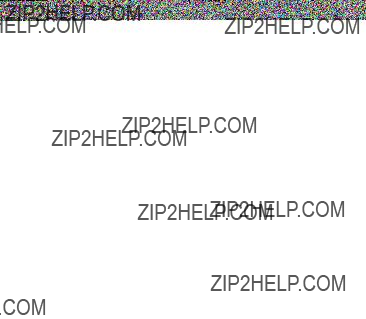
Borderless Printing
 Borderless Printing at Actual Size (Windows)
Borderless Printing at Actual Size (Windows)
This topic describes how to print borderlessly at actual size based on the following example.
???Document: Any type
???Page size: 10??12 inches (254.0??304.8 mm)
???Paper: Roll
???Paper type: Heavyweight Coated Paper
???Roll paper width: 10 inches (254.0 mm)
1.Create the original in the source application 3 mm (0.12 in) larger on each side than 254.0??304.8 mm (10 ?? 12 in) -that is, 260.0??310.8 mm (10.2 ?? 12.2 in)
 Note
Note
???If you can specify the margin, as in Microsoft Word, set the margin at 0 mm. For instructions on specifying the margin, refer to the software documentation.
???The extra 3 mm (0.12 in) on each side will not be printed. Create the original so that it ???ts inside the paper area to be printed on.
2.Choose Print in the application menu.
3.Select the printer in the dialog box, and then display the printer driver dialog box. (???P.538)
4.Make sure the Main sheet is displayed.
5. In the A Media Type list, select the type of paper that is loaded. In this case, click Heavyweight Coated Paper.
6. Select the print target in the E Print Target list.
370 Enhanced Printing Options
Borderless Printing
7. Click the Page Setup tab to display the Page Setup sheet.
8. In the A Page Size list, click the size of the original as speci???ed in the source application. In this case, click 10"x12".
9. Click Roll Paper in the L Media Source list.
10. Select the B Borderless Printing check box to display the Information dialog box.
11. Select the width of the loaded roll in the Roll Paper Width list-in this case, click 10-in. Roll (254.0mm).
12. Click OK to close the Information dialog box.
13. In C Borderless Printing Method, click F Print Image with Actual Size.
14. Con???rm the print settings and print as desired.
Note
??? For tips on con???rming print settings, see ???Con???rming Print Settings (Windows)???. (???P.508)
Enhanced Printing Options 371

Borderless Printing
 Borderless Printing at Actual Size (Mac OS X)
Borderless Printing at Actual Size (Mac OS X)
This topic describes how to print borderlessly at actual size based on the following example.
???Document: Any type
???Page size: 10 ?? 12 inches (254.0??304.8 mm)-Borderless
???Paper: Roll
???Paper type: Heavyweight Coated Paper
???Roll paper width: 10 inches (254.0 mm)
1.Choose Page Setup from the application menu to display the Page Attribute dialog box.
2. Select the printer in the B Format for list.
3. In the C Paper Size list, choose a paper size supported for borderless printing. Here, click
10"x12" - Borderless.
 Note
Note
???Paper sizes supported for borderless printing are indicated by ???-Borderless.???
4.Click F OK to close the dialog box.
5.In the application, create an original that takes up the entire space of the paper size.
6.Choose Print in the application menu.
7.Access the Main pane.
8. In the A Media Type list, select the type of paper that is loaded. In this case, click Heavyweight Coated Paper.
9. Select the print target in the E Print Target list.
372 Enhanced Printing Options
Borderless Printing
10. Access the Page Setup pane.
11. Click Roll Paper in the A Media Source list.
12. Con???rm that the roll paper width matches the paper size.
Make sure the width of the loaded roll is displayed in the B Roll Paper Width list-in this case, 10 in. (254.0mm).
 Note
Note
???If the width of the loaded roll is not displayed in B Roll Paper Width, click L Printer Information on the Main pane and update the printer information.
Enhanced Printing Options 373
Borderless Printing
13. Make sure the C Page Size setting matches the original size as selected in C Paper Size in the
Page Attribute dialog box-in this case, 10"x12" - Borderless.
14. Con???rm the print settings, and then click M Print to start printing.
Note
??? For tips on con???rming print settings, see ???Con???rming Print Settings (Mac OS X)???. (???P.558)
374 Enhanced Printing Options
Borderless Printing
 Borderless Printing at Actual Size (Mac OS 9)
Borderless Printing at Actual Size (Mac OS 9)
This topic describes how to print borderlessly at actual size based on the following example.
???Document: Any type
???Page size: 10 ?? 12 inches (254.0??304.8 mm)-Borderless
???Paper: Roll
???Paper type: Heavyweight Coated Paper
???Roll width: 10 inches (254.0 mm)
1.Select the printer in Chooser.
2.Choose Page Setup from the application menu to display the Page Attribute dialog box.
3. In D Print Area Setting, click H For Broderless Printing.
4. In the A Page Size list, choose a paper size supported for borderless printing. Here, click
10"x12" - Borderless.
 Note
Note
???Paper sizes supported for borderless printing are indicated by ???-Borderless.???
5.Click I OK to close the dialog box.
6.In the application, create an original that takes up the entire space of the paper size.
7.Choose Print in the application menu.
8.Make sure the Main pane is displayed.
Enhanced Printing Options 375
Borderless Printing
9. In the C Media Type list, select the type of paper that is loaded. In this case, click Heavyweight Coated Paper.
10. Select the print target in the F Print Target list.
11. Access the Finishing pane.
12. Click Roll Paper in the A Media Source list.
13. Con???rm that the roll paper width matches the paper size.
Make sure the width of the loaded roll is displayed in the B Roll Paper Width list-in this case, 10 in. (254.0mm).
 Note
Note
???If the width of the loaded roll is not displayed in B Roll Paper Width, click L Printer on the Main pane and update the printer information.
376 Enhanced Printing Options
Borderless Printing
14. Access the Page Setup pane.
15. Make sure the B Page Size setting matches the original size as selected in A Page Size in the
Page Attribute dialog box-in this case, 10"x12".
16. Con???rm the print settings, and click N Print to start printing.
Note
??? For tips on con???rming print settings, see ???Con???rming Print Settings (Mac OS 9)???. (???P.584)
Enhanced Printing Options 377

Borderless Printing
 Borderless Printing by Resizing Originals to Fit the Roll Width (Windows)
Borderless Printing by Resizing Originals to Fit the Roll Width (Windows)
This topic describes how to enlarge originals before borderless printing to match the roll width, based on the following example.
???Document: Any type
???Page size: A4 (210.0??297.0 mm)/Letter (8.3 ?? 11.7 in)
???Paper: Roll
???Paper type: Heavyweight Coated Paper
???Roll paper width: 10 inches (254.0 mm)
1.In the application, create an original that takes up the entire space of the paper size.
 Note
Note
???If you can specify the margin, as in Microsoft Word, set the margin at 0 mm. For instructions on specifying the margin, refer to the software documentation.
2.Choose Print in the application menu.
3.Select the printer in the dialog box, and then display the printer driver dialog box. (???P.538)
4.Make sure the Main sheet is displayed.
5. In the A Media Type list, select the type of paper that is loaded. In this case, click Heavyweight Coated Paper.
6. Select the print target in the E Print Target list.
378 Enhanced Printing Options
Borderless Printing
7. Click the Page Setup tab to display the Page Setup sheet.
8. In the A Page Size list, click the size of the original as speci???ed in the application. In this case, click ISO A4 or Letter (8.5"x11").
9. Click Roll Paper in the L Media Source list.
10. Select the B Borderless Printing check box to display the Information dialog box.
11. Select the width of the loaded roll in the Roll Paper Width list-in this case, click 10-in. Roll (254.0mm).
12. Click OK to close the Information dialog box.
13. In C Borderless Printing Method, make sure E Scale to ???t Roll Paper Width is selected.
14. Con???rm the print settings and print as desired.
Note
??? For tips on con???rming print settings, see ???Con???rming Print Settings (Windows)???. (???P.508)
Enhanced Printing Options 379
Borderless Printing
 Borderless Printing by Resizing Originals to Fit the Roll Width (Mac OS X)
Borderless Printing by Resizing Originals to Fit the Roll Width (Mac OS X)
This topic describes how to enlarge originals before printing to match the roll width, based on the following example.
???Document: Any type
???Page size: A4 (210.0??297.0 mm)/Letter (8.3 ?? 11.7 in)
???Paper: Roll
???Paper type: Heavyweight Coated Paper
???Roll paper width: 10 inches (254.0 mm)
1.Choose Page Setup from the application menu to display the Page Attribute dialog box.
2. Select the printer in the B Format for list.
3. In C Paper Size, click the size of the original. In this case, click ISO A4.
 Note
Note
???All sizes are available in borderless printing if you resize originals to ???t the roll width.
4.Click F OK to close the dialog box.
5.In the application, create an original that takes up the entire space of the paper size.
6.Choose Print in the application menu.
7.Access the Main pane.
380 Enhanced Printing Options
Borderless Printing
8. In the A Media Type list, select the type of paper that is loaded. In this case, click Heavyweight Coated Paper.
9. Select the print target in the E Print Target list.
10. Access the Page Setup pane.
11. Click Roll Paper in the A Media Source list.
12. Make sure the width of the loaded roll is displayed in the B Roll Paper Width list-here, 10 in. (254.0mm).
 Note
Note
???If the width of the loaded roll is not displayed in B Roll Paper Width, click L Printer Information on the Main pane and update the printer information.
Enhanced Printing Options 381
Borderless Printing
13. Make sure the C Page Size setting matches the original size as selected in C Paper Size in the
Page Attribute dialog box-in this case, ISO A4.
14. Select the D Enlarged/Reduced Printing check box.
15. Select the H Borderless Printing check box.
This ensures that F Fit Roll Paper Width is automatically selected in D Enlarged/Reduced Printing.
16. Con???rm the print settings, and then click M Print to start printing.
Note
??? For tips on con???rming print settings, see ???Con???rming Print Settings (Mac OS X)???. (???P.558)
382 Enhanced Printing Options
Borderless Printing
 Borderless Printing by Resizing Originals to Fit the Roll Width (Mac OS 9)
Borderless Printing by Resizing Originals to Fit the Roll Width (Mac OS 9)
This topic describes how to enlarge originals before printing to match the roll width, based on the following example.
???Document: Any type
???Page size: A4 (210.0??297.0 mm)/Letter (8.3 ?? 11.7 in)
???Paper: Roll
???Paper type: Heavyweight Coated Paper
???Roll width: 10 inches (254.0 mm)
1.Select the printer in Chooser.
2.Choose Page Setup from the application menu to display the Page Attribute dialog box.
3. In A Page Size, click the size of the original. In this case, click ISO A4.
 Note
Note
???All sizes are available in borderless printing if you resize originals to ???t the roll width.
4.Click I OK to close the dialog box.
5.In the application, create an original that takes up the entire space of the paper size.
6.Choose Print in the application menu.
7.Make sure the Main pane is displayed.
Enhanced Printing Options 383
Borderless Printing
8. In the C Media Type list, select the type of paper that is loaded. In this case, click Heavyweight Coated Paper.
9. Select the print target in the F Print Target list.
10. Access the Finishing pane.
11. Click Roll Paper in the A Media Source list.
12. Make sure the width of the loaded roll is displayed in the B Roll Paper Width list-in this case, 10 in. (254.0mm).
 Note
Note
???If the width of the loaded roll is not displayed in B Roll Paper Width, click L Printer on the Main pane and update the printer information.
384 Enhanced Printing Options
Borderless Printing
13. Access the Page Setup pane.
14. Make sure the B Page Size setting matches the original size as selected in A Page Size in the
Page Attribute dialog box-in this case, ISO A4.
15. Select the C Enlarged/Reduced Printing check box.
16. Select the G Borderless Printing check box.
This ensures that E Fit Roll Paper Width is automatically selected in C Enlarged/Reduced Printing.
17. Con???rm the print settings, and click N Print to start printing.
Note
??? For tips on con???rming print settings, see ???Con???rming Print Settings (Mac OS 9)???. (???P.584)
Enhanced Printing Options 385
Borderless Printing
 Borderless Printing by Resizing Originals to Match the Paper Size (Windows)
Borderless Printing by Resizing Originals to Match the Paper Size (Windows)
This topic describes how to enlarge originals before borderless printing to match the paper size, based on the following example.
???Document: Any type
???Page size: 10??12 inches (254.0??304.8 mm)
???Paper: Roll
???Paper type: Heavyweight Coated Paper
???Roll paper width: 10 inches (254.0 mm)
1.In the application, create an original that takes up the entire space of the paper size.
 Note
Note
???If you can specify the margin, as in Microsoft Word, set the margin at 0 mm. For instructions on specifying the margin, refer to the software documentation.
2.Choose Print in the application menu.
3.Select the printer in the dialog box, and then display the printer driver dialog box. (???P.538)
4.Make sure the Main sheet is displayed.
5. In the A Media Type list, select the type of paper that is loaded. In this case, click Heavyweight Coated Paper.
6. Select the print target in the E Print Target list.
386 Enhanced Printing Options
Borderless Printing
7. Click the Page Setup tab to display the Page Setup sheet.
8. In the A Page Size list, click the size of the original as speci???ed in the application. In this case, click 10"x12".
9. Click Roll Paper in the L Media Source list.
10. Select the B Borderless Printing check box to display the Information dialog box.
11. Select the width of the loaded roll in the Roll Paper Width list-in this case, click 10-in. Roll (254.0mm).
12. Click OK to close the Information dialog box.
13. In C Borderless Printing Method, click D Fit Media Size.
14. Click Match Page Size in the G Media Size list.
15. Con???rm the print settings and print as desired.
Note
??? For tips on con???rming print settings, see ???Con???rming Print Settings (Windows)???. (???P.508)
Enhanced Printing Options 387
Borderless Printing
 Borderless Printing by Resizing Originals to Match the Paper Size (Mac OS X)
Borderless Printing by Resizing Originals to Match the Paper Size (Mac OS X)
This topic describes how to enlarge originals before borderless printing to match the paper size, based on the following example.
???Document: Any type
???Page size: 10??12 inches (254.0??304.8 mm)
???Paper: Roll
???Paper type: Heavyweight Coated Paper
???Roll paper width: 10 inches (254.0 mm)
1.Choose Page Setup from the application menu to display the Page Attribute dialog box.
2. Select the printer in the B Format for list.
3. In the C Paper Size list, click the size of the original. In this case, click 10"x12".
 Note
Note
???All sizes are available in borderless printing if you resize originals to match the paper size.
4.Click F OK to close the dialog box.
5.In the application, create an original that takes up the entire space of the paper size.
6.Choose Print in the application menu.
7.Access the Main pane.
388 Enhanced Printing Options
Borderless Printing
8. In the A Media Type list, select the type of paper that is loaded. In this case, click Heavyweight Coated Paper.
9. Select the print target in the E Print Target list.
10. Access the Page Setup pane.
11. Click Roll Paper in the A Media Source list.
12. Make sure the width of the loaded roll is displayed in the B Roll Paper Width list-in this case, 10 in. (254.0mm).
 Note
Note
???If the width of the loaded roll is not displayed in B Roll Paper Width, click L Printer Information on the Main pane and update the printer information.
Enhanced Printing Options 389
Borderless Printing
13. Make sure the C Page Size setting matches the original size as selected in C Paper Size in the
Page Attribute dialog box-in this case, 10"x12".
14. On the Page Setup pane, select the D Enlarged/Reduced Printing check box.
15. Select the H Borderless Printing check box.
16. Click E Fit Media Size under D Enlarged/Reduced Printing.
17. In I Media Size, click the paper size. In this case, click 10"x12" - Borderless.
18. Con???rm the print settings, and then click M Print to start printing.
Note
??? For tips on con???rming print settings, see ???Con???rming Print Settings (Mac OS X)???. (???P.558)
390 Enhanced Printing Options
Borderless Printing
 Borderless Printing by Resizing Originals to Match the Paper Size (Mac OS 9)
Borderless Printing by Resizing Originals to Match the Paper Size (Mac OS 9)
This topic describes how to enlarge originals before borderless printing to match the paper size, based on the following example.
???Document: Any type
???Page size: 10??12 inches (254.0??304.8 mm)
???Paper: Roll
???Paper type: Heavyweight Coated Paper
???Roll width: 10 inches (254.0 mm)
1.Select the printer in Chooser.
2.Choose Page Setup from the application menu to display the Page Attribute dialog box.
3. In the A Page Size list, click the size of the original. In this case, click 10"x12".
 Note
Note
???All sizes are available in borderless printing if you resize originals to match the paper size.
4.Click I OK to close the dialog box.
5.In the application, create an original that takes up the entire space of the paper size.
6.Choose Print in the application menu.
7.Make sure the Main pane is displayed.
Enhanced Printing Options 391
Borderless Printing
8. In the C Media Type list, select the type of paper that is loaded. In this case, click Heavyweight Coated Paper.
9. Select the print target in the F Print Target list.
10. Access the Finishing pane.
11. Click Roll Paper in the A Media Source list.
12. Make sure the width of the loaded roll is displayed in the B Roll Paper Width list-in this case, 10 in. (254.0mm).
 Note
Note
???If the width of the loaded roll is not displayed in B Roll Paper Width, click L Printer on the Main pane and update the printer information.
392 Enhanced Printing Options
Borderless Printing
13. Access the Page Setup pane.
14. Make sure the B Page Size setting matches the original size as selected in A Page Size in the
Page Attribute dialog box-in this case, 10"x12".
15. Select the C Enlarged/Reduced Printing check box.
16. Select the G Borderless Printing check box.
17. Click D Fit Media Size under C Enlarged/Reduced Printing.
18. In H Media Size, click the paper size. In this case, click 10"x12" - Borderless.
19. Con???rm the print settings, and click N Print to start printing.
Note
??? For tips on con???rming print settings, see ???Con???rming Print Settings (Mac OS 9)???. (???P.584)
Enhanced Printing Options 393

Printing banners or at other non-standard sizes
Printing banners or at other non-standard sizes
 Printing Vertical or Horizontal Banners (Large-Format Printing)
Printing Vertical or Horizontal Banners (Large-Format Printing)
You can create vertical or horizontal banners by printing originals that are in banner format on rolls. Originals created in Microsoft Word or other applications in your preferred size can be enlarged to ???ll the width of roll paper by completing simple printer driver settings.
Fit Roll Paper Width
You can easily create vertical or horizontal banners by automatically enlarging or reducing originals to ???t the full width of rolls.
Note
??? The maximum supported roll length is 18.0 m or 19.7 yd (when printing in Mac OS X).
For instructions on printing vertical or horizontal banners, refer to the following topics, as appropriate for your computer and operating system.
???Printing Vertical or Horizontal Banners (Large-Format Printing; Windows) (???P.405)
???Printing Vertical or Horizontal Banners (Large-Format Printing; Mac OS X) (???P.409)
???Printing Vertical or Horizontal Banners (Large-Format Printing; Mac OS 9) (???P.412)
 Important
Important
???Before printing, check how much of the roll paper is left. If you have activated automatic detection of the remaining roll paper, a warning message is displayed when there is not enough roll paper left.
???If not much ink is left, prepare replacement ink tanks.
???To print at a higher level of quality, in the printer driver, choose High or Highest in Print Quality, and choose Unidirectional Printing as the direction of printing.
394 Enhanced Printing Options

Printing banners or at other non-standard sizes
 Printing on Non-Standard Paper Sizes
Printing on Non-Standard Paper Sizes
By specifying the paper size, you can print on non-standard sizes of paper.
There are two ways to print on non-standard paper sizes, as follows.
Registering non-standard paper size in the printer driver
After you register non-standard paper sizes, they are listed with standard sizes so that you can choose them anytime as needed.
 Note
Note
???These non-standard paper sizes you register in the printer driver are called Custom Media Size in Windows and Mac OS 9. In Mac OS X, they are called ???Custom Sizes.???
Specifying custom media sizes for temporary use
Because these are sizes you specify temporarily in the printer driver, the sizes will not be available after you exit the application. If you want to set up a non-standard paper size so that it will always be available, we recommend registering the paper size in the printer driver.
Note
??? These temporary paper sizes you register on the printer are called ???Custom Sizes??? in Windows.
For instructions on specifying non-standard paper sizes for printing, refer to the following topics, as appropriate for your computer and operating system.
???Printing on Non-Standard Paper Sizes (Windows) (???P.396)
???Printing on Non-Standard Paper Sizes (Mac OS X) (???P.400)
???Printing on Non-Standard Paper Sizes (Mac OS 9) (???P.402)
Enhanced Printing Options 395
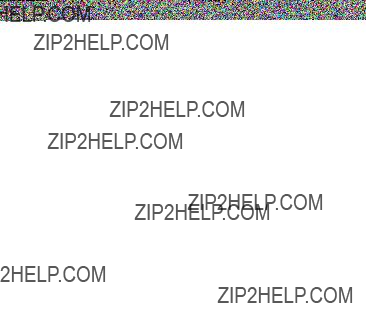
Printing banners or at other non-standard sizes
 Printing on Non-Standard Paper Sizes (Windows)
Printing on Non-Standard Paper Sizes (Windows)
This topic describes two ways to print on non-standard paper sizes.
???Printing by using Custom Size (???P.396)
???Printing by using Custom Media Size (???P.398)
Printing by using Custom Size
This section describes how to print using Custom Size based on the following example.
???Document: Scanned image
???Page size: Square of non-standard dimensions (430 ?? 430 mm [16.9 ?? 16.9 in])
???Paper: Sheets
???Paper type: Plain Paper
???Paper size: A square sheet (430 ?? 430 mm [16.9 ?? 16.9 in])
1.Load the square paper (430 ?? 430 mm [16.9 ?? 16.9 in]) in the printer.
2.Choose Print in the application menu.
3.Select the printer in the dialog box, and then open the printer driver dialog box. (???P.538)
4.Make sure the Main sheet is displayed.
5. In the A Media Type list, select the type of paper that is loaded. In this case, click Plain Paper.
6. After con???rming that D Easy Settings is selected, click Scanned Image in the E Print Target
list.
396 Enhanced Printing Options
Printing banners or at other non-standard sizes
7. Click the Page Setup tab to display the Page Setup sheet.
8. Click Cut Sheet in the L Media Source list.
9. Click Custom Size in the A Page Size list to display the Custom Size Settings dialog box.
10. Complete the following settings in the Custom Size Settings dialog box.
1.Select mm or inch in Units.
2.Enter ???430??? (16.9 in) in both Width and Height.
11.Click OK to close the Custom Size Settings dialog box.
12.Con???rm the print settings and print as desired.
 Note
Note
??? For tips on con???rming print settings, see ???Con???rming Print Settings (Windows)???. (???P.508)
Enhanced Printing Options 397
Printing banners or at other non-standard sizes
Printing by using Custom Media Size
This section describes how to print using Custom Media Size based on the following example. First, register a non-standard paper size called ???430 mm Square??? as a Custom Media Size.
???Document: Scanned image
???Page size: A square sheet (430 ?? 430 mm [16.9 ?? 16.9 in])
???Paper: Sheets
???Paper type: Plain Paper
???Paper size: A square sheet (430 ?? 430 mm [16.9 ?? 16.9 in])
1.Load the square paper (430 ?? 430 mm [16.9 ?? 16.9 in]) in the printer.
2.Choose Print in the application menu.
3.Select the printer in the dialog box, and then open the printer driver dialog box. (???P.538)
4.Make sure the Main sheet is displayed.
5. In the A Media Type list, select the type of paper that is loaded. In this case, click Plain Paper.
6. After con???rming that D Easy Settings is selected, click Scanned Image in the E Print Target
list.
7. Click the Page Setup tab to display the Page Setup sheet.
398 Enhanced Printing Options
Printing banners or at other non-standard sizes
8. Click O Size Options to display the Media Size Options dialog box.
9. Complete the following settings in the Media Size Options dialog box.
1.Enter a desired paper name in Custom Media Size Name. ???430 mm Square??? is used in this example.
2.Select mm or inch in Units.
3.Enter ???430??? (16.9 in) in both Width and Height.
 Note
Note
???If you select the Fix the Ratio of the Width to Height check box, after you enter a value in either Width or Height, the other value will be automatically applied based on the original aspect ratio.
10.Click Add to register ???430 mm Square.???
11.Click OK to close the Media Size Options dialog box.
12.Click Cut Sheet in the L Media Source list.
13.In the A Page Size list, click the size you added, "430 mm Square."
14.Con???rm the print settings and print as desired.
 Note
Note
???For tips on con???rming print settings, see ???Con???rming Print Settings (Windows)???. (???P.508)
Enhanced Printing Options 399

Printing banners or at other non-standard sizes
 Printing on Non-Standard Paper Sizes (Mac OS X)
Printing on Non-Standard Paper Sizes (Mac OS X)
This topic describes how to print after registering ???Custom Media Size??? based on the following example. Here, you will register a non-standard paper size named ???430*430??? in ???Custom Media Size???.
???Document: Scanned image
???Page size: A square sheet (430 ?? 430 mm [16.9 ?? 16.9 in])
???Paper: Sheets
???Paper type: Plain Paper
???Paper size: A square sheet (430 ?? 430 mm [16.9 ?? 16.9 in])
 Note
Note
???The following procedures are based on Mac OS X 10.4. The method of setting up non-standard paper sizes varies depending on the version of Mac OS X.
1.Create the document in the application.
2.Load the square paper (430 ?? 430 mm [16.9 ?? 16.9 in]) in the printer.
3.Choose Page Setup in the application menu to display the Page Attribute dialog box.
4. Select the printer in the B Format for list.
5. Click Manage Custom Sizes in the C Paper Size list to display the Custom Page Sizes
dialog box.
6. In Page Size, enter the height and width of the original. Here, enter ???43.00 cm??? in Height and
Width.
7. In Printer Margins, enter ???0.5??? for the top and side margins and ???2.3??? for the bottom margin. Here, measurements are entered in centimeters.
8. Double-click Untitled in the list at left in the Custom Page Sizes dialog box and enter the paper name-in this case, ???430*430???.
9. Click OK to close the Custom Page Sizes dialog box.
10. In the C Paper Size list, click the size of the original. In this case, click ???430*430???, the size you registered.
11. Click F OK to close the dialog box.
12. Choose Print in the application menu.
400 Enhanced Printing Options
Printing banners or at other non-standard sizes
13. Access the Main pane.
14. In the A Media Type list, select the type of paper that is loaded. In this case, click Plain Paper.
15. After con???rming that D Easy Settings is selected, click Scanned Image in the E Print Target list.
16. Access the Page Setup pane.
17. Click Cut Sheet in the A Media Source list.
18. In D Easy Settings, make sure ???430*430??? is displayed, as registered in Page Setup.
19. Con???rm the print settings, and then click M Print to start printing.
Note
??? For tips on con???rming print settings, see ???Con???rming Print Settings (Mac OS X)???. (???P.558)
Enhanced Printing Options 401

Printing banners or at other non-standard sizes
 Printing on Non-Standard Paper Sizes (Mac OS 9)
Printing on Non-Standard Paper Sizes (Mac OS 9)
This section describes how to print using Custom Media Size based on the following example. Here, you will register a non-standard paper size named ???430*430??? in Custom Media Size. Document:
???Document: Scanned image
???Page size: A square sheet (430 ?? 430 mm [16.9 ?? 16.9 in])
???Paper: Sheets
???Paper type: Plain Paper
???Paper size: A square sheet (430 ?? 430 mm [16.9 ?? 16.9 in])
1.Create the document in the application.
2.Load the square paper (430 ?? 430 mm [16.9 ?? 16.9 in]) in the printer.
3.Select the printer in Chooser.
4.Choose Page Setup from the application menu to display the Page Attribute dialog box.
5. Click Media Design in the Page Attribute list to display the Media Design pane.
6. Enter a paper name of your choice in B Custom Name. ???430*430??? is used in this example.
7. In F Media Size, enter the height and width of the original. Here, enter ???430??? in H Hght and G
Wid..
8. Click J Add to add the paper size named ???430*430???.
402 Enhanced Printing Options
Printing banners or at other non-standard sizes
9. Access the Page Attribute dialog box.
10. In the A Page Size list, click the size of the original. In this case, click ???430*430???, the size you registered.
11. In D Print Area Setting, click E Standard.
12. Click Cut Sheet in the E Standard list.
13. Click I OK to close the dialog box.
14. Choose Print in the application menu.
15. Make sure the Main pane is displayed.
16. In the C Media Type list, select the type of paper that is loaded. In this case, click Plain Paper.
17. After con???rming that EEasy Settings is selected, click Scanned Image in the FPrint Target list.
Enhanced Printing Options 403
Printing banners or at other non-standard sizes
18. Access the Finishing pane.
19. Click Cut Sheet in the A Media Source list.
20. Con???rm the print settings, and then click N Print to start printing.
Note
??? For tips on con???rming print settings, see ???Con???rming Print Settings (Mac OS 9)???. (???P.584)
404 Enhanced Printing Options

Printing banners or at other non-standard sizes
 Printing Vertical or Horizontal Banners (Large-Format Printing; Windows)
Printing Vertical or Horizontal Banners (Large-Format Printing; Windows)
This topic describes how to print a banner about ???ve times as long as the roll width based on the following example.
???Document: A horizontal banner created in Microsoft Word
???Page size: Non-standard (100 ?? 500 mm [3.4 ?? 19.7in])
???Paper: Roll
???Paper type: Plain Paper
???Roll paper width: 16 in (406.4 mm)
Follow the steps below to print a banner in either horizontal or vertical format.
1.Register a Custom Media Size.
Banners tend to be in non-standard sizes, so register a Custom Media Size. In this example, 100 ?? 500 mm (3.4 ?? 19.7 in) is registered.
2.In the application, create an original in the size you registered.
3.Print the banner, using the settings that correspond to banners.
Registering a Custom Media Size
This example describes how to register a paper size that is horizontally elongated and suitable for banners in either horizontal or vertical format.
1. Display the printer driver dialog box. (???P.204)
2. Click the Page Setup tab to display the Page Setup sheet.
3. Click Roll Paper in the L Media Source list.
4. Click O Size Options to display the Media Size Options dialog box.
5. Enter a desired paper name in Custom Media Size Name. ???My Horizontal Banner??? is used in this example.
6. In Units, click mm.
7. Under Media Size, enter ???100??? in Width and ???500??? in Height.
Enhanced Printing Options 405

Printing banners or at other non-standard sizes
8. Click Add to add the paper size of ???My Horizontal Banner.???
9. Click OK to close the Media Size Options dialog box.
10. Close the printer driver dialog box.
 Note
Note
???You can also specify a Custom Size as the paper size. Note that Custom Size settings are not available after you exit the application.
For more information, see ???Printing on Non-Standard Paper Sizes (Windows)???. (???P.396)
Creating the banner in the application
Follow the steps below to create the banner in Microsoft Word using the Custom Media Size you registered.
1. Start Microsoft Word.
2. Choose Page Setup from the File menu to display the Page Setup dialog box.
3. Under Paper Size, click the Custom Media Size you registered-"My Horizontal Banner" in this example.
 Important
Important
???If "My Horizontal Banner" is not listed, make sure this printer is selected as the printer to use.
???In applications such as Microsoft PowerPoint that do not enable you to choose registered paper sizes, use the custom paper size setting in ???Custom??? and specify 100 ?? 500 mm (3.4 ?? 19.7 in)
4.Set the printing orientation to horizontal
5.Create the banner.
Printing the banner
Follow the steps below to print the banner using the corresponding banner settings.
1. Choose Print in the Microsoft Word menu.
2. Select the printer in the dialog box, and then open the printer driver dialog box. (???P.538)
3. Make sure the Main sheet is displayed.
406 Enhanced Printing Options
Printing banners or at other non-standard sizes
4. In the A Media Type list, select the type of paper that is loaded. In this case, click Plain Paper.
5. After con???rming that D Easy Settings is selected, click Poster (Text, Illustrations) in the
E Print Target list.
6. Click the Page Setup tab to display the Page Setup sheet.
7. In the A Page Size list, click the size you registered, "My Horizontal Banner."
8. Select the C Enlarged/Reduced Printing check box.
 Note
Note
???If the Enlarged/Reduced Printing check box is not displayed on the Page Setup sheet, clear the
B Borderless Printing check box.
Enhanced Printing Options 407
Printing banners or at other non-standard sizes
9. Click Roll Paper in the L Media Source list.
10. After you click E Fit Roll Paper Width, the Information dialog box is displayed.
11. Select the width of the loaded roll in the Roll Paper Width list. In this case, click 16-in. Roll (406.4mm), and then click OK.
12. Con???rm the print settings and print as desired.
Note
??? For instructions on con???rming print settings, see ???Con???rming Print Settings (Windows)???. (???P.508)
 Note
Note
???If printing is unsuccessful, you may be able to print after completing the following setting.
1.On the Layout sheet, click M Special Settings to display the Special Settings dialog box.
2. In the FineZoom Settings list, click Yes.
408 Enhanced Printing Options

Printing banners or at other non-standard sizes
 Printing Vertical or Horizontal Banners (Large-Format Printing; Mac OS X)
Printing Vertical or Horizontal Banners (Large-Format Printing; Mac OS X)
This topic describes how to print a banner about ???ve times as long as the roll width based on the following example.
???Document: An original designed for a horizontal banner
???Page size: Non-standard (100 ?? 500 mm [3.4 ?? 19.7 in])
???Paper: Roll
???Paper type: Plain Paper
???Roll paper width: 16 inches (406.4 mm)
Follow the steps below to print a banner in either horizontal or vertical format.
1.In the application, create an original in the format of a horizontal or vertical banner.
2.Register a ???Custom Page Size.???
Banners tend to be in non-standard sizes, so register a ???Custom Page Size??? in Page Setup. In this example, 100 ?? 500 mm (3.4 ?? 19.7 in) is registered.
3.Print the banner, using the settings that correspond to banners.
 Note
Note
???The following procedures are based on Mac OS X 10.4. The method of setting up non-standard paper sizes varies depending on the version of Mac OS X.
Register a Custom Page Size
This example describes how to register and print using a page size that is horizontally elongated and suitable for banners in either horizontal or vertical format.
1. Create the document in the application.
2. Choose Page Setup in the application menu to display the Page Attribute dialog box.
3. Select the printer in the B Format for list.
4. Click Manage Custom Sizes in the C Paper Size list to display the Custom Page Sizes dialog box.
5. Double-click Untitled in the list at left, and then enter a name for the page size you want to register. Here, enter ???100*500.???
If the Untitled size is not visible in the list at left, click + below the list.
6. Under Page Size, enter ???10??? in Width and ???50??? in Height. Here, measurements are entered in centimeters.
Enhanced Printing Options 409
Printing banners or at other non-standard sizes
7. Specify the margins by entering ???0.3??? in Printer Margins. Here, measurements are entered in centimeters.
8. Click OK to close the Custom Page Sizes dialog box.
9. In the C Paper Size list, click the size of the original. In this case, click "100*500", the size you registered.
10. In D Orientation, click the icon of the document in landscape orientation.
11. Click F OK to close the dialog box.
Printing the banner
Follow the steps below to print the banner using the corresponding banner settings.
1. Choose Print in the application menu.
2. Access the Main pane.
3. In the A Media Type list, select the type of paper that is loaded. In this case, click Plain Paper.
4. After con???rming that D Easy Settings is selected, click Poster (Text, Illustrations) in the
E Print Target list.
410 Enhanced Printing Options
Printing banners or at other non-standard sizes
5. Access the Page Setup pane.
6. Click Roll Paper in the A Media Source list.
7. Make sure the width of the loaded roll is displayed in the B Roll Paper Width list-in this case, 16 in. (406.4mm).
 Note
Note
???If the width of the loaded roll is not displayed in B Roll Paper Width, click L Printer Information on the Main pane and update the printer information.
8. In C Page Size, make sure "100*500" is displayed, as registered in Page Setup.
9. Select the D Enlarged/Reduced Printing check box.
10. Click F Fit Roll Paper Width.
11. Con???rm the print settings, and then click M Print to start printing.
Note
??? For tips on con???rming print settings, see ???Con???rming Print Settings (Mac OS X)???. (???P.558)
Enhanced Printing Options 411
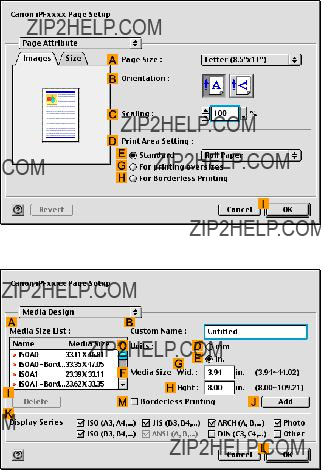
Printing banners or at other non-standard sizes
 Printing Vertical or Horizontal Banners (Large-Format Printing; Mac OS 9)
Printing Vertical or Horizontal Banners (Large-Format Printing; Mac OS 9)
This topic describes how to print a banner about ???ve times as long as the roll width based on the following example.
???Document: An original designed for a horizontal banner
???Page size: Non-standard (100??500 mm, [3.9??19.7 in])
???Paper: Roll
???Paper type: Plain Paper
???Roll paper width: 10 inches (254.0 mm)
The steps to print a vertical or horizontal banner are as follows.
1.In the application, create an original in the format of a horizontal or vertical banner.
2.Register a Custom Media Size in Media Design.
Banners tend to be in non-standard sizes, so register a Custom Media Size. In this example, 100??500 mm (3.9??19.7 in) is registered.
3.Print the banner, using the settings that correspond to banners.
Register a Custom Media Size
This example describes how to register and print using a page size that is horizontally elongated and suitable for banners in either horizontal or vertical format.
1. Create the document in the application.
2. Select the printer in Chooser.
3. Choose Page Setup in the application menu to display the Page Attribute dialog box.
4. Click Media Design in the Page Attribute list to display the Media Design pane.
5. Enter a desired paper name in BCustom Name. ???My Horizontal Banner??? is used in this example.
6. In C Units, click D mm.
412 Enhanced Printing Options
Printing banners or at other non-standard sizes
7. Under F Media Size, enter ???100??? in G Wid. and ???500??? in H Hght.
8. Click J Add to add the paper size of ???My Horizontal Banner.???
9. Access the Page Attribute dialog box.
10. In the A Page Size list, click the size you added, ???My Horizontal Banner.???
11. In B Orientation, click the icon of the document in landscape orientation.
12. Click I OK to close the dialog box.
Enhanced Printing Options 413
Printing banners or at other non-standard sizes
Print the banner
Follow these steps to print the banner using the corresponding banner settings.
1. Choose Print in the application menu.
2. Make sure the Main pane is displayed.
3. In the C Media Type list, select the type of paper that is loaded. In this case, click Plain Paper.
4. After con???rming that E Easy Settings is selected, click POP in the F Print Target list.
5. Access the Finishing pane.
6. Click Roll Paper in the A Media Source list.
414 Enhanced Printing Options
Printing banners or at other non-standard sizes
7. Make sure the width of the loaded roll is displayed in the B Roll Paper Width list-in this case, 10
in. (254.0mm).
 Note
Note
???If the width of the loaded roll is not displayed in B Roll Paper Width, click L Printer on the Main pane and update the printer information.
8. Access the Page Setup pane.
9. In B Page Size, make sure ???My Horizontal Banner??? is displayed, as registered in Media Design.
10. Select the C Enlarged/Reduced Printing check box.
11. Click E Fit Roll Paper Width.
12. Con???rm the print settings, and then click N Print to start printing.
Note
??? For tips on con???rming print settings, see ???Con???rming Print Settings (Mac OS 9)???. (???P.584)
Enhanced Printing Options 415
Tiling and multiple pages per sheet
Tiling and multiple pages per sheet
 Printing Multiple Originals Next to Each Other
Printing Multiple Originals Next to Each Other
By arranging originals from word-processing or spreadsheet programs or web browser screen shots next to each other on single sheets, you can create highly expressive presentation materials, easy-to-understand meeting materials, and a variety of other printed documents.
Free Layout (Windows)
Besides combining multiple pages in a single-page layout, you can combine originals from multiple ???les-even multiple source applications-in a single-page layout.
416 Enhanced Printing Options
Tiling and multiple pages per sheet
imagePROGRAF Free Layout (Macintosh)
Besides combining multiple pages in a single-page layout, you can combine originals from multiple ???les-even multiple source applications-in a single-page layout.
Important
??? The driver must be installed from the User Software CD-ROM to use this function.
For instructions on arranging originals from multiple applications, refer to the following topics.
???Printing Multiple Originals Next to Each Other (Windows) (???P.425)
???Printing Multiple Originals Next to Each Other (Mac OS X) (???P.427)
Enhanced Printing Options 417
Tiling and multiple pages per sheet
 Printing Multiple Pages Continuously
Printing Multiple Pages Continuously
You can print multiple pages as a single continuous image, without margins between pages.
Roll paper (banner)
 Important
Important
???This feature is only available with rolls. It cannot be used when printing on sheets.
???During banner printing, settings for conserving paper, number of copies, borderless printing, enlargement or reduction, and other layout-related settings are disregarded.
For instructions on borderless printing of photos and images at actual size, refer to the following topics, as appropriate for your computer and operating system.
???Printing Multiple Pages Continuously (Windows) (???P.429)
???Printing Multiple Pages Continuously (Mac OS X) (???P.430)
???Printing Multiple Pages Continuously (Mac OS 9) (???P.432)
418 Enhanced Printing Options
Tiling and multiple pages per sheet
 Printing Multiple Pages Per Sheet
Printing Multiple Pages Per Sheet
To conserve paper, you can print several pages of the original on a single sheet by reducing the original and dividing the sheet into areas for each page.
Page Layout
Specify a number of pages of the original to print on a single sheet, in a layout of multiple pages per sheet.
 Note
Note
???You can print up to 16 pages of the original on a single sheet.
???You can also change the page layout order and print page boundary lines, as desired.
 Important
Important
???This function cannot be combined with the following options.
???Borderless Printing
???Scaling Originals (Windows)
???Banner Printing (Windows)
For instructions on printing multiple pages per sheet, refer to the following topics, as appropriate for your computer and operating system.
???Printing Multiple Pages Per Sheet (Windows) (???P.434)
???Printing Multiple Pages Per Sheet (Mac OS X) (???P.436)
???Printing Multiple Pages Per Sheet (Mac OS 9) (???P.439)
Enhanced Printing Options 419
Tiling and multiple pages per sheet
 Printing Posters in Sections
Printing Posters in Sections
You can enlarge an original to print it in sections on several sheets. By assembling the printed sheets, you can create a poster larger than the maximum supported paper size of the printer.
Page Layout
Choose poster printing.
For instructions on printing large posters, refer to the following topics, as appropriate for your computer and operating system.
???Printing Large Posters (Windows) (???P.421)
???Printing Large Posters (Mac OS 9) (???P.423)
Note
??? This method of poster printing is supported in Windows and Mac OS 9.
420 Enhanced Printing Options
Tiling and multiple pages per sheet
 Printing Large Posters (Windows)
Printing Large Posters (Windows)
You can enlarge an original to print it in sections on several sheets. By assembling the printed sheets, you can create a poster larger than the maximum supported paper size of the printer. This topic describes how to enlarge an A2 original for printing it in sections on four sheets, based on the following example.
???Document: Poster
???Page size: A2 (420.0??594.0 mm [16.5 ?? 23.4 in])
???Paper: Sheets ( Manual )
???Paper Type: Glossy Paper
???Paper size: A2 (420.0??594.0 mm [16.5 ?? 23.4 in])
1.Choose Print in the application menu.
2.Select the printer in the dialog box, and then display the printer driver dialog box. (???P.538)
3.Make sure the Main sheet is displayed.
4. In the A Media Type list, select the type of paper that is loaded. In this case, click Glossy Paper.
5. Click Poster (Photos) or Poster (Text, Illustrations) in the E Print Target list.
6. Click the Page Setup tab to display the Page Setup sheet.
Enhanced Printing Options 421
Tiling and multiple pages per sheet
7. In A Page Size, click the size of the original as speci???ed in the application. In this case, click
ISO A2.
8. Click Manual in the L Media Source list.
9. Click the Layout tab to display the Layout sheet.
10. Select the A Page Layout check box.
11. Click Poster (2 x 2) in the B Page Layout list.
 Note
Note
???Follow the steps below to print only a portion of the poster as divided for printing.
1.Click C Set under B Page Layout to display the Pages to Print dialog box.
2.On the Pages to Print dialog box, clear the check boxes of the portion you do not want to print.
3.Click OK to close the Pages to Print dialog box.
12.Con???rm the print settings and print as desired.
 Note
Note
???For instructions on con???rming print settings, see ???Con???rming Print Settings (Windows)???. (???P.508)
422 Enhanced Printing Options

Tiling and multiple pages per sheet
 Printing Large Posters (Mac OS 9)
Printing Large Posters (Mac OS 9)
You can enlarge an original to print it in sections on several sheets. By assembling the printed sheets, you can create a poster larger than the maximum supported paper size of the printer. This topic describes how to enlarge an A2 original for printing it in sections on four sheets, based on the following example.
???Document: Poster
???Page size: A2 (420.0 ?? 594.0 mm [16.5 ?? 23.4 in])
???Paper: Sheets
???Paper type: Glossy Photo Paper
???Paper size: A2 (420.0 ?? 594.0 mm [16.5 ?? 23.4 in])
1.Select the printer in Chooser.
2.Choose Page Setup from the application menu to display the Page Attribute dialog box.
3. In the A Page Size list, click the size of the original. In this case, click ISO A2.
4. In D Print Area Setting, click E Standard.
5. Click Cut Sheet in the E Standard list.
6. Click I OK to close the dialog box.
7. Choose Print in the application menu.
8. Make sure the Main pane is displayed.
9. In the C Media Type list, select the type of paper that is loaded. In this case, click Glossy Photo Paper.
Enhanced Printing Options 423
Tiling and multiple pages per sheet
10. After con???rming that E Easy Settings is selected, click Poster (Graphic Image) in the F Print Target list.
11. Access the Page Setup pane.
12. Select the I Page Layout check box.
13. Click Poster (2 x 2) in the I Page Layout list.
14. In the Pages to Print dialog box, clear the check boxes of any portion you do not want to print.
15. Access the Finishing pane.
16. Click Cut Sheet in the A Media Source list.
17. Con???rm the print settings, and then click N Print to start printing.
Note
??? For tips on con???rming print settings, see ???Con???rming Print Settings (Mac OS 9)???. (???P.584)
424 Enhanced Printing Options
Tiling and multiple pages per sheet
 Printing Multiple Originals Next to Each Other (Windows)
Printing Multiple Originals Next to Each Other (Windows)
This topic describes how to arrange multiple originals using the Free Layout function.
1. Choose Print in the application menu.
2. Select the printer in the dialog box, and then open the printer driver dialog box. (???P.538)
3. Make sure the Main sheet is displayed.
4. Click the Layout tab to display the Layout sheet.
5. Select the A Page Layout check box.
6. Click Free Layout in the B Page Layout list.
Enhanced Printing Options 425
Tiling and multiple pages per sheet
7. When you attempt to print, the imagePROGRAF Free Layout window is displayed. (At this point, the document will not be printed yet.)
8. Edit and rearrange the image in the imagePROGRAF Free Layout window as desired.
 Important
Important
???Without closing the imagePROGRAF Free Layout window, repeat steps 1-7 to arrange originals from multiple applications on the same page.
 Note
Note
???For instructions on editing and rearranging images, refer to the imagePROGRAF Free Layout help topic.
9.Print from the imagePROGRAF Free Layout menu.
Note
??? For details on imagePROGRAF Free Layout functions, refer to Free Layout Guide .
426 Enhanced Printing Options
Tiling and multiple pages per sheet
 Printing Multiple Originals Next to Each Other (Mac OS X)
Printing Multiple Originals Next to Each Other (Mac OS X)
This topic describes how to use the Free Layout function to arrange multiple originals next to each other before printing.
1. Choose Print in the application menu.
2. Click PDF and select Canon imagePROGRAF Free Layout.
3. The Canon imagePROGRAF Free Layout window is displayed.
Enhanced Printing Options 427
Tiling and multiple pages per sheet
4. Edit and rearrange the image in the Canon imagePROGRAF Free Layout window as desired.
 Important
Important
???Without closing the Canon imagePROGRAF Free Layout window, repeat steps 1-7 to arrange originals from multiple applications on the same page.
 Note
Note
???For instructions on editing and rearranging images, refer to the Canon imagePROGRAF Free Layout help topic.
5.Print from the Canon imagePROGRAF Free Layout menu.
 Note
Note
???For details on Canon imagePROGRAF Free Layout functions, refer to Free Layout Guide .
428 Enhanced Printing Options
Tiling and multiple pages per sheet
 Printing Multiple Pages Continuously (Windows)
Printing Multiple Pages Continuously (Windows)
This topic describes how to print multiple pages as a single continuous image, without margins between pages.
 Important
Important
???This feature is only available with rolls. It cannot be used when printing on sheets.
???During banner printing, settings for conserving paper, number of copies, borderless printing, enlargement or reduction, and other layout-related settings are disregarded.
1.Choose Print in the application menu.
2.Select the printer in the dialog box, and then display the printer driver dialog box. (???P.538)
3.Make sure the Main sheet is displayed.
4. In the A Media Type list, click the type of paper that is loaded.
5. Click the Page Setup tab to display the Page Setup sheet.
6. Click Roll Paper (Banner) in the L Media Source list.
7. Con???rm the print settings and start printing.
Note
??? For tips on con???rming print settings, see ???Con???rming Print Settings (Windows)???. (???P.508)
Enhanced Printing Options 429
Tiling and multiple pages per sheet
 Printing Multiple Pages Continuously (Mac OS X)
Printing Multiple Pages Continuously (Mac OS X)
This topic describes how to print multiple pages as a single continuous image, without margins between pages.
 Important
Important
???This feature is only available with rolls. It cannot be used when printing on sheets.
???During banner printing, settings for conserving paper, number of copies, borderless printing, enlargement or reduction, and other layout-related settings are disregarded.
1.Choose Page Setup in the application menu to display the Page Attribute dialog box.
2. Select the printer in the B Format for list.
3. Click the original size in the C Paper Size list.
4. Click F OK to close the dialog box.
5. In the source application menu, choose Print.
6. Access the Main pane.
7. In the A Media Type list, click the type of paper that is loaded.
8. Make your selection in the E Print Target list.
430 Enhanced Printing Options
Tiling and multiple pages per sheet
9. Access the Page Setup pane.
10. Click Roll Paper (Banner) in the A Media Source list.
11. Con???rm the print settings, and then click M Print to start printing.
Note
??? For tips on con???rming print settings, see ???Con???rming Print Settings (Mac OS X)???. (???P.558)
Enhanced Printing Options 431
Tiling and multiple pages per sheet
 Printing Multiple Pages Continuously (Mac OS 9)
Printing Multiple Pages Continuously (Mac OS 9)
This topic describes how to print multiple pages as a single continuous image, without margins between pages.
 Important
Important
???This feature is only available with rolls. It cannot be used when printing on sheets.
???During banner printing, settings for conserving paper, number of copies, borderless printing, enlargement or reduction, and other layout-related settings are disregarded.
1.Select the printer in Chooser.
2.Choose Page Setup from the application menu to display the Page Attribute dialog box.
3. Click the original size in the A Page Size list.
4. Click I OK to close the dialog box.
5. In the source application menu, choose Print.
6. Make sure the Main pane is displayed.
7. In the C Media Type list, click the type of paper that is loaded.
8. Make your selection in the F Print Target list.
432 Enhanced Printing Options
Tiling and multiple pages per sheet
9. Access the Finishing pane.
10. Click Roll Paper (Banner) in the A Media Source list.
11. Con???rm the print settings, and then click N Print to start printing.
Note
??? For tips on con???rming print settings, see ???Con???rming Print Settings (Mac OS 9)???. (???P.584)
Enhanced Printing Options 433
Tiling and multiple pages per sheet
 Printing Multiple Pages Per Sheet (Windows)
Printing Multiple Pages Per Sheet (Windows)
This topic describes how to print four pages of originals together on a single sheet based on the following example.
???Document: Any Type
???Page size: A3 (297.0??420.0 mm [11.7??16.5 in])
???Paper: Roll
???Paper type: Plain Paper
???Roll paper width: A2/A3 roll (420.0 mm [16.5 in])
1.Choose Print in the application menu.
2.Select the printer in the dialog box, and then open the printer driver dialog box. (???P.538)
3.Make sure the Main sheet is displayed.
4. In the A Media Type list, select the type of paper that is loaded. In this case, click Plain Paper.
5. Select the printing application in the E Print Target list.
6. Click the Page Setup tab to display the Page Setup sheet.
7. In A Page Size, click the size of the original as speci???ed in the application software. In this case, click ISO A4 or Letter (8.5"x11").
434 Enhanced Printing Options
Tiling and multiple pages per sheet
8. Click Roll Paper in the L Media Source list.
9. Select the width of the loaded roll in the M Roll Paper Width list-in this case, ISO A2/A3 Roll (420.0mm).
10. Click the Layout tab to display the Layout sheet.
11. Select the A Page Layout check box.
12. Click 4 Pages/Sheet in the B Page Layout list.
 Note
Note
???You can select the layout order for placing four pages on a sheet and a frame border in the Page Layout Printing dialog box by clicking C Set.
13.Con???rm the print settings and print as desired.
 Note
Note
???For tips on con???rming print settings, see ???Con???rming Print Settings (Windows)???. (???P.508)
Enhanced Printing Options 435
Tiling and multiple pages per sheet
 Printing Multiple Pages Per Sheet (Mac OS X)
Printing Multiple Pages Per Sheet (Mac OS X)
This topic describes how to print four pages of originals together on a single sheet based on the following example.
???Document: Any Type
???Page size: A3 (297.0 ?? 420.0 mm [11.7 ?? 16.5 in])
???Paper: Roll
???Paper type: Plain Paper
???Roll paper width: A2/A3 roll (420.0 mm [16.5 in])
1.Choose Page Setup in the application menu to display the Page Attribute dialog box.
2. Select the printer in the B Format for list.
3. In the C Paper Size list, click the size of the original. In this case, click ISO A3.
4. Click F OK to close the dialog box.
5. Choose Print in the application menu.
6. Access the Layout pane.
7. Click 4 in the A Pages per Sheet list.
 Note
Note
???You can choose the layout order and specify a boundary line for the four pages in B Layout Direction and C Border (or Border ).
436 Enhanced Printing Options
Tiling and multiple pages per sheet
8. Access the Main pane.
9. In the A Media Type list, select the type of paper that is loaded. In this case, click Plain Paper.
10. Select the printing application in the E Print Target list.
11. Access the Page Setup pane.
12. Click Roll Paper in the A Media Source list.
Enhanced Printing Options 437
Tiling and multiple pages per sheet
13. Make sure the width of the loaded roll is displayed in the B Roll Paper Width list-in this case,
ISO A2/A3 (420.0mm).
 Note
Note
???If the width of the loaded roll is not displayed in B Roll Paper Width, click L Printer Information on the Main pane and update the printer information.
14. Make sure C Page Size shows the original size as speci???ed in C Paper Size in the Page Attribute dialog box-in this case, ISO A3.
15. Con???rm the print settings, and then click M Print to start printing.
Note
??? For tips on con???rming print settings, see ???Con???rming Print Settings (Mac OS X)???. (???P.558)
438 Enhanced Printing Options
Tiling and multiple pages per sheet
 Printing Multiple Pages Per Sheet (Mac OS 9)
Printing Multiple Pages Per Sheet (Mac OS 9)
This topic describes how to print four pages of originals together on a single sheet based on the following example.
???Document: Any Type
???Page size: A3 (297.0 ?? 420.0 mm [11.7 ?? 16.5 in])
???Paper: Roll
???Paper type: Plain Paper
???Roll paper width: A2/A3 roll (420.0 mm [16.5 in])
1.Select the printer in Chooser.
2.Choose Page Setup from the application menu to display the Page Attribute dialog box.
3. In the A Page Size list, click the size of the original. In this case, click ISO A3.
4. Click I OK to close the dialog box.
5. Choose Print in the application menu.
6. Make sure the Main pane is displayed.
7. In the C Media Type list, select the type of paper that is loaded. In this case, click Plain Paper.
8. Select the print target in the F Print Target list.
Enhanced Printing Options 439
Tiling and multiple pages per sheet
9. Access the Page Setup pane.
10. Select the I Page Layout check box.
11. Click 4 Pages/Sheet in the I Page Layout list.
 Note
Note
???You can choose the layout order and specify a boundary line for the four pages in J Layout Direction and K Page Border.
12.Access the Finishing pane.
13. Click Roll Paper in the A Media Source list.
440 Enhanced Printing Options
Tiling and multiple pages per sheet
14. Make sure the width of the loaded roll is displayed in the B Roll Paper Width list-in this case,
ISO A2/A3 (420.0mm).
 Note
Note
???If the width of the loaded roll is not displayed in B Roll Paper Width, click L Printer on the Main pane and update the printer information.
15. Con???rm the print settings, and then click N Print to start printing.
Note
??? For tips on con???rming print settings, see ???Con???rming Print Settings (Mac OS 9)???. (???P.584)
Enhanced Printing Options 441
Centering originals
Centering originals
 Printing Originals Centered on Rolls
Printing Originals Centered on Rolls
You can print originals centered on a page-for example, if the paper is larger than the original, or if you are reducing the original.
Centering originals relative to roll paper width
If you use originals smaller than the roll paper width, you can center them relative to the width when printing.
Print Centered
Aligns the center of the original with the center of the roll, relative to the width.
For instructions on centering originals when printing on rolls, refer to the following topics, as appropriate for your computer and operating system.
???Printing Originals Centered on Rolls (Windows) (???P.444)
???Printing Originals Centered on Rolls (Mac OS X) (???P.446)
???Printing Originals Centered on Rolls (Mac OS 9) (???P.449)
442 Enhanced Printing Options
Centering originals
 Printing Originals Centered on Sheets
Printing Originals Centered on Sheets
You can print originals centered on a page-for example, if the paper is larger than the original, or if you are reducing the original.
Centering originals on sheets
If you use paper larger than the original size or print originals after reduction, the printed images may be aligned in the upper-left corner of the paper. In this case, you can center originals on sheets when printing.
Print Centered
Aligns the center of the original with the center of the sheet.
For instructions on centering originals when printing on sheets, refer to the following topics, as appropriate for your computer and operating system.
???Printing Originals Centered on Sheets (Windows) (???P.452)
???Printing Originals Centered on Sheets (Mac OS X) (???P.454)
???Printing Originals Centered on Sheets (Mac OS 9) (???P.456)
Enhanced Printing Options 443
Centering originals
 Printing Originals Centered on Rolls (Windows)
Printing Originals Centered on Rolls (Windows)
This topic describes how to center originals before printing on rolls based on the following example.
???Document: Any type
???Page size: A4 (210.0??297.0 mm)/Letter (8.3 ?? 11.7 in)
???Paper: Roll
???Paper type: Plain Paper
???Roll width: A3/A4 roll (297.0 mm [11.7 in])
1.Choose Print in the application menu.
2.Select the printer in the dialog box, and then display the printer driver dialog box. (???P.538)
3.Make sure the Main sheet is displayed.
4. In the A Media Type list, select the type of paper that is loaded. In this case, click Plain Paper.
5. Select the print target in the E Print Target list.
6. Click the Page Setup tab to display the Page Setup sheet.
7. In the A Page Size list, click the size of the original as speci???ed in the application. In this case, click ISO A4 or Letter (8.5"x11").
444 Enhanced Printing Options
Centering originals
8. Click Roll Paper in the L Media Source list.
9. Select the width of the loaded roll in the M Roll Paper Width list-in this case, ISO A3/A4 Roll (297.0mm).
10. Click the Layout tab to display the Layout sheet.
11. Select the G Print Centered check box.
12. Con???rm the print settings and print as desired.
Note
??? For tips on con???rming print settings, see ???Con???rming Print Settings (Windows)???. (???P.508)
Enhanced Printing Options 445
Centering originals
 Printing Originals Centered on Rolls (Mac OS X)
Printing Originals Centered on Rolls (Mac OS X)
This topic describes how to center originals before printing on rolls based on the following example.
???Document: Any type
???Page size: A4 (210.0??297.0mm)/Letter (8.3 ?? 11.7 in)
???Paper: Roll
???Paper type: Plain Paper
???Roll paper width: A3/A4 roll (297.00 mm [11.7 in])
1.Choose Page Setup from the application menu to display the Page Attribute dialog box.
2. Select the print target in the B Format for list.
3. In C Paper Size, click the size of the original. In this case, click ISO A4.
4. Click F OK to close the dialog box.
5. Choose Print in the application menu.
6. Access the Main pane.
7. In the A Media Type list, select the type of paper that is loaded. In this case, click Plain Paper.
8. Select the print target in the E Print Target list.
446 Enhanced Printing Options
Centering originals
9. Access the Page Setup pane.
10. Click Roll Paper in the A Media Source list.
11. Make sure the width of the loaded roll is displayed in the B Roll Paper Width list-in this case,
10-in. Roll.
 Note
Note
???If the width of the loaded roll is not displayed in B Roll Paper Width, click L Printer Information on the Main pane and update the printer information.
Enhanced Printing Options 447
Centering originals
12. Make sure the C Page Size setting matches the original size as selected in C Paper Size in the
Page Attribute dialog box-in this case, ISO A4.
13. Select the J Print Centered check box.
14. Con???rm the print settings, and click M Print to start printing.
Note
??? For tips on con???rming print settings, see ???Con???rming Print Settings (Mac OS X)???. (???P.558)
448 Enhanced Printing Options
Centering originals
 Printing Originals Centered on Rolls (Mac OS 9)
Printing Originals Centered on Rolls (Mac OS 9)
This topic describes how to center originals before printing on rolls based on the following example.
???Document: Any type
???Page size: A4 (210.0??297.0 mm)/Letter (8.3 ?? 11.7 in)
???Paper: Roll
???Paper type: Plain Paper
???Roll paper width: A3/A4 roll (297.0 mm [11.7 in])
1.Select the printer in Chooser.
2.Choose Page Setup from the application menu to display the Page Attribute dialog box.
3. In A Page Size, click the size of the original. In this case, click ISO A4.
4. Click I OK to close the dialog box.
5. Choose Print in the application menu.
6. Make sure the Main pane is displayed.
7. In the C Media Type list, select the type of paper that is loaded. In this case, click Plain Paper.
8. Select the print target in the F Print Target list.
Enhanced Printing Options 449
Centering originals
9. Access the Page Setup pane.
10. Make sure the B Page Size setting matches the original size as selected in A Page Size in the
Page Attribute dialog box-in this case, ISO A4.
11. Access the Finishing pane.
450 Enhanced Printing Options
Centering originals
12. Click Roll Paper in the A Media Source list.
13. Make sure the width of the loaded roll is displayed in B Roll Paper Width -in this case, ISO
A3/A4 (297.0mm).
 Note
Note
???If the width of the loaded roll is not displayed in B Roll Paper Width, click L Printer on the Main pane and update the printer information.
14. Select the F Print Centered check box.
15. Con???rm the print settings, and click N Print to start printing.
Note
??? For tips on con???rming print settings, see ???Con???rming Print Settings (Mac OS 9)???. (???P.584)
Enhanced Printing Options 451
Centering originals
 Printing Originals Centered on Sheets (Windows)
Printing Originals Centered on Sheets (Windows)
This topic describes how to reduce an original 50% for printing centered on a sheet.
???Document: Any Type
???Page size: A4 (210.0 ?? 297.0 mm)/Letter (8.3 ?? 11.7 in)
???Paper: Sheets
???Paper type: Plain Paper
???Paper size: A4 (210.0 ?? 297.0 mm)/Letter (8.3 ?? 11.7 in)
1.Choose Print in the application menu.
2.Select the printer in the dialog box, and then open the printer driver dialog box. (???P.538)
3.Make sure the Main sheet is displayed.
4. In the A Media Type list, select the type of paper that is loaded. In this case, click Plain Paper.
5. Select the printing application in the E Print Target list.
6. Click the Page Setup tab to display the Page Setup sheet.
7. In the A Page Size list, click the size of the original as speci???ed in the application. In this case, click ISO A4 or Letter (8.5"x11").
452 Enhanced Printing Options
Centering originals
8. Select the C Enlarged/Reduced Printing check box.
9. Click Match Page Size in the G Media Size list.
10. Click F Scaling and enter ???50.???
11. Click Cut Sheet in the L Media Source list.
12. Click the Layout tab to display the Layout sheet.
13. Select the G Print Centered check box.
14. Con???rm the print settings and print as desired.
Note
??? For tips on con???rming print settings, see ???Con???rming Print Settings (Windows)???. (???P.508)
 Important
Important
???If you have selected Cut Sheet as the media source, follow the instructions on the printer control panel to enter the paper size.
Enhanced Printing Options 453
Centering originals
 Printing Originals Centered on Sheets (Mac OS X)
Printing Originals Centered on Sheets (Mac OS X)
This topic describes how to center originals for printing on sheets, based on the following example.
???Document: Any type
???Page size: A4/Letter
???Paper: Sheets
???Paper type: Plain Paper
???Paper size: Non-standard
1.Choose Page Setup from the application menu to display the Page Attribute dialog box.
2. In the C Paper Size list, click the size of the original. In this case, click ISO A4.
3. Click F OK to close the dialog box.
4. In the application software menu, choose Print.
5. Access the Main pane.
6. In the A Media Type list, select the type of paper that is loaded. In this case, click Plain Paper.
7. Select the printing application in the E Print Target list.
454 Enhanced Printing Options
Centering originals
8. Access the Page Setup pane.
9. Click Cut Sheet in the A Media Source list.
10. Make sure C Page Size shows the original size as speci???ed in C Paper Size in the Page Attribute dialog box-in this case, ISO A4.
11. Select the J Print Centered check box.
12. Con???rm the print settings, and then click M Print to start printing.
Note
??? For tips on con???rming print settings, see ???Con???rming Print Settings (Mac OS X)???. (???P.558)
 Important
Important
???If you have selected Cut Sheet as the media source, follow the instructions on the printer control panel to enter the paper size.
Enhanced Printing Options 455
Centering originals
 Printing Originals Centered on Sheets (Mac OS 9)
Printing Originals Centered on Sheets (Mac OS 9)
This topic describes how to center originals for printing on sheets, based on the following example.
???Document: Any type
???Page size: A4/Letter
???Paper: Sheets ( Manual )
???Paper type: Plain Paper
???Paper size: Non-standard
1.Choose Page Setup from the source application menu to display the Page Attribute dialog box.
2. In the A Page Size list, click the size of the original. In this case, click ISO A4.
3. Click I OK to close the dialog box.
4. In the source application menu, choose Print.
5. Make sure the Main pane is displayed.
6. In the C Media Type list, select the type of paper that is loaded. In this case, click Plain Paper.
7. Select the printing application in the F Print Target list.
456 Enhanced Printing Options
Centering originals
8. Access the Page Setup pane.
9. Make sure B Page Size shows the original size as speci???ed in Page Setup in the Page Attribute dialog box-in this case, ISO A4.
10. Access the Finishing pane.
Enhanced Printing Options 457
Centering originals
11. Click Cut Sheet in the A Media Source list.
12. Select the F Print Centered check box.
13. Con???rm the print settings, and then click N Print to start printing.
Note
??? For tips on con???rming print settings, see ???Con???rming Print Settings (Mac OS 9)???. (???P.584)
 Important
Important
???If you have selected Cut Sheet as the media source, follow the instructions on the printer control panel to enter the paper size.
458 Enhanced Printing Options
Conserving roll paper
Conserving roll paper
 Conserving Roll Paper by Rotating Originals 90 Degrees
Conserving Roll Paper by Rotating Originals 90 Degrees
You can conserve roll paper by specifying particular settings as suitable for your original.
Rotate Page 90 degrees (Conserve Paper)
When originals are printed in portrait orientation, the original is rotated 90 degrees before printing if it ???ts within the roll width. This enables you to conserve paper.
 Important
Important
???If the page would exceed the roll paper width after rotation, use this function with Scale to ???t Roll Paper Width to print rotated pages.
For tips on conserving roll paper, refer to the following topics, as appropriate for your computer and operating system.
???Conserving Roll Paper by Rotating Originals 90 Degrees (Windows) (???P.468)
???Conserving Roll Paper by Rotating Originals 90 Degrees (Mac OS X) (???P.470)
???Conserving Roll Paper by Rotating Originals 90 Degrees (Mac OS 9) (???P.473)
Enhanced Printing Options 459

Conserving roll paper
 Conserving Roll Paper by Printing Originals Without Top and Bottom Margins
Conserving Roll Paper by Printing Originals Without Top and Bottom Margins
You can conserve roll paper by specifying particular settings as suitable for your original.
No Spaces at Top or Bottom (Conserve Paper)
You can print without feeding the paper for blank portions of originals if there are top and bottom margins in originals. This enables you to conserve as much paper as the size of the margins.
 Important
Important
???Printing without the top and bottom margins is not supported in the following cases.
???Banner printing
???If you have chosen poster as the type of page layout
 Note
Note
???Even during borderless printing, you can print without the top and bottom margins.
???Printing without the top and bottom margins may cause inconsistency in the size of printed documents, depending on the layout of images or text in your originals.
For tips on conserving roll paper, refer to the following topics, as appropriate for your computer and operating system.
???Conserving Roll Paper by Printing Originals Without Top and Bottom Margins (Windows) (???P.461)
???Conserving Roll Paper by Printing Originals Without Top and Bottom Margins (Mac OS X) (???P.463)
???Conserving Roll Paper by Printing Originals Without Top and Bottom Margins (Mac OS 9) (???P.466)
460 Enhanced Printing Options
Conserving roll paper
 Conserving Roll Paper by Printing Originals Without Top and Bottom Margins (Windows)
Conserving Roll Paper by Printing Originals Without Top and Bottom Margins (Windows)
This topic describes how to conserve roll paper when printing originals that have a top and bottom margin, based on the following example.
???Document: Any type
???Page size: A4 (210.0??297.0mm)/Letter (8.3 ?? 11.7 in)
???Paper: Roll
???Paper type: Plain Paper
???Roll paper width: A3/A4 roll (297.0 mm [11.7 in])
1.Choose Print in the application menu.
2.Select the printer in the dialog box, and then display the printer driver dialog box. (???P.538)
3.Make sure the Main sheet is displayed.
4. In the A Media Type list, select the type of paper that is loaded. In this case, click Plain Paper.
5. Click the Page Setup tab to display the Page Setup sheet.
Enhanced Printing Options 461
Conserving roll paper
6. In the A Page Size list, click the size of the original as speci???ed in the application. In this case, click ISO A4 or Letter (8.5"x11").
7. Click Roll Paper in the L Media Source list.
8. Select the width of the loaded roll in the M Roll Paper Width list-in this case, ISO A3/A4 Roll (297.0mm).
9. Click the Layout tab to display the Layout sheet.
10. Select the I No Spaces at Top or Bottom (Conserve Paper) check box.
11. Con???rm the print settings and print as desired.
Note
??? For tips on con???rming print settings, see ???Con???rming Print Settings (Windows)???. (???P.508)
462 Enhanced Printing Options
Conserving roll paper
 Conserving Roll Paper by Printing Originals Without Top and Bottom Margins (Mac OS X)
Conserving Roll Paper by Printing Originals Without Top and Bottom Margins (Mac OS X)
This topic describes how to conserve roll paper when printing originals that have a top and bottom margin, based on the following example.
???Document: Any type
???Page size: A4 (210.0??297.0 mm)/Letter (8.3 ?? 11.7 in)
???Paper: Roll
???Paper type: Plain Paper
???Roll paper width: A3/A4 roll (297.0 mm [11.7 in])
1.Choose Page Setup from the application menu to display the Page Attribute dialog box.
2. Select the print target in the B Format for list.
3. In C Paper Size, click the size of the original. In this case, click ISO A4.
4. Click F OK to close the dialog box.
5. Choose Print in the application menu.
6. Access the Main pane.
Enhanced Printing Options 463
Conserving roll paper
7. In the A Media Type list, select the type of paper that is loaded. In this case, click Plain Paper.
8. Access the Page Setup pane.
9. Click Roll Paper in the A Media Source list.
10. Make sure the width of the loaded roll is displayed in B Roll Paper Width -in this case, ISO A3/A4 (297.0mm).
 Note
Note
???If the width of the loaded roll is not displayed in B Roll Paper Width, click L Printer Information on the Main pane and update the printer information.
464 Enhanced Printing Options
Conserving roll paper
11. Make sure the C Page Size setting matches the original size as selected in C Paper Size in the
Page Attribute dialog box-in this case, ISO A4.
12. Select the K No Spaces at Top or Bottom check box.
13. Con???rm the print settings, and click M Print to start printing.
Note
??? For tips on con???rming print settings, see ???Con???rming Print Settings (Mac OS X)???. (???P.558)
Enhanced Printing Options 465
Conserving roll paper
 Conserving Roll Paper by Printing Originals Without Top and Bottom Margins (Mac OS 9)
Conserving Roll Paper by Printing Originals Without Top and Bottom Margins (Mac OS 9)
This topic describes how to conserve roll paper when printing originals that have a top and bottom margin, based on the following example.
???Document: Any type
???Page size: A4 (210.0??297.0 mm)/Letter (8.3 ?? 11.7 in)
???Paper: Roll
???Paper type: Plain Paper
???Roll paper width: A3/A4 roll (297.0 mm [11.7 in])
1.Select the printer in Chooser.
2.Choose Page Setup from the application menu to display the Page Attribute dialog box.
3. In A Page Size, click the size of the original. In this case, click ISO A4.
4. Click I OK to close the dialog box.
5. Choose Print in the application menu.
6. Make sure the Main pane is displayed.
466 Enhanced Printing Options
Conserving roll paper
7. In the C Media Type list, select the type of paper that is loaded. In this case, click Plain Paper.
8. Access the Finishing pane.
9. Click Roll Paper in the A Media Source list.
10. Make sure the width of the loaded roll is displayed in B Roll Paper Width -in this case, ISO A3/A4 (297.0mm).
 Note
Note
???If the width of the loaded roll is not displayed in B Roll Paper Width, click L Printer on the Main pane and update the printer information.
11. Select the H No Spaces at Top or Bottom check box.
12. Con???rm the print settings, and click N Print to start printing.
Note
??? For tips on con???rming print settings, see ???Con???rming Print Settings (Mac OS 9)???. (???P.584)
Enhanced Printing Options 467
Conserving roll paper
 Conserving Roll Paper by Rotating Originals 90 Degrees (Windows)
Conserving Roll Paper by Rotating Originals 90 Degrees (Windows)
This topic describes how to conserve paper by rotating originals 90 degrees before printing, based on the following example.
???Document: Any type
???Page size: A4 (210.0??297.0 mm)/Letter (8.3??11.7 in)
???Paper: Roll
???Paper type: Plain Paper
???Roll paper width: A3/A4 roll (297.0 mm [11.7 in])
This example illustrates how to rotate an A4 (210.0??297.0 mm)/Letter (8.3??11.7 in) original in portrait orientation 90 degrees to ???t within the width of A3/A4 roll paper (297.0 mm [11.7 in]), which enables you to conserve paper.
1. Choose Print in the application menu.
2. Select the printer in the dialog box, and then open the printer driver dialog box. (???P.538)
3. Make sure the Main sheet is displayed.
4. In the A Media Type list, select the type of paper that is loaded. In this case, click Plain Paper.
5. Click the Page Setup tab to display the Page Setup sheet.
468 Enhanced Printing Options
Conserving roll paper
6. In the A Page Size list, click the size of the original as speci???ed in the application. In this case, click ISO A4 or Letter (8.5"x11").
7. Click Roll Paper in the L Media Source list.
8. Select the width of the loaded roll in the M Roll Paper Width list-in this case, ISO A3/A4 Roll
(297.0mm).
9. Select the K Rotate Page 90 degrees (Conserve Paper) check box.
10. Con???rm the print settings and print as desired.
Note
??? For tips on con???rming print settings, see ???Con???rming Print Settings (Windows)???. (???P.508)
Enhanced Printing Options 469
Conserving roll paper
 Conserving Roll Paper by Rotating Originals 90 Degrees (Mac OS X)
Conserving Roll Paper by Rotating Originals 90 Degrees (Mac OS X)
This topic describes how to conserve roll paper by rotating originals 90 degrees before printing, based on the following example.
???Document: Any type
???Page Size: A4 (210.0??297.0 mm)/Letter (8.3 ?? 11.7 in)
???Paper: Roll
???Paper type: Plain Paper
???Roll paper width: A3/A4 roll (297.0 mm [11.7 in])
This example illustrates how to rotate an A4 (210.0??297.0 mm)/Letter (8.3 ?? 11.7 in) original in portrait orientation 90 degrees to ???t within the width of A3/A4 roll (297.0 mm [11.7 in]), which enables you to conserve paper.
1. Choose Page Setup in the application menu to display the Page Attribute dialog box.
2. Select the printer in the B Format for list.
3. In the C Paper Size list, click the size of the original. In this case, click ISO A4.
4. Click F OK to close the dialog box.
5. Choose Print in the application menu.
6. Access the Main pane.
470 Enhanced Printing Options
Conserving roll paper
7. In the A Media Type list, select the type of paper that is loaded. In this case, click Plain Paper.
8. Access the Page Setup pane.
9. Click Roll Paper in the A Media Source list.
10. Make sure the width of the loaded roll is displayed in B Roll Paper Width -in this case, ISO A3/A4 (297.0mm).
 Note
Note
???If the width of the loaded roll is not displayed in B Roll Paper Width, click L Printer Information on the Main pane and update the printer information.
Enhanced Printing Options 471
Conserving roll paper
11. Make sure the C Page Size setting matches the original size as selected in C Paper Size in the
Page Attribute dialog box-in this case, ISO A4.
12. Select the L Rotate Page 90 degrees check box.
13. Con???rm the print settings, and then click M Print to start printing.
Note
??? For tips on con???rming print settings, see ???Con???rming Print Settings (Mac OS X)???. (???P.558)
472 Enhanced Printing Options
Conserving roll paper
 Conserving Roll Paper by Rotating Originals 90 Degrees (Mac OS 9)
Conserving Roll Paper by Rotating Originals 90 Degrees (Mac OS 9)
This topic describes how to conserve roll paper by rotating originals 90 degrees before printing, based on the following example.
???Document: Any type
???Page size: A4 (210.0??297.0 mm)/Letter (8.3 ?? 11.7 in)
???Paper: Roll
???Paper type: Plain Paper
???Roll width: A3/A4 roll (297.0 mm [11.7 in])
This example illustrates how to rotate an A4 (210.0??297.0 mm)/Letter (8.3 ?? 11.7 in) original in portrait orientation 90 degrees to ???t within the width of A3/A4 roll (297.0 mm [11.7 in]), which enables you to conserve paper.
1. Select the printer in Chooser.
2. Choose Page Setup from the application menu to display the Page Attribute dialog box.
3. In the A Page Size list, click the size of the original. In this case, click ISO A4.
4. Click I OK to close the dialog box.
5. Choose Print in the application menu.
6. Make sure the Main pane is displayed.
Enhanced Printing Options 473
Conserving roll paper
7. In the C Media Type list, select the type of paper that is loaded. In this case, click Plain Paper.
8. Access the Finishing pane.
9. Click Roll Paper in the A Media Source list.
10. Make sure the width of the loaded roll is displayed in the B Roll Paper Width list-in this case,
ISO A3/A4 (297.0mm).
 Note
Note
???If the width of the loaded roll is not displayed in B Roll Paper Width, click L Printer on the Main pane and update the printer information.
11. Select the I Rotate Page 90 degrees check box.
12. Con???rm the print settings, and then click N Print to start printing.
Note
??? For tips on con???rming print settings, see ???Con???rming Print Settings (Mac OS 9)???. (???P.584)
474 Enhanced Printing Options
Printing CAD Drawings
Printing CAD Drawings
 Printing CAD Drawings
Printing CAD Drawings
Using this printer, you can print ???ne lines and text clearly and sharply. It???s easy to produce highly precise drawings from CAD applications.
For instructions on CAD printing, refer to the following topics, as appropriate for your computer and operating system.
???Printing Line Drawings and Text (Windows) (???P.283)
???Printing Line Drawings and Text (Mac OS X) (???P.285)
???Printing Line Drawings and Text (Mac OS 9) (???P.250)
Enhanced Printing Options 475
Printing CAD Drawings
 Printing Line Drawings and Text (Windows)
Printing Line Drawings and Text (Windows)
This topic describes how to print line drawings based on the following example.
???Document: CAD drawing
???Page size: A3 (297.0 ?? 420.0 mm [11.7 ?? 16.5 in])
???Paper: Roll
???Paper type: Plain Paper
???Roll paper width: A2/A3 roll (420.0 mm [16.5 in])
1.Choose Print in the application menu.
2.Select the printer in the dialog box, and then open the printer driver dialog box. (???P.538)
3.Make sure the Main sheet is displayed.
4. In the A Media Type list, select the type of paper that is loaded. In this case, click Plain Paper.
5. After con???rming that D Easy Settings is selected, click CAD (Line Drawing) in the E Print
Target list.
 Note
Note
???You can check the settings values selected in the E Print Target list by clicking F View Settings.
6.Click the Page Setup tab to display the Page Setup sheet.
476 Enhanced Printing Options
Printing CAD Drawings
7. In A Page Size, click the size of the original as speci???ed in the application software. In this case, click ISO A3.
8. Click Roll Paper in the L Media Source list.
9. Select the width of the loaded roll in the M Roll Paper Width list-in this case, ISO A2/A3 Roll (420.0mm).
10. Specify additional printing conditions.
For details on available printing conditions, see ???Printer Driver Settings (Windows)???. (???P.506)
11. Con???rm the print settings and print as desired.
Note
??? For tips on con???rming print settings, see ???Con???rming Print Settings (Windows)???. (???P.508)
Enhanced Printing Options 477
Printing CAD Drawings
 Printing Line Drawings and Text (Mac OS X)
Printing Line Drawings and Text (Mac OS X)
This topic describes how to print line drawings based on the following example.
???Document: CAD drawing
???Page size: A3 (297.0 ?? 420.0 mm [11.7 ?? 16.5 in])
???Paper: Roll
???Paper type: Plain Paper
???Roll paper width: A2/A3 roll (420.0 mm [16.5 in])
1.Choose Page Setup in the application menu to display the Page Attribute dialog box.
2. Select the printer in the B Format for list.
3. In the C Paper Size list, click the size of the original. In this case, click ISO A3.
4. Click F OK to close the dialog box.
5. Choose Print in the application menu.
6. Access the Main pane.
7. In the A Media Type list, select the type of paper that is loaded. In this case, click Plain Paper.
8. After con???rming that D Easy Settings is selected, click CAD (Line Drawing) in the E Print
Target list.
 Note
Note
??? You can check the settings values selected in the E Print Target list by clicking F View set..
478 Enhanced Printing Options
Printing CAD Drawings
9. Access the Page Setup pane.
10. Click Roll Paper in the A Media Source list.
11. Make sure the width of the loaded roll is displayed in the B Roll Paper Width list-in this case,
ISO A2/A3 (420.0mm).
 Note
Note
???If the width of the loaded roll is not displayed in B Roll Paper Width, click L Printer Information on the Main pane and update the printer information.
Enhanced Printing Options 479
Printing CAD Drawings
12. Make sure C Page Size on the Page Setup pane shows the original size as speci???ed in C
Paper Size in the Page Attribute dialog box-in this case, ISO A3.
13. Specify additional printing conditions.
For details on available printing conditions, see ???Printer Driver Settings (Mac OS X)???. (???P.557)
14. Con???rm the print settings, and then click M Print to start printing.
Note
??? For tips on con???rming print settings, see ???Con???rming Print Settings (Mac OS X)???. (???P.558)
480 Enhanced Printing Options
Printing CAD Drawings
 Printing Line Drawings and Text (Mac OS 9)
Printing Line Drawings and Text (Mac OS 9)
This topic describes how to print line drawings based on the following example.
???Document: CAD drawing
???Page size: A3 (297.0 ?? 420.0 mm [11.7 ?? 16.5 in])
???Paper: Roll
???Paper type: Plain Paper
???Roll paper width: A2/A3 roll (420.0 mm [16.5 in])
1.Select the printer in Chooser.
2.Choose Page Setup from the application menu to display the Page Attribute dialog box.
3. In the A Page Size list, click the size of the original. In this case, click ISO A3.
4. Click I OK to close the dialog box.
5. Choose Print in the application menu.
6. Make sure the Main pane is displayed.
Enhanced Printing Options 481
Printing CAD Drawings
7. In the C Media Type list, select the type of paper that is loaded. In this case, click Plain Paper.
8. After con???rming that E Easy Settings is selected, click CAD (Line Drawing) in the F Print
Target list.
 Note
Note
???You can check the settings values selected in the F Print Target list by clicking G View set.
9.Access the Finishing pane.
10. Click Roll Paper in the A Media Source list.
11. Make sure the width of the loaded roll is displayed in the B Roll Paper Width list-in this case,
ISO A2/A3 (420.0mm).
 Note
Note
???If the width of the loaded roll is not displayed in B Roll Paper Width, click L Printer on the Main pane and update the printer information.
482 Enhanced Printing Options
Printing CAD Drawings
12. Specify additional printing conditions.
For details on available printing conditions, see ???Printer Driver Settings (Mac OS 9)???. (???P.583)
13. Con???rm the print settings, and then click N Print to start printing.
Note
??? For tips on con???rming print settings, see ???Con???rming Print Settings (Mac OS 9)???. (???P.584)
Enhanced Printing Options 483

Other useful settings
Other useful settings
 Printing With Watermarks
Printing With Watermarks
You can add watermarks (background images) to documents that require special handling.
Watermark
Watermarks are applied to all pages of your document.
Important
??? Watermarks are not printed if you select poster as the type of page layout.
The following watermarks are provided:
???CONFIDENTIAL (Windows)
???COPY (Windows and Mac OS 9)
???DRAFT (Windows and Mac OS 9)
???FILE COPY (Windows and Mac OS 9)
???FINAL (Windows)
???PRELIMINARY (Windows and Mac OS 9)
???PROOF (Windows)
???TOP SECRET (Windows and Mac OS 9)
You can also create your own watermarks. Specify the following options to customize your watermark.
???Watermark string: Specify the font, size, color, and so on. Surround the watermark with a frame, if desired.
???Watermark position: Specify the position on the page, the angle, and so on.
???Watermark printing method: Specify whether to print the watermark superimposed or under the document image. You can also print the watermark only on the ???rst page, if desired.
 Note
Note
???Watermarks are supported in Windows and Mac OS 9.
???In addition to the provided watermarks, you can create up to 50 original watermarks in Windows. In Mac OS 9, you can use up to 50 original watermarks including the watermarks provided.
For detailed instructions on printing with watermarks, refer to the following topics:
???Printing with Watermarks-COPY, FILE COPY, and so on (Windows) (???P.501)
???Printing with Watermarks-COPY, FILE COPY, and so on (Mac OS 9) (???P.503)
484 Enhanced Printing Options
Other useful settings
 Making the Original Orientation Match the Paper
Making the Original Orientation Match the Paper
Orientation
You can specify the original orientation to match the orientation of the paper for printing.
Orientation
Paper is usually loaded in the printer in portrait orientation. When you have an original in landscape orientation, you can specify the printing orientation so that the original is printed in landscape orientation.
Rotate 180 degrees
The original is rotated 180 degrees to print it upside down.
Mirror
A mirror image of the original is printed.
For instructions on specifying the original orientation before printing, refer to the following topics, as appropriate for your computer and operating system.
???Making the Original Orientation Match the Paper Orientation (Windows) (???P.494)
???Making the Original Orientation Match the Paper Orientation (Mac OS X) (???P.496)
???Making the Original Orientation Match the Paper Orientation (Mac OS 9) (???P.499)
Enhanced Printing Options 485
Other useful settings
 Using Favorites
Using Favorites
You can register print settings as ???favorites??? to reuse settings from a particular job that met your expectations, or settings for a particular page size that you will use repeatedly.
Favorites
Registering a favorite for later use. You can choose the settings you have registered from a list before printing, and you can check the settings details.
 Note
Note
???You can also save the favorite settings as ???les. Using these ???les is a convenient way to print under the same conditions on another computer. (In Windows and Mac OS 9.)
For instructions on using favorites to print, refer to the following topics, as appropriate for your computer and operating system.
???Using Favorites (Windows) (???P.513)
???Using Favorites (Mac OS X) (???P.571)
???Using Favorites (Mac OS 9) (???P.595)
 Cutting Roll Paper After Printing
Cutting Roll Paper After Printing
Roll paper can be automatically cut after printing.
 Note
Note
???It may not be possible to cut certain types of paper, such as adhesive paper. For details on types of paper that cannot be used with the auto cut feature, see the Paper Reference Guide. (???P.167)
Automatic Cutting
Roll paper is cut automatically after printing. If you prefer, you can print continuously without cutting the roll, or you can print a cut line.
For instructions on cutting roll paper after printing, refer to the following topics, as appropriate for your computer and operating system.
???Cutting Roll Paper After Printing (Windows) (???P.489)
???Cutting Roll Paper After Printing (Mac OS X) (???P.490)
???Cutting Roll Paper After Printing (Mac OS 9) (???P.492)
486 Enhanced Printing Options

Other useful settings
 Printing from Photoshop
Printing from Photoshop
You can print images in the Adobe RGB color space that you have created in Photoshop, the Adobe Systems photo retouching application. Using the dedicated Photoshop printer driver plug-in (provided with the printer) makes it easy to print Adobe RGB images more attractively.
???Using the Plug-in to Print (???P.487)
???Using the Printer Driver to Print (???P.487)
Using the Plug-in to Print
The imagePROGRAF Print Plug-In for Photoshop is a dedicated plug-in provided with the printer that you can load in Photoshop and customize for your printing needs. By using the plug-in, you can print while preserving the 16-bit RGB data from Photoshop without losing the exceptional color gradations of original image. Some of the settings and customizations available in the plug-in are as follows.
???Automatic detection of the color space (sRGB or Adobe RGB) for automatic selection of the optimal pro???le. This feature eliminates the need to complete intricate settings when printing Adobe RGB images.
???Advanced gray adjustment, including adjustment of tone curves, in addition to an array of standard adjustments for color balance, brightness, contrast, highlight, and shadow.
???Fine-tune color tones in Photoshop while viewing a preview that accurately reproduces printing results.
???With print log management, you can save and load setting parameters from past print jobs.
Note
??? imagePROGRAF Print Plug-In for Photoshop for Windows and Macintosh are provided with the printer.
For instructions and details on which versions of Photoshop are compatible with the imagePROGRAF Print Plug-In for Photoshop, refer to the following topics, as appropriate for your computer and operating system.
???imagePROGRAF Print Plug-In for Photoshop Guide (Windows)
???imagePROGRAF Print Plug-In for Photoshop Guide (Macintosh)
Using the Printer Driver to Print
The printer driver offers the following settings and adjustments.
???Choose the standard sRBG color space or Adobe RGB as desired.
???Adjust the color balance, brightness, contrast, saturation, and gray levels.
For instructions on using the printer driver to print Adobe RGB images created in Photoshop, refer to the following topics, as appropriate for your computer and operating system.
???Printing Adobe RGB Images (Windows) (???P.530)
???Printing Adobe RGB Images (Mac OS X) (???P.572)
???Printing Adobe RGB Images (Mac OS 9) (???P.597)
Enhanced Printing Options 487
Other useful settings
 Using PosterArtist to Compose Originals
Using PosterArtist to Compose Originals
You can print a variety of source documents from word-processing or spreadsheet programs or screen shots from web browsers after composing an original with them using PosterArtist.
Important
??? PosterArtist (sold separately) must be installed to use this function.
Edit Using PosterArtist
PosterArtist offers a wide range of features, including features to insert source documents in posters and compose an original with them.
Important
??? This function is only supported in Windows.
For detailed instructions on editing with PosterArtist, refer to the following topic:
??? Using PosterArtist to Compose Originals (Windows) (???P.528)
488 Enhanced Printing Options
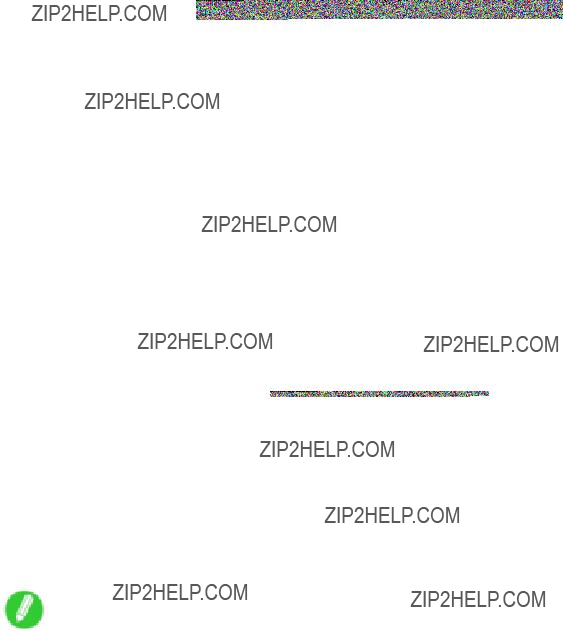
Other useful settings
 Cutting Roll Paper After Printing (Windows)
Cutting Roll Paper After Printing (Windows)
This topic describes how to cut roll paper automatically (using the auto cut function) after printing, as well as how to print a cut line to cut the paper manually.
 Note
Note
???Auto cut function is activated on the printer by factory default and when the printer driver is installed. Follow the steps below to reactivate the function after it is disabled, or to change the setting for printing a cut line instead.
1.Choose Print in the application menu.
2.Select the printer in the dialog box, and then display the printer driver dialog box. (???P.538)
3.Click the Page Setup tab to display the Page Setup sheet.
4. Click Roll Paper in the L Media Source list.
5. Click N Auto Cut to display the Automatic Cutting Settingsdialog box.
6. To enable automatic cutting, click Yes in the A Automatic Cutting list. If you prefer to cut the paper later yourself, click Print Cut Guideline.
7. Click OK to close the Automatic Cutting Settings dialog box.
8. Con???rm the print settings and print as desired.
Note
??? For tips on con???rming print settings, see ???Con???rming Print Settings (Windows)???. (???P.508)
Roll paper will be automatically cut after printing.
Enhanced Printing Options 489
Other useful settings
 Cutting Roll Paper After Printing (Mac OS X)
Cutting Roll Paper After Printing (Mac OS X)
This topic describes how to cut roll paper automatically (using the auto cut function) after printing, as well as how to print a cut line to cut the paper manually.
 Note
Note
???The auto cut function is activated on the printer by factory default and when the printer driver is installed. Follow the steps below to reactivate the function once disabled, or select the setting for printing a
cut guideline instead.
1.Choose Page Setup in the application menu to display the Page Attribute dialog box.
2. Select the printer in the B Format for list.
3. Choose the original size in the C Paper Size list.
4. Click F OK to close the dialog box.
5. Choose Print in the application menu.
6. Access the Page Setup pane.
7. Click Roll Paper in the A Media Source list.
490 Enhanced Printing Options
Other useful settings
8. Access the Main pane.
9. In the A Media Type list, select the type of paper that is loaded.
10. Click C Set to display the Media Detailed Settingsdialog box.
11. To enable automatic cutting, click Printer Default in the H Automatic Cutting list. If you prefer to cut the paper later yourself, click Print Cut Guideline.
 Important
Important
???If the automatic cut function has been deactivated on the printer, change the auto cut setting on the printer Control Panel.
12.Click OK to close the Media Detailed Settings dialog box.
13.Con???rm the print settings, and click M Print to start printing.
 Note
Note
???For tips on con???rming print settings, see ???Con???rming Print Settings (Mac OS X)???. (???P.558)
Enhanced Printing Options 491
Other useful settings
 Cutting Roll Paper After Printing (Mac OS 9)
Cutting Roll Paper After Printing (Mac OS 9)
This topic describes how to cut roll paper automatically (using the auto cut function) after printing, as well as how to print a cut line to cut the paper manually.
 Note
Note
???The auto cut function is activated on the printer by factory default and when the printer driver is installed. Follow the steps below to reactivate the function once disabled, or select the setting for printing a
cut guideline instead.
1.Select the printer in Chooser.
2.Choose Page Setup from the application menu to display the Page Attribute dialog box.
3. Choose the original size in the A Page Size list.
4. Click I OK to close the dialog box.
5. Choose Print in the application menu.
6. Access the Finishing pane.
7. Make sure Roll Paper is selected in A Media Source.
492 Enhanced Printing Options
Other useful settings
8. Access the Main pane.
9. In the C Media Type list, select the type of paper that is loaded.
10. Click D Set to display the Media Detailed Settingsdialog box.
11. To enable automatic cutting, click Printer Default in the H Automatic Cutting list. If you prefer to cut the paper later yourself, click Print Cut Guideline.
 Important
Important
???If the automatic cut function has been deactivated on the printer, change the auto cut setting on the printer Control Panel.
12.Click OK to close the Media Detailed Settings dialog box.
13.Con???rm the print settings, and then click N Print to start printing.
 Note
Note
???For tips on con???rming print settings, see ???Con???rming Print Settings (Mac OS 9)???. (???P.584)
Enhanced Printing Options 493
Other useful settings
 Making the Original Orientation Match the Paper
Making the Original Orientation Match the Paper
Orientation (Windows)
This topic describes how to print an original in landscape orientation after matching the paper orientation, based on the following example.
???Document: An original in landscape orientation
???Page size: A4 (210.0 ?? 297.0 mm)/Letter (8.3 ?? 11.7 in)
???Paper: Roll
???Paper type: Plain Paper
???Roll paper width: A2/A3 roll (420.0 mm [16.5 in])
1.Choose Print in the application menu.
2.Select the printer in the dialog box, and then open the printer driver dialog box. (???P.538)
3.Make sure the Main sheet is displayed.
4. In the A Media Type list, select the type of paper that is loaded. In this case, click Plain Paper.
5. Select the printing application in the E Print Target list.
6. Click the Page Setup tab to display the Page Setup sheet.
494 Enhanced Printing Options
Other useful settings
7. In the A Page Size list, click the size of the original as speci???ed in the application. In this case, click ISO A4 or Letter (8.5"x11").
8. In H Orientation, click J Landscape.
9. Click Roll Paper in the L Media Source list.
10. Select the width of the loaded roll in the M Roll Paper Width list-in this case, ISO A2/A3 Roll (420.0mm).
11. Con???rm the print settings and print as desired.
Note
??? For tips on con???rming print settings, see ???Con???rming Print Settings (Windows)???. (???P.508)
Enhanced Printing Options 495

Other useful settings
 Making the Original Orientation Match the Paper Orientation (Mac OS X)
Making the Original Orientation Match the Paper Orientation (Mac OS X)
This topic describes how to print an original in landscape orientation after matching the paper orientation, based on the following example.
???Document: An original in landscape orientation
???Page size: A4 (210.0 ?? 297.0 mm)/Letter (8.3 ?? 11.7 in)
???Paper: Roll
???Paper type: Plain Paper
???Roll paper width: A2/A3 roll (420.0 mm [16.5 in])
1.Choose Page Setup in the application menu to display the Page Attribute dialog box.
2. Select the printer in the B Format for list.
3. In the C Paper Size, click the size of the original. In this case, click ISO A4.
4. In D Orientation, click the icon of the document in landscape orientation.
5. Click F OK to close the dialog box.
6. Choose Print in the application menu.
7. Access the Main pane.
8. In the A Media Type list, select the type of paper that is loaded. In this case, click Plain Paper.
9. Select the printing application in the E Print Target list.
496 Enhanced Printing Options
Other useful settings
10. Access the Page Setup pane.
11. Click Roll Paper in the A Media Source list.
12. Make sure the width of the loaded roll is displayed in the B Roll Paper Width list-in this case,
ISO A2/A3 (420.0mm).
 Note
Note
???If the width of the loaded roll is not displayed in B Roll Paper Width, click L Printer Information on the Main pane and update the printer information.
Enhanced Printing Options 497
Other useful settings
13. Make sure the C Page Size setting matches the original size as selected in C Paper Size in the
Page Attribute dialog box-in this case, ISO A4.
14. Con???rm the print settings, and then click M Print to start printing.
Note
??? For tips on con???rming print settings, see ???Con???rming Print Settings (Mac OS X)???. (???P.558)
498 Enhanced Printing Options

Other useful settings
 Making the Original Orientation Match the Paper Orientation (Mac OS 9)
Making the Original Orientation Match the Paper Orientation (Mac OS 9)
This topic describes how to print an original in landscape orientation after matching the paper orientation, based on the following example.
???Document: An original in landscape orientation
???Page size: A4 (210.0 ?? 297.0 mm)/Letter (8.3 ?? 11.7 in)
???Paper: Roll
???Paper type: Plain Paper
???Roll paper width: A2/A3 roll (420.0 mm [16.5 in])
1.Select the printer in Chooser.
2.Choose Page Setup from the application menu to display the Page Attribute dialog box.
3. In A Page Size, click the size of the original. In this case, click ISO A4.
4. In B Orientation, click the icon of the document in landscape orientation.
5. Click I OK to close the dialog box.
6. Choose Print in the application menu.
7. Make sure the Main pane is displayed.
8. In the C Media Type list, select the type of paper that is loaded. In this case, click Plain Paper.
9. Select the printing application in the F Print Target list.
Enhanced Printing Options 499
Other useful settings
10. Access the Finishing pane.
11. Click Roll Paper in the A Media Source list.
12. Make sure the width of the loaded roll is displayed in the B Roll Paper Width list-in this case,
ISO A2/A3 (420.0mm).
 Note
Note
???If the width of the loaded roll is not displayed in B Roll Paper Width, click L Printer on the Main pane and update the printer information.
13. Con???rm the print settings, and then click N Print to start printing.
Note
??? For tips on con???rming print settings, see ???Con???rming Print Settings (Mac OS 9)???. (???P.584)
500 Enhanced Printing Options
Other useful settings
 Printing with Watermarks-COPY, FILE COPY, and so on (Windows)
Printing with Watermarks-COPY, FILE COPY, and so on (Windows)
This topic describes how to print of???ce documents with a watermark (in this case, ???FILE COPY???) based on the following example.
???Document: CAD drawing
???Page size: A2 (420.0 ?? 594.0 mm [16.5 ?? 23.4 in])
???Paper: Roll
???Paper type: Plain Paper
???Roll paper width: A2/A3 roll (420.0 mm [16.5 in])
1.Choose Print in the application menu.
2.Select the printer in the dialog box, and then open the printer driver dialog box. (???P.538)
3.Make sure the Main sheet is displayed.
4. In the A Media Type list, select the type of paper that is loaded. In this case, click Plain Paper.
5. After con???rming that D Easy Settings is selected, click CAD (Line Drawing) in the E Print
Target list.
 Note
Note
??? You can check the settings values selected in the E Print Target list by clicking F View Settings.
Enhanced Printing Options 501
8.
9.
Other useful settings
6. Click the Page Setup tab to display the Page Setup sheet.
7. In A Page Size, click the size of the original as speci???ed in the application software. In this case, click ISO A4 or Letter (8.5"x11").
Click Roll Paper in the L Media Source list.
Select the width of the loaded roll in the M Roll Paper Width list-in this case, ISO A2/A3 Roll (420.0mm).
10. Click the Layout tab to display the Layout sheet.
11. Select the D Watermark check box.
12. Click FILE COPY in the E Watermarks list.
 Note
Note
???To create your own, original watermark, click F Edit Watermark. Refer to the printer driver help for instructions on modifying watermarks to create your own.
13.Con???rm the print settings and print as desired.
 Note
Note
???For tips on con???rming print settings, see ???Con???rming Print Settings (Windows)???. (???P.508)
502 Enhanced Printing Options
Other useful settings
 Printing with Watermarks-COPY, FILE COPY, and so on (Mac OS 9)
Printing with Watermarks-COPY, FILE COPY, and so on (Mac OS 9)
This topic describes how to print of???ce documents with a watermark (in this case, ???FILE COPY???) based on the following example.
???Document: CAD drawing
???Page size: A2 (420.0 ?? 594.0 mm [16.5 ?? 23.4 in])
???Paper: Roll
???Paper type: Plain Paper
???Roll paper width: A2/A3 roll (420.0 mm [16.5 in])
1.Select the printer in Chooser.
2.Choose Page Setup from the application menu to display the Page Attribute dialog box.
3. In the A Page Size list, click the size of the original. In this case, click ISO A2.
4. Click I OK to close the dialog box.
5. Choose Print in the application menu.
6. Make sure the Main pane is displayed.
7. In the C Media Type list, select the type of paper that is loaded. In this case, click Plain Paper.
Enhanced Printing Options 503
10. Click Roll Paper in the A Media Source list.
11. Make sure the width of the loaded roll is displayed in the B Roll Paper Width list-in this case,
ISO A2/A3 (420.0mm).
Note
Other useful settings
8. After con???rming that E Easy Settings is selected, click CAD (Line Drawing) in the F Print
Target list.
 Note
Note
???You can check the settings values selected in the F Print Target list by clicking G View set..
9.Access the Finishing pane.
???If the width of the loaded roll is not displayed in B Roll Paper Width, click L Printer on the Main pane and update the printer information.
504 Enhanced Printing Options
Other useful settings
12. Select the C Watermark check box.
13. Click FILE COPY in the D Watermarks list.
 Note
Note
???To create your own, original watermark, click E Edit Watermark. Refer to the printer driver help for instructions on modifying watermarks to create your own.
14.Specify additional printing conditions.
For details on available printing conditions, see ???Printer Driver Settings (Mac OS 9)???. (???P.583)
15.Con???rm the print settings, and then click N Print to start printing.
 Note
Note
???For tips on con???rming print settings, see ???Con???rming Print Settings (Mac OS 9)???. (???P.584)
Enhanced Printing Options 505

Windows
Software
Windows
 Printer Driver Settings (Windows)
Printer Driver Settings (Windows)
For instructions on accessing the Windows printer driver, refer to the following topics.
???Accessing the Printer Driver Dialog Box from Applications (Windows) (???P.538)
???Accessing the Printer Driver Dialog Box from the Operating System Menu (Windows) (???P.204)
For information on the Windows printer driver settings, refer to the following topics.
???Main Sheet (Windows) (???P.515)
You can specify the media type, color processing, print quality, print preview, and other settings. Choose Easy Settings to specify basic print settings based on the printing application or Advanced Settings to complete more detailed settings as desired.
???Media Detailed Settings Dialog Box (Windows) (???P.206)
???View Settings Dialog Box for the Printing Application (Windows) (???P.556)
???Color Settings Sheet: Color (Windows) (???P.542)
???Color Settings Sheet: Monochrome (Windows) (???P.548)
???Gray Adjustment Sheet (Windows) (???P.523)
???Page Setup Sheet (Windows) (???P.519)
You can specify the page size of the original, borderless printing, enlargement or reduction, the orientation, the media size and source, and automatic cutting.
???Media Size Options Dialog Box (Windows) (???P.552)
???Layout Sheet (Windows) (???P.521)
You can specify the page layout, watermarks, the orientation, the number of copies, and print processing options.
???Special Settings Dialog Box (Windows) (???P.555)
Windows
???Favorites Sheet (Windows) (???P.524)
Groups of print settings you select on each sheet can be saved in a favorite. Favorites you have added can be edited or used at the time of printing as desired.
???Utility Sheet (Windows) (???P.525)
You can specify settings related to maintenance for the Printhead and feed amount, as well as settings for Color imageRUNNER Enlargement Copy.
???Support Sheet (Windows) (???P.526)
You can view support information and the user???s manual.
???Device Settings Sheet (Windows) (???P.527)
You can display settings for optional equipment installed on the printer and see the printer driver version.
imagePROGRAF Free Layout is a feature for freely arranging originals from various source applications on a single page as desired before printing. For details, see Free Layout Guide .
Color imageRUNNER Enlargement Copy is a feature for automatic enlargement and printing of scanned originals from a Color imageRUNNER. For details, see Color imageRUNNER Enlargement Copy Guide .
Windows
 Con???rming Print Settings (Windows)
Con???rming Print Settings (Windows)
There are two ways to con???rm the print settings, as follows.
???Checking a preview of the settings (???P.508)
???Checking a print preview (???P.509)
Checking a preview of the settings
A preview of the settings is displayed on the left side of the Main, Page Setup, and Layout sheets. By checking images and numerical values in the preview, you can con???rm current settings for the page size, orientation, media source, layout, and so on.
Windows
 Note
Note
???To con???rm the Print Target speci???ed in Easy Settings, click F View Settings on the Main sheet to display the View Settings dialog box.
Checking a print preview
You can check an image of the original just as it will be printed.
When you activate this feature, PageComposer is launched before printing. Con???rming how documents will be printed this way helps prevent printing errors.
For details on print previews, see ???Previewing Images Before Printing (Windows)???. (???P.510)
Windows
 Previewing Images Before Printing (Windows)
Previewing Images Before Printing (Windows)
This topic describes how to preview images of print jobs before actually printing them.
1. Choose Print in the application menu.
2. Select the printer in the dialog box, and then display the printer driver dialog box. (???P.538)
3. Make sure the Main sheet is displayed.
4. Select the L Open Preview When Print Job Starts check box.
5. When you attempt to print, the PageComposer window is displayed. (At this point, the document will not be printed yet.)
6. In the PageComposer editing window, select the document to print and open the Print Preview window.
7. After con???rming that the layout is just as you expected, close the Print Preview window.
8. In the PageComposer editing window, make sure the document to print is selected. Choose
Print from the File menu.
Windows
 Paper Information on Printer Dialog Box (Windows)
Paper Information on Printer Dialog Box (Windows)
On the Paper Information on Printer dialog box, you can obtain information on the paper in the printer and con???gure printer driver settings for the media source and media type.
 Note
Note
???To display the Paper Information on Printer dialog box, on the Main Sheet (Windows) (???P.515) , click Get Information by Media Type.
Windows
 Settings Summaries Dialog Box (Windows)
Settings Summaries Dialog Box (Windows)
The Settings Summaries dialog box enables you to con???rm the settings for the Main, Page Setup, Layout, and Favorites sheets.
Windows
 Using Favorites (Windows)
Using Favorites (Windows)
This topic describes how to register favorites and print using favorite settings.
Registering a favorite
Follow the steps below to save the current print settings as a favorite.
1. Choose Print in the application menu.
2. Select the printer in the dialog box, and then display the printer driver dialog box. (???P.538)
3. Complete the print settings.
4. Click the Favorites tab to display the Favorites sheet.
5. Click H Add to display the Add dialog box.
6. Complete the following settings in the Add dialog box.
???Enter a desired name in Name, such as ???Photos for Presentations??? or ???Monthly Report.???
???Choose a ???tting icon for these print settings in the Icon list.
???In Comment, enter a description of the favorite to be added, as desired.
7.Click OK to close the Add dialog box.
The favorite you have added is now displayed in A Favorites.
 Note
Note
???To save a favorite as a ???le, click J Export and specify the ???le to save.
Windows
Printing using the favorite
Follow the steps below to print using the favorite you have registered.
1. Choose Print in the application menu.
2. Select the printer in the dialog box, and then display the printer driver dialog box. (???P.538)
3. Click the Favorites tab to display the Favorites sheet.
4. In the A Favorites, choose the favorite you registered.
 Note
Note
???To import a favorite, click I Import and specify the favorite ???le.
5.Click D Apply Favorite to replace the favorite settings with the current print settings.
6.Con???rm the print settings and print as desired.
 Note
Note
???For instructions on con???rming print settings, see ???Con???rming Print Settings (Windows)???. (???P.508)
Windows
 Main Sheet (Windows)
Main Sheet (Windows)
The following settings are available on the Main sheet. For details on settings items, refer to the printer driver help.
 Note
Note
???On the Main sheet, choose Easy Settings to specify basic print settings based on the print target, or switch to Advanced Settings to complete more detailed settings as desired.
Con???guration using Easy Settings
Windows
Con???guration using Advanced Settings
Windows
 Page Setup Sheet (Windows)
Page Setup Sheet (Windows)
The following settings are available on the Page Setupsheet. For details on settings items, refer to the printer driver help.
Windows
 Layout Sheet (Windows)
Layout Sheet (Windows)
The following settings are available on the Layout sheet. For details on settings items, refer to the printer driver help.
I No Spaces at Top or Activate this setting to print the next image skipping blank areas above and Bottom (Conserve Paper) below printable data in documents, which enables you to conserve the paper.
Conserving Roll Paper by Printing Originals Without Top and Bottom Margins (???P.460)
Windows
 Gray Adjustment Sheet (Windows)
Gray Adjustment Sheet (Windows)
The following settings are available on the Gray Adjustment sheet.
Gray Adjustment
On the Gray Adjustment sheet, you can adjust the color balance, brightness, contrast, and other image qualities.
 Note
Note
???To display the Gray Adjustment sheet, on the Main Sheet (Windows) (???P.515) , select Monochrome (Photo) by Color Mode in Advanced Settings, and then click Color Settings.
???Monochrome (Photo) is not available for all types of paper.
Windows
 Favorites Sheet (Windows)
Favorites Sheet (Windows)
The following settings are available on the Favoritessheet. For details on settings items, refer to the printer driver help.
Windows
 Utility Sheet (Windows)
Utility Sheet (Windows)
The following settings are available on the Utilitysheet. For details on the utilities, refer to the relevant utility help.
*1: For details, see Color imageRUNNER Enlargement Copy Guide .
Windows
 Support Sheet (Windows)
Support Sheet (Windows)
On the Support sheet, you can view support information and the user???s manual.
Windows
 Device Settings Sheet (Windows)
Device Settings Sheet (Windows)
Many settings items on the printer properties sheets are controlled by Windows applications. However, the Device Settings sheet is for con???guring the printer, and it is an extension of the printer driver.
The following settings are available on the Device Settings sheet.
Windows
 Using PosterArtist to Compose Originals (Windows)
Using PosterArtist to Compose Originals (Windows)
This topic describes how to use PosterArtist to compose originals from multiple applications, creating a poster layout for printing.
 Important
Important
??? PosterArtist (sold separately) must be installed to use this function.
1.Choose Print in the application menu.
2.Select the printer in the dialog box, and then open the printer driver dialog box. (???P.538)
3.Make sure the Main sheet is displayed.
4. Click the Layout tab to display the Layout sheet.
Windows
5. Select the A Page Layout check box.
6. Click in the Edit Using PosterArtist in the B Page Layout list.
7. When you attempt to print, PosterArtist starts up and the PageCapture window is displayed. (At this point, the document will not be printed yet.)
8. Choose the page to load in PosterArtist.
9. Edit and rearrange the image in the PosterArtist window as desired.
 Important
Important
???Without closing the PosterArtist window, repeat steps 1-8 to arrange originals from multiple applications on the same page.
 Note
Note
???For instructions on editing and rearranging images, refer to the PosterArtist Manual.
10.Print from the PosterArtist menu.

Windows
 Printing Adobe RGB Images (Windows)
Printing Adobe RGB Images (Windows)
This topic describes how to print Adobe RGB images based on the following example.
???Document: Adobe RGB image created in Photoshop
???Page Size: 10??12 inches (254.0??304.8 mm)
???Paper: Roll
???Paper type: Glossy Photo Paper
???Roll Paper Width: 10 inches (254.0 mm)
 Important
Important
???In Photoshop, select no color-matching.
???In the printer driver settings, select Driver Matching Mode and choose Adobe RGB in Color Space.
1.In Photoshop, create an image in the Adobe RGB color space.
 Note
Note
???The following procedures are based on the example of Photoshop CS2.
???For instructions on creating Adobe RGB images, refer to the Photoshop documentation.
2.Choose Print with Preview from the File menu to display the Print dialog box.
3.Make sure the setting mode is Color Management.
4.In the Color Handling list in Options, click No Color Management.
5.Click Print to display the Print dialog box.
6.Select the printer and click Properties to display the printer driver dialog box.
7.Make sure the Main sheet is displayed.
Windows
8. In the A Media Type list, select the type of paper that is loaded. In this case, click Glossy
Photo Paper.
9. Click D Advanced Settings to switch the print mode.
10. Click Image in the E Print Priority list.
11. Select the print quality in the F Print Quality list.
 Note
Note
???Options displayed in the F Print Quality list vary depending on the paper type.
12.Click Color in the G Color Mode list.
13.Click H Color Settings to display the Color Settings dialog box.
14.Click the Matching tab to display the Matching sheet.
15.In Matching Mode, click Driver Matching Mode.
16.In Color Space, click Adobe RGB.
17.Click OK to close the Color Settings dialog box.
18.Click the Page Setup tab to display the Page Setup sheet.
Windows
19. In the A Page Size list, click the size of the original as speci???ed in the source application. In this case, click 10"x12".
20. Click Roll Paper in the L Media Source list.
21. Select the width of the loaded roll in the Roll Paper Width list. In this case, click 10-in. Roll (254.0mm), and then click OK.
22. Con???rm the print settings and print as desired.
Note
??? For tips on con???rming print settings, see ???Con???rming Print Settings (Windows)???. (???P.508)

Windows
 imagePROGRAF Status Monitor (Windows)
imagePROGRAF Status Monitor (Windows)
imagePROGRAF Status Monitor is a utility for checking the printer status and managing print jobs.
Two screens are available in imagePROGRAF Status Monitor : ???Printer List??? shows a list of printers, and ???Status Monitor??? shows details for each printer.
???You can view a list of the printers for which printer drivers have been installed on your computer, printers connected to your computer, and printers found on the network.
???Printer status can be checked in real time on a computer monitor.
???If a printer error occurs, you can investigate the corrective action immediately.
???Images of Ink Tanks are shown, with different images for various types of ink. An icon and warning message will notify you when ink levels are low.
???The type of paper loaded in each media source is identi???ed. You can also check to see if paper has run out.
???This way, the utility enables you to check printer information and take care of printer maintenance for optimal printing results.
???You can also set up automatic email noti???cation of any printer problems or errors to email addresses you designate in advance.
Note
??? For details, refer to the imagePROGRAF Status Monitor help.
Windows
 imagePROGRAF Device Setup Utility
imagePROGRAF Device Setup Utility
imagePROGRAF Device Setup Utility is a utility to establish communication between the printer and your computer by completing relevant settings. After the printer is installed, for example, you can use imagePROGRAF Device Setup Utility to complete the network settings initially.
???Starting imagePROGRAF Device Setup Utility will show a list of printers found on the network. In this list, select the printer (speci???cally, the printer???s MAC address) that you want to set up, and then con???gure the basic settings from your computer, such as the printer???s IP address and the network frame type.
???You can see which printers are online in the network by checking the printer list. Communication between your computer and these printers is possible.
 Note
Note
???We recommend that your network or printer administrator complete the setup work using imagePROGRAF Device Setup Utility.
???For details, refer to the imagePROGRAF Device Setup Utility help.
Windows
 Installing imagePROGRAF Device Setup Utility
Installing imagePROGRAF Device Setup Utility
Install imagePROGRAF Device Setup Utility from the User Software CD-ROM provided with the printer as follows:
 Important
Important
???In Windows 2000/Windows XP/Windows Server 2003/Windows Vista, you must log on with administrative rights equivalent to the ???Administrator??? account.
1.Insert the User Software CD-ROM in the CD-ROM drive.
2.On the Setup Menu window, click Install Individual Software.
3.Click Install in imagePROGRAF Device Setup Utility.
4.Follow the instructions on the screen to proceed with the installation.
Windows
 Con???guring the IP Address Using imagePROGRAF Device Setup Utility
Con???guring the IP Address Using imagePROGRAF Device Setup Utility
From a computer running Windows, you can use imagePROGRAF Device Setup Utility provided with the printer to con???gure the printer???s IP address. This topic describes how to con???gure the IP address using imagePROGRAF Device Setup Utility.
 Important
Important
???To con???gure network settings, you must be logged in with administrative rights such as ???Administrator??? account. We recommend that your network administrator con???gure the network settings.
???For instructions on installing imagePROGRAF Device Setup Utility, see ???Installing imagePROGRAF Device Setup Utility???. (???P.535)
1.Start imagePROGRAF Device Setup Utility from the start menu.
2.In the list of printers, select the printer to con???gure.
3.Choose Protocol Settings from the Printer menu.
4.In the Setting IP Address list, choose Manual.
5.Enter the IP address assigned to the printer and click the Set button.
6.Click OK after the Con???rmation message dialog box is displayed.
7.Exit imagePROGRAF Device Setup Utility.
 Note
Note
???To con???gure the IP address automatically, choose Auto in the Setting IP Address list and select
DHCP, BOOTP, or RARP.
???You can also specify the subnet mask and default gateway.
Windows
 Digital Photo Front-Access
Digital Photo Front-Access
Digital Photo Front-Access is an application that links photos from Canon digital cameras and other image ???les on your computer with various other applications.
???Simply select an image and click the icon of the application you want to start to launch the application.
???You can also print from Digital Photo Front-Access. In short, Digital Photo Front-Access can help you manage images in many ways from editing to printing as an effective way to work with other applications.
???Digital Photo Front-Access also enables image retouching. For automatic retouching, select an image for retouching and click Image Adjustment.
???Because this application automates the work???ow from retouching to display for all of your images, it can save time and work in retouching.
Note
??? For details, refer to the Digital Photo Front-Access help.
Windows
 Accessing the Printer Driver Dialog Box from Applications (Windows)
Accessing the Printer Driver Dialog Box from Applications (Windows)
1. Choose Print from the File menu to display the dialog box for printing conditions.
2. Select the printer, and then display the printer driver dialog box.
 Note
Note
???The dialog box for specifying printing conditions varies depending on the source application. In some cases, when you select the printer, a sheet for con???guring the printer driver is added to the dialog box. In the following case, click Preferences.
???Example: Print dialog box displayed by the application software
Six sheets of print settings are displayed by the printer driver: Main, Page Setup, Layout,
Favorites, Utility, and Support.
 Note
Note
???The titles of dialog boxes may vary depending on the application, and sheets other than these six sheets may be displayed.
Windows
 Important
Important
???If you access the printer driver dialog box from the source application, changes you make to the settings will only apply temporarily to that application. The changes will not be valid after you exit the application.
???You can also access the printer driver dialog box from the Windows system menu.
see ???Accessing the Printer Driver Dialog Box from the Operating System Menu (Windows)???. (???P.204)
Windows
 Accessing the Printer Driver Dialog Box from the Operating System Menu (Windows)
Accessing the Printer Driver Dialog Box from the Operating System Menu (Windows)
1. Click start > Printers and Faxes (or Printers ).
2. Select the printer, and then display the printer properties dialog box.
3. Click Printing Preferences to display the Printing Preferences dialog box, titled with the name of this printer.
Windows
Six sheets of print settings are displayed by the printer driver: Main, Page Setup, Layout,
Favorites, Utility, and Support.
 Important
Important
???If you access the printer driver dialog box from the operating system menu, changes you make to the settings will apply to all applications you use for printing.
???You can also access the printer driver dialog box from applications.
see ???Accessing the Printer Driver Dialog Box from Applications (Windows)???. (???P.538)
Windows
 Color Settings Sheet: Color (Windows)
Color Settings Sheet: Color (Windows)
In general, make any needed adjustments to the color of documents in the application used to create them. However, if the color tone as printed is not as you expected, you can also adjust the color in the printer driver.
Color Adjustment : color
If the color tone as printed is not as you expected, you can adjust it on the Color Adjustment sheet.
 Note
Note
???To display the Color Adjustment sheet, on the Main Sheet (Windows) (???P.515) , click Color Settings by Color Mode in Advanced Settings.
Note
??? For details on settings items, see ???Adjusting the Color in the Printer Driver???. (???P.252)
Object Adjustment dialog box
In the Object Adjustment dialog box, you can specify what type of print jobs to apply color adjustment to. If an original comprises images, graphics, and text, you can specify which portion to apply color adjustment to.
Note
??? To display the Object Adjustment dialog box, click Object Adjustment on the Color Adjustment sheet.
Windows
Matching sheet: Driver Matching Mode
On the Matching sheet, you can specify color matching, to compensate for differences in the appearance of colors on various devices. The following options are available when you select Driver Matching Mode in the Matching Mode list.
 Note
Note
???To display the Matching sheet, on the Main Sheet (Windows) (???P.515) , click Color Settings by Color Mode in Advanced Settings, and then click the Matching sheet.
Note
??? For details on settings items, see ???Adjusting the Color in the Printer Driver???. (???P.252)
Windows
Matching sheet: ICC Matching Mode, Driver ICM Mode, and Host ICM Mode
On the Matching sheet, you can specify color matching, to compensate for differences in the appearance of colors on various devices. The following options are available when you select ICC Matching Mode, Driver ICM Mode, or Host ICM Mode on the Matching Mode sheet.
 Note
Note
???To display the Matching sheet, on the Main Sheet (Windows) (???P.515) , click Color Settings by Color Mode in Advanced Settings, and then click the Matching sheet.
Note
??? For details on settings items, see ???Adjusting the Color in the Printer Driver???. (???P.252)
Windows
Matching sheet: Ambient Light Matching Mode (Kyuanos)
On the Matching sheet, you can specify color matching to compensate for differences in the appearance of colors on various devices. The following options are available when you select Ambient Light Matching Mode (Kyuanos) in the Matching Mode list.
When you select By selecting a chart number in Setting Method
When you select By entering values directly in Setting Method
Light Source Check Tool
The Light Source Check Tool enables you to print Chart.
Windows
 Color Settings Sheet: Monochrome (Windows)
Color Settings Sheet: Monochrome (Windows)
The following settings are available on the Color Settings sheet for monochrome printing.
Color Adjustment : monochrome
On the Color Adjustment sheet for monochrome printing, you can adjust the brightness and contrast.
 Note
Note
???To display the Color Adjustment sheet, on the Main Sheet (Windows) (???P.515) , click Color Settings by Color Mode in Advanced Settings.
Windows
Note
??? For details on settings items, see ???Adjusting the Color in the Printer Driver???. (???P.252)
Object Adjustment dialog box
In the Object Adjustment dialog box, you can specify what type of print jobs to apply color adjustment to. If an original comprises images, graphics, and text, you can specify which portion to apply color adjustment to.
Note
??? To display the Object Adjustment dialog box, click Object Adjustment on the Color Adjustment sheet.
Windows
 Con???rming the Print Image Before Printing
Con???rming the Print Image Before Printing
The preview screen displayed before printing enables you to see the original image just as it will be printed. Con???rming the image of print jobs helps prevent printing errors.
For instructions on previewing print jobs, refer to the following topics, as appropriate for your computer and operating system.
???Previewing Images Before Printing (Windows) (???P.510)
???Previewing Images Before Printing (Mac OS X) (???P.562)
???Previewing Images Before Printing (Mac OS 9) (???P.586)
Windows
 Media Detailed Settings Dialog Box (Windows)
Media Detailed Settings Dialog Box (Windows)
The Media Detailed Settings dialog box offers the following settings. For details on settings items, refer to the printer driver help.
 Note
Note
???To display the Media Detailed Settings dialog box, on the Main Sheet (Windows) (???P.515) , click
Settings by Media Type.
Windows
 Media Size Options Dialog Box (Windows)
Media Size Options Dialog Box (Windows)
In the Media Size Options dialog box, you can create and register your own Custom Media Size. The sizes you de???ne are listed with standard media sizes for selection later as needed.
 Note
Note
???To display the Media Size Options dialog box, on the Page Setup Sheet (Windows) (???P.519) , click
Media Size Options.

Windows
 Printing Enlargements of Scanned Originals from a Color imageRUNNER (Windows)
Printing Enlargements of Scanned Originals from a Color imageRUNNER (Windows)
Scanned originals from a Color imageRUNNER can be enlarged and printed automatically.
Originals you create by scanning with a Color imageRUNNER are transferred to a "hot folder" and printed automatically after enlargement according to printing conditions you specify for that folder.
This processing sequence is called the Color imageRUNNER Enlargement Copy function.
To use Color imageRUNNER Enlargement Copy, ???rst complete these settings in the following order.
1.Register a hot folder on your computer
Register a hot folder on your computer for storing scanned originals from the Color imageRUNNER and complete the settings for enlargement copy.
2.Complete the scanning settings on the Color imageRUNNER.
Con???gure the Color imageRUNNER to send scanned originals to the hot folder.
After these settings are complete, you can print enlarged copies of scanned originals from the Color imageRUNNER.
Registering a hot folder on your computer
Folders used for Color imageRUNNER Enlargement Copy (iR enlargement copy) are called hot folders. Register a hot folder on your computer for storing scanned originals from the Color imageRUNNER. You can specify printing conditions (such as the image quality and paper size), based on which originals transferred to the hot folder will be printed. Follow these steps to register and modify hot folders.
1. Display the printer driver dialog box. (???P.204)
2. Click the Utility tab to display the Utility sheet.
3. Click B Color imageRUNNER Enlargement Copy to start the Color imageRUNNER Enlargement Copy utility.
4. Use the Color imageRUNNER Enlargement Copy utility to register or modify hot folders. For instructions on registering and modifying hot folders, refer to the help ???le for the Color imageRUNNER Enlargement Copy utility.
Windows
Completing the scanning settings on the Color imageRUNNER.
Con???gure the Color imageRUNNER to send scanned originals to the hot folder. It is easy to send scanned originals to the hot folder if you assign the scanning settings and destination to a Favorites button on the Color imageRUNNER.
For instructions on assigning scanning settings and destinations to a Favorites button, refer to the setting manual, displayed by clicking Color imageRUNNER Enlargement Copy Setup Manual button of Color imageRUNNER Enlargement Copy utility, or refer to the Color imageRUNNER manual.
Scanning the original and print an enlargement
Follow the steps below to scan an original on the Color imageRUNNER for enlarged printing on the printer. For detailed instructions, refer to the Color imageRUNNER manual.
1. Load the original on the platen glass or document feeder of the Color imageRUNNER.
2. Press Send to display the screen for transmission.
3. Press Favorites, and then press the Favorites button assigned to the hot folder.
4. Press Start on the control panel. If you scan originals on the platen glass, after scanning all originals, press Done on the touch-panel display.
Scanned originals are sent to the hot folder and automatically enlarged and printed following the conditions you speci???ed for the folder.
 Note
Note
???For details on Color imageRUNNER Enlargement Copy, refer to Color imageRUNNER Enlargement Copy Guide .
Windows
 Special Settings Dialog Box (Windows)
Special Settings Dialog Box (Windows)
If the printing results are not as you expected, you can change how printing is processed in the Special Settings dialog box.
 Note
Note
???To display the Special Settings dialog box, on the Layout Sheet (Windows) (???P.521) , click Special Settings.
Windows
 View Settings Dialog Box for the Printing Application (Windows)
View Settings Dialog Box for the Printing Application (Windows)
In the View Settings dialog box, you can check details of the selected printing application.
 Note
Note
???To display the View Settings dialog box, on the Main Sheet (Windows) (???P.515) , click View Settings by Print Target.

Mac OS X
Mac OS X
 Printer Driver Settings (Mac OS X)
Printer Driver Settings (Mac OS X)
For instructions on accessing the Mac OS X printer driver, refer to the following topics.
??? Accessing the Printer Driver Dialog Box from Applications (Mac OS X) (???P.577)
For information on the Mac OS X printer driver settings, refer to the following topics.
???Main Pane (Mac OS X) (???P.564)
You can specify the media type, color processing, print quality, print preview, and other settings. Choose Easy Settings to specify basic print settings based on the printing application or Advanced Settings to complete more detailed settings as desired.
???Media Detailed Settings Dialog Box (Mac OS X) (???P.207)
???View Settings Dialog Box for the Printing Application (Mac OS X) (???P.582)
???Color Settings Pane: Color (Mac OS X) (???P.578)
???Color Settings Pane: Monochrome (Mac OS X) (???P.580)
???Gray Adjustment Pane (Mac OS X) (???P.569)
???Page Setup Pane (Mac OS X) (???P.566)
You can specify the page size of the original, borderless printing, enlargement or reduction, the orientation, the media size and source, and automatic cutting.
???Utility Pane (Mac OS X) (???P.568)
You can specify settings related to maintenance for the Printhead and feed amount, as well as settings for Color imageRUNNER Enlargement Copy.
???Additional Settings Pane (Mac OS X) (???P.570)
You can specify settings for how print jobs are sent to the printer.
???Support Pane (Mac OS X) (???P.571)
You can view support information and the user???s manual.
With the imagePROGRAF Free Layout feature, you can arrange originals from various source applications on a single page before printing. For details, see the Free Layout Guide .
With the imagePROGRAF Preview feature, you can check the layout before printing and adjust layout or size settings while viewing a preview screen. For details, see the imagePROGRAF Preview Guide .
With the Color imageRUNNER Enlargement Copy feature, you can automatically enlarge and print scanned originals from a Color imageRUNNER. For details, see the Color imageRUNNER Enlargement Copy Guide .
Mac OS X
 Con???rming Print Settings (Mac OS X)
Con???rming Print Settings (Mac OS X)
There are two ways to con???rm what printing conditions have been speci???ed, as follows.
???Checking a preview of the settings (???P.558)
???Checking a print preview (???P.559)
Checking a preview of the settings
A preview of the settings is displayed on the left side of the Main, Page Setup, Utility, and Additional Settings panes. By checking images and numerical values in the preview, you can con???rm current settings for the page size, orientation, media source, and so on.
Mac OS X
 Note
Note
???To con???rm the Print Target speci???ed in Easy Settings, click F View set. on the Main pane to display the View settings dialog box.
Checking a print preview
You can check an image of the original just as it will be printed. Con???rming the image of print jobs beforehand helps prevent printing errors.
For details on print previews, see ???Previewing Images Before Printing (Mac OS X)???. (???P.562)
Mac OS X
 Checking the Layout Before Printing
Checking the Layout Before Printing
You can check the print layout on the preview screen. While viewing this screen, you can also adjust layout or size settings, and your changes will be instantly applied on the preview screen.
Preview (Macintosh)
Important
??? The driver must be installed from the User Software CD-ROM to use this function.
For instructions on how to check the layout before printing, refer to the following topics:
??? Checking the Layout Before Printing (Mac OS X) (???P.561)
Mac OS X
 Checking the Layout Before Printing (Mac OS X)
Checking the Layout Before Printing (Mac OS X)
This topic describes how to check the layout before printing using the Preview function.
1. Choose Print in the application menu.
2. Click PDF and select Canon imagePROGRAF Preview.
3. The Canon imagePROGRAF Preview window is displayed.
4. Check the layout and adjust settings in the Canon imagePROGRAF Preview window as desired.
5. Print from the Canon imagePROGRAF Preview menu.
Note
??? For details on imagePROGRAF Preview functions, refer to imagePROGRAF Preview Guide .
Mac OS X
 Previewing Images Before Printing (Mac OS X)
Previewing Images Before Printing (Mac OS X)
This topic describes how to preview images of print jobs before actually printing them.
1. In the application menu, choose Print.
2. Click Preview to open the preview window.
3. Check the layout and other aspects of the printing image, and then click Print to start printing.
 Note
Note
??????Preview??? is provided as a standard feature of the operating system. For details, refer to the Mac OS documentation.
Mac OS X
 Paper Information on Printer Dialog Box (Mac OS X)
Paper Information on Printer Dialog Box (Mac OS X)
On the Paper Information on Printer dialog box, you can obtain information on the paper in the printer and con???gure printer driver media type setting.
 Note
Note
???To display the Paper Information on Printer dialog box, on the Main Pane (Mac OS X) (???P.564) , click Get Information by Media Type.
Mac OS X
 Main Pane (Mac OS X)
Main Pane (Mac OS X)
The following settings are available on the Main pane. For details on settings items, refer to the printer driver help.
 Note
Note
???On the Main pane, choose Easy Settings to specify basic print settings based on the print target, or switch to Advanced Settings to complete more detailed settings as desired.
Con???guration using Easy Settings
Mac OS X
Con???guration using Advanced Settings
Mac OS X
 Page Setup Pane (Mac OS X)
Page Setup Pane (Mac OS X)
The following settings are available on the Page Setup pane. For details on settings items, refer to the printer driver help.
Mac OS X
 Utility Pane (Mac OS X)
Utility Pane (Mac OS X)
The following settings are available on the Utilitypane.
*1: For details, see Color imageRUNNER Enlargement Copy Guide .
Mac OS X
 Gray Adjustment Pane (Mac OS X)
Gray Adjustment Pane (Mac OS X)
The following settings are available on the Gray Adjustment pane.
Gray Adjustment
On the Gray Adjustment pane, you can adjust the color balance, brightness, contrast, and other image qualities.
 Note
Note
???To display the Gray Adjustment pane, on the Main Pane (Mac OS X) (???P.564) , select Monochrome (Photo) by Color Mode in Advanced Settings, and then click Color Settings.
???Monochrome (Photo) is not available for all types of paper.
Mac OS X
 Additional Settings Pane (Mac OS X)
Additional Settings Pane (Mac OS X)
The following settings are available on the Additional Settings pane.
H Save data before printing Jobs are printed after they are saved on the hard disk.
Mac OS X
 Support Pane (Mac OS X)
Support Pane (Mac OS X)
On the Support pane, you can view support information and the user???s manual.
 Using Favorites (Mac OS X)
Using Favorites (Mac OS X)
You can use the Presets function in Mac OS X for favorite-based printing.
 Note
Note
???In the printing dialog box, click Save As in the Presets list to save the current print settings. This is a standard feature of the operating system. For details, refer to the Mac OS documentation.
Mac OS X
 Printing Adobe RGB Images (Mac OS X)
Printing Adobe RGB Images (Mac OS X)
This topic describes how to print Adobe RGB images based on the following example.
???Document: Adobe RGB image created in Photoshop
???Page size: 10??12 inches (254.0??304.8 mm)
???Paper: Roll
???Paper type: Glossy Photo Paper
???Roll Width: 10 inches (254.0 mm)
 Important
Important
???Do not set up color-matching in Photoshop.
???In the printer driver, specify Driver Correction and set Color Space to Adobe RGB.
1.In Photoshop, create an image in the Adobe RGB color space.
 Note
Note
???Photoshop CS2 is used in this example.
???For instructions on creating Adobe RGB images, refer to the Photoshop documentation.
2.Choose Print with Preview from the Photoshop menu to display the Print dialog box.
3.Make sure the setting mode is Color Management.
4.In the Color Handling list in Options, click No Color Management.
5.Click Print.
6.Access the Main pane.
7. In the A Media Type list, select the type of paper that is loaded. In this case, click Glossy
Photo Paper.
Mac OS X
8. Click D Advanced Settings to switch the print mode.
9. Click Image in the E Print Priority list.
10. Select the print quality in the F Print Quality list.
 Note
Note
???Options displayed in the F Print Quality list vary depending on the paper type.
11.Click Color in the H Color Mode list.
12.Click I Set to display the Color Settings dialog box.
13.Click Matching to display the Matching pane.
14.In Mode, click Driver Correction.
15.In Color Space, click Adobe RGB.
16.Click OK to close the Color Settings dialog box.
17.Access the Page Setup pane.
Mac OS X
18. Click Roll Paper in the A Media Source list.
19. Make sure the width of the loaded roll paper is displayed in the B Roll Paper Width list-here,
10-in. Roll (254.0mm).
 Note
Note
???If the width of the loaded roll is not displayed in B Roll Paper Width, click L Printer Information on the Main pane and update the printer information.
20. Make sure the page size as speci???ed in Photoshop is shown in C Page Size -in this case,
10"x12".
21. Con???rm the print settings, and click M Print to start printing.
Note
??? For tips on con???rming print settings, see ???Con???rming Print Settings (Mac OS X)???. (???P.558)
Mac OS X
 imagePROGRAF Printmonitor (Macintosh)
imagePROGRAF Printmonitor (Macintosh)
imagePROGRAF Printmonitor is a utility for checking the printer status and managing print jobs.
???Printer status can be checked in real time on a computer monitor.
???You can check the status of print jobs, cancel jobs, and manage them as needed.
???If a printer error occurs, you can investigate the corrective action immediately.
???You can also set up automatic email noti???cation of any printer problems or errors to email addresses you designate in advance.
Mac OS X
 Note
Note
???If the status of the desired printer is not shown in imagePROGRAF Printmonitor, select the printer again as follows.
1.Make sure the printer is on and connected to the network or to a local port.
2.In the Printer menu, select the name of the desired printer. After the printer is detected, the printer status is shown.
3.If information about the printer is not shown in step 2, choose Search Printer in the Printer menu.
4.Select the zone to search (or select *(My Zone) if no zones have been set up) and click the Search button.
Printer names listed in the Printer menu are updated with the printers that are now detected.
5.In the Printer menu, select the name of the desired printer. After the printer is detected, the printer status is shown.
Mac OS X
 Accessing the Printer Driver Dialog Box from Applications (Mac OS X)
Accessing the Printer Driver Dialog Box from Applications (Mac OS X)
1. In the application software, select Print from the File menu to display the dialog box for printing
conditions.
 Note
Note
???This dialog box includes basic printing options and enables you to choose the printer, specify the range of pages, number of copies, and so on.
2.Select the printer in the Printer list.
3. Click Print to start printing.
As shown in the following illustration, you can switch to other panes in this dialog box to complete settings for various methods of printing, including enlarged and reduced printing, borderless printing, and so on.
Mac OS X
 Color Settings Pane: Color (Mac OS X)
Color Settings Pane: Color (Mac OS X)
In general, make any needed adjustments to the color of documents in the application used to create them. However, if the color tone as printed is not as you expected, you can also adjust the color in the printer driver.
Color Adjustment pane: color
If the color tone as printed is not as you expected, you can adjust it on the Color Adjustment pane.
 Note
Note
???To display the Color Adjustment pane, on the Main Pane (Mac OS X) (???P.564) , click Color Settings by Color Mode in Advanced Settings.
Mac OS X
Note
??? For details on settings items, see ???Adjusting the Color in the Printer Driver???. (???P.252)
Matching pane
On the Matching pane, you can specify color matching, to compensate for differences in the appearance of colors on various devices.
 Note
Note
???To display the Matching pane, on the Main Pane (Mac OS X) (???P.564) , click Color Settings by Color Mode in Advanced Settings, and then click Matching.
Note
??? For details on settings items, see ???Adjusting the Color in the Printer Driver???. (???P.252)
Mac OS X
 Color Settings Pane: Monochrome (Mac OS X)
Color Settings Pane: Monochrome (Mac OS X)
The following settings are available on the Color Settings pane for monochrome printing.
Color Adjustment pane: monochrome
On the Color Adjustment pane for monochrome printing, you can adjust the brightness and contrast.
 Note
Note
???To display the Color Adjustment pane, on the Main Pane (Mac OS X) (???P.564) , click Color Settings in Advanced Settings.
Note
??? For details on settings items, see ???Adjusting the Color in the Printer Driver???. (???P.252)
Mac OS X
 Media Detailed Settings Dialog Box (Mac OS X)
Media Detailed Settings Dialog Box (Mac OS X)
The Media Detailed Settings dialog box offers the following settings. For details on settings items, refer to the printer driver help.
 Note
Note
???To display the Media Detailed Settings dialog box, on the Main Pane (Mac OS X) (???P.564) , click
Settings by Media Type.
Mac OS X
 View Settings Dialog Box for the Printing Application (Mac OS X)
View Settings Dialog Box for the Printing Application (Mac OS X)
In the View Settings dialog box, you can check details of the selected printing application.
 Note
Note
???To display the View Settings dialog box, on the Main Pane (Mac OS X) (???P.564) , click View Settings by Print Target.

Mac OS 9
Mac OS 9
 Printer Driver Settings (Mac OS 9)
Printer Driver Settings (Mac OS 9)
For instructions on accessing the Mac OS 9 printer driver, refer to the following topics.
??? Accessing the Printer Driver Dialog Box from Applications (Mac OS 9) (???P.602)
For information on the Mac OS 9 printer driver settings, refer to the following topics.
???Main Pane (Mac OS 9) (???P.587)
You can specify the number of copies, page range, media type, color processing, print quality, and print preview. Choose Easy Settings to specify basic print settings based on the printing application or Advanced Settings to complete more detailed settings as desired.
???Media Detailed Settings Dialog Box (Mac OS 9) (???P.208)
???View Settings Dialog Box for the Printing Application (Mac OS 9) (???P.611)
???Color Settings Pane: Color (Mac OS 9) (???P.604)
???Color Settings Pane: Monochrome (Mac OS 9) (???P.607)
???Gray Adjustment Pane (Mac OS 9) (???P.592)
???Page Setup Pane (Mac OS 9) (???P.589)
You can specify the amount of enlargement or reduction, borderless printing, media size, and page layout.
???Finishing Pane (Mac OS 9) (???P.591)
You can specify the media source, watermarks, and orientation.
???Device Settings Pane (Mac OS 9) (???P.593)
You can perform maintenance for the Printhead or feed amount.
???Additional Settings Pane (Mac OS 9) (???P.594)
You can specify settings for background printing, how print jobs are sent to the printer, and noti???cation after printing.
???Special Settings Dialog Box (Mac OS 9) (???P.610)
Mac OS 9
 Con???rming Print Settings (Mac OS 9)
Con???rming Print Settings (Mac OS 9)
There are two ways to con???rm what printing conditions have been speci???ed, as follows.
???Checking a preview of the settings (???P.584)
???Checking a print preview (???P.585)
Checking a preview of the settings
A preview of the settings is displayed on the left side of the Main, Page Setup, Finishing, Utility, and Additional Settings panes. By checking images and numerical values in the preview, you can con???rm current settings for the page size, orientation, media source, and so on.
Mac OS 9
 Note
Note
???To con???rm the Print Target speci???ed in Easy Settings, click G View set. on the Main pane to display the View set. dialog box.
Checking a print preview
You can check an image of the original just as it will be printed. Con???rming the image of print jobs beforehand helps prevent printing errors.
For details on print previews, see ???Previewing Images Before Printing (Mac OS 9)???. (???P.586)
Mac OS 9
 Previewing Images Before Printing (Mac OS 9)
Previewing Images Before Printing (Mac OS 9)
This topic describes how to preview images of print jobs before actually printing them.
1. In the application menu, choose Print.
2. Click Preview to open the preview window.
3. Check the layout and other aspects of the printing image, and then click Print this page to start printing.
 Note
Note
??????Preview??? is provided as a standard feature of the operating system. For details, refer to the Mac OS documentation.
Mac OS 9
 Main Pane (Mac OS 9)
Main Pane (Mac OS 9)
The following settings are available on the Main pane. For details on settings items, refer to the printer driver help.
 Note
Note
???On the Main pane, choose Easy Settings to specify basic print settings based on the printing application, or switch to Advanced Settings to complete more detailed settings as desired.
Con???guration using Easy Settings
Mac OS 9
Con???guration using Advanced Settings
Mac OS 9
 Page Setup Pane (Mac OS 9)
Page Setup Pane (Mac OS 9)
The following settings are available on the Page Setup pane. For details on settings items, refer to the printer driver help.
Mac OS 9
*1: Selecting poster layout from the I Page Layout list displays a check box for specifying the pages to print.
Mac OS 9
 Finishing Pane (Mac OS 9)
Finishing Pane (Mac OS 9)
The following settings are available on the Finishing pane. For details on settings items, refer to the printer driver help.
Mac OS 9
 Gray Adjustment Pane (Mac OS 9)
Gray Adjustment Pane (Mac OS 9)
The following settings are available on the Gray Adjustment pane.
Gray Adjustment
On the Gray Adjustment pane, you can adjust the color balance, brightness, contrast, and other image qualities.
 Note
Note
???To display the Gray Adjustment pane, on the Main Pane (Mac OS 9) (???P.587) , select Monochrome (Photo) by Color Mode in Advanced Settings, and then click Color Settings.
???Monochrome (Photo) is not available for all types of paper.
Mac OS 9
 Device Settings Pane (Mac OS 9)
Device Settings Pane (Mac OS 9)
The following settings are available on the Device Settings pane.
Mac OS 9
 Additional Settings Pane (Mac OS 9)
Additional Settings Pane (Mac OS 9)
The following settings are available on the Additional Settings pane. For details on settings items, refer to the printer driver help.

Mac OS 9
 Using Favorites (Mac OS 9)
Using Favorites (Mac OS 9)
This topic describes how to register favorites and print using favorite settings.
Registering a favorite
Follow the steps below to save the current print settings as a favorite.
1. Select the printer in Chooser.
2. Choose Print in the application menu.
3. Complete the print settings.
4. In the Favorites list, click Add Favorite to display the Add Favorite dialog box.
5. Complete the following settings in the Add Favorite dialog box.
???Enter a desired name in Name, such as ???Photos for Presentations??? or ???Monthly Report.???
???In Comment, enter a description of the favorite to be added.
6.Click OK to close the Add Favorite dialog box.
The favorite you have added is now displayed in Favorites.
 Note
Note
???To edit the name of an existing favorite or comment, click Edit Favorite in the Favorites list to display the Edit Favorite dialog box.
???To save a favorite as a ???le, click Export and specify the ???le to save.
Printing using the favorite
Follow the steps below to print using the favorite you have registered.
1. Select the printer in Chooser.
2. Choose Page Setup from the application menu to display the Page Attribute dialog box.
3. Choose the original size in the A Page Size list.
4. Click I OK to close the dialog box.
5. In the application menu, choose Print.
6. In the Favorites list, choose the favorite you registered.
 Note
Note
???To import a favorite, click Import and specify the favorite ???le.
???If you select a favorite and edit it, an icon is displayed at left of the name to indicate that the settings have been changed. For details, refer to the printer driver help.
Mac OS 9
7. Con???rm the print settings, and then click Print to start printing.
Note
??? For tips on con???rming print settings, see ???Con???rming Print Settings (Mac OS 9)???. (???P.584)
Mac OS 9
 Printing Adobe RGB Images (Mac OS 9)
Printing Adobe RGB Images (Mac OS 9)
This topic describes how to print Adobe RGB images based on the following example.
???Document: Adobe RGB image created in Photoshop
???Page size: 10??12 inches (254.0??304.8 mm)
???Paper: Roll
???Paper type: Glossy Photo Paper
???Roll width: 10 inches (254.0 mm)
 Important
Important
???Do not set up color-matching in Photoshop.
???In the printer driver, specify Driver Matching Mode and set Color Space to Adobe RGB.
1.In Photoshop, create an image in the Adobe RGB color space.
 Note
Note
???Photoshop CS2 is used in this example.
???For instructions on creating Adobe RGB images, refer to the Photoshop documentation.
2.In the Photoshop menu, choose Print.
3.Make sure the Main pane is displayed.
4. In the C Media Type list, select the type of paper that is loaded. In this case, click Glossy
Photo Paper.
Mac OS 9
5. Click E Advanced Settings to switch the print mode.
6. Click Image in the F Print Priority list.
7. Select the print quality in the G Print Quality list.
 Note
Note
???Options displayed in the G Print Quality list vary depending on the paper type.
8.Click Color in the H Color Mode list.
9.Click I Set to display the Color Settings dialog box.
10.Click Matching to display the Matching pane.
11.In Mode, click Driver Correction.
12.In Color Space, click Adobe RGB.
13.Click OK to close the Color Settings dialog box.
14.Access the Page Setup pane.
Mac OS 9
15. Make sure the page size as speci???ed in Photoshop is shown in B Page Size -in this case,
10"x12".
16. Access the Finishing pane.
17. Click Roll Paper in the A Media Source list.
18. Make sure the width of the loaded roll paper is displayed in the B Roll Paper Width list-here,
10-in. Roll (254.0mm).
 Note
Note
???If the width of the roll loaded in the printer is not shown in the B Roll Paper Width list, click the L Printer in the Main pane to update the printer information.
19. Con???rm the print settings, and click N Print to start printing.
Note
??? For tips on con???rming print settings, see ???Con???rming Print Settings (Mac OS 9)???. (???P.584)
Mac OS 9
 imagePROGRAF Printmonitor (Macintosh)
imagePROGRAF Printmonitor (Macintosh)
imagePROGRAF Printmonitor is a utility for checking the printer status and managing print jobs.
???Printer status can be checked in real time on a computer monitor.
???You can check the status of print jobs, cancel jobs, and manage them as needed.
???If a printer error occurs, you can investigate the corrective action immediately.
???You can also set up automatic email noti???cation of any printer problems or errors to email addresses you designate in advance.
Mac OS 9
 Note
Note
???If the status of the desired printer is not shown in imagePROGRAF Printmonitor, select the printer again as follows.
1.Make sure the printer is on and connected to the network or to a local port.
2.In the Printer menu, select the name of the desired printer. After the printer is detected, the printer status is shown.
3.If information about the printer is not shown in step 2, choose Search Printer in the Printer menu.
4.Select the zone to search (or select *(My Zone) if no zones have been set up) and click the Search button.
Printer names listed in the Printer menu are updated with the printers that are now detected.
5.In the Printer menu, select the name of the desired printer. After the printer is detected, the printer status is shown.
Mac OS 9
 Accessing the Printer Driver Dialog Box from Applications (Mac OS 9)
Accessing the Printer Driver Dialog Box from Applications (Mac OS 9)
1. In the application software, select Print from the File menu to display the dialog box for printing
conditions.
 Note
Note
???This dialog box includes basic printing options and enables you to choose the printer, specify the range of pages, number of copies, and so on.
2.Select the printer in the Printer list.
Mac OS 9
3. Click Print to start printing.
As shown in the following illustration, you can switch to other panes in this dialog box to complete settings for various methods of printing, including enlarged and reduced printing, borderless printing, and so on.
Mac OS 9
 Color Settings Pane: Color (Mac OS 9)
Color Settings Pane: Color (Mac OS 9)
In general, make any needed adjustments to the color of documents in the application used to create them. However, if the color tone as printed is not as you expected, you can also adjust the color in the printer driver.
Color Adjustment pane: color
If the color tone as printed is not as you expected, you can adjust it on the Color Adjustment pane.
 Note
Note
???To display the Color Adjustment pane, on the Main Pane (Mac OS 9) (???P.587) , click Color Settings by Color Mode in Advanced Settings.
Note
??? For details on settings items, see ???Adjusting the Color in the Printer Driver???. (???P.252)
Object Adjustment dialog box
In the Object Adjustment dialog box, you can specify what type of print jobs to apply color adjustment to. If an original comprises images, graphics, and text, you can specify which portion to apply color adjustment to.
Note
??? To display the Object Adjustment dialog box, click Object Adjustment on the Color Adjustment pane.
Mac OS 9
Matching pane
On the Matching pane, you can specify color matching, to compensate for differences in the appearance of colors on various devices.
 Note
Note
???To display the Matching pane, on the Main Pane (Mac OS 9) (???P.587) , click Color Settings by Color Mode in Advanced Settings, and then click Matching.
Note
??? For details on settings items, see ???Adjusting the Color in the Printer Driver???. (???P.252)
Mac OS 9
 Color Settings Pane: Monochrome (Mac OS 9)
Color Settings Pane: Monochrome (Mac OS 9)
The following settings are available on the Color Settings pane for monochrome printing.
Color Adjustment pane: monochrome
On the Color Adjustment pane for monochrome printing, you can adjust the brightness and contrast.
 Note
Note
???To display the Color Adjustment pane, on the Main Pane (Mac OS 9) (???P.587) , click Color Settings by Color Mode in Advanced Settings.
Mac OS 9
Note
??? For details on settings items, see ???Adjusting the Color in the Printer Driver???. (???P.252)
Object Adjustment dialog box
In the Object Adjustment dialog box, you can specify what type of print jobs to apply color adjustment to. If an original comprises images, graphics, and text, you can specify which portion to apply color adjustment to.
Note
??? To display the Object Adjustment dialog box, on the Color Adjustment pane, click Object Adjustment.
Mac OS 9
 Media Detailed Settings Dialog Box (Mac OS 9)
Media Detailed Settings Dialog Box (Mac OS 9)
The Media Detailed Settings dialog box offers the following settings. For details on settings items, refer to the printer driver help.
 Note
Note
???To display the Media Detailed Settings dialog box, on the Main Pane (Mac OS 9) (???P.587) , click
Settings by Media Type.
Mac OS 9
 Special Settings Dialog Box (Mac OS 9)
Special Settings Dialog Box (Mac OS 9)
If the printing results are not as you expected, you can change how printing is processed in the Special Settings dialog box.
 Note
Note
???To display the Special Settings dialog box, on the Additional Settings Pane (Mac OS 9) (???P.594) , click Special Settings.
A Fast Graphic Process If image colors are inconsistent in printed documents or if lines are printed in varying thicknesses, clearing this option may help produce the expected results.
Mac OS 9
 View Settings Dialog Box for the Printing Application (Mac OS 9)
View Settings Dialog Box for the Printing Application (Mac OS 9)
In the View Settings dialog box, you can check details of the selected printing application.
 Note
Note
???To display the View Settings dialog box, on the Main Pane (Mac OS 9) (???P.587) , click View Settings by Print Target.

Network Setting
Network Setting
Network Setting
 Network Environment
Network Environment
System requirements
The system requirements, which vary depending on your network, are as follows.
???Printing over a TCP/IP network
???Compatible operating systems
???Windows 2000 (Professional or Server)
???Windows XP (Home Edition or Professional)
???Windows Server 2003 (Standard Edition)
???Windows Vista (Home Basic/Business/Ultimate)
???Mac OS 9.1 or later
???Mac OS X 10.2.8 or later
???Compatible computer
???A computer that runs one of the above operating systems
???Printing over an AppleTalk network
???Compatible operating systems
???Mac OS 9.1 or later
???Mac OS X 10.2.8 or later
???Compatible computer
???A computer that runs one of the above operating systems
 Note
Note
???The printer cannot be used over a LocalTalk network.
???Compatible with EtherTalk Phase 2.
???Printing over a NetWare network
???Compatible servers
???Novell NetWare 4.2/5.1/6.0
???Compatible clients
???Windows 2000 (Professional or Server)
???Windows XP (Professional)
???Compatible computer
???A computer that runs one of the above operating systems
Note
??? In NetWare 6.0, iPrint is not supported.
Network Setting
Network environment
After con???rming what type of network environment you will connect the printer to, set up the printer and computers as needed.
???Example of a Windows network
In Windows networks, print over TCP/IP.
 Note
Note
???NetBIOS is not supported.
???Example of a Macintosh network
In Macintosh networks, print over AppleTalk (EtherTalk) or TCP/IP, using Bonjour(Zeroconf) functions.
??? Example of a NetWare network
 Note
Note
???Even if there is a NetWare server in your network environment, you can use both TCP/IP and AppleTalk. In this case, complete the settings for each protocol you will use.
Network Setting
 Con???guring the IP Address on the Printer
Con???guring the IP Address on the Printer
You must con???gure the printer???s IP address before using the printer on a TCP/IP network.
The printer???s IP address is con???gured automatically when you install the printer driver following the instructions in the Quick Start Guide.
Follow the steps below to con???gure the IP address by using imagePROGRAF Device Setup Utility, the printer Control Panel, or ARP or PING commands, if the IP address is changed, or if you change the printer connection mode to a network connection. For details on con???guring the IP address, refer to the following topics.
???Con???guring the IP Address Using imagePROGRAF Device Setup Utility (Windows) (???P.536)
???Con???guring the IP Address Using the Printer Control Panel (???P.618)
???Con???guring the IP Address Using ARP and PING Commands (???P.619)
 Note
Note
???We recommend con???guring the printer???s IP address even if you will use the printer in other network except for TCP/IP. Con???guring the printer???s IP address enables you to use RemoteUI to con???gure the network settings and manage the printer with a web browser.
For details on RemoteUI, see ???Using RemoteUI???. (???P.622)
Network Setting
 Initializing the Network Settings
Initializing the Network Settings
Use RemoteUI to restore the network settings to the default values as follows.
 Important
Important
???Initializing the network settings will also restore the default value of the printer???s IP address. As a result, the RemoteUI page cannot be displayed in the web browser after this procedure.
???For instructions on recon???guring the IP address, see ???Con???guring the IP Address on the Printer???. (???P.614)
???For details on RemoteUI, see ???Using RemoteUI???. (???P.622)
1.Start the web browser and enter the following URL in the Location (or Address ) box to display the RemoteUI page.
http://???printer IP address or name???/ Example: http://xxx.xxx.xxx.xxx/
2.Select Administrator Mode and click Logon.
3.If a password has been set on the printer, enter the password.
4.Click Network in the Device Manager menu at left to display the Network page.
5.Click Reset to Default settings in the lower-right corner of the Network Interface group.
6.After con???rming the message, click OK to restore the network settings to the default values.
 Note
Note
???You can also use imagePROGRAF Device Setup Utility or the Control Panel to restore the default network settings.
???If you use the Control Panel to initialize the network settings, press the Menu button to display MAIN MENU, and then press ???, ???, and ??? to select Interface Setup ??? Ethernet Driver ??? Init. Settings ??? Yes (in this order), and ???nally press the OK button.
Network Setting
 Con???guring the Printer???s TCP/IP Network Settings
Con???guring the Printer???s TCP/IP Network Settings
Follow the steps below to con???gure the TCP/IP network settings.
1. Start the web browser and enter the following URL in the Location (or Address ) box to display the RemoteUI page.
http://???printer IP address or name???/
Example: http://xxx.xxx.xxx.xxx/
2. Select Administrator Mode and click Logon.
3. If a password has been set on the printer, enter the password.
4. Click Network in the Device Manager menu at left to display the Network page.
5. Click Edit in the upper-right corner of the TCP/IP group to display the Edit TCP/IP Protocol Settings page.
6. Refer to the TCP/IP Settings Items table to complete the settings.
TCP/IP Settings Items
7. Click OK to display the Network page.
 Note
Note
???If you specify to con???gure the IP address using DHCP, BOOTP, or RARP, there must be a server that supports such protocol running in the network.
???If you specify to con???gure the IP address using DHCP, BOOTP, or RARP, the IP address obtained by this method is used ???rst. If you cannot obtain the IP address, the address speci???ed in IP Address is used.
???It takes a minute or two to determine whether DHCP, BOOTP, or RARP are available. We recommend clearing check boxes of options you will not use.
???If you are using a DNS server, select Enable DNS Dynamic Update and enter the IP Address for DNS servers, DNS host name, and DNS domain name in Primary DNS Server Address, Secondary DNS Server Address, DNS Host Name, and DNS Domain Name, respectively.

Network Setting
 Con???guring the IP Address Using the Printer Control
Con???guring the IP Address Using the Printer Control
Panel
This topic describes how to con???gure the printer???s IP address on the Control Panel.
1. Press the Menu button to display MAIN MENU.
2. Press ??? or ??? to select Interface Setup, and then press the ??? button.
3. Press ??? or ??? to select TCP/IP, and then press the ??? button.
4. Press ??? or ??? to select IP Setting, and then press the ??? button.
5. Press ??? or ??? to select IP Address, and then press the ??? button.
6. Press ??? or ??? to move to another digit for numerical input.
7. Press ??? or ??? to select the number, and then press the OK button.
 Note
Note
???Hold down ??? or ??? to increase or decrease the value continuously.
8.Repeat steps 6-7 to enter the IP address assigned to the printer.
9.Press the Online button to bring the printer online.
If any of the settings are changed, a message for con???rmation is displayed. In this case, press the OK button.
 Note
Note
???If an error message is displayed, check the settings and correct any invalid values.
???To cancel the setup process, hold down the Stop button for a second or more.
 Important
Important
???Be sure to complete step 6. This will activate the values you have entered.
???You can also specify the subnet mask and default gateway on the Control Panel.
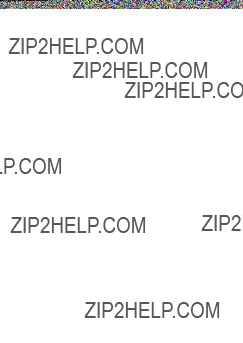
Network Setting
 Con???guring the IP Address Using ARP and PING
Con???guring the IP Address Using ARP and PING
Commands
This topic describes how to con???gure the IP address using ARP and PING commands.
To use the ARP and PING commands, you will need to know the printer???s MAC address. You can con???rm the MAC address on the Control Panel.
1. Check the printer???s MAC address.
You can con???rm the MAC address on the Control Panel as follows:
1.Press the Menu button to display MAIN MENU.
2.Press ??? or ??? to select Interface Setup, and then press the ??? button.
3.Press ??? or ??? to select Ethernet Driver, and then press the ??? button.
4.Press ??? or ??? to select MAC Address, and then press the ??? button.
You can also print information on the printer status, which includes the MAC address, as follows:
1.Press the Menu button to display MAIN MENU.
2.Press ??? or ??? to select Test Print, and then press the ??? button.
3.Press ??? or ??? to select Status Print, and then press the ??? button.
4.Press ??? or ??? to select Yes, and then press the OK button.
The MAC address is indicated in the printer status information in the following location.
2. In Windows, open a command prompt or MS-DOS prompt, or in Mac OS X, start Terminal.
3. Execute the following command to add entries to the ARP table for managing IP addresses and corresponding MAC addresses.
arp -s [IP address] [the printer???s MAC address you have veri???ed] Example: arp -s xxx.xxx.xxx.xxx 00-00-85-xx-xx-xx
 Note
Note
???In Mac OS X when using Terminal, enter the arp command in the format ???arp -s xxx.xxx.xxx.xxx 00:00:85:xx:xx:xx.??? For details, refer to the help ???le for the command line.
Network Setting
4. Execute the following command to send the IP address to the printer and con???gure it. ping [IP address as speci???ed in the ARP command] -l 479
Example: ping xxx.xxx.xxx.xxx -l 479
 Note
Note
???In ???-l,??? the ???l??? is the letter ???l???.
???In Mac OS X when using Terminal, enter the ping command in the format ???ping -s 479 xxx.xxx.xxx.xxx.??? For details, refer to the help ???le for the command line.
 Note
Note
???The subnet mask and default gateway will be set to ???0.0.0.0.???Use RemoteUI to change the subnet mask and default gateway to match your network settings.
For details on RemoteUI, see ???Using RemoteUI???. (???P.622)
Network Setting
 Specifying Printer-Related Information
Specifying Printer-Related Information
Follow the steps below to specify device information and security settings.
1. Start the web browser and enter the following URL in the Location (or Address ) box to display the RemoteUI page.
http://???printer IP address or name???/
Example: http://xxx.xxx.xxx.xxx/
2. Select Administrator Mode and click Logon.
3. If a password has been set on the printer, enter the password.
4. Click Information in the Device Manager menu at left to display the Information page.
5. To display the relevant settings page, click Edit in the upper-right corner of Device Information or Security, depending on what information you want to specify.
6. Refer to the tables of settings items for device information and security settings to complete the settings.
Device information settings items
Security settings items
Besides entering a password, you can specify other security-related information, such as use of SNMP or IPP authentication, or an IP address to restrict printing via TCP/IP.
7. Click OK to activate the settings.
Network Setting
 Using RemoteUI
Using RemoteUI
Enter the printer???s IP address in a web browser to display the RemoteUI page. After you log on to RemoteUI from the page, you can check and change the status of the printer and print jobs, and con???gure network settings.
For details on con???guring printer settings for networks, refer to the following topics.
???Con???guring the Printer???s TCP/IP Network Settings (???P.616)
???Con???guring the Printer???s AppleTalk Network Settings (???P.637)
???Con???guring the Printer???s NetWare Network Settings (???P.624)
???Specifying Printer-Related Information (???P.621)
 Note
Note
???RemoteUI also offers many other features. You can display the ink levels, check error messages and other status information, and cancel print jobs.
???By factory default, the English screen is displayed. You can change the display language after logging on in Administrator Mode by choosing the desired language in the Language list.
 Important
Important
???Use Netscape Navigator/Communicator 6.0 or later, Internet Explorer 5.01 or later, or Firefox 1.5 or later as a web browser. In Mac OS X, you can also use Safari 1.32 or later or Safari 2.03 or later.
???Access is not possible via a proxy server. In environments where a proxy server is used, add the printer???s IP address to Exceptions (addresses accessed without a proxy server) in the web browser proxy server settings. (Settings may vary depending on the network environment.)
???Enable JavaScript and cookies in the web browser.
???If you access RemoteUI with the printer name instead of its IP address, make sure the DNS settings are correctly con???gured.
Network Setting
 Email Noti???cation When Printing is Finished or Errors Occur
Email Noti???cation When Printing is Finished or Errors Occur
The printer can notify you of the printer status by email. Even when you are away from the printer, you can know when printing is ???nished or if errors occur. Receive noti???cation via email on your mobile phone or at your computer.
Use the imagePROGRAF Status Monitor (Windows) function to set up email recipients and message timing. Besides being informed of ???nished print jobs or errors, you can also complete settings for email noti???cation when service is needed or it???s time to replace consumables.
 Note
Note
???For details on email noti???cation using imagePROGRAF Status Monitor (in Windows), refer to the imagePROGRAF Status Monitor help.
Network Setting (Windows)
Network Setting (Windows)
 Con???guring the Printer???s NetWare Network Settings
Con???guring the Printer???s NetWare Network Settings
Follow the steps below to con???gure the NetWare network settings.
1. Start the web browser and enter the following URL in the Location (or Address ) box to display the RemoteUI page.
http://???printer IP address or name???/
Example: http://xxx.xxx.xxx.xxx/
2. Select Administrator Mode and click Logon.
3. If a password has been set on the printer, enter the password.
4. Click Network in the Device Manager menu at left to display the Network page.
5. Click Edit in the upper-right corner of the NetWare group to display the Edit NetWare Protocol Settings page.
6. Refer to the NetWare Settings Items table to complete the settings.
NetWare Settings Items
7. Click OK to display the Network page.

Network Setting (Windows)
 Specifying the Printer???s Frame Type
Specifying the Printer???s Frame Type
To enable communication between the printer and computers on your network, specify the Ethernet frame type in your NetWare environment.
Follow the steps below to specify the frame type by using imagePROGRAF Device Setup Utility or the printer Control Panel.
Note
??? You can specify the frame type by using RemoteUI if the printer???s IP address is con???gured.
 Important
Important
???Before specifying the frame type, make sure the printer is on and connected to the network.
???For instructions on installing imagePROGRAF Device Setup Utility, see ???Installing imagePROGRAF Device Setup Utility???. (???P.535)
Specifying the frame type using imagePROGRAF Device Setup Utility
1. Start imagePROGRAF Device Setup Utility.
2. In the list of printers, select the printer to con???gure.
3. Choose Protocol Settings from the Printer menu.
4. In the NetWare Frame Type list, select the frame type.
5. Click ETHERNET II under Frame Type in TCP/IP.
6. In IP Address, enter the IP address assigned to the printer, and then enter the subnet mask in
Subnet Mask and the default gateway in Gateway Address.
 Important
Important
???You must specify the IP address here to be able to con???gure NetWare protocol settings using RemoteUI.
7.Click Set.
8.Click OK after the Con???rmation message dialog box is displayed.
9.Exit imagePROGRAF Device Setup Utility.

Network Setting (Windows)
Specifying the frame type using the printer Control Panel
1. Press the Menu button to display MAIN MENU.
2. Press ??? or ??? to select Interface Setup, and then press the ??? button.
3. Press ??? or ??? to select NetWare, and then press the ??? button.
4. Press ??? or ??? to select NetWare, and then press the ??? button.
5. Press ??? or ??? to select On, and then press the OK button. Return to the NetWare menu.
6. Press ??? or ??? to select Frame Type, and then press the ??? button.
7. Press ??? or ??? to select the frame type to use, and then press the OK button. Return to the NetWare menu.
8. Press ??? or ??? to select Print Service, and then press the ??? button.
9. Press ??? or ??? to select the desired print service, and then press the OK button. Return to the NetWare menu.
10. Press the Online button to bring the printer online.
If any of the settings is changed, a message for con???rmation is displayed. In this case, press the OK button.
 Note
Note
???If an error message is displayed, check the settings and correct any invalid values.
???To cancel the setup process, hold down the Stop button for a second or more.
Important
??? Be sure to complete step 5. This will activate the values you have entered.
Network Setting (Windows)
 Specifying NetWare Print Services
Specifying NetWare Print Services
Before printing in a NetWare network, you must con???gure print services such as print servers, print queues, and so on. You can con???gure the print service settings from a computer using any of the following software.
???NWADMIN
???PCONSOLE
(from Novell, provided with NetWare)
 Important
Important
???If you use NWADMIN to con???gure the print service settings, Novell Client (the Novell NetWare client software) must be installed as the client software application.
???NetWare networking is unsupported in Windows Vista.
This topic gives instructions for con???guring NetWare print services. The order of this procedure may vary depending on the environment.
Choosing the type of print services
Before completing print service settings, choose the type of print service. Refer to the following descriptions as needed.
 Note
Note
???In NetWare 5.1/6.0/6.5, NDPS may also be used as the print service. If you use NDPS, use the Novell printer gateway included with NetWare. For details on con???guring NDPS, refer to the NetWare documentation.
???NDS (Novell Directory Service) and Bindery
NDS and bindery are both supported. Use the mode that is compatible with your network environment.
???Queue Server Mode and Remote Printer Mode
Queue server mode and remote printer mode are both supported.
???Queue Server Mode
When using queue server mode, all print server functions are supported, so there is no need for other print server software or hardware. In NDS queue server mode (NDS PServer), the NDS print server is used for printing. In bindery queue server mode (Bindery PServer), the bindery print server is used for printing. Note that if you use queue server mode, a NetWare user license is required for each network interface.
???Remote Printer Mode
In remote printer mode, the printer is controlled by the NetWare print server. Thus, a NetWare print server is required. In NDS remote printer mode (NPrinter), the NDS print server is used for printing, and in bindery remote printer mode (RPrinter), the bindery print server is used for printing.
Network Setting (Windows)
Using NWADMIN or PCONSOLE to set up the print server
Use NWADMIN to set up the print server if NDS queue server mode or remote printer mode is used.
Log into NetWare as Administrator or with equivalent rights, and then start NWADMIN.
Run Quick Setup.
1.Choose Print Services Quick Setup in the Tools menu.
2.Enter a desired name in Print Server Name. To use an existing print server, click the button at right and choose the name from the list.
3.Enter a desired printer name in Name.
4.To use the printer in queue server mode, choose Other/Unknown in Type. To use the printer in remote printer mode, choose Parallel in Type, click Communications, and set Ports to LPT1 and
Connection Type to Manual Load.
5.Enter a desired queue name in Name.
6.In Volume, enter the volume object (that is, the object representing the physical volume on the network) where the print queue will be created. Click the button at right to choose from a list.
7.Complete other settings as needed and click OK.
 Note
Note
???The print server name will be required when con???guring the printer???s network settings. Note the print server name for future reference.
???When running Quick Setup, the printer is assigned printer number ???0.??? When using the printer in queue server mode, do not change the printer number from ???0.???
3.Set a password.
1.Right-click the print server created in step 2 and choose Details.
2.Click Change Password to open the password input dialog box. Enter the password.
3.Click OK to close the password input dialog box.
4.Click OK or Cancel to close the details dialog box.
4.To use the printer in remote printer mode, start the print server.
To use the NetWare ???le server as the print server, enter ???LOAD PSERVER.NLM??? at the ???le server and press the Enter key.
 Note
Note
??? This procedure is not required when using queue server mode.
Network Setting (Windows)
Use PCONSOLE to set up the print server if bindery queue server mode or remote printer mode is used.
Log into NetWare as Supervisor and start PCONSOLE.
Switch to bindery mode.
If the print server has not been created, create it.
1.In Available Options, select Quick Setup and press the Enter key.
2.Enter the name of the new print server, the new printer, and the queue.
 Note
Note
???The print server name will be required when con???guring the printer???s protocol settings. Note down the print server name for future reference.
4.Specify the printer type.
1.To use the printer in queue server mode, choose Other/Unknown in Type. To use remote printer mode, set Printer Type to Parallel and Position to Manual Load.
2.Press the Esc key.
3.After the con???rmation message is displayed, choose Yes and press the Enter key.
5.Set a password.
1.In Available Options, select Print Servers and press the Enter key.
2.Select the print server created in step 2 and press the Enter key.
3.Select Password, and press the Enter key to display the password input dialog box.
4.Enter the password and press the Enter key.
6.Press the Esc key several times to display the dialog box for con???rming that PCONSOLE is ???nished.
7.Click Yes to exit PCONSOLE.
Network Setting (Windows)
 Specifying NetWare Protocols
Specifying NetWare Protocols
Follow the steps below to con???gure NetWare protocol settings other than the frame type by using RemoteUI.
 Note
Note
???For details on RemoteUI, see ???Using RemoteUI???. (???P.622)
1.Start the web browser and enter the following URL in the Location (or Address ) box to display the RemoteUI page.
http://???printer IP address or name???/ Example: http://xxx.xxx.xxx.xxx/
2.Select Administrator Mode and click Logon.
3.If a password has been set on the printer, enter the password.
4.Click Network in the Device Manager menu at left to display the Network page.
5.Click Edit in the upper-right corner of the NetWare group to display the Edit NetWare Protocol Settings page.
6.Make sure the Frame Type indicates the frame type used on the NetWare network.
7.To use burst mode, choose On for NCP Burst Mode.
 Note
Note
???Burst mode supports fast data transfer when printing in queue server mode. Normally, choose On.
8.In Print Application, click the print service to be used.
 Note
Note
???Only one print service selected here will be enabled. Multiple print services are not available at the same time.
9.For packet signature, click If Requested by Server in Packet Signature.
10.Complete the following settings based on the selected service.
???If you have selected Bindery PServer: Queue Server Mode (Using a Bindery Print Server)
1.In File Server Name, enter the ???le server name.
2.In Print Server Name, enter the name of the print server created in Specifying NetWare Print Services. (???P.628)
3.In Print Server Password, enter the password of the print server created in Specifying NetWare Print Services. (???P.628)
4.In Polling Interval, specify the interval at which the printer checks the NetWare print queue.
???If you have selected RPrinter: Remote Printer Mode (Using a Bindery Print Server)
1.In Print Server Name, enter the advertising name of the print server created in Specifying NetWare Print Services. (???P.628)
2.In Printer Number, enter the same printer number speci???ed in Specifying NetWare Print Services. (???P.628)
Network Setting (Windows)
???If you have selected NDS PServer: Queue Server Mode (Using an NDS Print Server)
1.In Tree Name and Context Name, enter the tree and context name of the print server. Do not exceed 255 characters for the context name.
2.In Print Server Name, enter the name of the print server created in Specifying NetWare Print Services. (???P.628)
3.In Print Server Password, enter the password of the print server created in Specifying NetWare Print Services. (???P.628)
4.In Polling Interval, specify the interval at which the printer checks the NetWare print queue.
???If you have selected NPrinter: Remote Printer Mode (Using a NDS Print Server)
1.In Print Server Name, enter the advertising name of the print server created in Specifying NetWare Print Services. (???P.628) Usually, the advertising name is the same as the name of the print server.
2.In Printer Number, enter the same printer number speci???ed in Specifying NetWare Print Services. (???P.628)
11.Click OK to display the Network page.
12.Click Reset to activate the settings.
For a list of NetWare protocol settings items, see ???Con???guring the Printer???s NetWare Network Settings???. (???P.624)
 Note
Note
???If you use RemoteUI to display the print log in RPrinter or NPrinter mode, the document and user information cannot be obtained. Thus, Document Name only indicates Unknown, and the User Name information is identi???ed as RPRINTER/NPRINTER.
Network Setting (Windows)
 Con???guring NetWare Network Settings
Con???guring NetWare Network Settings
To print over a NetWare network, con???gure the network environment as follows.
 Important
Important
???To con???gure network settings, you must be logged in with administrative rights such as ???Administrator??? account. We recommend that your network administrator con???gure the network settings.
1.Specify the Ethernet frame type for communication between the printer and computers. For instructions, see ???Specifying the Printer???s Frame Type???. (???P.626)
2.Specify the NetWare print services, including the print server and queue. For instructions, see ???Specifying NetWare Print Services???. (???P.628)
3.Specify NetWare protocol details besides the frame type.
For instructions, see ???Specifying NetWare Protocols???. (???P.631)
After you have completed the steps above, con???gure each computer for printing over the NetWare network.
4.Connect to the NetWare network.
Install NetWare client software on each computer to be used for printing over the network, and log in to the NetWare server or tree. For instructions on connection, refer to the NetWare and operating system documentation.
5.Install the printer driver.
Follow the instructions of your network administrator to install the printer driver on each computer to be used for printing. When installing the printer driver, choose Network Printer as the printer destination, and then choose the print queue created from the NetWare print service settings.
6.Follow these steps to con???gure the printer port.
1.Open the Printers and Faxes (or Printers ) window.
2.Right-click the printer icon and choose Properties.
3.Click the Port (or Advanced ) tab to display the Port (or Advanced ) sheet.
4.As the destination port, specify the print queue created by con???guring the NetWare print service settings.
 Note
Note
???This step is not necessary if you speci???ed the printer destination during installation of the printer driver.
Network Setting (Windows)
 Con???guring the Printer Driver Destination (Windows)
Con???guring the Printer Driver Destination (Windows)
This topic describes how to specify the printer driver destination if the printer???s IP address is changed, or if you will use the printer over a network connection instead of via USB connection.
 Important
Important
???If you use the printer on a TCP/IP network, make sure the printer???s IP address is con???gured correctly.
???Con???guring the IP Address on the Printer (???P.614)
1.Open the Printers and Faxes (or Printers ) window.
2.Right-click the icon of this printer and choose Properties to open the printer properties window.
3.Click the Port tab to display the Port sheet.
4.Click Add Port to display the Printer Ports dialog box.
5.In the Available Port list, select Standard TCP/IP Port.
6.Click New Port.
After the wizard starts, a window is displayed for the Welcome to the Add Standard TCP/IP Printer Port Wizard.
7.Click Next.
8.In Printer Name or IP Address, enter the printer???s IP address.
9.Follow the instructions on the screen to add a printer port.
10.Click Close to close the Printer Ports dialog box.
11.Make sure the printer port you added is displayed under Ports, and that the port is selected.
12.Click OK to close the printer properties window.
 Note
Note
???The procedure described above is the con???guration based on the LPR or RAW protocol using the standard TCP/IP port in Windows ( Standard TCP/IP Port ).
Network Setting (Windows)
 Installing imagePROGRAF Device Setup Utility
Installing imagePROGRAF Device Setup Utility
Install imagePROGRAF Device Setup Utility from the User Software CD-ROM provided with the printer as follows:
 Important
Important
???In Windows 2000/Windows XP/Windows Server 2003/Windows Vista, you must log on with administrative rights equivalent to the ???Administrator??? account.
1.Insert the User Software CD-ROM in the CD-ROM drive.
2.On the Setup Menu window, click Install Individual Software.
3.Click Install in imagePROGRAF Device Setup Utility.
4.Follow the instructions on the screen to proceed with the installation.
Network Setting (Windows)
 Con???guring the IP Address Using imagePROGRAF Device Setup Utility
Con???guring the IP Address Using imagePROGRAF Device Setup Utility
From a computer running Windows, you can use imagePROGRAF Device Setup Utility provided with the printer to con???gure the printer???s IP address. This topic describes how to con???gure the IP address using imagePROGRAF Device Setup Utility.
 Important
Important
???To con???gure network settings, you must be logged in with administrative rights such as ???Administrator??? account. We recommend that your network administrator con???gure the network settings.
???For instructions on installing imagePROGRAF Device Setup Utility, see ???Installing imagePROGRAF Device Setup Utility???. (???P.535)
1.Start imagePROGRAF Device Setup Utility from the start menu.
2.In the list of printers, select the printer to con???gure.
3.Choose Protocol Settings from the Printer menu.
4.In the Setting IP Address list, choose Manual.
5.Enter the IP address assigned to the printer and click the Set button.
6.Click OK after the Con???rmation message dialog box is displayed.
7.Exit imagePROGRAF Device Setup Utility.
 Note
Note
???To con???gure the IP address automatically, choose Auto in the Setting IP Address list and select
DHCP, BOOTP, or RARP.
???You can also specify the subnet mask and default gateway.

Network Setting (Macintosh)
Network Setting (Macintosh)
 Con???guring the Printer???s AppleTalk Network Settings
Con???guring the Printer???s AppleTalk Network Settings
Follow the steps below to con???gure the AppleTalk network settings.
1. Start the web browser and enter the following URL in the Location (or Address ) box to display the RemoteUI page.
http://???printer IP address or name???/
Example: http://xxx.xxx.xxx.xxx/
2. Select Administrator Mode and click Logon.
3. If a password has been set on the printer, enter the password.
4. Click Network in the Device Manager menu at left to display the Network page.
5. Click Edit in the upper-right corner of the AppleTalk group to display the Edit AppleTalk Protocol Settings page.
6. Refer to the AppleTalk Settings Items table to complete the settings.
AppleTalk Settings Items
*1:The object name you have speci???ed in Name is displayed in Chooser in Mac OS 9 or Printer Setup Utility (or Print Center ) in Mac OS X. If you use multiple printers in the same zone, assign a unique name to each printer. By default, the network interface name is ???Canon NB-17FB (xxxxxx).??? (Here, xxxxxx is the last six digits of the printer???s MAC address.)
*2: If zones have been created on the network, enter the name of the printer???s zone. If there are no zones, leave the asterisk ???*??? entry (for the default zone) as it is. If you enter a network zone name that does not match created zones, the printer will not be detected by Macintosh computers. Consult your network administrator for information on zone names.
7. Click OK to display the Network page.
Network Setting (Macintosh)
 Con???guring the Printer Driver Destination (Macintosh)
Con???guring the Printer Driver Destination (Macintosh)
Specify the printer driver destination as follows if the printer???s IP address is changed, or if you will use the printer over a network connection instead of via USB connection.
???If you switch to printing in an AppleTalk network, see ???Con???guring the Destination for AppleTalk Network (Macintosh)???. (???P.639)
???If you switch to printing in a TCP/IP network, or if the printer???s IP address is changed, see ???Con???guring the Destination for TCP/IP Network (Macintosh)???. (???P.643)
???If you switch to printing in a Bonjour network, see ???Con???guring the Destination for Bonjour Network (Macintosh)???. (???P.647)

Network Setting (Macintosh)
 Con???guring the Destination for AppleTalk Network (Macintosh)
Con???guring the Destination for AppleTalk Network (Macintosh)
To print over an AppleTalk network, activate the AppleTalk protocol and con???gure the destination as follows.
Activating AppleTalk on the printer
 Important
Important
??? By factory default, the AppleTalk protocol is disabled on the printer.
1.Press the Menu button to display MAIN MENU.
2. Press ??? or ??? to select Interface Setup, and then press the ??? button.
3. Press ??? or ??? to select AppleTalk, and then press the ??? button.
4. Press ??? or ??? to select On, and then press the OK button.
5. Press the Online button to bring the printer online.
If any of the settings is changed, a message for con???rmation is displayed. In this case, press the OK button.
 Note
Note
???By using RemoteUI, you can also specify the object name used by AppleTalk, as well as the printer zone name.
For details on RemoteUI, see ???Using RemoteUI???. (???P.622)
Important
??? Be sure to complete step 3. This will activate the values you have entered.
Network Setting (Macintosh)
Con???guring the destination (Mac OS 9)
1. Choose Chooser from the Apple menu to display the Chooser window.
2. In AppleTalk, click Active.
3. Close the Chooser window.
4. Click AppleTalk under Control Panels to display the AppleTalk window.
5. In Connect via, choose Built-in Ethernet.
6. Close the AppleTalk window and save the settings.
7. Choose Chooser from the Apple menu to display the Chooser window.
8. In the list at left, click GARO Printer Driver.
9. In the Destination list at right, select AppleTalk, and then select the printer in the list below.
10. Close the Chooser window and click OK after the con???rmation message is displayed.
Network Setting (Macintosh)
Con???guring the destination (Mac OS X)
 Note
Note
???The following procedures are based on Mac OS X 10.4. The method of con???guring the destination varies depending on the version of Mac OS X.
1.In System Preferences, click Network to display the Network window.
2.In Show, choose Built-in Ethernet. Next, click AppleTalk, select Make AppleTalk Active, and click Apply now.
Close the Network window and save the settings.
Choose Utilities (or Applications ) in the Go menu of Finder.
Click Printer Setup Utility (or Print Center ) in the Utilities folder.
If the printer name is not displayed in Printer List, click Add.
Network Setting (Macintosh)
7. Select the printer from the list in the Printer Browser window and click Add.
Network Setting (Macintosh)
 Con???guring the Destination for TCP/IP Network (Macintosh)
Con???guring the Destination for TCP/IP Network (Macintosh)
Follow the steps below to con???gure the destination if you use the printer on TCP/IP network.
 Important
Important
???If you use the printer on TCP/IP network, make sure the printer???s IP address is con???gured correctly.
???Con???guring the IP Address Using the Printer Control Panel (???P.618)
Con???guring the Destination (Mac OS 9)
1. Choose Chooser from the Apple menu to display the Chooser window.
2. In the list at left, click GARO Printer Driver.
3. Click Registering IP Address in the Destination list to display the IP Address Register/Edit dialog box.
Network Setting (Macintosh)
4. Enter the printer???s IP address in IP Address and click Add.
5. Click OK to close the IP Address Register/Edit dialog box.
6. In the Destination list, click the address you registered.
7. Close the Chooser window and click OK after the con???rmation message is displayed.
Network Setting (Macintosh)
Con???guring the Destination (Mac OS X)
 Note
Note
???The following procedures are based on Mac OS X 10.4. The method of con???guring the destination varies depending on the version of Mac OS X. If you use other versions, refer to the help for the Printer Setup Utility (or the Print Center ).
1.Choose Utilities (or Applications ) in the Go menu of Finder.
2.Click Printer Setup Utility (or Print Center ) in the Utilities folder.
3.Click Add to display the Printer Browser window.
4. Click More Printers.
Network Setting (Macintosh)
5. In the list of connection methods, click Canon IP(iPF).
6. Enter the printer???s IP address in Printer???s Address and click Add.
7. Make sure the printer has been added, and then close the Printer List window.

Network Setting (Macintosh)
 Con???guring the Destination for Bonjour Network (Macintosh)
Con???guring the Destination for Bonjour Network (Macintosh)
In Mac OS X 10.2.8 and later, use Bonjour functions to easily connect the printer to the network. Follow the steps below to con???gure the destination if you use the printer on TCP/IP network.
 Note
Note
???In Mac OS 9, if the computer???s TCP/IP settings have been con???gured, you can connect the printer to the network as easily as with the Bonjour function.
Select IP Print (Auto) from the Destination list in Chooser to specify the destination.
 Important
Important
???Bonjour and IP Print (Auto) do not support printing to a printer on other network groups that require a router for connection. Make sure the computer and printer are on the same network. For information about network settings, ask your network administrator.
???By default, Bonjour is activated on the printer. The printer name as displayed in Chooser in Mac OS 9 or Printer Setup Utility (or Print Center ) in Mac OS X is prede???ned as the Multicast DNS Service Name. You can activate or deactivate the Bonjour function or change the printer name by using RemoteUI. For instructions on changing it, see ???Using RemoteUI???. (???P.622)
1.Choose Utilities (or Applications ) in the Go menu of Finder.
2.Click Printer Setup Utility (or Print Center ) in the Utilities folder.
3.If the printer name is not displayed in Printer List, click Add.
Network Setting (Macintosh)
4. Select the printer from the list in the Printer Browser window and click Add.

Adjusting the Printhead
Maintenance
Adjusting the Printhead
 Correcting Print Misalignment
Correcting Print Misalignment
If printed vertical lines are warped or colors are out of alignment, adjust the Printhead alignment. Adjust the Printhead alignment automatically or manually by using a printed test pattern.
For instructions on automatic adjustment, see ???Adjusting the Printhead Alignment Automatically???. (???P.649) For instructions on manual adjustment, see ???Adjusting the Printhead Alignment Manually???. (???P.651)
 Adjusting the Printhead Alignment Automatically
Adjusting the Printhead Alignment Automatically
If printed vertical lines are warped or colors are out of alignment, adjust the Printhead alignment. Adjust the Printhead alignment automatically or manually by printing and reading a test pattern.
There are two modes for automatic adjustment: Standard Adj. and Advanced Adj. Standard Adj. will ???x most slight image distortion or color misalignment, but if not, try Advanced Adj.
If using special media or printing does not improve even after performing automatic adjustment using advanced adjustment, try manual adjustment. For instructions on manual adjustment, see ???Adjusting the Printhead Alignment Manually???. (???P.651)
Follow these steps for standard automatic adjustment of the Printhead.
1. When using sheets, have three unused sheets A4/Letter-sized or larger ready when Standard Adj. is selected or 11 when Advanced Adj. is selected.
When using a roll, load a roll 10 inches (254 mm) or wider.
???Setting the Roll on the Roll Holder (???P.177)
???Loading the Roll in the Printer (???P.180)
???Loading the Sheet in the Printer (???P.210)
 Note
Note
???Use Standard Adj. if you have switched to another type of paper or if you want the boundaries between colors to appear as attractive as possible.
???Use Advanced Adj. to ???ne-tune the space between nozzles or colors if you have switched the printhead or if you want printed documents to appear as vivid as possible. We recommend using Advanced Adj. for printing at a higher level of image quality.
???Always make sure the loaded paper matches the media type setting on the printer. Adjustment cannot be completed correctly unless the setting value matches the loaded paper.
???We recommend using the type of paper you use most often for adjustment.
???This function is not available for CAD Tracing Paper, CAD Translucent Matte Film, or CAD Clear Film. If adjustment is not possible as expected using highly transparent ???lm or similar media, try another type of media or adjust the Printhead alignment manually. (???P.651)
Adjusting the Printhead
2. Press the Menu button to display MAIN MENU.
3. Press ??? or ??? to select Adjust Printer, and then press the ??? button.
4. Press ??? or ??? to select Auto Head Adj., and then press the ??? button.
5. Press ??? or ??? to select Advanced Adj., and then press the ??? button.
6. Press ??? or ??? to select Yes, and then press the OK button. A test pattern is printed for printhead adjustment.
After reading the pattern, the printer automatically adjusts the Printhead alignment.

Adjusting the Printhead
 Adjusting the Printhead Alignment Manually
Adjusting the Printhead Alignment Manually
If printed vertical lines are warped or colors are out of alignment, adjust the Printhead alignment. Adjust the Printhead alignment automatically or manually by using a printed test pattern.
You can adjust the Printhead alignment automatically or manually. Normally, choose automatic adjustment. If using special media or printing does not improve even after performing automatic adjustment using advanced adjustment, try manual adjustment. For instructions on automatic adjustment, see ???Adjusting the Printhead Alignment Automatically???. (???P.649)
Follow these steps for standard manual adjustment of the Printhead.
 Note
Note
???If Manual Head Adj is unusable although displayed in the menu, choose Advanced Adj. in Auto Head Adj. Manual Head Adj is available in the menu after you try Auto Head Adj. once.
1. When using sheets, have two unused sheets A4-sized or larger ready. When using a roll, load a roll 10 inches (254 mm) or wider.
???Setting the Roll on the Roll Holder (???P.177)
???Loading the Roll in the Printer (???P.180)
???Loading the Sheet in the Printer (???P.210)
 Note
Note
???Always make sure the loaded paper matches the media type setting on the printer. Adjustment cannot be completed correctly unless the setting value matches the loaded paper.
???We recommend using the type of paper you use most often for adjustment.
2.Press the Menu button to display MAIN MENU.
3. Press ??? or ??? to select Adjust Printer, and then press the ??? button.
4. Press ??? or ??? to select Manual Head Adj, and then press the ??? button.
5. Press ??? or ??? to select Yes, and then press the OK button. A test pattern is printed for printhead adjustment.
6. Press ??? or ??? to select D, and then press the ??? button.
7. Press ??? or ??? to select D-1, and then press the ??? button.
Adjusting the Printhead
8. Examine test pattern D-1 for printhead adjustment. After you determine the pattern with straight lines, press ??? or ??? to choose the pattern number, and then press the OK button.
 Note
Note
???If lines seem straightest in two patterns but you cannot decide which one is better, choose an intermediate value. For example, choose 11 if you cannot decide whether pattern 10 or 12 is better.
9.Repeat steps 7 and 8 to specify the adjustment value for D-2 to D-5, D-7 to D-11, and D-13 to
D-24.
10.Press ???.
11.Press ??? or ??? to select Register Setting, and then press the ??? button.
12.Press ??? or ??? to select Yes, and then press the OK button. The printer goes online.
Adjusting the Printhead
 Adjusting the Printhead Height
Adjusting the Printhead Height
If the printing rubs or the edge of paper is wrinkled from rubbing, adjusting the Printhead height may improve results.
If image edges are blurred, it may help to lower the Printhead.
1. Press the Menu button to display MAIN MENU.
2. Press ??? or ??? to select Paper Details, and then press the ??? button.
3. Press ??? or ??? to select the type of paper, and then press the ??? button.
4. Press ??? or ??? to select Head Height, and then press the ??? button.
5. Press ??? or ??? to select the Printhead height, and then press the OK button.

Adjusting the feed amount
Adjusting the feed amount
 Adjusting the Feed Amount Automatically
Adjusting the Feed Amount Automatically
If printed images are affected by banding in different colors, adjust the amount that paper is fed. There are two modes for adjusting the amount paper is fed, Standard Adj. and Advanced Adj. Use Advanced Adj. if Standard Adj. does not eliminate streaks, or when using paper other than genuine Canon paper or paper for purposes other than checking output. When using highly transparent media not compatible with automatic adjustment, you must adjust the feed amount manually. For instructions on manual adjustment, see ???Adjusting the Feed Amount Manually???. (???P.657)
 Note
Note
???To adjust the measurement scale and ensure accuracy (so that lines in CAD drawings are printed at exactly the right length, for example), specify the amount of paper stretching or shrinkage when adjusting the feed amount. (???P.661)
???This may take some time, depending on the type of paper.
 Important
Important
???Use paper of the same type and size for adjustment as you will use for printing.
???To apply the results of adjusting the feed amount in printing, you must ???rst set Feed Priority to Band Joint. Note that if you select Automatic, the results of adjustment will only be applied in printing if you set Print Priority in the printer driver to Image or Of???ce Document. (???P.241)
Follow these steps to change the Feed Priority setting.
1.Press the Menu button to display MAIN MENU.
2.Press ??? or ??? to select Paper Details, and then press the ??? button.
3.Press ??? or ??? to select the type of paper, and then press the ??? button.
4.Press ??? or ??? to select Feed Priority, and then press the ??? button.
5.Press ??? or ??? to select Band Joint, and then press the OK button.

Adjusting the feed amount
Follow the steps below to adjust the feed amount automatically.
1. Prepare one unused sheet A4/Letter-sized or larger when Standard Adj. is selected or two when Advanced Adj. is selected.
When using a roll, load a roll 10 inches (254 mm) or wider.
???Setting the Roll on the Roll Holder (???P.177)
???Loading the Roll in the Printer (???P.180)
???Loading the Sheet in the Printer (???P.210)
 Note
Note
???Always make sure the loaded paper matches the media type setting. Adjustment cannot be completed correctly unless the setting value matches the loaded paper.
2.Press the Menu button to display MAIN MENU.
3. Press ??? or ??? to select Adjust Printer, and then press the ??? button.
4. Press ??? or ??? to select Auto Band Adj., and then press the ??? button.
5. Press ??? or ??? to select Standard Adj. or Advanced Adj., and then press the ??? button.
6. Press ??? or ??? to select Yes, and then press the OK button. A test pattern is printed for band adjustment.
After reading the pattern, the printer automatically adjusts the feed amount and returns to online mode.
 Note
Note
???In some cases, the feed amount cannot be adjusted automatically. If so, choose Advanced Adj. in Auto Band Adj. (???P.48)
???If printed documents are still affected by uneven contrast or banding in different colors at regular intervals after this adjustment, you can adjust the feed amount during printing. (???P.656)
Adjusting the feed amount
Adjusting the feed amount during printing
If, during printing, the contrast is uneven sideways across the paper or banding in different colors appears every 50 mm (2.0 in) or so, try adjusting the feed amount as follows. However, note that because printing is paused, colors may be slightly different.
1. Press the Online button to pause printing.
2. Press the Menu button to display Menu Durng Prtng.
3. Press ??? or ??? to select Fine Band Adj., and then press the ??? button.
4. Press ??? or ??? to change the value, and then press the OK button.
 Note
Note
???The supported range is -5 to +5.
5.Press the Online button to resume printing.
 Note
Note
???The Fine Band Adj. value set during printing is also applied to the next print job. However, if you adjust the feed amount (manually or automatically), the Fine Band Adj. value is reset to 0.

Adjusting the feed amount
 Adjusting the Feed Amount Manually
Adjusting the Feed Amount Manually
If printed images are affected by banding in different colors, adjust the amount that paper is fed. This topic describes how to adjust the feed amount manually.
When using highly transparent media for which automatic adjustment is not supported, adjust the feed amount manually. We recommend automatic adjustment for other types of media. For instructions on automatic adjustment, see ???Adjusting the Feed Amount Automatically???. (???P.654)
 Note
Note
???To adjust the measurement scale and ensure accuracy (so that lines in CAD drawings are printed at exactly the right length, for example), specify the amount of paper stretching or shrinkage when adjusting the feed amount. (???P.661)
 Important
Important
???Use paper of the same type and size for adjustment as you will use for printing.
???To apply the results of adjusting the feed amount in printing, you must ???rst set Feed Priority to Band Joint. Note that if you select Automatic, the results of adjustment will only be applied in printing if you set Print Priority in the printer driver to Image or Of???ce Document. (???P.241)
Follow these steps to change the Feed Priority setting.
1.Press the Menu button to display MAIN MENU.
2.Press ??? or ??? to select Paper Details, and then press the ??? button.
3.Press ??? or ??? to select the type of paper, and then press the ??? button.
4.Press ??? or ??? to select Feed Priority, and then press the ??? button.
5.Press ??? or ??? to select Band Joint, and then press the OK button.

Adjusting the feed amount
Follow the steps below to adjust the feed amount manually.
1. When using sheets, have two unused sheets A4/Letter-sized or larger ready. When using a roll, load a roll 10 inches (254 mm) or wider.
???Setting the Roll on the Roll Holder (???P.177)
???Loading the Roll in the Printer (???P.180)
???Loading the Sheet in the Printer (???P.210)
 Note
Note
???Always make sure the loaded paper matches the media type setting. Adjustment cannot be completed correctly unless the setting value matches the loaded paper.
2.Press the Menu button to display MAIN MENU.
3. Press ??? or ??? to select Adjust Printer, and then press the ??? button.
4. Press ??? or ??? to select Manual Band Adj, and then press the ??? button.
5. Press ??? or ??? to select Yes, and then press the OK button. Test pattern A is printed for band adjustment.
6. Examine test pattern A for band adjustment.After you determine the pattern in which streaks are least noticeable, press ??? or ??? to choose the pattern number, and then press the OK button.
Test pattern B is printed for band adjustment.
 Note
Note
???If streaks seem least noticeable in two patterns but you cannot decide which one is better, choose an intermediate value. For example, choose 11 if you cannot decide whether pattern 10 or 12 is better.
7.Examine test pattern B for band adjustment.After you determine the pattern in which streaks are least noticeable, press ??? or ??? to choose the pattern number, and then press the OK button. The feed amount is adjusted, and the printer goes online.
If printed documents are still affected by uneven contrast or banding in different colors at regular intervals after this adjustment, you can adjust the feed amount during printing. (???P.659)
Adjusting the feed amount
Adjusting the feed amount during printing
If, during printing, the contrast is uneven sideways across the paper or banding in different colors appears every 50 mm (2.0 in) or so, try adjusting the feed amount as follows. The results of adjustment are applied to printing in progress, enabling you to check the results immediately. However, note that because printing is paused, colors may be slightly different.
1. Press the Online button to pause printing.
2. Press the Menu button to display Menu Durng Prtng.
3. Press ??? or ??? to select Fine Band Adj., and then press the OK button.
4. Press ??? or ??? to change the value, and then press the OK button.
 Note
Note
???The supported range is -5 to +5.
5.Press the Online button to resume printing.
 Note
Note
???The Fine Band Adj. value set during printing is also applied to the next print job. However, if you adjust the paper feed amount (automatically or manually), the Fine Band Adj. value is reset to 0.
Adjusting the feed amount
 Adjusting the Vacuum Strength
Adjusting the Vacuum Strength
When printing on heavyweight paper or paper that curls or wrinkles easily, if the printing rubs or the edge of paper is wrinkled from rubbing, results may be improved by adjusting the strength of vacuum against paper on the Platen.
1. Press the Menu button to display MAIN MENU.
2. Press ??? or ??? to select Paper Details, and then press the ??? button.
3. Press ??? or ??? to select the type of paper, and then press the ??? button.
4. Press ??? or ??? to select VacuumStrngth, and then press the ??? button.
5. Press ??? or ??? to select the level of suction against paper on the Platen, and then press the
OK button.

Adjusting the feed amount
 Adjusting the Measurement Scale for Better Accuracy
Adjusting the Measurement Scale for Better Accuracy
To adjust the measurement scale and ensure accuracy (so that lines in CAD drawings are printed at exactly the right length, for example), specify the amount of paper stretching or shrinkage when adjusting the feed amount.
 Note
Note
???If printed images are affected by banding in different colors, adjust the amount that paper is fed. (???P.657)
 Important
Important
???Use paper of the same type and size for adjustment as you will use for printing.
???To apply the results of adjusting the measurement scale for better accuracy in printing, you must ???rst set Feed Priority to Print Length. Note that if you select Automatic, the results of adjustment will only be applied in printing if you set Print Priority in the printer driver to Line Drawing/Text. (???P.241)
Follow these steps to change the Feed Priority setting.
1.Press the Menu button to display MAIN MENU.
2.Press ??? or ??? to select Paper Details, and then press the ??? button.
3.Press ??? or ??? to select the type of paper, and then press the ??? button.
4.Press ??? or ??? to select Feed Priority, and then press the ??? button.
5.Press ??? or ??? to select Print Length or Automatic, and then press the OK button.

Adjusting the feed amount
Follow these steps to adjust the scale for better accuracy.
1. When using sheets, load one unused sheet A4/Letter-sized or larger. When using a roll, load a roll 10 inches (254 mm) or wider.
???Setting the Roll on the Roll Holder (???P.177)
???Loading the Roll in the Printer (???P.180)
???Loading the Sheet in the Printer (???P.210)
 Note
Note
???When loading paper, specify the correct paper type. When the paper type is not speci???ed, the printing quality may be affected without the correct adjustment of the feeding.
???We recommend using the type of paper you use most often for feed amount adjustment.
2.Press the Menu button to display MAIN MENU.
3. Press ??? or ??? to select Adjust Printer, and then press the ??? button.
4. Press ??? or ??? to select Adjust Length, and then press the ??? button.
5. Press ??? or ??? to select Yes, and then press the OK button.
A test pattern is printed for adjustment based on the amount of paper stretching or shrinkage. The scale bar shows ???Millimeter??? in 50 mm units and ???Inch??? in 1 inch units.
6. Measure the length of the adjustment pattern. Calculate the difference between the measured length and actual length. Enter it as a percentage and press the OK button.
You can adjust the value in 0.02% increments. Press ??? to increase the value and ??? to decrease it.
If the scale is printed shorter than actual size, set the value toward the positive side; if it is printed longer, set the value toward the negative side.
Note
??? You can also specify the adjustment value by selecting Paper Details ??? Adjust. Setting.

Color adjustment
Color adjustment
 Using Color Calibration to Adjust Colors
Using Color Calibration to Adjust Colors
Color calibration is a feature that compensates for changes in color from individual variation among Printhead or from the printing environment, ensuring better color consistency.
We recommend using color calibration in the following situations.
???After initial installation
???After Printhead replacement
???If colors seem different from before (however, make sure you are printing under the same conditions and in the same printing environment)
???When consistent color is desired from multiple printers (in this case, also use the same version of ???rmware and printer driver and the same settings.)
When you execute color calibration, a test pattern is printed and an adjustment value is automatically set based on the results of printing.
 Important
Important
???Before executing color calibration, you must prepare one of the following types of paper. Note that various environmental conditions are recommended for various types of paper. Use the printer under the recommended environmental conditions for the paper to be used. For details on recommended environmental conditions for various paper, see the Paper Reference Guide. (???P.167)
Color adjustment
???Optimal adjustment values from color calibration are also applied for paper other than the type you use to execute color calibration when printing on that other type of paper.
???In the printer driver or in the MAIN MENU of the Control Panel, you can specify whether to apply the adjustment value from color calibration when printing. The printer driver settings are given priority. For menu details, see ???Main Menu Settings???. (???P.48)
For information on printer driver settings, refer to the following topics.
???Printer Driver Settings (Windows) (???P.506)
???Printer Driver Settings (Mac OS X) (???P.557)
???Printer Driver Settings (Mac OS 9) (???P.583)
???Before color calibration, ensure the printer is not exposed to direct sunlight or other strong sources of light.
???If you reinstall the printer driver and change the region selection of the Media Con???guration Tool, region-speci???c paper information originally registered on the printer before installation will be deleted. If the information of paper you used for color calibration is deleted, such color calibration can no longer be applied to any type of paper. To apply the results of color calibration, perform color calibration again using paper supported in the newly selected region and compatible with color calibration. See the Media Con???guration Tool Guide (Windows) or Media Con???guration Tool Guide (Macintosh)
???Default settings will be restored if you select MAIN MENU > System Setup > Reset PaprSetngs > Yes. Because information added or updated using the Media Con???guration Tool is also deleted, if paper of which information was added using the Media Con???guration Tool was used for color calibration and is now deleted, such color calibration can no longer be applied to any type of paper. To apply the results of color calibration, perform color calibration again using a paper included originally in the default settings that is compatible with color calibration. See the Media Con???guration Tool Guide (Windows) or Media Con???guration Tool Guide (Macintosh).
 Note
Note
???We recommend using only one type of paper for color calibration. Using the same type of paper for color calibration can improve color consistency.
???For better color consistency, we recommend performing color calibration under the same conditions of temperature and humidity each time.
???For further adjustment of the color of documents as printed applying color calibration, adjust the color in the printer driver. (???P.252)
???You can check when color calibration was executed and what paper was used from Status Print, imagePROGRAF Status Monitor (in Windows) or imagePROGRAF Printmonitor (on a Macintosh computer) in the MAIN MENU on the Control Panel.
For menu details, see ???Main Menu Settings???. (???P.48)
For details on imagePROGRAF Status Monitor, refer to the imagePROGRAF Status Monitor help. For details on imagePROGRAF Printmonitor, refer to the imagePROGRAF Printmonitor help.
Color adjustment
Follow these steps to execute color calibration.
1. Load paper compatible with color calibration.
When using sheets, load paper A4 (210.0??297.0 mm)/Letter (8.5??11 in) vertical, or larger. One sheet is required.
When using a roll, load a roll 10 inches (254 mm) or wider.
???Loading and Printing on Rolls (???P.140)
???Loading and Printing on Sheets (???P.144)
2.Press the Menu button to display MAIN MENU.
3. Press ??? or ??? to select Adjust Printer, and then press the ??? button.
4. Press ??? or ??? to select Calibration, and then press ???.
5. Press ??? or ??? to select Auto Adjust, and then press the ??? button.
6. Press ??? or ??? to select Yes, and then press the OK button.
After the printer measures environmental conditions and checks the paper, a test pattern for color calibration is printed. An adjustment value based on the results of printing is set automatically. After adjustment is complete, the printer goes online or of???ine automatically.
Color adjustment
 Printing in Ideal Colors for Light in the Viewing Environment
Printing in Ideal Colors for Light in the Viewing Environment
You can print in the colors that look best when viewed under the light where the printed image will be displayed. There are two ways to adjust the color tone for the ambient light, as follows.
By selecting color tones on Charts before printing
On the printed Chart, note the number of the set of colors with the desired color tone and enter this number in the printer driver before printing.
 Important
Important
???This function requires that the Light Source Check Tool be installed.
???You can install the Light Source Check Tool from the User Software CD-ROM.
???This function is only supported in Windows.
For instructions on selecting color tones on Charts before printing, refer to the following topic:
??? By selecting color tones on Charts before printing (Windows) (???P.667)
Printing in Colors Matching the Measured Ambient Light
Measure the light level in the viewing environment and enter the results in the printer driver before printing.
 Important
Important
???This function requires the Eye-One spectrophotometer. The Light Source Measure Tool must also be installed.
???You can install the Light Source Measure Tool from the User Software CD-ROM.
???For a list of supported Eye-One devices, refer to the manual provided with the Light Source Measure Tool.
???This function is only supported in Windows.
For instructions on measuring light levels before printing, refer to the following topic:
??? Printing in Colors Matching the Measured Ambient Light (???P.671)
Color adjustment
 By selecting color tones on Charts before printing (Windows)
By selecting color tones on Charts before printing (Windows)
Print Charts, note the number of the chart with your desired color tone, and enter this number in the printer driver before printing.
 Important
Important
???This function requires that the Light Source Check Tool be installed.
???You can install the Light Source Check Tool from the User Software CD-ROM.
1.Choose Print in the application menu.
2.Select the printer in the dialog box, and then display the printer driver dialog box. (???P.538)
3.Make sure the Main sheet is displayed.
4. In the A Media Type list, select the type of paper that is loaded (for example, Glossy Photo
Paper).
 Important
Important
???Ambient Light Matching Mode (Kyuanos) may not be available, depending on the type of paper used. For details, see ???Types of Paper???. (???P.167)
Color adjustment
5. Click D Advanced Settings to switch the print mode.
6. In F Print Quality, click Highest or High.
 Important
Important
???Ambient Light Matching mode is only available when the F Print Quality is set to Highest or High.
7.Click Color in the G Color Mode list.
8.Click H Color Settings to display the Color Settings dialog box.
9.Click the Matching tab to display the Matching sheet.
10.Click Ambient Light Matching Mode (Kyuanos) in the A Matching Mode list.
Color adjustment
11. Con???rm that By selecting a chart number is selected in C Setting Method. If it is not selected already, select it.
12. Click D Print Chart.
Light Source Check Tool now starts up.
13. Check the settings and click Print. The Chart is printed.
14. In the viewing environment, determine the number of the set of images on the Chart in which all four vertical images have the best overall color tone.
 Note
Note
???Choose the number of the set of images in which the people, the blue of the sky, and the red of the strawberries look the most natural overall.
Color adjustment
15. After con???rming that Ambient Light Matching Mode (Kyuanos) is selected in A Matching Mode, select the number for the desired color tone on the chart in E Chart Number.
16. Click OK.
17. Con???rm the print settings and start printing.

Color adjustment
 Printing in Colors Matching the Measured Ambient Light
Printing in Colors Matching the Measured Ambient Light
Measure the light level in the viewing environment and enter the results in the printer driver before printing.
 Important
Important
???This function requires the Eye-One spectrophotometer. The Light Source Measure Tool must also be installed.
???You can install the Light Source Measure Tool from the User Software CD-ROM.
???For a list of supported Eye-One devices, refer to the manual provided with the Light Source Measure Tool.
1.Using the Eye-One spectrophotometer and the Light Source Measure Tool, determine the
Lighting Source Type and Color Temperature in the viewing environment.
 Note
Note
???For detailed instructions on Eye-One and the Light Source Measure Tool, refer to the provided instructions.
2.Choose Print in the application menu.
3.Select the printer in the dialog box, and then display the printer driver dialog box. (???P.538)
4.Make sure the Main sheet is displayed.
5. In the A Media Type list, select the type of paper that is loaded (for example, Glossy Photo
Paper).
 Important
Important
???Ambient Light Matching Mode (Kyuanos) may not be available, depending on the type of paper used. For details, see ???Types of Paper???. (???P.167)
Color adjustment
6. Click D Advanced Settings to switch the print mode.
7. In F Print Quality, click Highest or High.
 Important
Important
???Ambient Light Matching mode is only available when the F Print Quality is set to Highest or High.
8.Click Color in the G Color Mode list.
9.Click H Color Settings to display the Color Settings dialog box.
10.Click the Matching tab to display the Matching sheet.
11.Click Ambient Light Matching Mode (Kyuanos) in the A Matching Mode list.
Color adjustment
12. Select By entering values directly in C Setting Method.
13. Select the F Lighting Source Type and G Color Temperature determined in step 1.
14. Click OK.
15. Con???rm the print settings and start printing.
Color adjustment
 Accessing the Printer Driver Dialog Box from Applications (Windows)
Accessing the Printer Driver Dialog Box from Applications (Windows)
1. Choose Print from the File menu to display the dialog box for printing conditions.
2. Select the printer, and then display the printer driver dialog box.
 Note
Note
???The dialog box for specifying printing conditions varies depending on the source application. In some cases, when you select the printer, a sheet for con???guring the printer driver is added to the dialog box. In the following case, click Preferences.
???Example: Print dialog box displayed by the application software
Six sheets of print settings are displayed by the printer driver: Main, Page Setup, Layout,
Favorites, Utility, and Support.
 Note
Note
???The titles of dialog boxes may vary depending on the application, and sheets other than these six sheets may be displayed.
Color adjustment
 Important
Important
???If you access the printer driver dialog box from the source application, changes you make to the settings will only apply temporarily to that application. The changes will not be valid after you exit the application.
???You can also access the printer driver dialog box from the Windows system menu.
see ???Accessing the Printer Driver Dialog Box from the Operating System Menu (Windows)???. (???P.204)
676 Maintenance
Ink Tanks
Ink Tanks
 Ink Tanks
Ink Tanks
An Ink Tank that can be used in the printer is labeled with a white letter ???H??? in a black circle on the side. When purchasing an Ink Tank, make sure an ???H??? is printed on the label, along with the following Ink Tank part numbers.
???330 ml (11.2 ??? oz)
???MBK Ink Tank PFI-302MBK
???BK Ink Tank PFI-302BK
???C Ink Tank PFI-301C
???M Ink Tank PFI-301M
???Y Ink Tank PFI-301Y
???PC Ink Tank PFI-301PC
???PM Ink Tank PFI-301PM
???R Ink Tank PFI-301R
???G Ink Tank PFI-301G
???B Ink Tank PFI-301B
???GY Ink Tank PFI-302GY
???PGY Ink Tank PFI-302PGY
Ink Tanks
???700 ml (23.7 ??? oz)
???MBK Ink Tank PFI-702MBK
???BK Ink Tank PFI-702BK
???C Ink Tank PFI-701C
???M Ink Tank PFI-701M
???Y Ink Tank PFI-701Y
???PC Ink Tank PFI-701PC
???PM Ink Tank PFI-701PM
???R Ink Tank PFI-701R
???G Ink Tank PFI-701G
???B Ink Tank PFI-701B
???GY Ink Tank PFI-702GY
???PGY Ink Tank PFI-702PGY
Note
??? For instructions on replacing Ink Tank, see ???Replacing Ink Tanks???. (???P.678)
Ink Tanks
 Replacing Ink Tanks
Replacing Ink Tanks
Compatible Ink Tank
The printer supports both 330 ml (11.2 ??? oz) and 700 ml (23.7 ??? oz) Ink Tanks as replacement tanks.
An Ink Tank for this printer is labeled with a white letter ???H??? in a black circle on the side. Request an Ink Tank with the same label when you purchase a new Ink Tank. For more information, see ???Ink Tanks???. (???P.676)
Precautions when handling an Ink Tank
Take the following precautions when handling an Ink Tank.
 Caution
Caution
???For safety, keep an Ink Tank out of the reach of children.
???If ink is accidentally ingested, contact a physician immediately.
 Important
Important
???Before removing an Ink Tank from the pouch for installation, shake it gently seven or eight times. If you do not shake the Ink Tank, the ink may sediment, which may affect printing quality.
???Do not remove and shake an Ink Tank that has already been installed in the printer. Ink may leak out.
???Avoid dropping the Ink Tank after removing it from the pouch. Otherwise, ink may leak and cause stains.
???There may be ink around the ink holes of Ink Tank you remove. Handle an Ink Tank carefully during replacement. The ink may stain clothing.
???We recommend using up an Ink Tank in the course of printing within six months after breaking the seal. Using an old Ink Tank may affect the printing quality.
???Do not remove the Ink Tank if the printer is not used for a long period (a month or more). Ink remaining in the printer may become clogged and cause of printing problems.
???Coverage may be uneven if you replace the ink during a print job.
How to Replace the Ink Tank
1.Make sure the printer is ready for Ink Tank replacement. (???P.679)
2.Access the menu for Ink Tank replacement. (???P.679) (Otherwise, open the Ink Tank Cover.)
3.Remove the Ink Tank.
???330 ml (11.2 ??? oz) Ink Tank (???P.680)
???700 ml (23.7 ??? oz) Ink Tank (???P.682)
4.Load the new Ink Tank.
???330 ml (11.2 ??? oz) Ink Tank (???P.684)
???700 ml (23.7 ??? oz) Ink Tank (???P.687)

Ink Tanks
Make sure the printer is ready for Ink Tank replacement
You can replace Ink Tank if the Display Screen indicates the printer is Online or Of???ine, or if messages advise you to check the amount of ink left or replace the Ink Tank.
If a message prompts you to replace the Ink Tank, press the OK button.
Do not remove an Ink Tank during initialization immediately after turning on the printer, or during printhead cleaning.
Note
??? Ink Tank replacement is possible even when print jobs are being canceled or if paper is being fed.
Access the menu for Ink Tank replacement
 Note
Note
???This step is not necessary if a message prompts you to replace the Ink Tank. Check the message on the Display Screen and press the OK button. Next, remove the Ink Tank.
1.Press the Menu button to display MAIN MENU.
2. Press ??? or ??? to select Rep. Ink Tank, and then press the ??? button.
3. Press ??? or ??? to select Yes, and then press the OK button.
A message on the Display Screen advises you to open the Ink Tank Cover. Next, remove the Ink Tank.
Ink Tanks
Remove the Ink Tank (330 ml [11.2 ??? oz])
1. Open the Ink Tank Cover of the tank for replacement and check the Ink Lamp. The Ink Lamp ???ashes quickly if there is no ink left.
 Caution
Caution
???Avoid hitting the printer when replacing an Ink Tank. Handle the printer gently when replacing tanks.
2.Lift the stopper (a) of the Ink Tank Lock Lever of the color for replacement. Lift the Ink Tank Lock Lever until it stops, and then push it down to the front.
 Important
Important
???Down the Ink Tank Lock Lever until the lever is locked.
???Con???rm the Ink Tank Lock Lever is not returned.
Ink Tanks
3. Hold the empty Ink Tank by the grip (a) to remove it, and press the OK button.
 Note
Note
???If there is still some ink left in the Ink Tank you removed, store the ink tank with the ink holes (a) facing up. Otherwise, ink may leak and cause stains. Put the Ink Tank in a plastic bag and seal it.
??? Dispose of used Ink Tanks according to local regulations.
Ink Tanks
Remove the Ink Tank (700 ml [23.7 ??? oz])
1. Open the Ink Tank Cover of the tank for replacement and check the Ink Lamp. The Ink Lamp ???ashes quickly if there is no ink left.
 Caution
Caution
???Avoid hitting the printer when replacing an Ink Tank. Handle the printer gently when replacing tanks.
2.Lift the stopper (a) of the Ink Tank Lock Lever of the color for replacement. Lift the Ink Tank Lock Lever until it stops, and then push it down to the front.
 Important
Important
???Down the Ink Tank Lock Lever until the lever is locked.
???Con???rm the Ink Tank Lock Lever is not returned.
Ink Tanks
3. Hold the empty Ink Tank by the handle (a) to remove it, and press the OK button.
 Note
Note
???If there is still some ink left in the Ink Tank you removed, store the ink tank in the box with the ink holes (a) facing up. Otherwise, ink may leak and cause stains.
??? Dispose of used Ink Tanks according to local regulations.
Ink Tanks
Install the Ink Tank (330 ml [11.2 ??? oz])
1. Before opening the pouch, tilt the Ink Tank to the left and right shaking gently seven or eight times.
 Note
Note
???If you do not shake the Ink Tank, the ink may sediment, which may affect printing quality.
2.Open the pouch and remove the Ink Tank.
 Note
Note
???Never touch the ink holes or metal contacts. This may cause stains, damage the Ink Tank, and affect printing quality.
???Avoid dropping the Ink Tank after removing it from the pouch. Otherwise, ink may leak and cause stains.
???Do not remove and shake an Ink Tank that has already been installed in the printer. Ink may leak out.
Ink Tanks
3. Press the OK button and insert the Ink Tank into the holder facing as shown in the ???gure, with the ink holes down.
 Important
Important
???Ink Tank cannot be loaded in the holder if the color or orientation is wrong.
If the Ink Tank does not ???t in the holder, do not force it into the holder. Make sure the color of the Ink Tank Lock Lever matches the color of the Ink Tank, and check the orientation of the Ink Tank before reloading it.
4.Lift the Ink Tank Lock Lever until it stops, and then push it down until it clicks into place.
Ink Tanks
5. Make sure the Ink Lamp is lit in red.
In the case of that Ink Lamp was not indicated, repeat Step 3-4.
 Note
Note
???Ink Lamp ???ashes when there is little ink left.
6.Close the Ink Tank Cover.
The printer now goes online or of???ine.
 Important
Important
???After Ink Tank replacement, always close the Ink Tank Cover. If the Ink Tank Cover cannot close, some Ink Tank Lock Lever may not be closed completely. Make sure every Ink Tank Lock Lever is fully closed.
Ink Tanks
Install the Ink Tank (700 ml [23.7 ??? oz])
1. Before opening the pouch, hold the new Ink Tank with both hands and tilt it to the left and right as shown shaking gently seven or eight times.
Caution
??? The 700 ml (23.7 ??? oz) Ink Tank is heavy, so use your whole arm to agitate it instead of just your wrist.
 Note
Note
???If you do not shake the Ink Tank, the ink may sediment, which may affect printing quality.
2.Open the pouch and remove the Ink Tank.
 Note
Note
???Never touch the ink holes or metal contacts. This may cause stains, damage the Ink Tank, and affect printing quality.
???Avoid dropping the Ink Tank after removing it from the pouch. Otherwise, ink may leak and cause stains.
???Do not remove and shake an Ink Tank that has already been installed in the printer. Ink may leak out.
Ink Tanks
3. Press the OK button and insert the Ink Tank into the holder facing as shown in the ???gure, with the ink holes down.
 Important
Important
???Ink Tank cannot be loaded in the holder if the color or orientation is wrong.
If the Ink Tank does not ???t in the holder, do not force it into the holder. Make sure the color of the Ink Tank Lock Lever matches the color of the Ink Tank, and check the orientation of the Ink Tank before reloading it.
4.Lift the Ink Tank Lock Lever until it stops, and then push it down until it clicks into place.
Ink Tanks
5. Make sure the Ink Lamp is lit in red.
In the case of that Ink Lamp was not indicated, repeat Step 3-4.
 Note
Note
???Ink Lamp ???ashes when there is little ink left.
6.Close the Ink Tank Cover.
The printer now goes online or of???ine.
 Important
Important
???After Ink Tank replacement, always close the Ink Tank Cover. If the Ink Tank Cover cannot close, some Ink Tank Lock Lever may not be closed completely. Make sure every Ink Tank Lock Lever is fully closed.
???To close the Ink Tank Cover when no Ink Tank is installed (as when moving the printer), push the release lever (a) as shown while returning the Ink Tank Lock Lever to the original position.
Ink Tanks
 Checking Ink Tank Levels
Checking Ink Tank Levels
On the Display Screen, you can check how much ink is left in the Ink Tank.
The Display Screen indicates the remaining ink levels, unless a message is displayed.
During messages, press the Information button to view the ink levels on the Display Screen.
These levels shown on the Display Screen correspond to the inks identi???ed by the Color Label on the bottom of the Display Screen.
These symbols may be displayed above the ink level: ???!??? if ink is low, ???????? if no ink is left, and ??????? if you have deactivated ink level detection.
The remaining ink level is indicated as shown below.
If the Display Screen indicates to replace the Ink Tank, replace the Ink Tank. If a message is displayed indicating to check the remaining ink levels, or after tasks that consume a lot of ink such as large-format printing or head cleaning, check the remaining levels and replace Ink Tank as needed. (???P.678)

Ink Tanks
 When to Replace Ink Tanks
When to Replace Ink Tanks
Replace or prepare to replace Ink Tank in the following situations.
If a message for checking the ink is shown on the Display Screen
When there is little ink left, the Message lamp is lit and Ink Level: Check is shown on the Display Screen. You can continue to print, but prepare to replace the Ink Tank. (???P.690)
If a message for ink replacement is shown on the Display Screen
When the Ink Tank becomes empty, the Message lamp ???ashes, a message regarding Ink Tank replacement is shown on the Display Screen. You can continue to print, but replace the Ink Tank.
When ink runs out, the Message lamp ???ashes, a message regarding Ink Tank replacement is shown on the Display Screen, and printing is disabled. Replace the Ink Tank at this point.
Before print jobs and maintenance that consume a lot of ink
If little ink is left, there may not be enough for large-format printing, head cleaning, and maintenance, which require a lot of ink. In this case, replace or prepare to replace the Ink Tank before maintenance.
Printheads
Printheads
 Printhead
Printhead
This is a replacement Printhead for the printer.
??? Printhead PF-03
Note
??? For instructions on replacing the Printhead, see ???Replacing the Printhead???. (???P.695)
 Checking the Print Quality
Checking the Print Quality
If printing is faint or streaked in different colors, make sure the Printhead nozzles are clear by printing a test pattern to check the nozzles.
For instructions, see ???Checking for Nozzle Clogging???. (???P.693)
 Improving the Print Quality
Improving the Print Quality
If printing is faint or streaked in different colors, make sure the Printhead nozzles are clear by printing a test pattern to check the nozzles. Clean the Printhead if the printed test pattern was faint.
For instructions on cleaning the Printhead, see ???Cleaning the Printhead???. (???P.694)
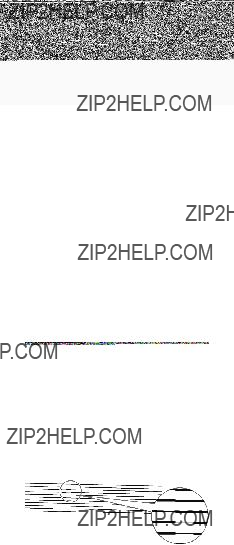
Printheads
 Checking for Nozzle Clogging
Checking for Nozzle Clogging
If printing is faint or streaked in different colors, make sure the Printhead nozzles are clear by printing a test pattern to check the nozzles.
 Note
Note
???You can specify a number of pages in the printer???s Noz. Check Freq. menu for automatic nozzle checking every time you ???nish printing that quantity. (???P.48)
1.Load unused paper.
???Setting the Roll on the Roll Holder (???P.177)
???Loading the Roll in the Printer (???P.180)
???Loading the Sheet in the Printer (???P.210)
2.Press the Menu button to display MAIN MENU.
3. Press ??? or ??? to select Test Print, and then press the ??? button.
4. Press ??? or ??? to select Nozzle Check, and then press the ??? button.
5. Press ??? or ??? to select Yes, and then press the OK button. The printer goes online and prints a test pattern.
6. Check the printing results.
The Printhead L prints the test pattern for nozzle checking on the top line in each color, and the Printhead R prints the test pattern on the bottom line.
If the horizontal lines are not faint or incomplete, the nozzles are clear.
If some sections of the horizontal lines are faint or incomplete, the nozzles for those colors are clogged.
If horizontal lines are faint or incomplete, follow the steps below and check again for nozzle clogging.
1.Clean the Printhead. (???P.694)
2.Print a test pattern to check the nozzles.
 Note
Note
???If you repeat these steps several times but the horizontal lines are still faint or incomplete, contact your Canon dealer.
Use Head Cleaning B if no ink comes out of the printhead, or if Head Cleaning A does not solve the problem. It takes about three minutes to complete.
The printhead is cleaned, and the printer goes online.
4. Print a test pattern to check the nozzles, and determine whether cleaning has cleared the nozzles. (???P.693)
Note
Head Cleaning B
???
Press ??? or ??? to select Head Cleaning, and then press the ??? button. Press ??? or ??? to select the type of cleaning, and then press the OK button.
??? Head Cleaning A
Use Head Cleaning A if printing is faint or contains foreign substances. This method of cleaning consumes the least amount of ink. It takes about two minutes to complete.
Press the Menu button to display MAIN MENU.
Cleaning the Printhead
2.
3.
1.
Printheads
 Cleaning the Printhead
Cleaning the Printhead
Cleaning the Printhead may help clear nozzles that are clogged.
 Note
Note
???You can specify a number of pages in the printer???s Noz. Check Freq. menu for automatic nozzle checking and cleaning every time you ???nish printing that quantity. (???P.48)
???You can start Head Cleaning A by holding down the Information button for three seconds or more.
???If printing does not improve after Head Cleaning A, try Head Cleaning B. If this does not solve the problem, repeat Head Cleaning B at least two times. If this still does not improve printing, the Printhead may have reached the end of its useful life. Contact your Canon dealer.
Caution
??? Do not remove the Maintenance Cartridge or Ink Tanks during cleaning.
Printheads
 Replacing the Printhead
Replacing the Printhead
When to replace the Printhead
This printer uses two Printheads.
Replace one or both Printheads in the following situations.
???If the printing quality does not improve even after two cycles of Head Cleaning B from the printer menu Replace both Printheads in the following situations.
???If the Display Screen indicates Open top cover and replace the left printhead.
Replace the left Printhead.
???If the Display Screen indicates Open top cover and replace the right printhead.
Replace the right Printhead.
???If your Canon dealer has advised you to replace the Printhead Replace the Printhead that your dealer advised you to replace.
Compatible Printhead
For information on compatible Printhead, see ???Printhead???. (???P.692)
Precautions when handling the Printhead
Take the following precautions when handling the Printhead.
 Caution
Caution
???For safety, keep the Printhead out of the reach of children.
???If ink is accidentally ingested, contact a physician immediately.
???Do not touch the Printhead immediately after printing. The Printhead becomes extremely hot, and there is a risk of burns.
 Important
Important
???Avoid dropping or shaking the Printhead. Otherwise, ink may leak and cause stains.
???There may be ink around the nozzles of the Printhead you remove. Handle the Printhead carefully during replacement. The ink may stain clothing.
???Do not open the Printhead pouch until immediately before installation. After removing the Printhead from the pouch, install it right away. If the Printhead is not installed after the pouch is opened, the nozzles may dry out, which may affect printing quality.
???If you need to store a Printhead temporarily before installation, do not keep the nozzles and metal contacts (???P.700) facing down. If the nozzles or metal contacts are damaged, it may affect the printing quality.
???Never attempt to take apart or modify a Printhead. This may damage the printer.
???Never touch the Printhead nozzles or metal contacts. This may cause printing problems.

Printheads
Replacing the Printhead
Follow the steps below to replace the Printhead. Failure to follow this procedure may cause ink to leak from the Printhead, resulting in stains.
Only remove or install the Printhead after selecting Replace P.head in the menu, and follow the instructions on the panel. Removing or installing the Printhead without following the correct procedure may damage the Printhead.
 Note
Note
???Prepare a new Ink Tank when ink levels are low.
???Your hands may become dirty during Printhead replacement. During replacement, wear the gloves provided with the new Printhead.
???Choose On in Auto Print to have the printer automatically adjust the Printhead alignment after Printhead replacement. (???P.48)
1.If the roll is not ejected because of the cutting method selected, cut it manually and remove it. (???P.486)
2.Clean inside the Top Cover. (???P.718)
3.Press the Menu button to display MAIN MENU.
4. Press ??? or ??? to select Maintenance, and then press the ??? button.
5. Press ??? or ??? to select Replace P.head, and then press the ??? button.
6. Press ??? or ??? to select Yes, and then press the OK button.
Select Printhead L when replacing Printhead L and Printhead R when replacing Printhead R. When replacing both, select L & R Printheads. Be sure to specify the correct Printhead.
Ink is now absorbed.
After about three minutes, a message is shown on the Display Screen instructing you to open the Top Cover.
7. Open the Top Cover.
Instructions are now shown on the Display Screen regarding Printhead replacement.
Printheads
8. If the Carriage Cover is dirty, use a damp cloth that you have wrung out completely to wipe it clean.
Important
??? Do not touch the Linear Scale (a), Carriage Shaft (b), or Fixed Blade (c).
??? Never touch the metal contacts of the Carriage. This may damage the printer.
Printheads
9. If the ventilation duct (a) is dirty, use a damp cloth that you have wrung out completely to wipe it clean.
Move the Carriage out of the way manually if Carriage is concealing the ventilation duct, and then clean the duct.
10. Lift the Carriage Cover to open it fully.
11. Pull the Printhead Fixer Lever forward all the way to open it completely.
Printheads
Lift the Printhead Fixer Cover to open it fully.
Remove the used Printhead.
 Caution
Caution
???When replacing the Printhead immediately after printing, wait a few minutes before replacing it. The metal parts of the Printhead become hot during printing, and there is a risk of burns from touching these parts.
Note
??? Dispose of the used Printhead according to local regulations.

Printheads
14. Holding the new Printhead by the grips (a), remove it from the case.
 Important
Important
???When handling the Printhead, always hold it by the grips (a). Never touch the nozzles (b) or metal contacts (c). This may damage the Printhead and affect printing quality.
15. While ???rmly holding the Printhead you have removed, use your other hand to remove the orange Safety Cap 1 (a). Squeeze the grips (c) of Safety Cap 2 (b) and pull it down to remove it.
 Important
Important
???Safety Cap 1 (a) may be coated with ink to protect the Printhead. Be careful not to touch areas other than the grips.
???Never touch the ink supply section (d). This may cause printing problems.
???The inside surface of Safety Cap 2 (b) is coated with ink to protect the nozzles. Handle it carefully to avoid touching the nozzles or spilling ink. Spilled ink may cause stains. The Printhead contains ink to protect the nozzles. If this ink is accidentally spilled, it may stain the printer or surrounding area. We recommend removing the Safety Cap 2 (b) on top of the Printhead package or safely out of the way. Wipe off any spilled ink with a dry cloth. This ink is non-toxic.
???Do not reattach the Safety Cap or protective material. Dispose of these materials according to local regulations.
Printheads
16. With the nozzles facing down and the metal contacts toward the back, tilt the Printhead slightly forward as you insert it in the Carriage. Carefully push the printhead ???rmly into the Carriage, ensuring that the nozzles and metal contacts do not touch the carriage.
17. Pull the Printhead Fixer Cover down toward the front to lock the Printhead in place.
18. Push the Printhead Fixer Lever toward the back of the printer until it clicks.
Push the Carriage Cover down toward the front.
Close the Top Cover.
Ink now ???lls the system.
After about ten minutes, the Printhead will be automatically aligned, and the printer will go online. If no paper has been loaded, a message is displayed requesting you to load paper.
 Important
Important
???Never remove an Ink Tank or Maintenance Cartridge while the system is ???lling with ink.
???If Auto Print is Off in the printer menu, the Printhead will not be aligned. In this case, adjust the alignment after Printhead replacement by accessing Advanced Adj. in Auto Head Adj. (???P.649)
Cutter Unit
Cutter Unit
 Cutter Unit
Cutter Unit
A reaplacement Cutter Unit.
??? Cutter Unit CT-06
Note
??? For instructions on replacing the Cutter Unit, see ???Replacing the Cutter Unit???. (???P.703)
 Replacing the Cutter Unit
Replacing the Cutter Unit
 Note
Note
??? For information on compatible Cutter Unit, see ???Cutter Unit???. (???P.703)
1.Turn the printer on. (???P.18)
2.Press the Menu button to display MAIN MENU.
3. Press ??? or ??? to select Maintenance, and then press the ??? button.
4. Press ??? or ??? to select Change Cutter, and then press the ??? button.
5. Press ??? or ??? to select Yes, and then press the OK button.
After the Carriage is centered, a message is shown on the Display Screen instructing you to open the Top Cover.
 Note
Note
???If you do not respond within two minutes, cutter replacement is canceled and the printer goes online automatically. In this case, repeat this procedure.
6.Open the Top Cover.
Cutter Unit
7. If the Cutter Unit or Carriage Cover is dirty, use a damp cloth that you have wrung out completely to wipe it clean.
Important
??? Do not touch the Linear Scale (a), Carriage Shaft (b), or Fixed Blade (c).
8. Holding the Cutter Unit by the Lock Lever (a) and grip (b), remove it from the Carriage.
 Important
Important
???Never touch any part of the Cutter Unit except the Lock Lever (a) and grip (b). This poses a risk of injury and may stain your hands. Also, it may damage the printer.
 Caution
Caution
???Dispose of the used Cutter Unit in accordance with local regulations.
???Do not disassemble the Cutter Unit. Touching the blade may cause injury.
Cutter Unit
9. Holding the new Cutter Unit by the Lock Lever (a) and grip (b), push it onto the Carriage until it clicks into place.
 Important
Important
???After installing the Cutter Unit, hold it only by the grip (b) and pull the Cutter Unit forward to make sure it does not come off. If the Cutter Unit comes off, it may damage the printer.
10. Close the Top Cover.
The Carriage moves into position and a con???rmation message is displayed regarding resetting the cut counter.
11. Press the OK button.
The printer now goes online.

Maintenance Cartridge
Maintenance Cartridge
 Maintenance Cartridge
Maintenance Cartridge
A replacement Maintenance Cartridge. Maintenance Cartridge is provided with a Shaft Cleaner.
??? Maintenance Cartridge MC-08
 Note
Note
???For instructions on replacing the Maintenance Cartridge, see ???Replacing the Maintenance Cartridge???. (???P.706)
 Replacing the Maintenance Cartridge
Replacing the Maintenance Cartridge
Compatible Maintenance Cartridge
For information on the compatible Maintenance Cartridge, see ???Maintenance Cartridge???. (???P.706)
Precautions when handling the Maintenance Cartridge
Take the following precautions when handling the Maintenance Cartridge.
 Caution
Caution
???For safety, keep the Maintenance Cartridge out of the reach of children.
???If ink is accidentally ingested, contact a physician immediately.
 Important
Important
???Do not remove the Maintenance Cartridge except to replace it.
???To prevent ink from leaking from a used Maintenance Cartridge, avoid dropping the cartridge or storing it at an angle. Otherwise, ink may leak and cause stains.
???Ink adheres to the top of the Maintenance Cartridge after it has been used. Handle the Maintenance Cartridge carefully during replacement. The ink may stain clothing.
???Do not install a used Maintenance Cartridge in another printer.

Maintenance Cartridge
Replacing the Maintenance Cartridge
1. Make sure no print jobs are in progress.
You can replace Maintenance Cartridge if the Display Screen indicates the printer is Of???ine or if messages advise you to replace the Maintenance Cartridge.
If a message prompts you to replace the Maintenance Cartridge, press the OK button. Steps 2-5 are unnecessary in this case. Go to step 6 and remove the Maintenance Cartridge.
Do not replace the Maintenance Cartridge during initialization immediately after turning on the printer, during Printhead cleaning, or while ink is being ???lled.
If you pause printing to replace the Maintenance Cartridge, it may cause the printed images to be blurry.
2. Press the Menu button to display MAIN MENU.
3. Press ??? or ??? to select Maintenance, and then press the ??? button.
4. Press ??? or ??? to select Repl. maint cart, and then press the ??? button.
5. Press ??? or ??? to select Yes, and then press the OK button.
A message on the Display Screen advises you to open the Maintenance Cartridge Cover.
6. At this point, open the Maintenance Cartridge Cover.
Maintenance Cartridge
7. Hold the used Maintenance Cartridge by the grip (a) with one hand and put your other hand under the Maintenance Cartridge to hold it ???rmly on the bottom, keeping it level as you pull it out.
 Important
Important
???Used Maintenance Cartridge is heavy. Always grasp the cartridge ???rmly and keep the cartridge level during removal and storage. If you drop a used Maintenance Cartridge or store it at an angle, ink may leak and cause stains.
???The remaining Maintenance Cartridge capacity is recorded on each printer. Do not install a used Maintenance Cartridge in another printer.
8.Open the box, remove the plastic bag, packaging material, and Shaft Cleaner, and take out the Maintenance Cartridge.
Important
??? Never touch the metal contacts (a). This may damage the Maintenance Cartridge.
Maintenance Cartridge
9. Attach the packaging material to the used Maintenance Cartridge and put it in the box. Keep it level as you put it in the plastic bag. Expel excess air from the plastic bag and seal the zipper.
10. Con???rm the Maintenance Cartridge is right-side up, put it in the box, and store it so that it stays level.
 Important
Important
???Always put the used Maintenance Cartridge back in the box and store the box on a ???at surface. Otherwise, ink may leak and cause stains.
???In accordance with its active and ongoing policy to protect the environment, Canon collects used Maintenance Cartridge. Follow the instructions provided with the new Maintenance Cartridge that describe how to process the used Maintenance Cartridge.
11.Wipe away any soiling on the Maintenance Cartridge Cover.
Important
??? Support the Maintenance Cartridge Cover from underneath as you wipe it.
Maintenance Cartridge
12. Insert the new Maintenance Cartridge all the way in, keeping it level.
13. Close the Maintenance Cartridge Cover.
14. Press the OK button.
The printer now initializes the Maintenance Cartridge.
Next, replace the Shaft Cleaner.
Maintenance Cartridge
Replacing the Shaft Cleaner
Replace the Shaft Cleaner when you replace the Maintenance Cartridge. New Shaft Cleaner is included with replacement Maintenance Cartridge.
After you execute Repl. maint cart and replace the Maintenance Cartridge, a message will appear on the Display Screen requesting you to replace the Shaft Cleaner. Select Yes and press the OK button. Next, go to step 4.
1. Press the Menu button to display MAIN MENU.
2. Press ??? or ??? to select Maintenance, and then press the ??? button.
3. Press ??? or ??? to select Repl. S. Cleaner, and then press the ??? button.
4. Press ??? or ??? to select Yes, and then press the OK button.
After the Carriage is moved, the Display Screen indicates Open Upper Cover.
 Note
Note
???If you do not respond within two minutes, shaft cleaner replacement is canceled and the printer goes online automatically. In this case, repeat the procedure.
5.Open the Top Cover.
Maintenance Cartridge
6. Grasp the Shaft Cleaner on the right side of the Carriage by the grips (a) and pull it toward the right to remove it.
Important
??? Do not touch the Linear Scale (a), Carriage Shaft (b), or Fixed Blade (c).
Maintenance Cartridge
7. Holding the new Shaft Cleaner by the grips (a), attach it to the Carriage.
 Note
Note
???Be sure to put used Shaft Cleaner in the smaller box and put that box in the box of the used Maintenance Cartridge for recycling.
8.Close the Top Cover.
The Carriage is moved, and the printer goes online.
Maintenance Cartridge
 Checking the Remaining Maintenance Cartridge Capacity
Checking the Remaining Maintenance Cartridge Capacity
The Maintenance Cartridge absorbs excess ink from borderless printing, printhead cleaning, and other processes. You can con???rm the remaining capacity of the Maintenance Cartridge by checking the Maintenance Cartridge capacity shown on the Display Screen.
Press the Information button to display the remaining capacity of the Maintenance Cartridge on the Display Screen.
If the Display Screen indicates to replace the Maintenance Cartridge, replace the Maintenance Cartridge. If a message is displayed indicating to check the remaining capacity of the Maintenance Cartridge, or before tasks that deplete much of the capacity such as head cleaning or preparations to move the printer, check the remaining Maintenance Cartridge capacity and replace the Maintenance Cartridge as needed. (???P.706)

Maintenance Cartridge
 When to Replace the Maintenance Cartridge
When to Replace the Maintenance Cartridge
Replace or prepare to replace the Maintenance Cartridge in the following situations.
If a message for checking the Maintenance Cartridge is shown on the Display Screen
When the Maintenance Cartridge capacity is low, the Message lamp is lit and Prepare for maint cart replacement. is displayed. You can continue to print, but check the remaining Maintenance Cartridge capacity and prepare to replace the Maintenance Cartridge with a new one. (???P.714)
When much of the Maintenance Cartridge capacity is depleted
Printhead cleaning, Printhead replacement, and preparations to transfer the printer deplete much of the Maintenance Cartridge capacity. (In particular, preparing to move the printer depletes a lot of the capacity.) To check the remaining Maintenance Cartridge capacity, press the Information button. Replace the Maintenance Cartridge and perform related maintenance as needed.
If a message for the Maintenance Cartridge replacement is shown on the Display Screen
When the Maintenance Cartridge is full, the Message lamp ???ashes and a message to replace the Maintenance Cartridge is shown on the Display Screen. Printing is disabled, and you cannot replace the Printhead or transfer the printer. Replace the Maintenance Cartridge with a new one.
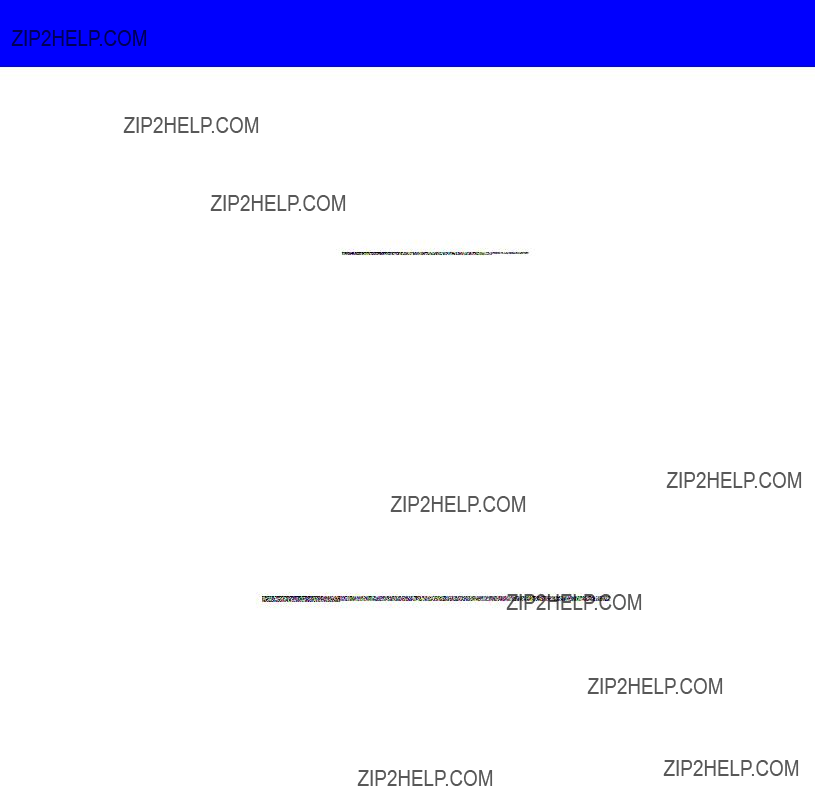
Cleaning the Printer
Cleaning the Printer
 Cleaning the Printer Exterior
Cleaning the Printer Exterior
Clean the printer regularly to maintain better printing quality and help prevent problems.
About once a month, clean the printer exterior.
1. Turn the printer off. (???P.18)
2. Unplug the power cord from the outlet.
 Caution
Caution
???Always turn off the printer and unplug the power cord before cleaning or maintenance. Accidentally leaving the printer on poses a risk of injury if you touch moving parts inside the printer.
3.Using a damp cloth that you have wrung out completely, wipe away any dirt or paper dust from the Paper Feed Slot (a), power cord plug, and so on. Dry these parts with a dry cloth.
 Caution
Caution
???Never use ???ammable solvents such as alcohol, benzene, or thinner. If these substances come into contact with electrical components inside the printer, there is a risk of ???re or electrical shock.
 Important
Important
???If the Ejection Guide is dirty, it may soil the edge of the paper when the paper is cut. We recommend cleaning the Ejection Guide even if it does not appear dirty, because it may actually be covered with paper dust.
Cleaning the Printer
4. Plug the power cord into the outlet.
Cleaning the Printer
 Cleaning Inside the Top Cover
Cleaning Inside the Top Cover
Clean inside the Top Cover to maintain better printing quality and help prevent problems. Also clean inside the Top Cover in the following situations to ensure optimal operation.
???If the printed surface or the underside of paper is dirty after printing
???After you have used up a roll
???After borderless printing
???After printing on small paper
???After printing on paper that generates a lot of cutting debris
???If you have replaced the roll
???After printing on paper that generates a lot of paper dust
 Important
Important
???If the Platen inside the Top Cover becomes dirty, it may soil the underside of paper. We recommend cleaning the Platen after borderless printing or printing on small paper.
???If the Ejection Guide is dirty, it may soil the edge of the paper when the paper is cut. We recommend cleaning the Ejection Guide even if it does not appear dirty, because it may actually be covered with paper dust.
1.Open the Top Cover.
Cleaning the Printer
2. If paper dust has accumulated in the Vacuum holes (a) on the Platen, the Borderless Printing Ink Grooves (b), or cutter guide (c), use the Cleaning Brush (d) included with the printer to wipe it away.
Important
??? Do not touch the Linear Scale (a), Carriage Shaft (b), or Fixed Blade (c).
Note
??? If the Cleaning Brush is dirty, rinse it in water.
Cleaning the Printer
3. Using a damp cloth that you have wrung out completely, wipe inside the Top Cover to clean it. Wipe away any ink residue on the Top Cover Roller (a), all over the Platen (b), the Paper Retainer (c), the Borderless Printing Ink Grooves (d), the Ejection Guide (e), the cutter guide (f), the left-side ink suction ports (g), the section around the right-side Borderless Printing Ink Grooves (h), and so on.
 Important
Important
???Do not use a dry cloth to wipe inside the Top Cover. This may create a static charge, which may attract dust and affect the printing quality.
???Never use ???ammable solvents such as alcohol, benzene, or thinner. If these substances come into contact with electrical components inside the printer, there is a risk of ???re or electrical shock.
???Do not touch the clear sheet on the side of the Top Cover Roller. This may damage the roller.
4.Close the Top Cover.
2.
3.
1.
Use Head Cleaning B if no ink comes out of the printhead, or if Head Cleaning A does not solve the problem. It takes about three minutes to complete.
The printhead is cleaned, and the printer goes online.
4. Print a test pattern to check the nozzles, and determine whether cleaning has cleared the nozzles. (???P.693)
Note
Head Cleaning B
???
Press ??? or ??? to select Head Cleaning, and then press the ??? button. Press ??? or ??? to select the type of cleaning, and then press the OK button.
??? Head Cleaning A
Use Head Cleaning A if printing is faint or contains foreign substances. This method of cleaning consumes the least amount of ink. It takes about two minutes to complete.
Press the Menu button to display MAIN MENU.
Cleaning the Printhead
Cleaning the Printer
 Cleaning the Printhead
Cleaning the Printhead
Cleaning the Printhead may help clear nozzles that are clogged.
 Note
Note
???You can specify a number of pages in the printer???s Noz. Check Freq. menu for automatic nozzle checking and cleaning every time you ???nish printing that quantity. (???P.48)
???You can start Head Cleaning A by holding down the Information button for three seconds or more.
???If printing does not improve after Head Cleaning A, try Head Cleaning B. If this does not solve the problem, repeat Head Cleaning B at least two times. If this still does not improve printing, the Printhead may have reached the end of its useful life. Contact your Canon dealer.
Caution
??? Do not remove the Maintenance Cartridge or Ink Tanks during cleaning.

Other Maintenance
Other Maintenance
 Preparing to Transfer the Printer
Preparing to Transfer the Printer
 Important
Important
???Be sure to contact your Canon dealer before transferring the printer to a new location. Ink may leak and damage the printer if you do not prepare the printer correctly and it is tipped in transit.
 Note
Note
???It is not possible to prepare the printer for transfer if the Display Screen prompts you to replace the Maintenance Cartridge or check the remaining capacity. Replace the Maintenance Cartridge before transfer preparations. (???P.706)
???Depending on the state of the printer, part replacement may be necessary when preparing to transfer the printer (that is, when you execute the printer menu item to prepare for transfer).
???Ink must be drained before Level 2 or Level 3 printer transfer, as described in the following table. Prepare a Maintenance Cartridge in advance.
???Always follow the instructions of the service representative when transferring the printer under Level 3 conditions.
*1: Unused Maintenance Cartridge

Other Maintenance
To protect the internal parts in transit, always follow the steps below before transferring the printer to a new location. Refer to the Quick Start Guide for details on packing the printer and installing it after transfer.
 Caution
Caution
???Avoid tipping the printer excessively in transit. Ink inside the printer may leak and cause stains. If it is necessary to stand the printer up or tilt it, contact your Canon dealer.
1.Remove the paper.
???Roll (???P.184) (???P.179)
???Sheet (???P.214)
2.Press the Menu button to display MAIN MENU.
3. Press ??? or ??? to select Maintenance, and then press the ??? button.
4. Press ??? or ??? to select Move Printer, and then press the ??? button.
5. Press ??? or ??? to select the level of transfer, and then press the OK button. The printer now starts preparing for transfer.
Under Level 1 conditions, follow the procedure starting with step 12. There is no need to remove Ink Tank.
When you are ???nished preparing to transfer the printer under Level 2 or Level 3 conditions, the Display Screen prompts you to open the Ink Tank Cover. You must remove the Ink Tank at this point. Follow the procedure starting with step 6.
6. Open the left and right Ink Tank Covers.
Other Maintenance
7. Lift the stopper (a) of the Ink Tank Lock Lever (a). Lift the Ink Tank Lock Lever until it stops, and then push it down to the front.
8. Remove the Ink Tank.
 Note
Note
???Store the Ink Tank you removed in the box with the ink holes (a) facing up. Otherwise, ink may leak and cause stains.
Other Maintenance
9. Repeat steps 5 and 6 to remove every Ink Tank.
10. Push down the release lever (a) as shown as you gently return every Ink Tank Lock Lever to the original position.
Close the Ink Tank Cover.
At this point, ink is drawn out from inside the tubes.
Important
??? Do not remove the Maintenance Cartridge during this process.
When the process is ???nished, Completed! Turn Power Off!! is displayed. Press the OK button and turn off the printer.
 Important
Important
???Turn off the printer before you unplug it. It may damage the printer if you unplug it before it is off and transfer it in that state. If you accidentally unplug the printer, plug it in again, reinstall the Ink Tanks, wait until the printer comes online, and follow this procedure again.
Other Maintenance
13. Disconnect the power cord, interface cable, and Media Take-up Unit Power Inlet.
14. Open the Top Cover and lift the Ejection Guide.
15. Remove the six Ejection Supports and lower the Ejection Guide.
16. Grasp the Belt, insert it between the Belt Stopper, and af???x the Belt Stopper with a hex screw at the position indicated.

Other Maintenance
 Important
Important
???Attach the Belt Stopper, which was removed and stored after initial installation. Neglecting to attach the Belt Stopper may damage the printer.
???Do not touch the Linear Scale (a), Carriage Shaft (b), or Fixed Blade (c).
17. Close the Top Cover.
18. Tape down printer covers to secure them, in the reverse order of tape removal during installation.
19. If the Output Stacker is installed, reverse the installation procedure to remove the Output Stacker.
20. Remove the Stand by reversing the installation procedure, when it was attached to the printer.
21. To disassemble and repackage the Stand, follow the procedure for printer installation with six people (that is, installation by lifting the printer) in reverse.
 Caution
Caution
???Do not reverse the installation procedure that involves tipping the printer over. This may damage the printer. For more information, see the Quick Start Guide.
22.Repack the Roll Holder, Holder Stopper, and printer in the shipping materials, and then package them in the shipping box.
Other Maintenance
 Updating the Firmware
Updating the Firmware
Update the printer ???rmware to take advantage of new and improved printer functions.
Con???rming the ???rmware version
1. Press the Menu button to display MAIN MENU.
2. Press ??? or ??? to select Information, and then press ???.
3. Press ??? or ??? to select System Info, and then press the OK button. The ???rmware version is displayed.
Updating the Firmware
To obtain the latest ???rmware, visit the Canon website. If the ???rmware available online is newer than the installed ???rmware, update the printer ???rmware. For details on downloading and updating the ???rmware, visit the Canon website.
Frequently Asked Questions
Troubleshooting
Frequently Asked Questions
 Frequently Asked Questions
Frequently Asked Questions
This section presents frequently asked questions and answers. To view more detailed explanations, click the hyperlinks in the answer column.
Frequently Asked Questions
 Specifying Paper in the Printer Driver
Specifying Paper in the Printer Driver
If you replace the paper, complete the printer driver settings for the paper type and size.
For instructions on con???guring paper settings in the printer driver, refer to the following topics, as appropriate for your computer and operating system.
???Specifying Paper in the Printer Driver (Windows) (???P.154)
???Specifying Paper in the Printer Driver (Mac OS X) (???P.156)
???Specifying Paper in the Printer Driver (Mac OS 9) (???P.158)
Printing does not start
Printing does not start
 The Data lamp on the Control Panel does not light up
The Data lamp on the Control Panel does not light up
 The Printer Does Not Respond Even if Print Jobs are Sent
The Printer Does Not Respond Even if Print Jobs are Sent
 The Display Screen indicates the system is ???lling with ink
The Display Screen indicates the system is ???lling with ink
Cannot print over a network
Cannot print over a network
 Cannot connect the printer to the network
Cannot connect the printer to the network

Cannot print over a network
 Con???guring the Communication Mode Manually
Con???guring the Communication Mode Manually
This topic gives instructions for con???guring the communication mode manually.
1. Press the Menu button to display MAIN MENU.
2. Press ??? or ??? to select Interface Setup, and then press ???.
3. Press ??? or ??? to select Ethernet Driver, and then press ???.
4. Press ??? or ??? to select Auto Detect, and then press ???.
5. Press ??? or ??? to select Off, and then press OK. Return to the Ethernet Driver menu.
6. Press ??? or ??? to select Comm.Mode, and then press ???.
7. Press ??? or ??? to select the communication mode, and then press the OK button. Return to the Ethernet Driver menu.
8. Press ??? or ??? to select Ethernet Type, and then press ???.
9. Press ??? or ??? to select the Ethernet type, and then press OK. Return to the Ethernet Driver menu.
10. Press ??? or ??? to select Spanning Tree, and then press ???.
11. Press ??? or ??? to enable or disable spanning tree support, and then press OK. Return to the Ethernet Driver menu.
12. Press the Online button.
After the con???rmation message is displayed, press OK.
The printer will now restart.
Cannot print over a network
 Cannot print over AppleTalk or Bonjour networks
Cannot print over AppleTalk or Bonjour networks
The printer stops during a print job
The printer stops during a print job
 An error message is shown on the Display Screen
An error message is shown on the Display Screen
 The printer ejects blank, unprinted paper
The printer ejects blank, unprinted paper
Problems with the printing quality
 Paper rubs against the Printhead
Paper rubs against the Printhead
*1: Always make sure the loaded paper matches the media type setting on the printer.
Problems with the printing quality
 The surface of the paper is dirty
The surface of the paper is dirty
 The back side of the paper is dirty
The back side of the paper is dirty
 Banding in different colors occurs
Banding in different colors occurs
Problems with the printing quality
 The contrast becomes uneven during printing
The contrast becomes uneven during printing
 Colors in printed images are uneven
Colors in printed images are uneven
Problems with the printing quality
 Problems with the printing quality caused by the type of paper
Problems with the printing quality caused by the type of paper
For paper-speci???c troubleshooting tips to improve the printing quality, refer to the Paper Reference Guide. (???P.167)
 Lines are misaligned
Lines are misaligned
 The length of printed images is inaccurate
The length of printed images is inaccurate
 Documents are printed in monochrome
Documents are printed in monochrome
Problems with the printing quality
 Image Edges are Blurred or White Banding Occurs
Image Edges are Blurred or White Banding Occurs
 Documents are printed crooked
Documents are printed crooked
 Line thickness is not uniform (Windows)
Line thickness is not uniform (Windows)

Installation problems
Installation problems
 The IEEE 1394 Driver Cannot Be Installed Correctly
The IEEE 1394 Driver Cannot Be Installed Correctly
In Windows, the device interface driver may not be installed correctly in some cases if you connected the IEEE 1394 cable before installing the printer driver.
If so, reinstall the IEEE 1394 device interface driver and the printer driver as follows.
 Important
Important
???This procedure is based on an example for Windows XP. The name of the wizard may be different in other operating systems.
1.Right-click My Computer and choose Properties to display the System Properties window.
2.On the Hardware sheet, click Device Manager to display the Device Manager window.
3.Right-click Other Devices icon and choose Properties.
4.On the Driver sheet, click Update Driver to start the Hardware Update Wizard (or the Upgrade Device Driver Wizard.)
5.Follow the instructions on the screen.
6.When the window is displayed to choose the source for driver installation, select the CD-ROM drive. Insert the User Software CD-ROM provided with the printer and follow the instructions on the screen.
The device/interface driver is installed.
The device is detected, and the New Hardware Wizard (or Add New Hardware Wizard ) is started.
7.Follow the instructions on the screen.
8.When the window is displayed to choose the source for driver installation, select the printer driver folder.
Choose the CD-ROM drive > Driver > WinXP_2K > Driver, and click OK. (For Windows 2000/Windows XP/Windows Server 2003)
9.Follow the instructions on the screen. The printer driver is installed.
Installation problems
 Removing Installed Printer Drivers
Removing Installed Printer Drivers
Follow the steps below to remove installed printer drivers and utilities.
Removing printer drivers (Windows)
Remove the printer driver as follows.
 Note
Note
???In Windows 2000/Windows XP/Windows Server 2003/Windows Vista, you must log on with administrative rights such as ???Administrator??? account.
1.From the Windows start menu, select Programs > Canon Printer Uninstaller > imagePROGRAF Printer Driver Uninstaller to display the Delete Printer window.
2.Select the printer in the list and click Delete.
3.Click Yes in the Warning message dialog box.
4.Make sure that the printer has been removed from the list, and click Exit.
Removing Printer Drivers and imagePROGRAF Printmonitor (Macintosh)
Remove the printer driver or imagePROGRAF Printmonitor as follows.
1. Insert the User Software CD-ROM provided with the printer in the CD-ROM drive.
2. Start the printer driver installer included in the User Software CD-ROM. For Mac OS X, open OS X and double-click iPF Driver Installer X. For Mac OS 9, open OS 9 and double-click iPF Driver Installer 9.
3. In the upper-left menu, choose Uninstall, and click Uninstall.
4. Follow the instructions on the screen to remove the printer driver or imagePROGRAF Printmonitor.
Removing imagePROGRAF Status Monitor (Windows)
Remove imagePROGRAF Status Monitor as follows.
From the Windows start menu, select Programs > imagePROGRAF Status Monitor >
Uninstaller (imagePROGRAF Status Monitor) to start the wizard.
In the wizard window, click Delete, and then click Next.
Follow the instructions on the screen to remove imagePROGRAF Status Monitor.
Removing imagePROGRAF Device Setup Utility (Windows)
Remove imagePROGRAF Device Setup Utility as follows.
1. From the Windows start menu, select Programs > imagePROGRAF Device Setup Utility >
Uninstaller (imagePROGRAF Device Setup Utility) to start the wizard.
2. In the wizard window, click Delete, and then click Next.
3. Follow the instructions on the screen to remove imagePROGRAF Device Setup Utility.
Clearing jammed paper
Clearing jammed paper
 Clearing Jammed Roll Paper
Clearing Jammed Roll Paper
If roll paper jams, follow the steps below to remove jams.
 Caution
Caution
??? Remove any jammed paper promptly.
1.Turn the printer off. (???P.18)
2.Open the Top Cover.
3. If the Carriage is out, move the Carriage to separate it from the paper.
Clearing jammed paper
 Important
Important
???If you push the Carriage to the left edge, the blade of the Cutter Unit will be lowered in preparation to cut the paper. Be careful not to pinch your ???ngers between the Carriage and Platen if you have pushed the Carriage to the left edge or if a paper jam occurs during cutting.
???Do not touch the Linear Scale (a), Carriage Shaft (b), or Fixed Blade (c).
4. Lift the Release Lever.
Clearing jammed paper
5. Holding the paper on both sides, pull the jammed portion out toward the front. Use a scissors or cutting tool to cut away the printed or wrinkled portion.
 Caution
Caution
???When cutting paper, be careful to avoid scratching the printer.
6.If the Carriage is on the left, move the Carriage to the right until it stops.
 Important
Important
???Always move the Carriage to the right side. If the Carriage is on the left, a Carriage error may occur when you turn on the printer.
Clearing jammed paper
7. Hold the edge of the roll paper in the middle as you gently pull it evenly to the position of the Ejection Guide (a). Align the right side of the roll paper with the Paper Alignment Line (b), keeping this side parallel to the line, and then lower the Release Lever.
 Important
Important
???Do not force the roll paper into alignment with the Paper Alignment Line (b). This may prevent the paper from being advanced straight.
???If you pull out too much of the roll, an excessive amount will be cut away.
8.Close the Top Cover.
9. Turn the printer on. (???P.18)
The roll is now advanced. After it is ???nished being advanced, you can resume printing.
 Note
Note
???You can ensure that the edge is cut neatly by following the steps below.
1.Press the Online button to bring the printer of???ine.
2.Hold down the ??? button to advance the paper.
3.Set Paper Cutting to Yes in the printer menu to cut the edge. (???P.191)
Clearing jammed paper
 Clearing a Jammed Sheet
Clearing a Jammed Sheet
If a sheet jams, follow the steps below to remove it.
 Caution
Caution
??? Remove any jammed paper promptly.
1.Turn the printer off. (???P.18)
2.Open the Top Cover.
3. If the Carriage is out, move the Carriage to separate it from the paper.
Important
??? Do not touch the Linear Scale (a), Carriage Shaft (b), or Fixed Blade (c).
Clearing jammed paper
4. Lift the Release Lever.
5. If the paper is visible, grasp the paper and pull it forward.
6. If the paper is not visible, lift the Ejection Guide, remove the Roll Holder, and remove the jammed paper from below.
After removing the paper, make sure there are no other scraps of paper in the printer, and lower the Ejection Guide.
Clearing jammed paper
7. If the Carriage is on the left, move the Carriage to the right until it stops.
 Important
Important
???Always move the Carriage to the right side. If the Carriage is on the left, a Carriage error may occur when you turn on the printer.
8.Lower the Release Lever and close the Top Cover.
9. Turn the printer on. (???P.18)

If the Printer makes a strange sound
If the Printer makes a strange sound
 If the Printer Makes a Strange Sound
If the Printer Makes a Strange Sound
The following sounds do not indicate a problem with the printer.
???There is a sound of vacuum from the Platen
To prevent paper from rising, paper is held against the Platen by suction from Vacuum holes under it.
???There is a sound when a different size of paper is used and when the Carriage goes from side to side This may happen especially when using B0 or 44-inch paper.
When paper of a different size is used, a valve is automatically activated to switch the area for paper suction, which may make a sound. This mechanism prevents vacuum from Vacuum holes where there is no paper.
In addition, ink is ejected in sync with the movement of the Carriage back and forth to ensure optimal ink ???ow. At this time, the valve automatically switches the area for paper suction, which may make a sound.
???Roll paper makes a ???uttering sound during printing
There may be a ???uttering sound when large paper is advanced.
???If you suddenly hear the tone for cleaning operations
At regular intervals, for printer maintenance, cleaning operations will begin automatically, even if the printer is in Sleep mode.
???If you suddenly hear the tone for ink agitation
At regular intervals, to ensure optimal printing quality, the ink is agitated automatically, even if the printer is in Sleep mode.(*1) The ink is also agitated automatically under the following conditions.
Note that other operations are not possible while Agitating is displayed on the control panel.
???After you turn the printer on (*2/*3)
???After data transmission (*4)
???After you replace an ink tank (*3/*5)
*1: Ink agitation takes about a minute and a half.
*2: The time for agitation varies depending on how long the printer has been turned off. (Between about a minute and a half to twenty minutes.)
*3: During agitation, if Online mode is accessible, you can print or do other operations.
*4: After about a minute and a half, the printer goes Online, and printing operations begin. However, printing may start later after data reception, depending on the size of print data. *5: Ink agitation takes about three and a half minutes.
In other cases, contact your Canon dealer.
Other problems
Other problems
 The printer consumes a lot of ink
The printer consumes a lot of ink
 A message to check the Maintenance Cartridge is not cleared after you replace the Maintenance Cartridge
A message to check the Maintenance Cartridge is not cleared after you replace the Maintenance Cartridge
 Paper is not cut neatly
Paper is not cut neatly
Other problems
 Paper cannot be cut
Paper cannot be cut
 The printer does not go on
The printer does not go on
 Roll paper cannot be inserted into the Paper Feed Slot
Roll paper cannot be inserted into the Paper Feed Slot
 Cannot Load Sheets
Cannot Load Sheets
Other problems
 The Media Take-up Unit Continues Rotating
The Media Take-up Unit Continues Rotating

Other problems
 Ink level detection
Ink level detection
Ink level detection will be deactivated if you load ink tanks once emptied.
Ink level detection
Ink Tanks (???P.676) speci???ed for this printer feature an ink level detection function to prevent the ink from running out during printing, which prevents printer damage.
This function will not work correctly if you use re???ll ink tanks. As a result, printing stops. Thus, before using re???ll ink tanks, you must cancel the ink level detection.
Printing with the ink level detection canceled may lead to printer damage and printing problems. Canon Inc. is not liable for any damage that may occur as a result of re???lling ink.
 Caution
Caution
???After ink level detection has been disabled, this function cannot be reactivated for the currently loaded Ink Tank. To use ink level detection again, replace the Ink Tank with a new ink tank speci???ed for use with the printer.
???Repeatedly removing and inserting an Ink Tank may damage the connection between the Ink Tank and the printer, which may cause ink leakage from the Ink Tank and damage the printer.
Disabling Ink Level Detection
1. On the Display Screen, a message indicates that the ink level cannot be detected.
2. Press ??? or ??? to select Information, and then press the OK button.
A con???rmation message is shown on the Display Screen about disabling ink level detection.
3. Press ??? and check the message on the Display Screen.
Responding to Messages
Error Message
Responding to Messages
 Responding to Messages
Responding to Messages
Warning messages
Warning messages are shown on lines 2-4 of the Display Screen.
Although warning messages do not prevent printer operation, you should check the message and take the appropriate action. (???P.764)
Error messages (if action can be taken)
Error messages are indicated on the Display Screen if you must respond before the printer can resume operation.
Check the message and take the appropriate action. (???P.764)
Responding to Messages
Error messages (if no action can be taken)
In the following situations, turn off the printer and wait at least three seconds before restoring power.
If the message is still displayed, write down the error code and message, turn off the printer, and contact your Canon dealer for assistance.
???The error message is displayed with the following instructions: Turn off printer, wait, then turn on again.
??????ERROR??? is displayed, followed by the error code and Call for service.
 Note
Note
???Messages are also displayed in imagePROGRAF Status Monitor (Windows) or imagePROGRAF Printmonitor (Macintosh).
Responding to Messages
 Error Messages
Error Messages
Warning messages
Warning messages are shown on lines 2-4 of the Display Screen.
Although warning messages do not prevent printer operation, you should check the message and take the appropriate action.
???GARO Wxxxx (x represents a number) (???P.785)
???Close Ink Tank Cover (???P.777)
???Ink tank is empty. Replace the ink tank. (???P.776)
???No ink tank loaded. (???P.775)
???Ink Level: Check (???P.775)
???End of paper feed. (???P.772)
???Prepare for parts replacement. (???P.786)
???Parts replacement time has passed. (???P.786)
???Problem with Printhead x (x is L, R, or LR) (???P.781)
???Mail box full. Now printing without saving data. (???P.783)
???Mail box nearly full. (???P.783)
???Mail box full. Delete unwanted data (???P.783)
???Turn on the media take-up unit. (???P.774)
???Prepare for maint cart replacement. (???P.782)
???Paper Mismatch (???P.766)
???Papr Size Mismatch (???P.767)
???Papr Type Mismatch (???P.766)
Error messages (if action can be taken)
Check the message and take the appropriate action.
???Ink tank is empty. Press OK and replace ink tank. (???P.776)
???Ink insuf???cient. (???P.776)
???Ink tank error. (???P.777)
???No ink tank loaded. (???P.775)
???Top cover is open. (???P.785)
???Sheet printing is selected. (???P.769)
???Regular printing is selected, but a roll is loaded. (???P.769)
???No sheets. (???P.768)
???Carriage Cover is open. (???P.785)
???Cannot calibrate. (???P.779)
???Insuf???cient paper for job (???P.768)
???Use another paper. (???P.778)
???This paper cannot be used. (???P.767)
???Cannot print as speci???ed. (???P.778)
???Hard disk error. (???P.784)
???Cannot adjust band. (???P.778)
???Unknown ???le. (???P.786)
???File read error. (???P.784)
???Borderless printng not possible. (???P.770)
???x printhead error (x is Left or Right) (???P.781)
???x printhead needs cleaning. (x is Left or Right) (???P.780)
???PHeads: wrong pos. (???P.780)
764 Error Message
Responding to Messages
???Cannot adjust printhead. (???P.779)
???Mail box full. Delete unwanted data on your computer to resume printing. (???P.783)
???Mail box full. Cannot save. (???P.783)
???Rewinding error. (???P.774)
???Media take-up unit ready. (???P.774)
???Multi-sensor error (???P.786)
???Maintenance cartridge full. (???P.782)
???Maintenance cartridge problem. (???P.782)
???No maintenance cartridge. (???P.782)
???No Maintenance Cartridge capacity. (???P.782)
???Paper Mismatch (???P.766)
???Paper jam. (???P.772)
???Paper loaded askew. (???P.771)
???Papr Size Mismatch (???P.767)
???Paper size not detected. (???P.772)
???Papr Type Mismatch (???P.766)
???Leading edge detection error. (???P.772)
???Cannot feed paper. (???P.772)
???Cannot cut paper. (???P.773)
???Rel lever is in wrong position. (???P.773)
???The roll is empty. (???P.774)
???Roll printing is selected. (???P.769)
???Roll printing is selected, but sheets are loaded. (???P.769)
Error messages (if no action can be taken)
???Hardware error. xxxxxxxx-xxxx (x represents a letter or number) (???P.786)
???ERROR Exxx-xxxx (x represents a letter or number) (???P.785)
Other Messages
These messages do not prevent printer operation. Check the information on the Display Screen and take action as necessary. Messages requiring special attention are as follows:
???Remaining level of the ink cannot be correctly detected. (???P.777)
???Excessive temperature or humidity. (???P.779)
???Cannot execute this command. Use other paper. (???P.778)
Messages regarding paper
Messages regarding paper
 Paper Mismatch
Paper Mismatch
 Papr Type Mismatch
Papr Type Mismatch
*Printing will continue if you have set Detect Mismatch to Warning or None.
Messages regarding paper
 Insuf???cient paper for job
Insuf???cient paper for job
* When using the Media Take-up Unit, either hold down the Stop button for a second or more to cancel printing or press the Online button to continue printing. However, if you continue printing, the roll paper may run out during the print job and you may not be able to print all of the document.
 No sheets.
No sheets.
To print on a roll instead, hold the Stop button for more than a second to cancel printing, load a roll, and then print. (???P.140)
 Sheet printing is selected.
Sheet printing is selected.
You have attempted to print a test print sheet or other Load a sheet and try printing again. printer status information on a sheet, but no sheet
is loaded.
Messages regarding paper
 Borderless printng not possible.
Borderless printng not possible.
Check roll position.
Lift the release lever and reload paper.
Check supported paper.
???To disable this message (if it is displayed repeatedly despite reloading paper, for example), choose Off or Loose in the Skew Check Lv. setting of the printer menu. However, this may cause jams as paper may be askew when it is printed. Also, the Platen may become soiled, which may soil the back of the next document when it is printed.
Messages regarding paper
 Paper size not detected.
Paper size not detected.
 Leading edge detection error.
Leading edge detection error.
 End of paper feed.
End of paper feed.
 Cannot feed paper.
Cannot feed paper.
 Paper jam.
Paper jam.
 Rel lever is in wrong position.
Rel lever is in wrong position.
Messages regarding paper
 The roll is empty.
The roll is empty.
 Rewinding error.
Rewinding error.
* Printing will stop momentarily if an error involving the Media Take-up Unit occurs. If you prefer printing not to stop, set Skip Take-Up Err to On.
 Turn on the media take-up unit.
Turn on the media take-up unit.
 Media take-up unit ready.
Media take-up unit ready.
Messages regarding ink
 Ink insuf???cient.
Ink insuf???cient.
 Ink tank is empty. Press OK and replace the ink tank.
Ink tank is empty. Press OK and replace the ink tank.
 Ink tank is empty. Replace the ink tank.
Ink tank is empty. Replace the ink tank.
 Ink tank error.
Ink tank error.
 Remaining level of the ink cannot be correctly detected.
Remaining level of the ink cannot be correctly detected.
Messages regarding printing or adjusment
Messages regarding printing or adjusment
 Use another paper.
Use another paper.
 Cannot execute this command. Use other paper.
Cannot execute this command. Use other paper.
Theloadedpapercannotbeusedforcolorcalibration. Load paper compatible with color calibration.*1 See "Paper Reference Guide ." (???P.167)
*1: Always make sure the loaded paper matches the media type setting on the printer. Adjustment cannot be completed correctly unless the setting value matches the loaded paper.
 Cannot print as speci???ed.
Cannot print as speci???ed.
Lift the release lever and replace paper with A4/LTR (vertical) or larger
Lift the release lever and replace roll with 10 in. wide or larger roll
 Cannot adjust band.
Cannot adjust band.
Messages regarding printheads
Messages regarding printheads
 Cannot adjust printhead.
Cannot adjust printhead.
 Cannot adjust band.
Cannot adjust band.
 x printhead needs cleaning. (x is Left or Right)
x printhead needs cleaning. (x is Left or Right)
 PHeads: wrong pos.
PHeads: wrong pos.
The left Printhead is installed in the right position and Turn off the printer and wait at least three seconds vice versa.before restoring the power. If the message is
displayed again, contact your Canon dealer for assistance.
Messages regarding printheads
 Problem with Printhead x (x is L, R, or LR)
Problem with Printhead x (x is L, R, or LR)
 x printhead error (x is Left or Right)
x printhead error (x is Left or Right)
Messages regarding the maintenance cartridge
Messages regarding the maintenance cartridge
 No maintenance cartridge.
No maintenance cartridge.
 Prepare for maint cart replacement.
Prepare for maint cart replacement.
 No Maintenance Cartridge capacity.
No Maintenance Cartridge capacity.
 Maintenance cartridge full.
Maintenance cartridge full.
 Maintenance cartridge problem.
Maintenance cartridge problem.
Messages regarding the hard disk
Messages regarding the hard disk
 Mail box nearly full.
Mail box nearly full.
 Mail box full. Now printing without saving data.
Mail box full. Now printing without saving data.
No more space is available on the printer???s hard disk, After printing, this message is cleared. so jobs are now printed without saving them. (Print
jobs can no longer be saved on the hard disk.)
 Mail box full. Cannot save.
Mail box full. Cannot save.
 Mail box full. Delete unwanted data on your computer to resume printing.
Mail box full. Delete unwanted data on your computer to resume printing.
 Mail box full. Delete unwanted data
Mail box full. Delete unwanted data
Messages regarding the hard disk
 Hard disk error.
Hard disk error.
 File read error.
File read error.
Other Messages
Other Messages
 GARO Wxxxx (x represents a number)
GARO Wxxxx (x represents a number)
 Top cover is open.
Top cover is open.
The printer has detected that the Top Cover is open. Open the Top Cover fully, remove any foreign objects, and close the Top Cover again.
If the error occurs again, turn off the printer and wait a while before restoring power.
 Carriage Cover is open.
Carriage Cover is open.
 ERROR Exxx-xxxx (x represents a letter or number)
ERROR Exxx-xxxx (x represents a letter or number)
In the following situations, turn off the printer and wait at least three seconds before restoring power.
If the message is still displayed, write down the error code and message, turn off the printer, and contact your Canon dealer for assistance.
??? ???ERROR??? is displayed, followed by the error code and Call for service.
Other Messages
 Unknown ???le.
Unknown ???le.
 Prepare for parts replacement.
Prepare for parts replacement.
 Parts replacement time has passed.
Parts replacement time has passed.
 Multi-sensor error
Multi-sensor error
 Hardware error. xxxxxxxx-xxxx (x represents a letter or number)
Hardware error. xxxxxxxx-xxxx (x represents a letter or number)
In the following situations, turn off the printer and wait at least three seconds before restoring power. However, keep the printer off and remove the roll if the last portion of roll paper was used during a print job and paper could not be advanced because the trailing edge is taped to the roll. If tape and the Belt Stopper have not been removed from inside the Top Cover, turn off the printer, open the Top Cover, and remove the tape and Belt Stopper before restoring power.
If the message is still displayed, write down the error code and message, turn off the printer, and contact your Canon dealer for assistance.
???The error message is displayed with the following instructions: Turn off printer, wait, then turn on again.











 About This User Manual
About This User Manual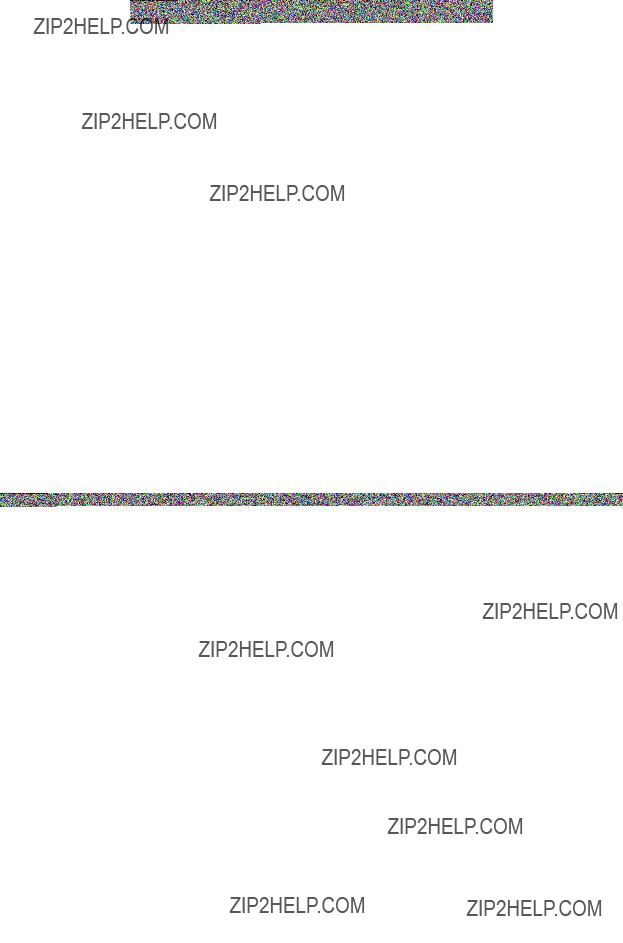
 HTML Version of the Manual for Printing
HTML Version of the Manual for Printing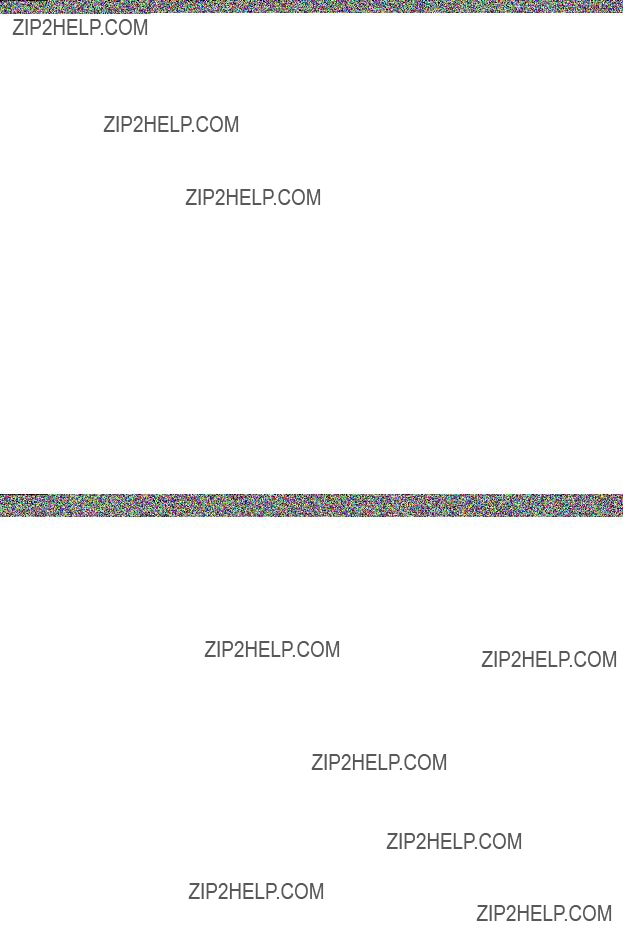



 Front
Front
 Back
Back
 Top Cover (Inside)
Top Cover (Inside)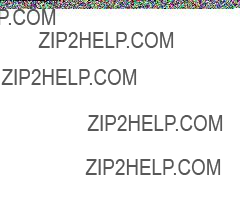
 Carriage
Carriage
 Ink Tank Cover (Inside)
Ink Tank Cover (Inside)

 Control Panel
Control Panel

 Stand
Stand
 Media
Media 
 Turning the Printer On and Off
Turning the Printer On and Off Important
Important
 Important
Important Printer Modes
Printer Modes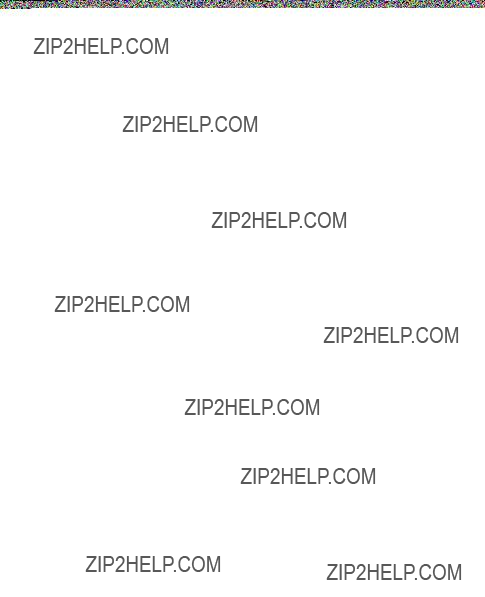




 Switching Modes
Switching Modes
 Note
Note Printer Menu Operations
Printer Menu Operations Note
Note Note
Note Note
Note
 Main Menu Operations
Main Menu Operations Note
Note
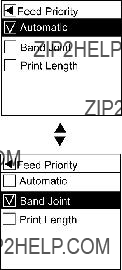
 Note
Note
 Note
Note Note
Note
 Menu Structure
Menu Structure



 Caution
Caution Main Menu Settings
Main Menu Settings

 Main Menu Settings (During Printing)
Main Menu Settings (During Printing)
 Submenu Display
Submenu Display Note
Note
 Status Print
Status Print

 Printer Hard Disk Operations
Printer Hard Disk Operations
 Saved Print Jobs
Saved Print Jobs

 Saving Print Jobs
Saving Print Jobs Note
Note

 Note
Note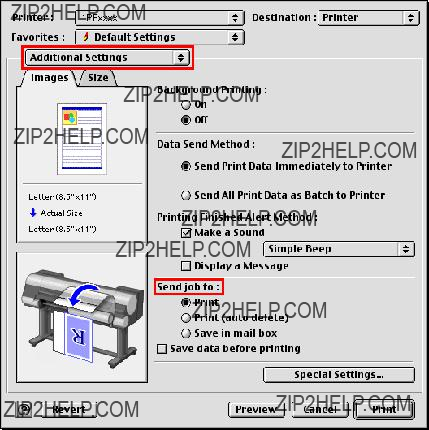

 Note
Note
 Checking a List of Saved Jobs
Checking a List of Saved Jobs

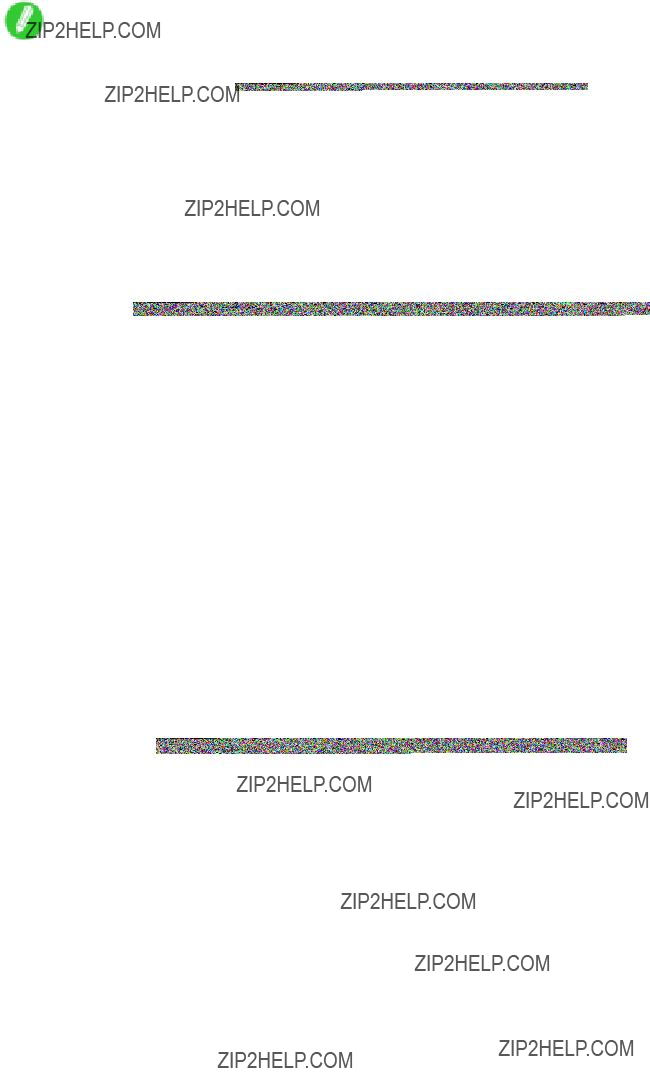


 Printing Saved Jobs
Printing Saved Jobs





 Managing Saved Jobs
Managing Saved Jobs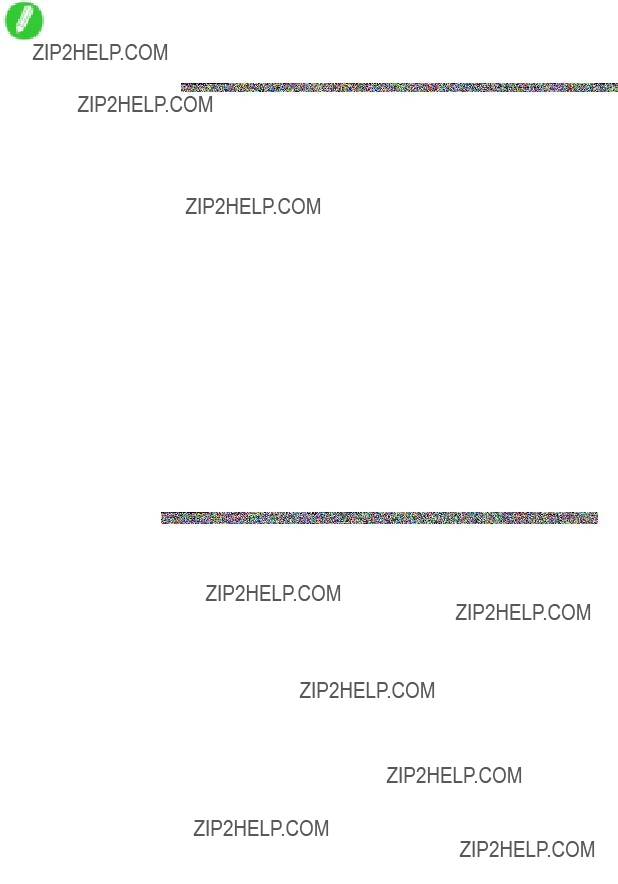











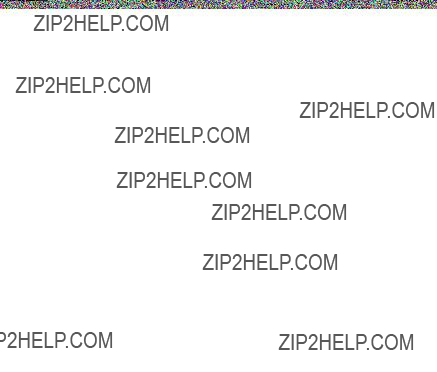





 Deleting Saved Jobs
Deleting Saved Jobs
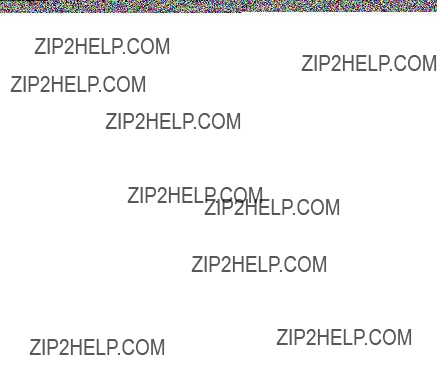


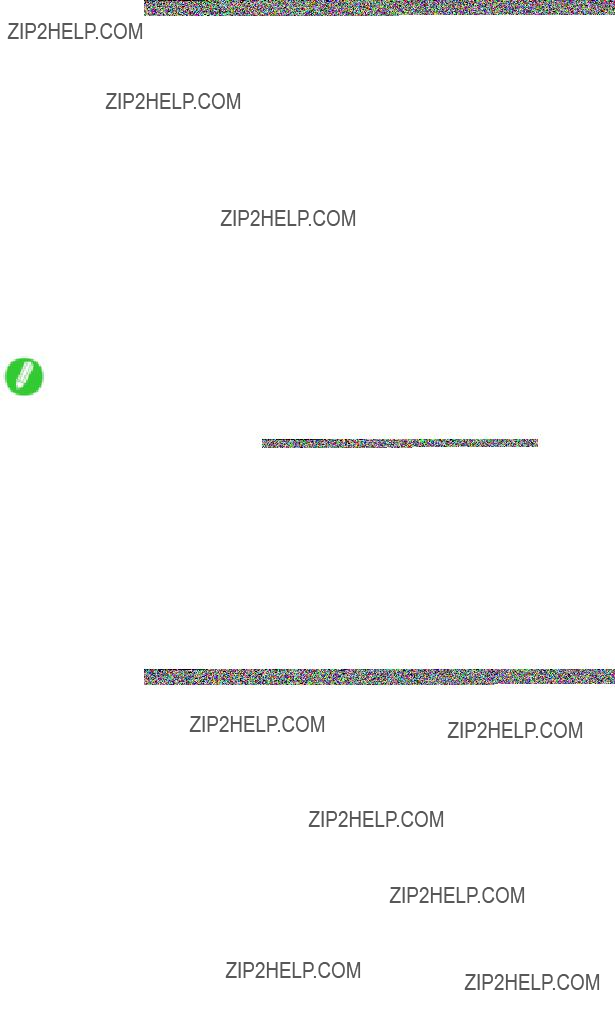
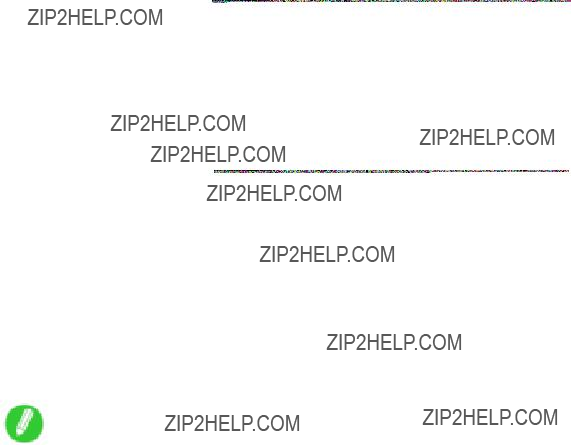
 Modifying the Current Job (Deleting or Preempting Other Jobs)
Modifying the Current Job (Deleting or Preempting Other Jobs)


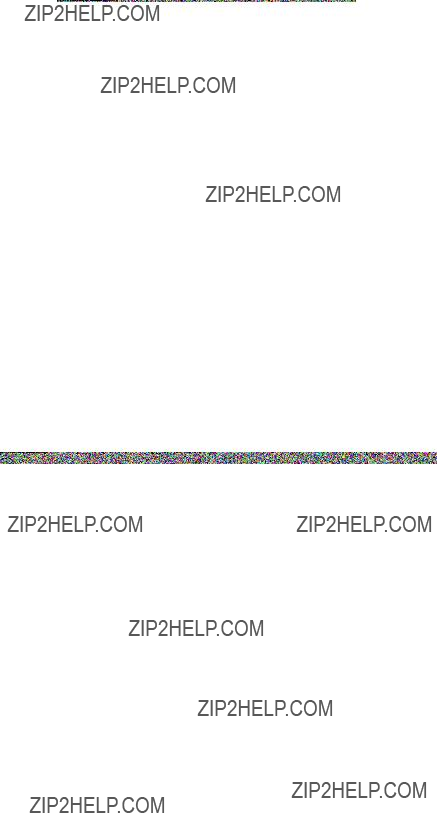
 Modifying Personal Boxes
Modifying Personal Boxes Note
Note



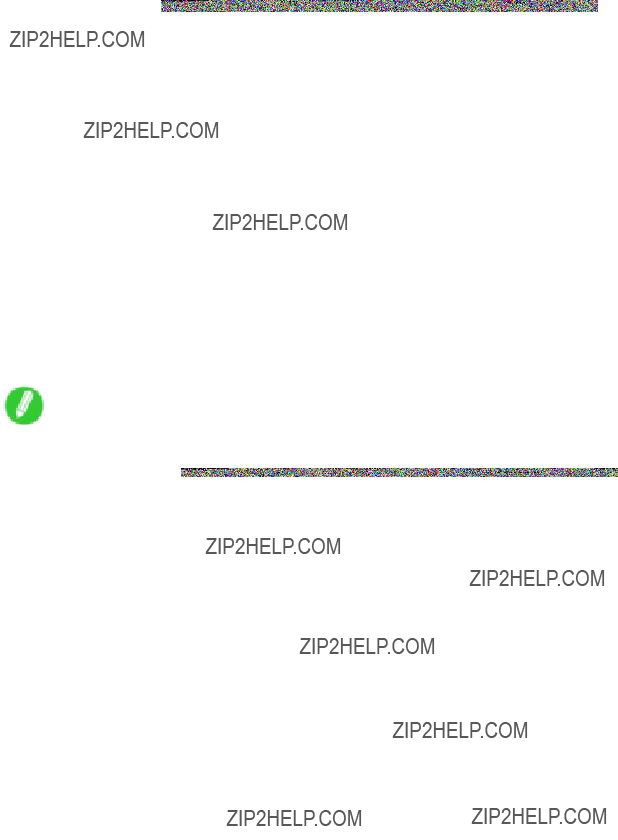
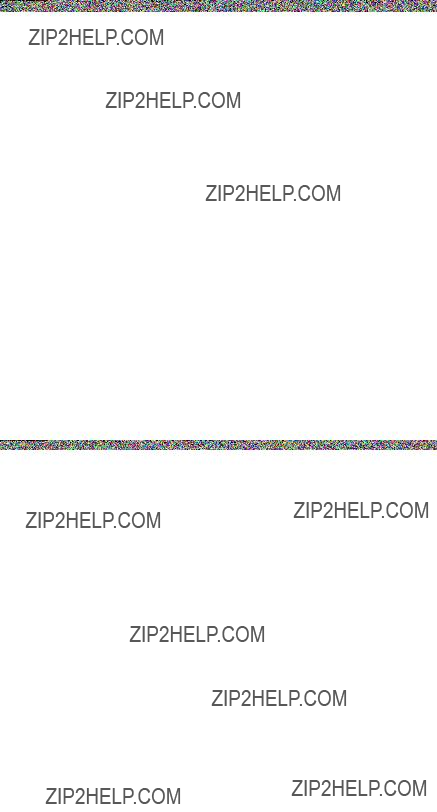




 Checking the Free Hard Disk Space
Checking the Free Hard Disk Space


 Erasing all data on the printer???s hard disk
Erasing all data on the printer???s hard disk Note
Note
 Roll Holder Set
Roll Holder Set Output Stacker
Output Stacker IEEE 1394 (FireWire) Expansion Board
IEEE 1394 (FireWire) Expansion Board
 Speci???cations
Speci???cations Important
Important Basic Environmental Performance
Basic Environmental Performance
 Print Area
Print Area Note
Note
 Loading and Printing on Rolls
Loading and Printing on Rolls Note
Note

 Important
Important
 Note
Note
 Loading and Printing on Sheets
Loading and Printing on Sheets

 Note
Note Note
Note Printing Options Using Rolls and Sheets
Printing Options Using Rolls and Sheets
 Manually Loading Paper to the Position for Printing
Manually Loading Paper to the Position for Printing
 Printing from Windows
Printing from Windows Important
Important Note
Note Note
Note Printing from Mac OS X
Printing from Mac OS X Important
Important Important
Important Note
Note
 Note
Note Printing from Mac OS 9
Printing from Mac OS 9 Important
Important Important
Important Note
Note
 Note
Note
 Specifying Paper in the Printer Driver (Windows)
Specifying Paper in the Printer Driver (Windows) Important
Important Note
Note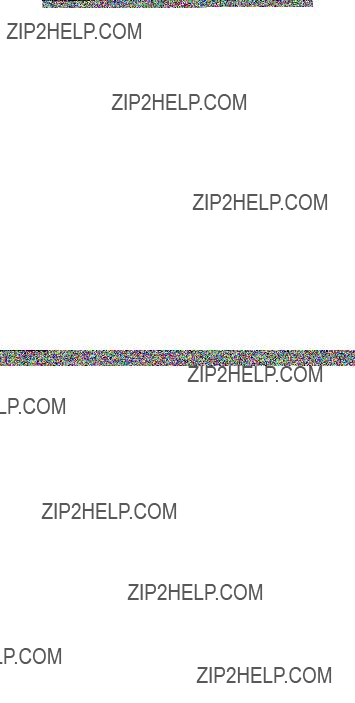
 Specifying Paper in the Printer Driver (Mac OS X)
Specifying Paper in the Printer Driver (Mac OS X)
 Note
Note Note
Note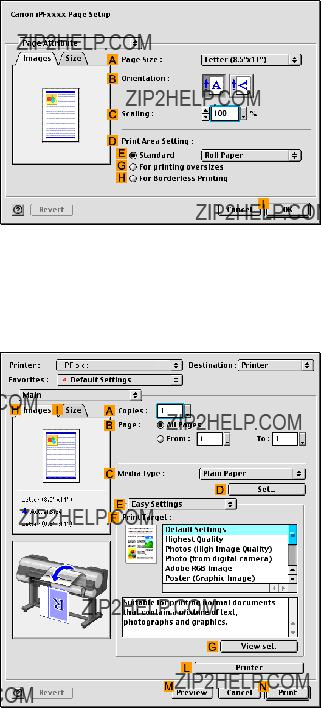
 Specifying Paper in the Printer Driver (Mac OS 9)
Specifying Paper in the Printer Driver (Mac OS 9)
 Note
Note Note
Note
 Canceling Print Jobs from the Control Panel
Canceling Print Jobs from the Control Panel
 Canceling Print Jobs from Windows
Canceling Print Jobs from Windows Note
Note Note
Note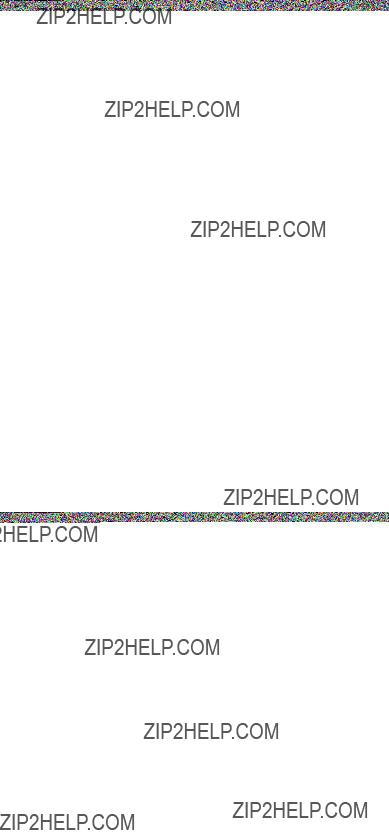
 Canceling Print Jobs from Mac OS X
Canceling Print Jobs from Mac OS X Note
Note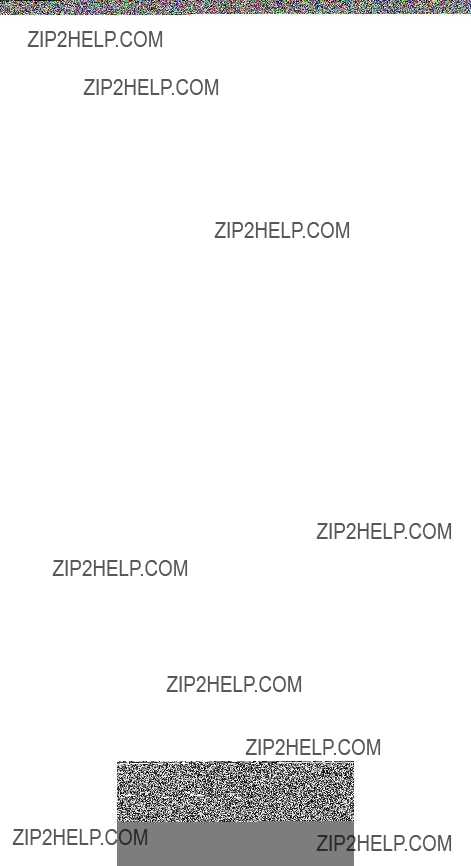
 Note
Note Important
Important
 Canceling Print Jobs from Mac OS 9
Canceling Print Jobs from Mac OS 9 Important
Important

 Paper
Paper Note
Note Types of Paper
Types of Paper Note
Note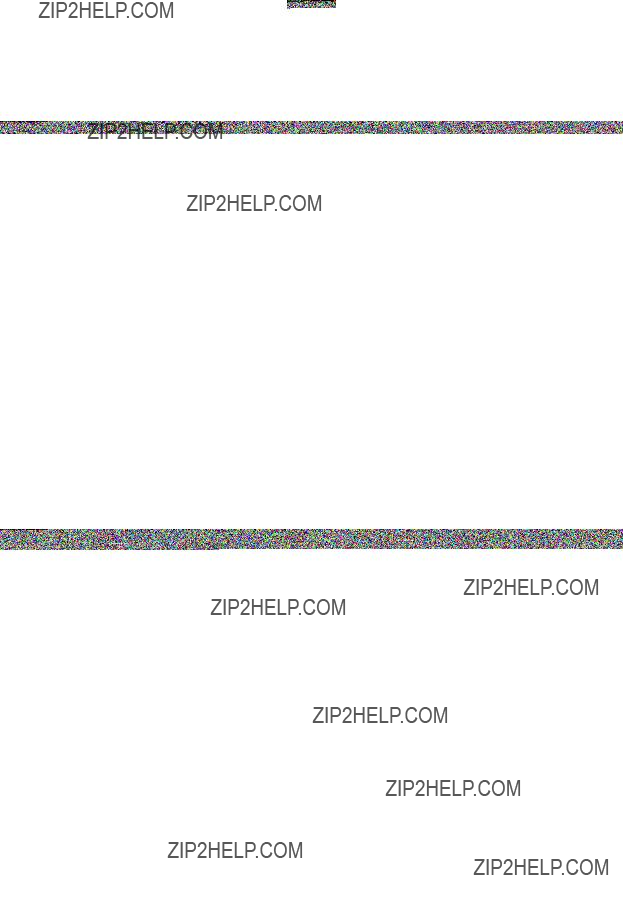
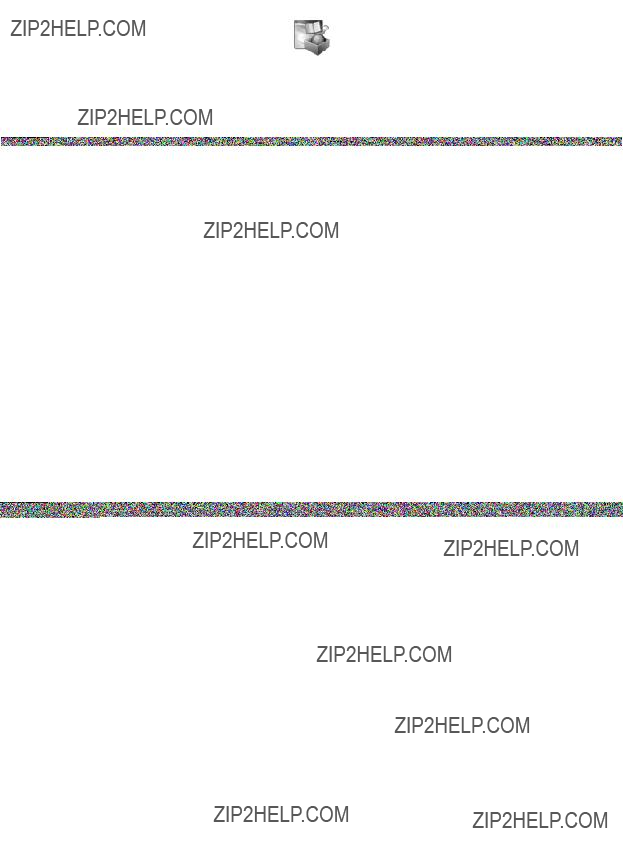


 Important
Important
 Note
Note Paper Sizes
Paper Sizes Note
Note
 Selecting the Roll as the Paper Source
Selecting the Roll as the Paper Source Note
Note Note
Note
 Setting the Roll on the Roll Holder
Setting the Roll on the Roll Holder Note
Note
 Important
Important
 Removing a Roll from the Roll Holder
Removing a Roll from the Roll Holder Important
Important
 Loading the Roll in the Printer
Loading the Roll in the Printer Note
Note Caution
Caution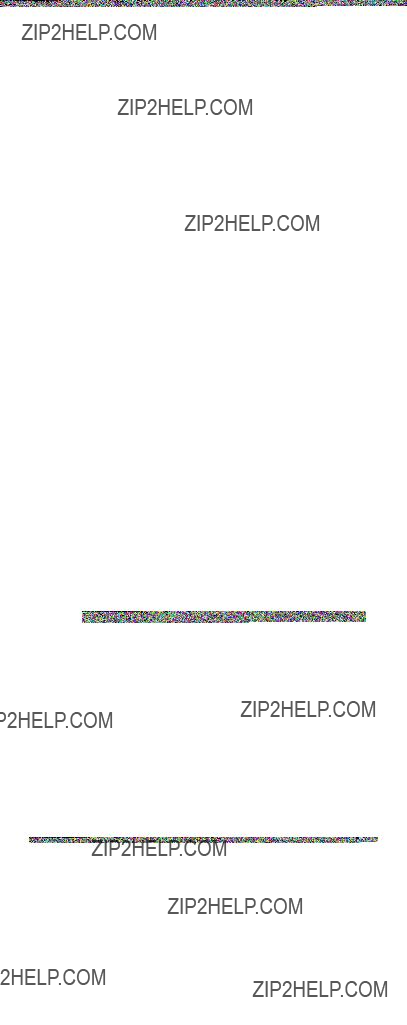
 Important
Important
 Important
Important Note
Note

 Removing the Roll from the Printer
Removing the Roll from the Printer Caution
Caution Note
Note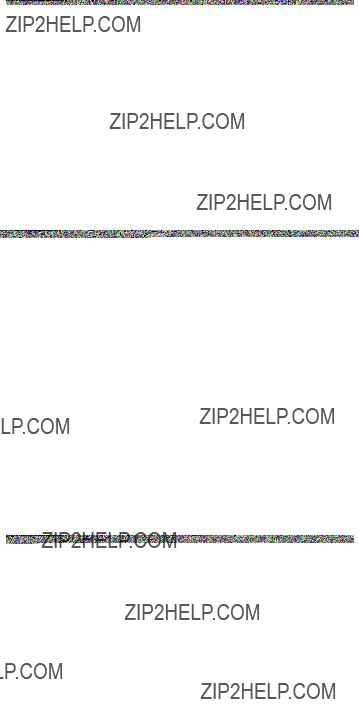
 Important
Important
 Selecting the Paper Type (Roll)
Selecting the Paper Type (Roll) Important
Important Note
Note Note
Note
 Specifying the Paper Length (Roll)
Specifying the Paper Length (Roll) Note
Note
 Feeding Roll Paper Manually
Feeding Roll Paper Manually
 Detection of the Remaining Roll Paper
Detection of the Remaining Roll Paper Note
Note
 Cutting the Leading Edge of Roll Paper Automatically
Cutting the Leading Edge of Roll Paper Automatically Note
Note Specifying the Cutting Method for Rolls
Specifying the Cutting Method for Rolls Note
Note
 Important
Important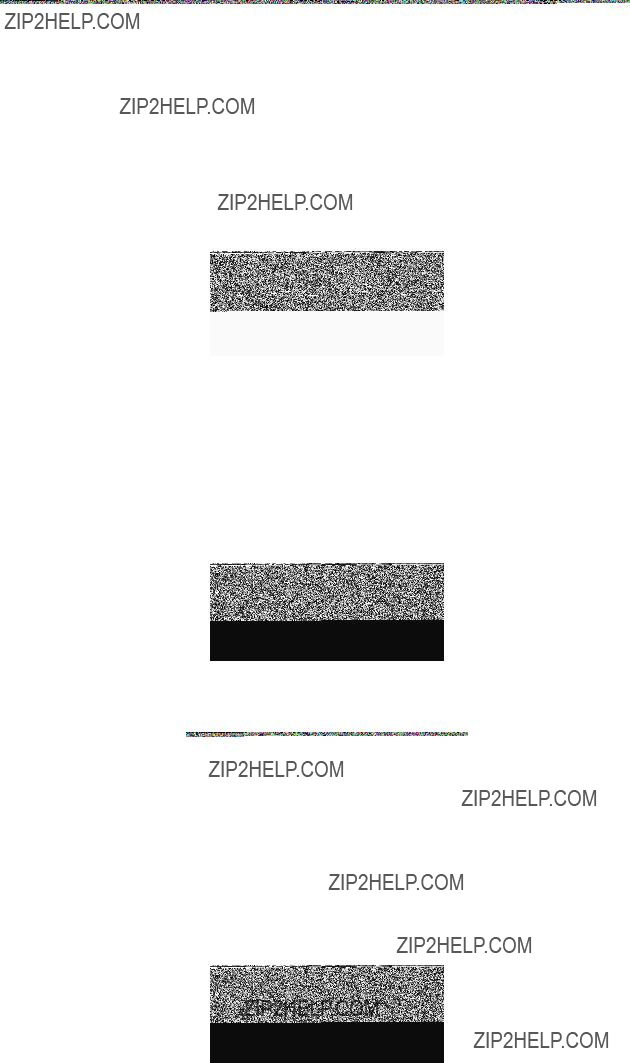

 Caution
Caution
 Reducing Dust from Cutting Rolls
Reducing Dust from Cutting Rolls Important
Important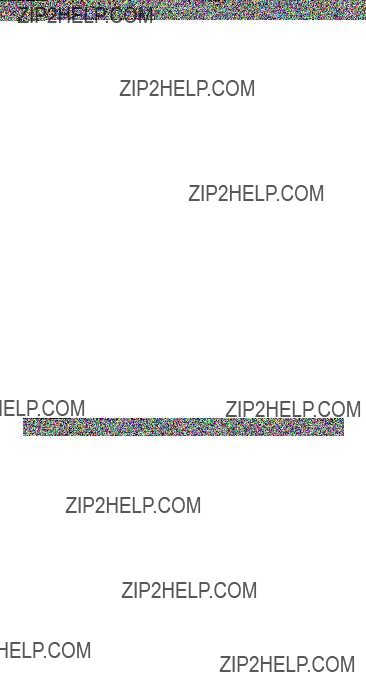
 Specifying the Ink Drying Time for Rolls
Specifying the Ink Drying Time for Rolls

 Note
Note
 Clearing Jammed Roll Paper
Clearing Jammed Roll Paper Caution
Caution
 Important
Important
 Caution
Caution Important
Important
 Important
Important Note
Note
 Roll Holder Set
Roll Holder Set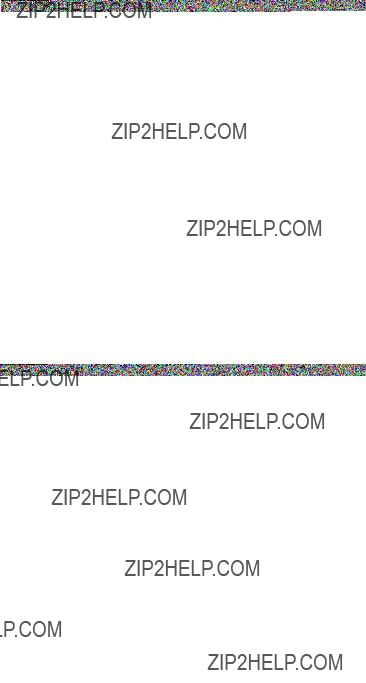
 Accessing the Printer Driver Dialog Box from the Operating System Menu (Windows)
Accessing the Printer Driver Dialog Box from the Operating System Menu (Windows)
 Important
Important
 Media Detailed Settings Dialog Box (Windows)
Media Detailed Settings Dialog Box (Windows) Note
Note
 Media Detailed Settings Dialog Box (Mac OS X)
Media Detailed Settings Dialog Box (Mac OS X) Note
Note
 Media Detailed Settings Dialog Box (Mac OS 9)
Media Detailed Settings Dialog Box (Mac OS 9) Note
Note
 Selecting the Sheet as the Paper Source
Selecting the Sheet as the Paper Source Caution
Caution Note
Note Note
Note
 Loading the Sheet in the Printer
Loading the Sheet in the Printer Note
Note
 Important
Important
 Note
Note Note
Note
 Selecting the Paper Type (Sheet)
Selecting the Paper Type (Sheet) Note
Note Note
Note
 Removing the Sheet
Removing the Sheet Note
Note
 Clearing a Jammed Sheet
Clearing a Jammed Sheet Caution
Caution

 Important
Important
 Manually Loading Paper to the Position for Printing
Manually Loading Paper to the Position for Printing
 Output Stacker
Output Stacker
 Using the Output Stacker
Using the Output Stacker Important
Important

 Note
Note

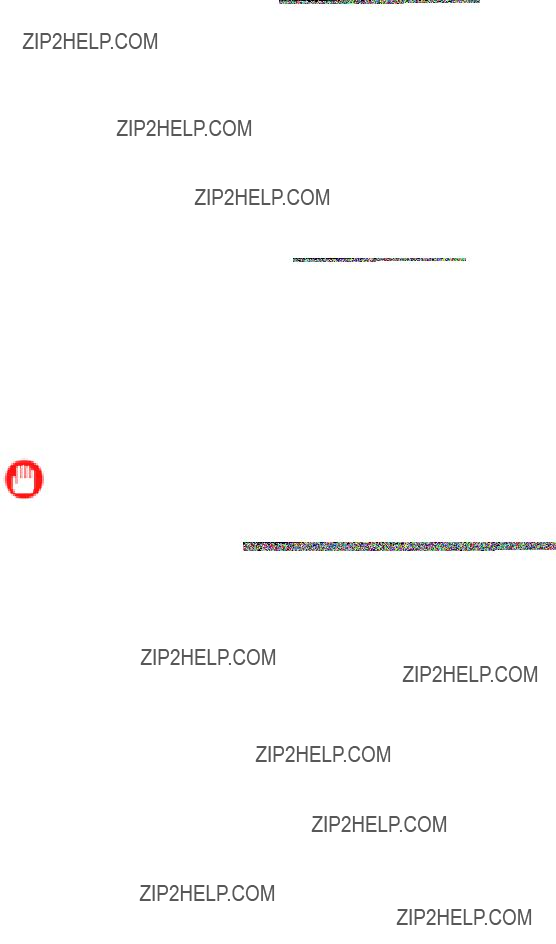
 Stowing the Output Stacker
Stowing the Output Stacker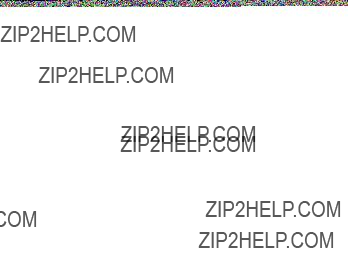
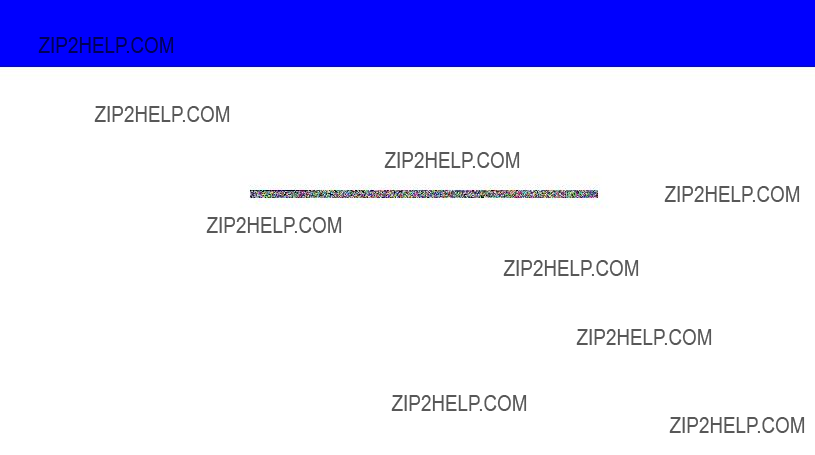
 Media
Media  Note
Note Using the Media
Using the Media  Important
Important
 Enabling the
Enabling the  Disabling the
Disabling the  Note
Note
 Loading the Rewind Spool on the Media
Loading the Rewind Spool on the Media  Important
Important
 Important
Important Important
Important

 Important
Important
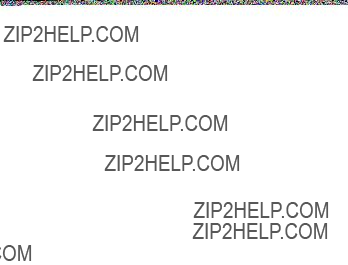
 Note
Note Important
Important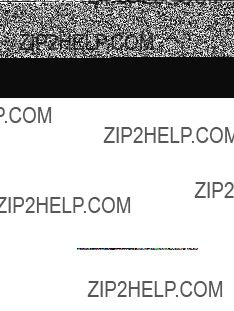
 Note
Note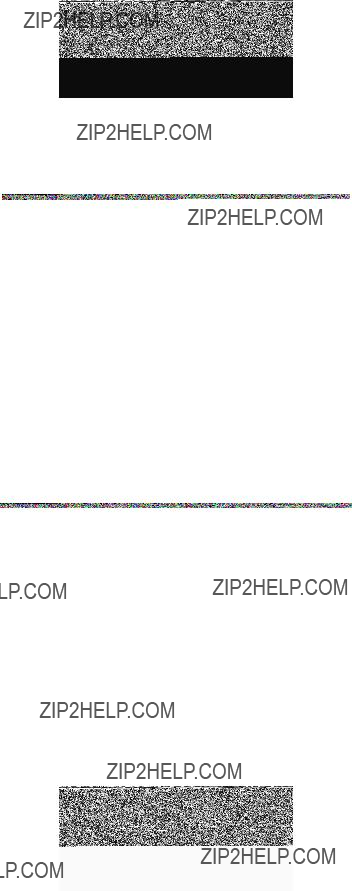
 Removing Printed Documents from the Media
Removing Printed Documents from the Media 
 Important
Important Important
Important
 Important
Important Note
Note
 Choosing a Paper for Printing
Choosing a Paper for Printing Note
Note Giving Priority to Particular Graphic Elements and Colors for Printing
Giving Priority to Particular Graphic Elements and Colors for Printing Note
Note

 Printing Photos and Images (Windows, Mac OS X)
Printing Photos and Images (Windows, Mac OS X)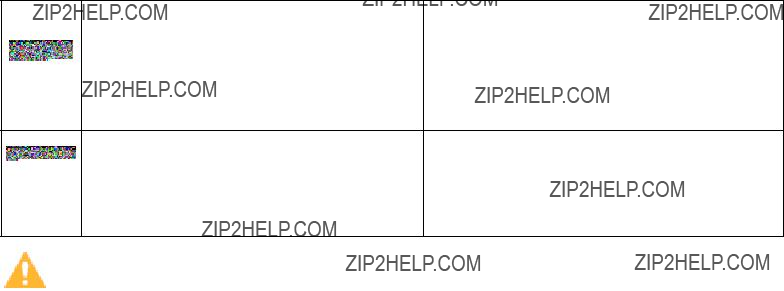
 Note
Note
 Printing Photos and Images (Mac OS 9)
Printing Photos and Images (Mac OS 9)
 Note
Note
 Printing Line Drawings and Text (Windows, Mac OS X)
Printing Line Drawings and Text (Windows, Mac OS X) Note
Note
 Printing Line Drawings and Text (Mac OS 9)
Printing Line Drawings and Text (Mac OS 9) Note
Note
 Printing Of???ce Documents
Printing Of???ce Documents Note
Note Adjusting the Color in the Printer Driver
Adjusting the Color in the Printer Driver Note
Note Printing in Ideal Colors for Light in the Viewing Environment
Printing in Ideal Colors for Light in the Viewing Environment Important
Important Important
Important
 Printing Photos in Monochrome
Printing Photos in Monochrome
 Choosing the Document Type and Printing Conditions
Choosing the Document Type and Printing Conditions
 Note
Note Note
Note
 Choosing the Document Type and Printing Conditions
Choosing the Document Type and Printing Conditions
 Note
Note Note
Note

 Choosing the Document Type and Printing Conditions
Choosing the Document Type and Printing Conditions
 Note
Note Note
Note

 Fine-Tuning
Fine-Tuning


 Fine-Tuning
Fine-Tuning
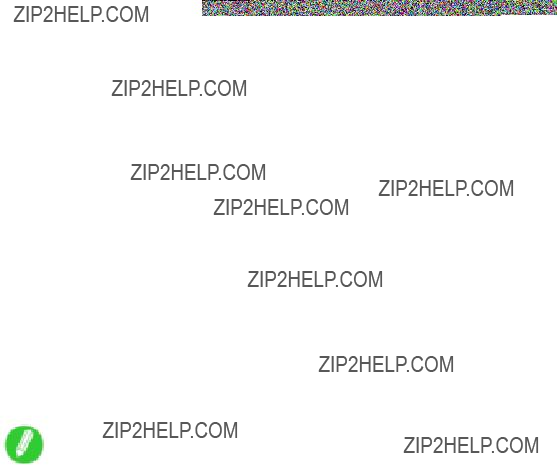

 Fine-Tuning
Fine-Tuning

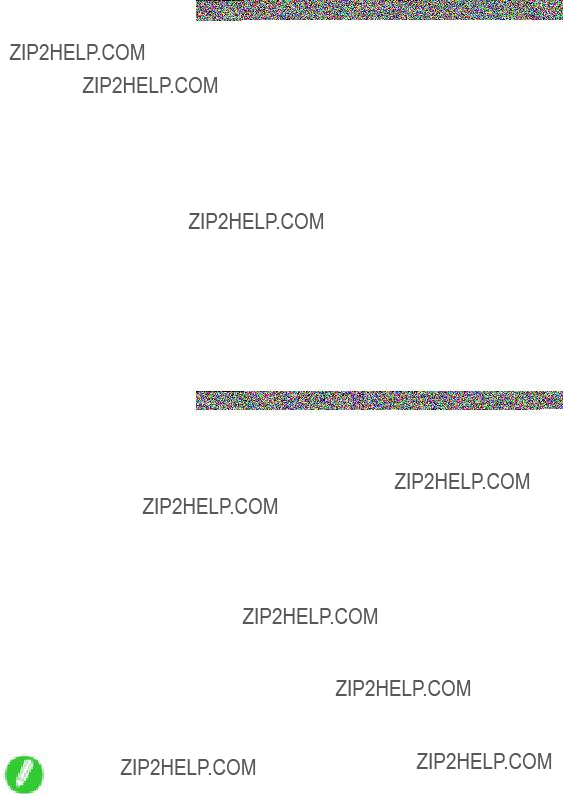
 Fine-Tuning
Fine-Tuning

 Fine-Tuning
Fine-Tuning
 Note
Note

 Fine-Tuning
Fine-Tuning
 Note
Note

 Printing Line Drawings and Text (Windows)
Printing Line Drawings and Text (Windows) Note
Note

 Printing Line Drawings and Text (Mac OS X)
Printing Line Drawings and Text (Mac OS X) Note
Note
 Note
Note
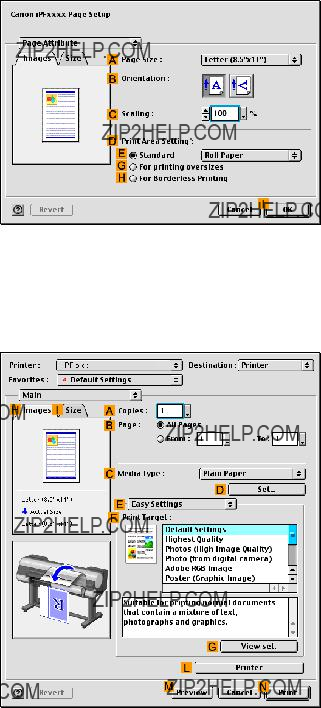
 Printing Line Drawings and Text (Mac OS 9)
Printing Line Drawings and Text (Mac OS 9) Note
Note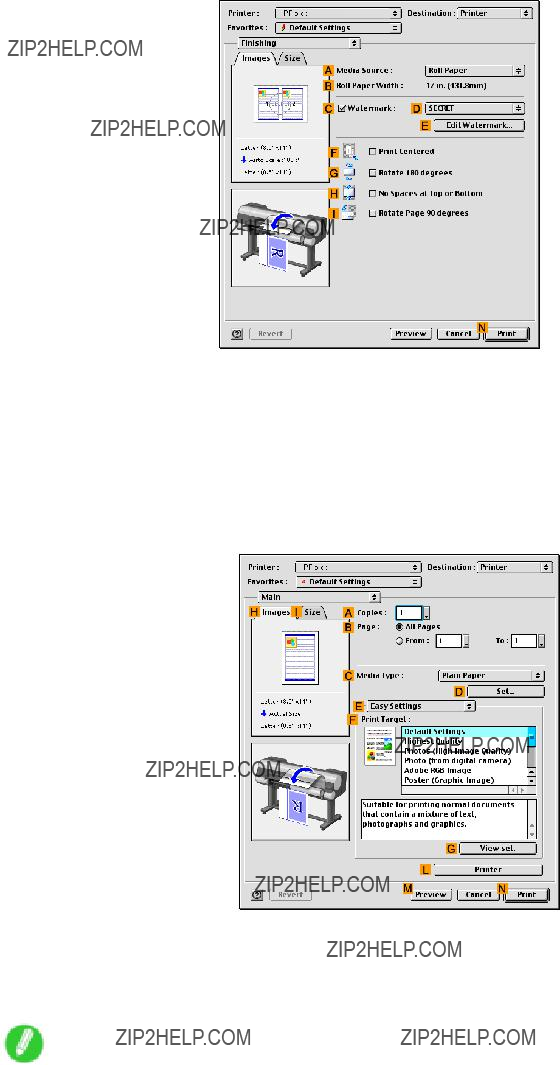
 Note
Note
 Printing Of???ce Documents (Windows)
Printing Of???ce Documents (Windows) Note
Note

 Printing Of???ce Documents (Mac OS X)
Printing Of???ce Documents (Mac OS X) Note
Note

 Printing Of???ce Documents (Mac OS 9)
Printing Of???ce Documents (Mac OS 9) Note
Note

 Printing Photos and Images (Windows)
Printing Photos and Images (Windows) Note
Note Note
Note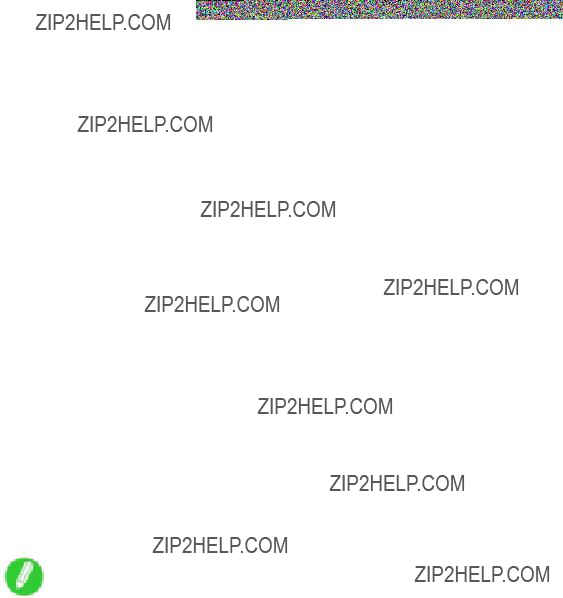

 Printing Photos and Images (Mac OS X)
Printing Photos and Images (Mac OS X)
 Note
Note Note
Note
 Note
Note
 Printing Photos and Images (Mac OS 9)
Printing Photos and Images (Mac OS 9)
 Note
Note Note
Note
 Note
Note
 Printing Photos in Monochrome (Windows)
Printing Photos in Monochrome (Windows) Note
Note
 Note
Note
 Printing Photos in Monochrome (Mac OS X)
Printing Photos in Monochrome (Mac OS X)
 Note
Note Caution
Caution Note
Note
 Note
Note
 Printing Photos in Monochrome (Mac OS 9)
Printing Photos in Monochrome (Mac OS 9)
 Note
Note Caution
Caution Note
Note
 Note
Note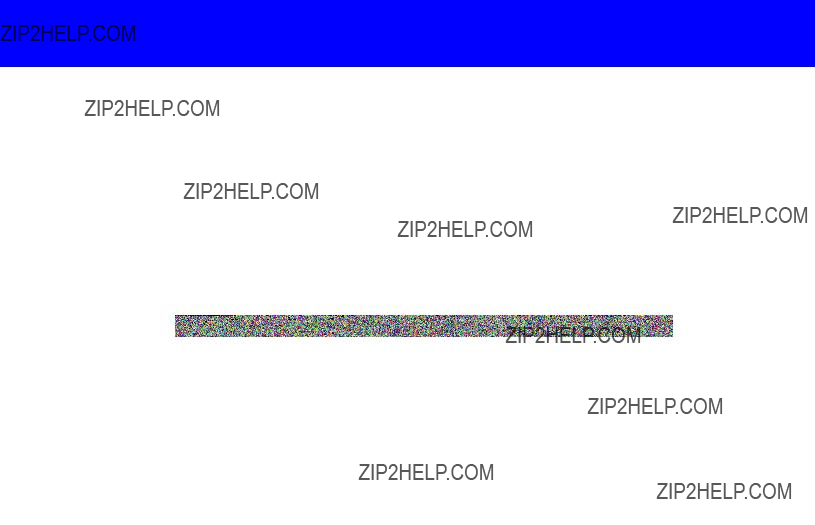
 Resizing Originals to Match the Paper Size
Resizing Originals to Match the Paper Size Note
Note
 Resizing Originals to Fit the Roll Width
Resizing Originals to Fit the Roll Width Note
Note
 Resizing Originals by Entering a Scaling Value
Resizing Originals by Entering a Scaling Value Note
Note Printing Enlargements of Scanned Originals from a Color imageRUNNER
Printing Enlargements of Scanned Originals from a Color imageRUNNER
 Printing Enlargements of Scanned Originals from a Color imageRUNNER (Windows)
Printing Enlargements of Scanned Originals from a Color imageRUNNER (Windows) Note
Note
 Printing Enlargements of Scanned Originals from a Color imageRUNNER (Mac OS X)
Printing Enlargements of Scanned Originals from a Color imageRUNNER (Mac OS X) Note
Note
 Resizing Originals by Entering a Scaling Value (Windows)
Resizing Originals by Entering a Scaling Value (Windows) Important
Important
 Note
Note
 Resizing Originals by Entering a Scaling Value (Mac OS X)
Resizing Originals by Entering a Scaling Value (Mac OS X) Important
Important
 Note
Note
 Note
Note Note
Note
 Resizing Originals by Entering a Scaling Value (Mac OS 9)
Resizing Originals by Entering a Scaling Value (Mac OS 9) Important
Important
 Note
Note

 Note
Note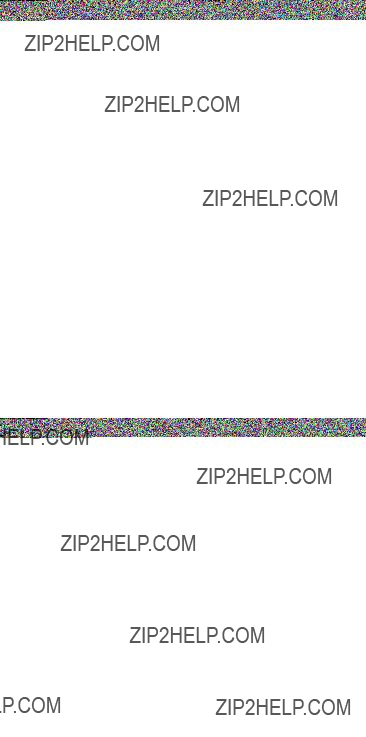
 Resizing Originals to Fit the Roll Width (Windows)
Resizing Originals to Fit the Roll Width (Windows)
 Note
Note Note
Note Note
Note
 Resizing Originals to Fit the Roll Width (Mac OS X)
Resizing Originals to Fit the Roll Width (Mac OS X)
 Note
Note

 Resizing Originals to Fit the Roll Width (Mac OS 9)
Resizing Originals to Fit the Roll Width (Mac OS 9)
 Note
Note

 Resizing Originals to Match the Paper Size (Windows)
Resizing Originals to Match the Paper Size (Windows)

 Resizing Originals to Match the Paper Size (Mac OS X)
Resizing Originals to Match the Paper Size (Mac OS X)
 Note
Note

 Resizing Originals to Match the Paper Size (Mac OS 9)
Resizing Originals to Match the Paper Size (Mac OS 9)
 Note
Note

 Printing on Oversized Paper
Printing on Oversized Paper Note
Note Important
Important Note
Note Borderless Printing at Actual Size
Borderless Printing at Actual Size Important
Important
 Note
Note
 Borderless Printing at Actual Size (Windows)
Borderless Printing at Actual Size (Windows) Note
Note

 Borderless Printing at Actual Size (Mac OS X)
Borderless Printing at Actual Size (Mac OS X) Note
Note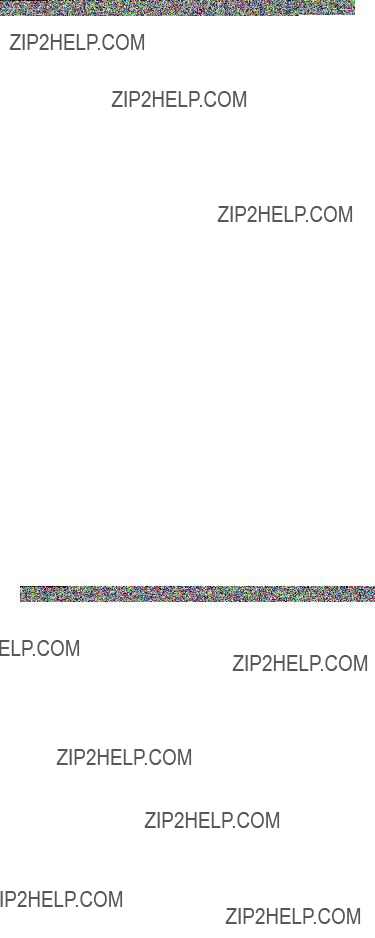
 Note
Note

 Borderless Printing at Actual Size (Mac OS 9)
Borderless Printing at Actual Size (Mac OS 9) Note
Note
 Note
Note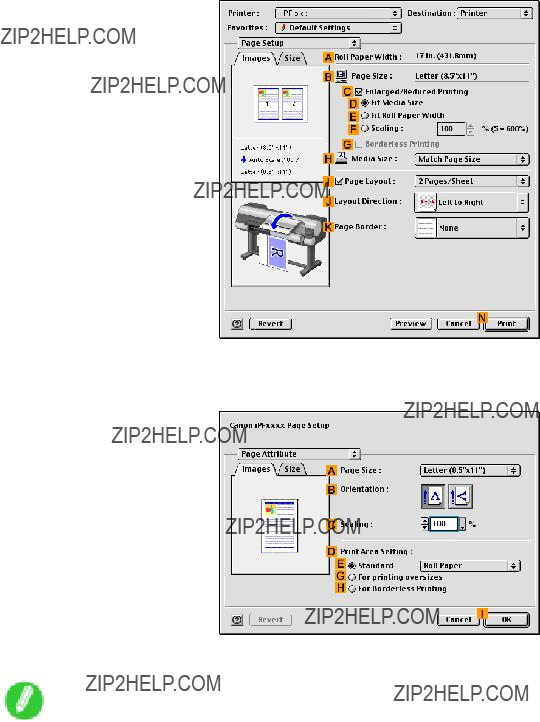

 Printing at Full Size (Windows)
Printing at Full Size (Windows)
 Note
Note









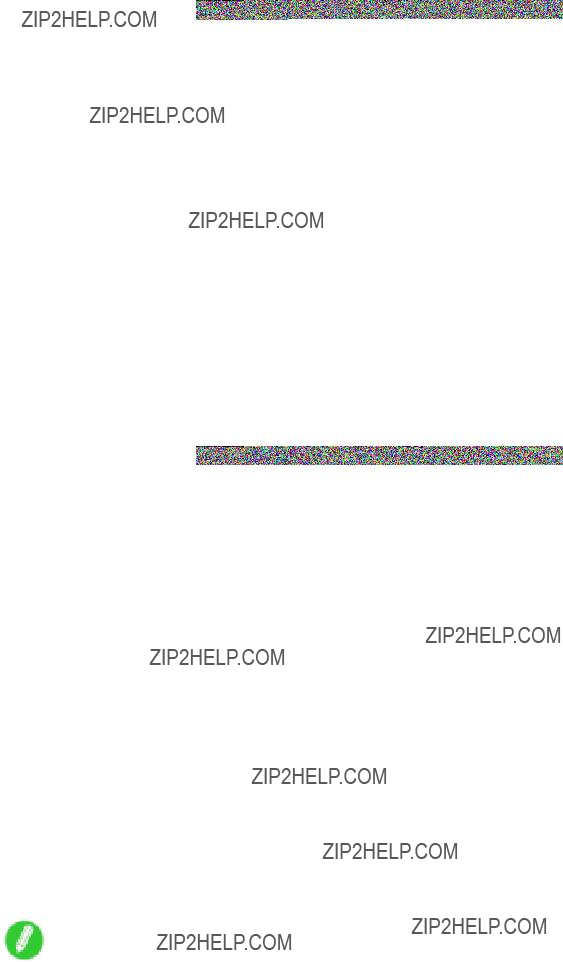





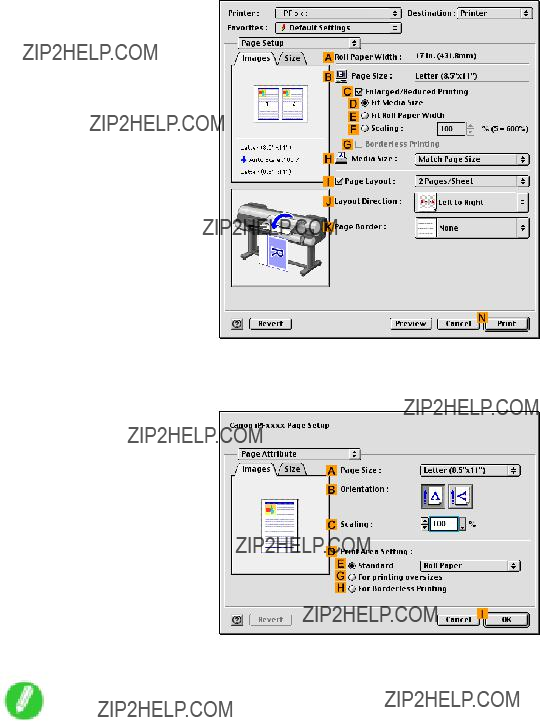


































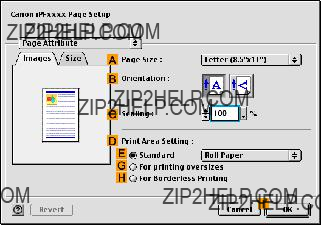

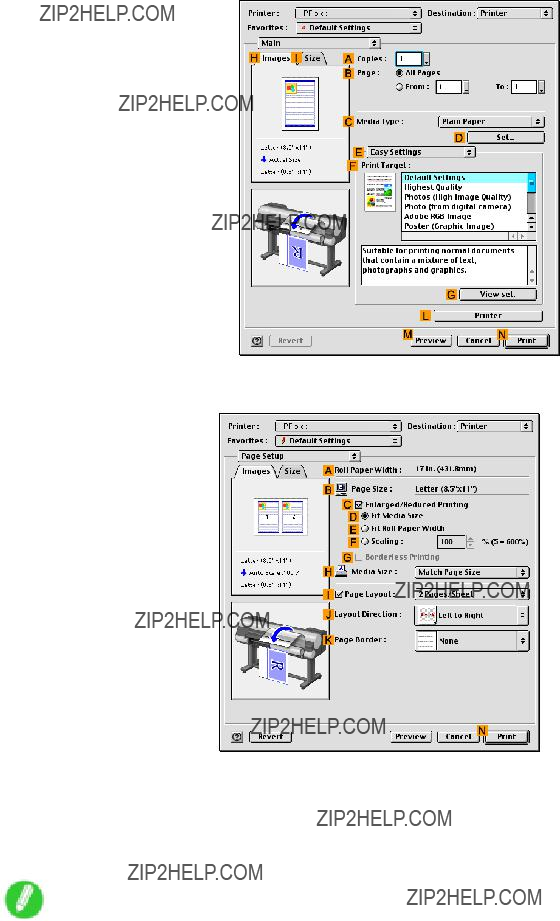
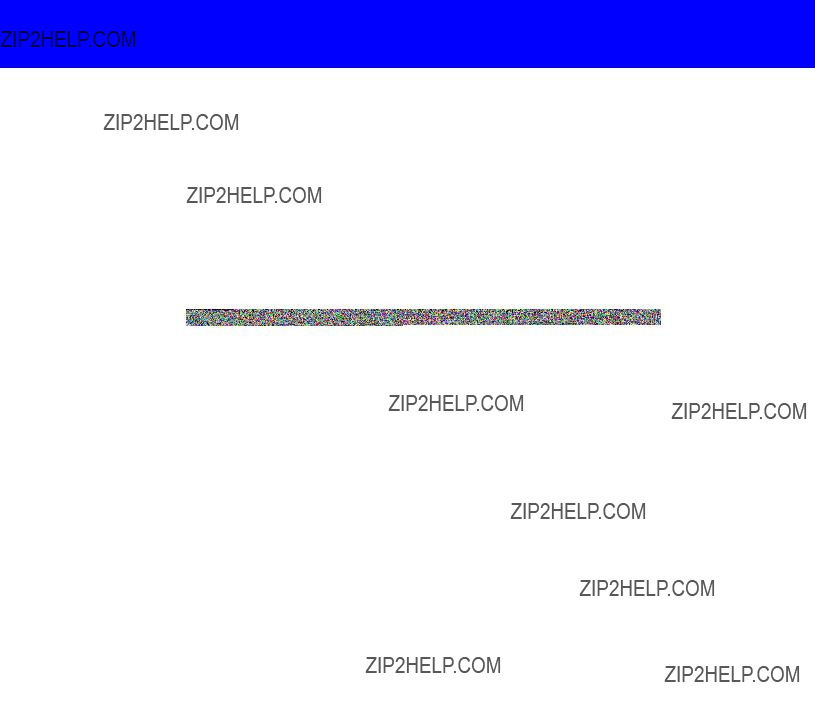




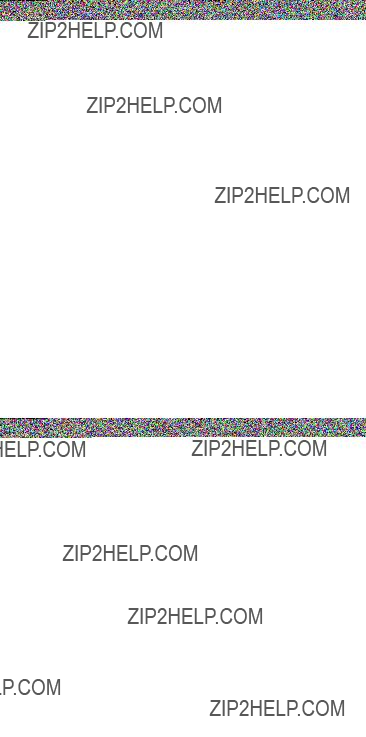
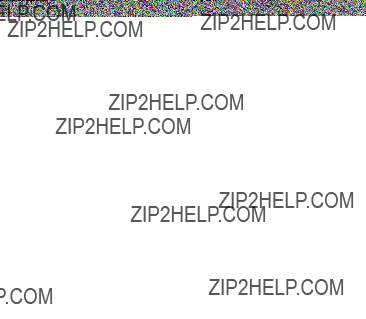

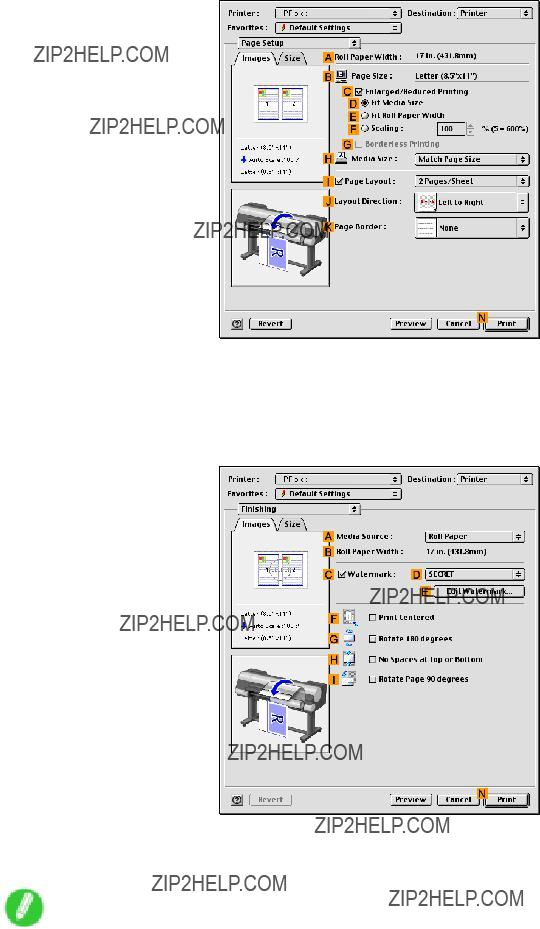

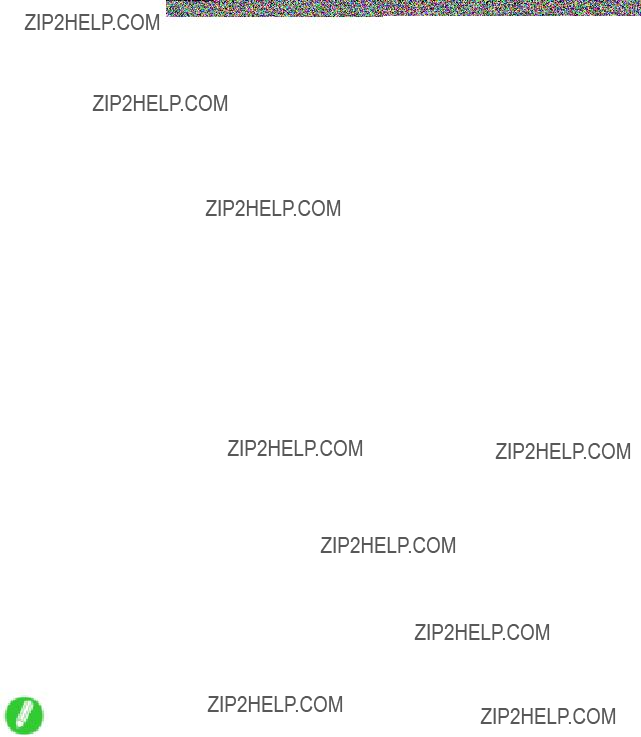






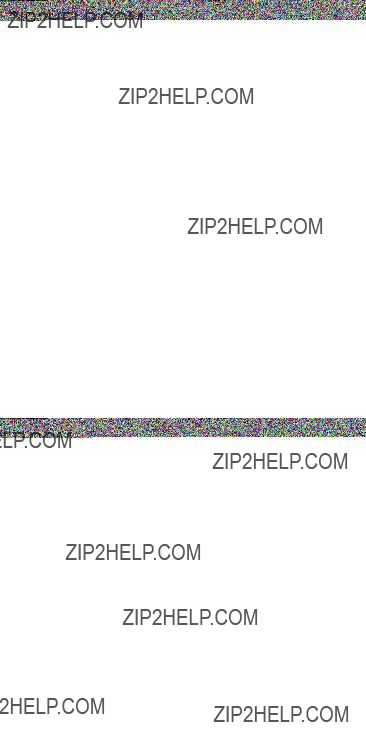




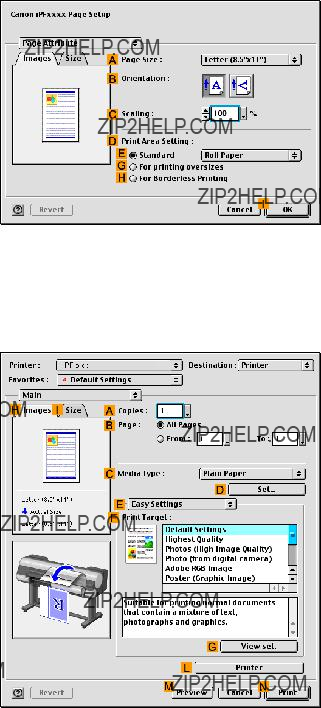




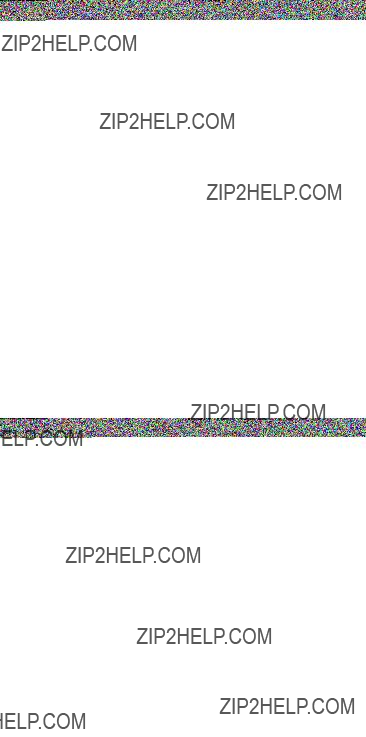







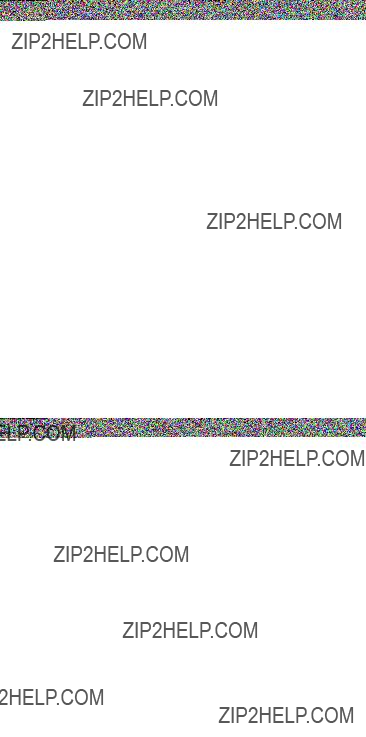



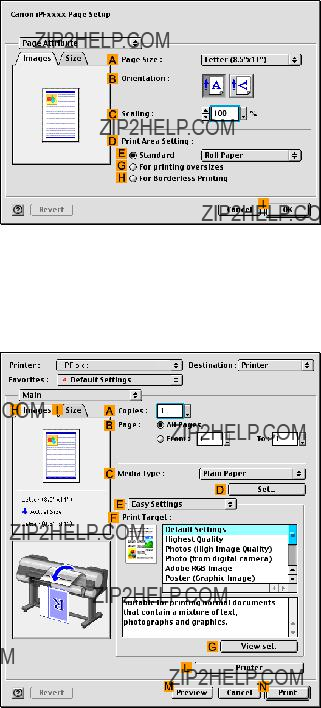


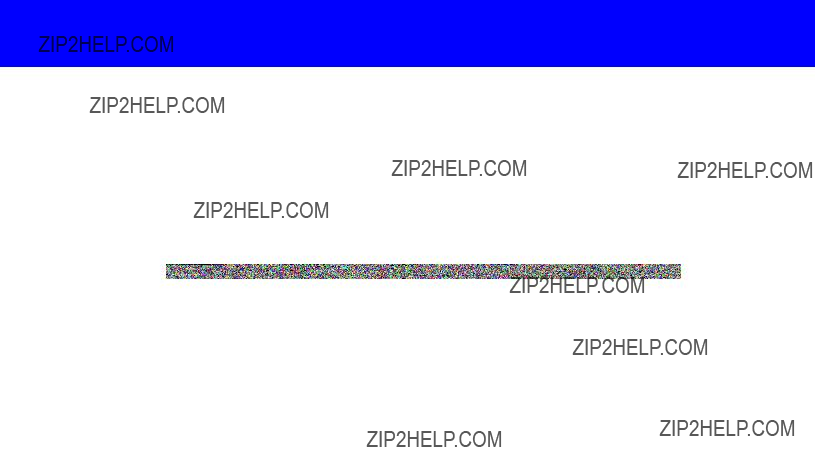











































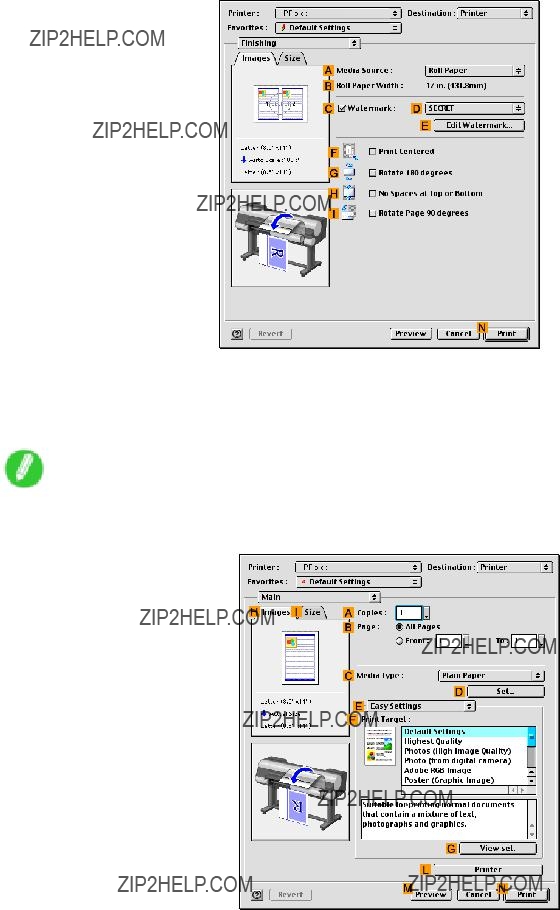
















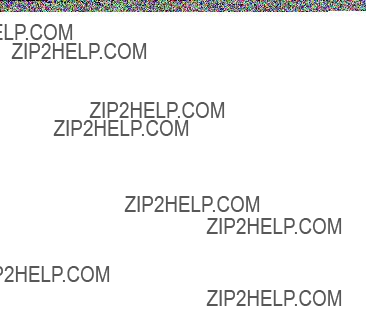


























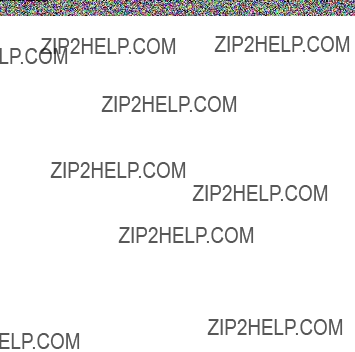




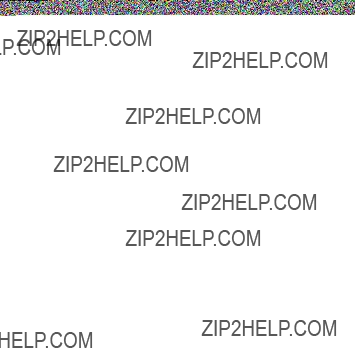





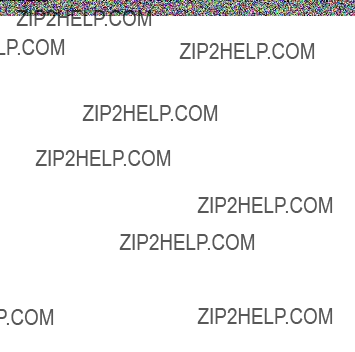

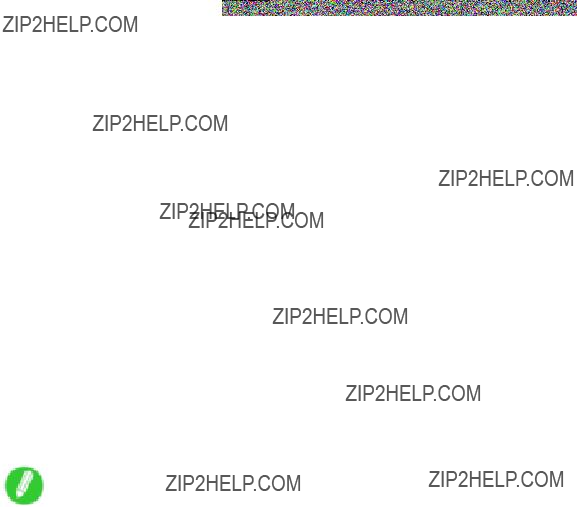


























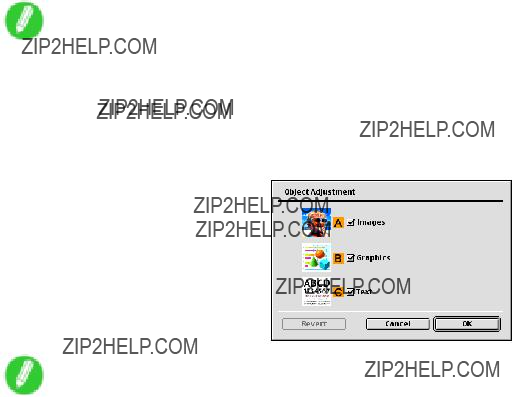





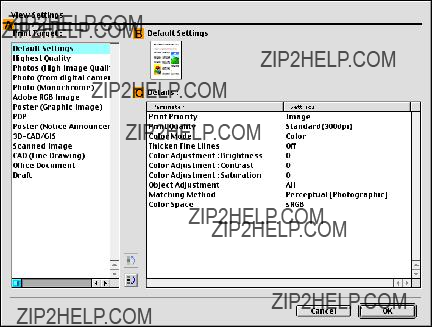




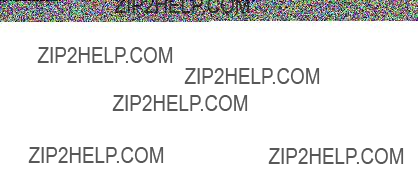


















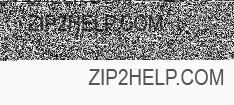


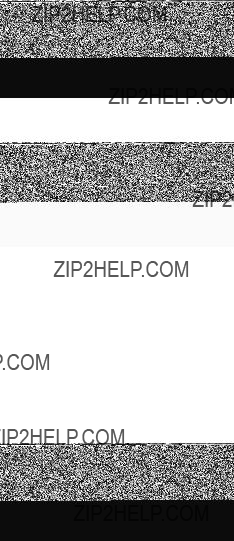



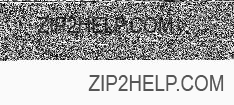




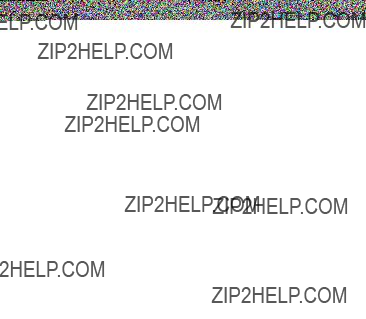

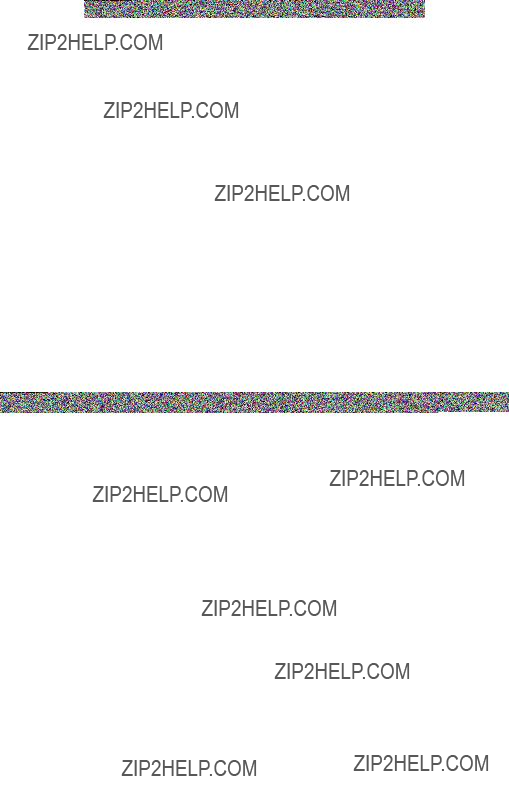





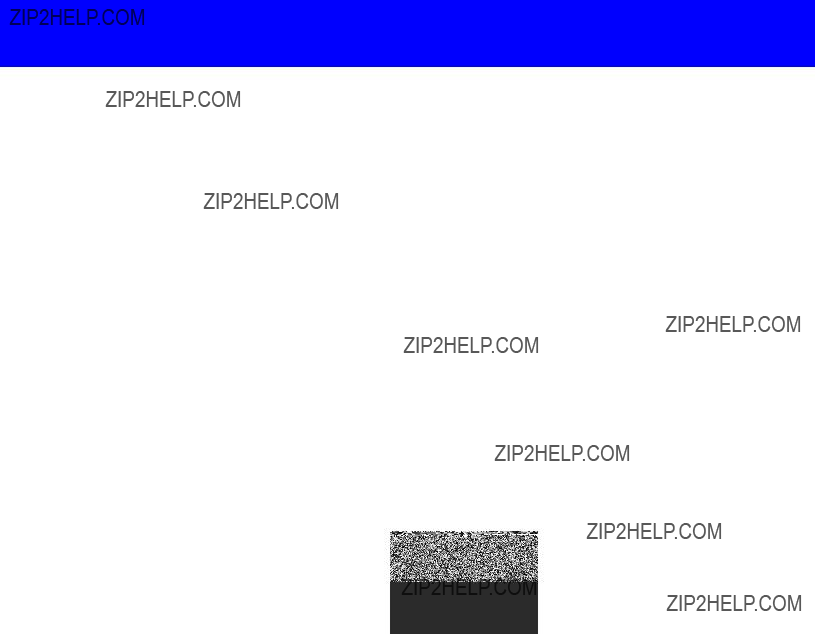
 Ink Tanks
Ink Tanks




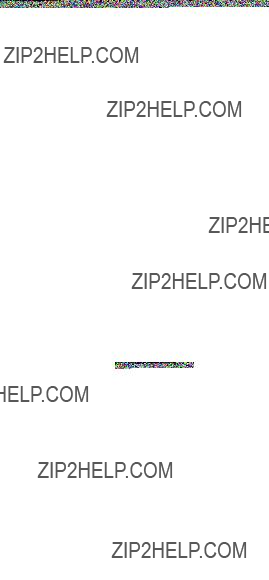














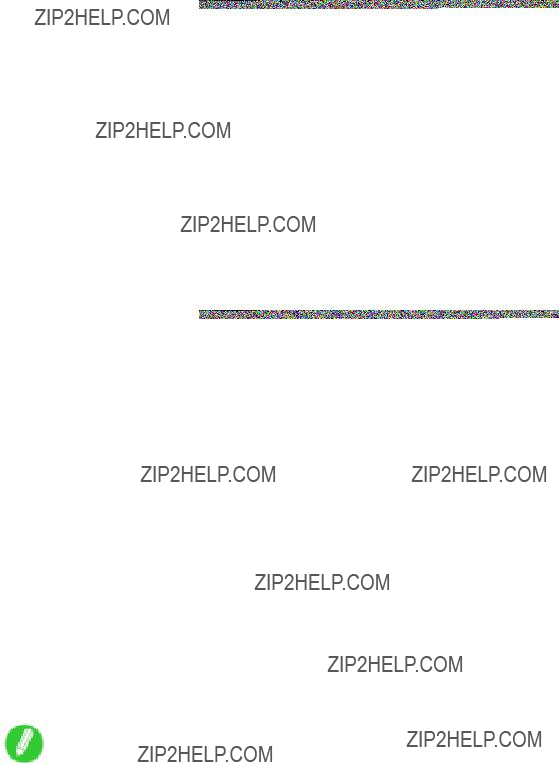





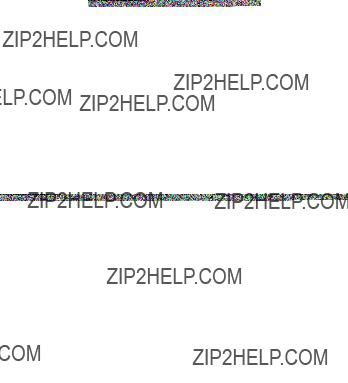















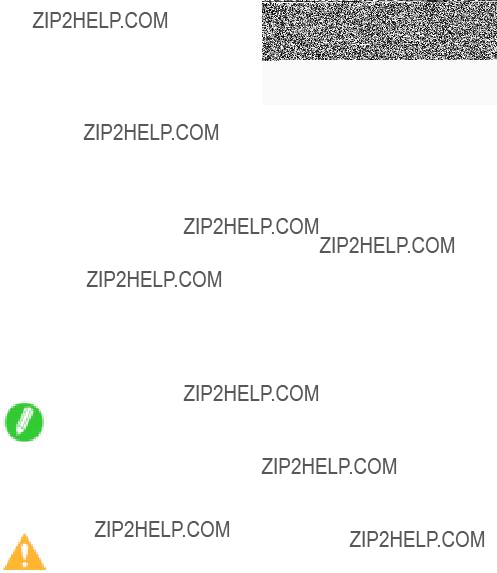
































 Error Messages
Error Messages














